
The Top 57 Episodes of ‘Star Trek,’ Ranked From Great to Perfect

First, let’s be clear: Ranking the best “Star Trek” episodes is a silly thing to do. To date, the longest-running American TV franchise has aired a gargantuan 890 episodes and counting, starting with the original series in 1966. Since then, at least one “Star Trek” TV show has aired (or streamed) every decade, totaling 11 so far (with more on the way ). Choosing the best episodes within such a boundless, occasionally contradictory storytelling galaxy seems about as wise as cheating when playing poker with a Klingon.
On the other hand, there may be no more time-honored tradition among “Star Trek” fans than a vigorous debate over what constitutes the best of the franchise. (Best series ? Best captains ? Best starships ? Best aliens ? Best uniforms ? They’ve all been ranked multiple times !)
In that spirit — and to commemorate the 57th anniversary of “Star Trek” on Sept. 8 — Variety ’s resident “Trek” geeks have ranked the top 57 episodes of all time, across the franchise.
Creating our list required some deep-dish nerdiness in its own right: We compiled a long list of episodes from each series that we felt deserved to be on the final ranking. Then we created our own individual rankings — and promptly realized our taste was quite divergent. To reconcile our lists, we adopted the approach of the great movie ranking podcast, Screen Drafts : We took alternating turns placing a pick from 57 to 1, and we each had two opportunities to veto the other’s pick (which in every case was to ensure it was placed higher on the list).
Other than the short-lived “Star Trek: The Animated Series” (1973-1974), this list reflects every other iteration of “Trek” on TV: “Star Trek: The Original Series” (1966-1969); “Star Trek: The Next Generation” (1987-1994); “Star Trek: Deep Space Nine” (1993-1999); “Star Trek: Voyager” (1995-2001); “Star Trek: Enterprise” (2001-2005); “Star Trek: Discovery” (2017-2024); “Star Trek: Picard” (2020-2023); “Star Trek: Prodigy” (2021-2022); and the ongoing “Star Trek: Lower Decks” (2020-present) and “Star Trek: Strange New Worlds” (2022-present).
The Way to Eden

“The Original Series” — Season 3, Episode 20
Look, this episode gets a lot of hate. But the fact is “TOS” is known (by today’s standards) for being very campy, and there is no episode campier than this one. A group of space hippies board the Enterprise on their journey to a mythical planet called Eden, where they can live happily forever. The episode memorably features Charles Napier (who would go on to a long career playing tough guys, villains, cops and the like) breaking out into song a bunch of times, including a jam session with Spock (Leonard Nimoy). —Joe Otterson Original airdate: Feb. 21, 1969
Terra Prime

“Enterprise” — Season 4, Episode 21 More than any other episode of “Enterprise,” “Terra Prime” made the most of the show’s mission to dramatize the beginnings of Starfleet, 100 years before the events of “TOS.” Just as a newfound coalition of planets begins to form on Earth (a precursor to the Federation), Captain Archer (Scott Bakula) and his crew must stop a xenophobic terrorist (played to the hilt by future “Star Trek Into Darkness” villain Peter Weller) bent on forcing all aliens to leave Earth. Subtle, it ain’t, but the story feels more relevant today than it did 20 years ago, and everyone in the cast gets a moment to shine. Alas, it came too late: “Enterprise” had been canceled before this episode even went into production. —Adam B. Vary Original airdate: May 13, 2005

“Prodigy” — Season 1, Episode 6
The animated “Prodigy” was the first “Star Trek” series geared toward kids, but that doesn’t mean there weren’t things for older “Trek” fans to enjoy. In particular, “Kobayashi” perfectly embodies what makes this show a worthy entry in “Trek” canon. Dal (Brett Gray) and Jankom Pog (Jason Mantzoukas) discover the holodeck aboard the Protostar, where they decide to go through the Kobayashi Maru, a.k.a. the “no-win scenario” that Capt. Kirk successfully beat during his time at the Academy. He gets help along the way from legendary characters like Spock, Dr. Crusher (Gates McFadden) and Odo (René Auberjonois). —J.O.
Original airdate: Jan. 6, 2022
Stormy Weather

“Discovery” — Season 4, Episode 6
On a mission to discover the origins of a cataclysmic gravitational anomaly, the U.S.S. Discovery enters a subspace rift and finds itself trapped inside a lethal black void that threatens to collapse in on the ship. The result is a classic race-against-time thriller (directed by “Trek” mainstay Jonathan Frakes), but what makes “Stormy Weather” stand out amid the heavily serialized episodes of “Discovery” is its emotionally resonant use of the ship’s sentient A.I. computer, Zora (Annabelle Wallis), who has to learn how to calm her mind from overwhelming stimuli in order to guide the ship out of danger. —A.B.V.
Original airdate: Dec. 23, 2021
Seventeen Seconds

“Picard” — Season 3, Episode 3
“Picard” didn’t find itself until Season 3, which reunited the core cast of “The Next Generation” — and it was really Episode 3 that sealed the deal. Riker (Frakes) is forced to take command of the Titan as Vadic (Amanda Plummer) and the Shrike hunt them. Picard (Patrick Stewart) and Dr. Crusher get an all-time great scene together as she reveals why she never told him about their son, Jack (Ed Speleers). Worf (Michael Dorn) makes his big return. We learn the Changelings are still intent on attacking the Federation. Riker and Picard end up at odds in a way we’ve never seen before. In short, epic. —J.O.
Original airdate: March 2, 2023
The Enemy Within

“The Original Series” — Season 1, Episode 5
The transporter — the cause of, and solution to, so many “Star Trek” problems — accidentally splits Capt. Kirk (William Shatner) into two people: Good Kirk, who is wracked with indecision, and evil Kirk, who is a histrionic asshole. Come for a meditation on the darkness that lies tucked inside everyone’s psyche, stay for some of William Shatner’s most deliciously hammy acting — and this was just the fifth episode of the series! —A.B.V.
Original airdate: Oct. 6, 1966
Family Business

“Deep Space Nine” — Season 3, Episode 23
The Ferengi episodes of “DS9” are always great comic relief, with this episode giving fans their first view of the home planet of Ferenginar and Ferengi culture in general. Quark (Armin Shimerman) and Rom (Max Grodénchik) must return home when their mother, Ishka (Andrea Martin), is accused of acquiring profit (gasp!), something Ferengi females are forbidden to do. Shimerman and Martin shine as they play out Quark and Ishka’s relationship, while Grodénchik really gets to put his comedic chops on display. This episode is also notable as the first appearance of Brunt (Jeffrey Combs) from the Ferengi Commerce Authority, as well as Kasidy Yates (Penny Johnson Jerald), frequent love interest of Cmdr. Sisko (Avery Brooks). —J.O.
Original airdate: May 15, 1995
Blink of an Eye

“Voyager” — Season 6, Episode 12
The Voyager gets stuck in orbit around a planet where time passes far more rapidly than in the rest of space, as the episode alternates between the bemused curiosity of Capt. Janeway (Kate Mulgrew) and her crew and the awestruck preoccupation of the expeditiously progressing populace on the planet below, for whom Voyager is a sparkling, fixed constant in the night sky. At one point, the Doctor (Robert Picard) beams down to the planet to investigate, and a delay of only a few minutes on Voyager means he spends three years on its surface. He even adopts a son! One of the great, wild what if? episodes of “Star Trek.” —A.B.V.
Original airdate: Jan. 19, 2000

“The Next Generation” — Season 3, Episode 23
Mark Lenard absolutely crushed the role of Spock’s father, Sarek, in multiple episodes across multiple “Star Trek” series and movies, but this episode is perhaps his finest performance as the character. Sarek comes to the Enterprise-D on what is meant to be his final mission, only for the crew to learn he is suffering from Bendii Syndrome. The condition leaves him prone to uncharacteristic emotional outbursts while also causing him to telepathically influence the emotions of those around him. Picard saves the day by mind melding with Sarek, allowing him to finish his mission with dignity — and provide Stewart with the chance for some powerhouse acting as he channels Sarek’s volcanic emotions. —J.O.
Original airdate: May 14, 1990

“Enterprise” — Season 3, Episode 10
“Trek” loves a moral dilemma, and this one’s a doozy: After Cmdr. Tucker (Connor Trinneer) is critically injured while the Enterprise is on a deep space mission, Dr. Phlox (John Billingsley) suggests growing a “mimetic symbiote” of Trip — effectively, a clone with a built-in two-week lifespan — in order to create the brain tissue needed to save Trip’s life. But that means the Enterprise crew must endure watching Trip’s clone rapidly age from a precocious kid to an adult man (played by Trinneer with eerie self-possession), who then pleads for his own right to live. Creepy and heartbreaking in equal measure. —A.B.V.
Original airdate: Nov. 19, 2003
Trials and Tribble-ations

“Deep Space Nine” — Season 5, Episode 6
This episode is a love letter to the original series, with the Defiant’s crew transported back in time to the events of “The Trouble With Tribbles.” A Klingon agent is planning to use a booby-trapped tribble to assassinate James T. Kirk. Thanks to digital editing, the crew is able to interact with the original Enterprise crew and keep the timeline intact. —J.O.
Original airdate: Nov. 4, 1996

“Deep Space Nine” — Season 2, Episode 23
Mirror universe episodes of “Star Trek” are (almost) always fun, if ultimately a little silly. But this one — in which Kira (Nana Visitor) and Dr. Bashir (Alexander Siddig) find themselves in an alternate reality in which Bajor, Cardassians and Klingons subjugate humans as slaves — comes closest to matching the spark of discovery in the original “TOS” episode. It’s especially fun to watch Visitor devour the role of Kira’s deliciously wicked mirror counterpart, the Intendant. —A.B.V.
Original airdate: May 16, 1994
Memento Mori

“Strange New Worlds” — Season 1, Episode 4
This episode proved “Strange New Worlds” — the newest “Star Trek” series — could be as action-packed as the very best of “Star Trek.” The Enterprise crew find themselves on the run from the Gorn, a savage enemy (first introduced on “TOS” and largely ignored in “Trek” canon) about which they know virtually nothing. They are forced to use every resource at their disposal to outwit and outrun the Gorn, including tapping into the subconscious of La’an (Christina Chong), the only crew member who has encountered the aliens and survived. —J.O.
Original airdate: May 26, 2022
Counterpoint

“Voyager” — Season 5, Episode 10
The main story is a tense, WWII allegory: Capt. Janeway and her crew hide telepathic refugees while passing through the space of the Devore, who have outlawed telepaths. But the real story is the relationship Janeway forms with the lead Devore inspector, Kashyk (Mark Harelik), who suddenly shows up alone and announces he’s defecting. As Kashyk aids Janeway in finding safe harbor for the refugees, she realizes how much he’s her intellectual equal, and she finds herself drawn to him — in spite of (or perhaps spurred on by) her continued suspicion of his motives. A great, subtle performance by Mulgrew captures both Janeway’s steely wits and her private yearning. —A.B.V.
Original airdate: Dec. 16, 1998
The Drumhead

“The Next Generation” — Season 4, Episode 21
“Star Trek” has done a number of courtroom episodes, and this is one of the best. Rear admiral Norah Satie (Jean Simmons) is sent to investigate suspected sabotage aboard the Enterprise. The investigation quickly spirals into paranoia and accusations of treachery against a crew member who is revealed to have Romulan lineage. It is an excellent reminder of what can happen when persecution is dressed up as an attempt at greater security, with Picard using Satie’s father’s teachings to bring about her downfall. —J.O.
Original airdate: April 29, 1991

“The Next Generation” — Season 7, Episode 8
More thwarted romance! The seasons-long will-they/won’t-they between Picard and Dr. Crusher (Gates McFadden) gets its best showcase, when the pair are captured by isolationist aliens and given implants that allow them to read each other’s thoughts. You get the feeling Stewart and especially McFadden had been dying to play out this dynamic on the show, so they both bring years of sublimated longing to the episode. —A.B.V.
Original airdate: Nov. 8, 1993
In the Hands of the Prophets

“Deep Space Nine” — Season 1, Episode 20
Louise Fletcher’s performance as Vedek Winn (later Kai Winn) ranks among the best “Star Trek” villains of all time. Deeply religious to the point of fanaticism, Winn protests Keiko O’Brien (Rosalind Chao) teaching children on Deep Space Nine that the wormhole aliens are not deities, as many Bajorans believe. Winn’s words whip Bajorans on the station into a frenzy; Keiko’s school is bombed. But what Winn really desires is power, to the point she tries to get one of her followers to kill a fellow Vedek she sees as a threat. The episode sets up Winn’s role as a major antagonist throughout the series to great effect. —J.O.
Original airdate: June 21, 1993
The Trouble With Tribbles

“The Original Series” — Season 2, Episode 15
If you’ve seen any episode of “TOS,” chances are it’s this one. While on shore leave at a space station, the Enterprise comes upon an adorably furry alien creature called a tribble, which are born pregnant, multiply exponentially, consume enormous quantities of food and react with alarm when in the presence of a Klingon. Fizzy and funny and, to this day, one of the best-known episodes of “Trek” ever. —A.B.V.
Original airdate: Dec. 29, 1967
Balance of Terror

“The Original Series” — Season 1, Episode 14
Introducing the Romulans alone makes this episode worthy of being on the list. But it’s also an epic cat-and-mouse game between Kirk and a Romulan commander played by none other than Mark Lenard, who would go on to play Sarek starting in Season 2. Kirk successfully lures the Romulan ship into a trap, leading to Lenard delivering the iconic line, “You and I are of a kind. In a different reality, I could have called you friend.” —J.O.
Original airdate: Dec. 15, 1966

“The Next Generation” — Season 4, Episode 20
John de Lancie never disappoints when he plays Q, but this episode offered a wonderful twist on his usual appearances. Following the events of “Deja Q,” Q returns to the Enterprise saying he owes Picard a debt. Picard repeatedly tells Q he wants nothing from him, but Q notices Picard has eyes for Vash (Jennifer Hetrick), the mercenary archeologist Picard first met on Risa. Being Q, he naturally transports Picard, Vash, and the bridge crew to a Robin Hood fantasy in which Picard must rescue Vash from the evil Sir Guy of Gisbourne (Clive Frevill). Added bonus: Worf, in scarlet tights, exclaiming in protest, “I am not a merry man!” —J.O.
Original airdate: April 22, 1991

“The Original Series” — Season 1, Episode 18
The classic “trial by combat” episode that pitted Kirk against a Gorn captain on a barren, rocky planet (i.e. the storied filming location Vasquez Rocks ). Few images from “Star Trek” have become more iconic than the original Gorn costume, which was essentially an actor dressed as a large lizard. The ending is also an all-timer, with Kirk choosing to spare the Gorn, proving to the all-powerful Metrons that set up the trial by combat that humans are capable of more than just random violence. —J.O.
Original airdate: Jan. 19, 1967
A Mathematically Perfect Redemption

“Lower Decks” — Season 3, Episode 7
“Star Trek’s” first pure comedy (and second animated series) often plays as a twisted love letter to the entire “Trek” franchise — like when Peanut Hamper (Kether Donohue), one of the sentient Exocomp robots first introduced on “The Next Generation,” abandons the crew of the U.S.S. Cerritos in a time of need. This episode tracks Peanut Hamper’s journey to redemption afterwards, which involves her encountering a seemingly primitive species called the Areore. To say anything more would spoil the fun; suffice it to say, “Trek” has rarely provoked gasps of deep laughter like this episode does. —A.B.V.
Original airdate: Oct. 6, 2022
Bar Association

“Deep Space Nine” — Season 4, Episode 15
What better episode of “Star Trek” to talk about after Hollywood’s hot labor summer? Fed up with the unfair conditions at Quark’s bar, Rom talks the other workers into forming a union and going on strike. Max Grodénchik truly shines in this episode as the would-be union leader. Once Rom successfully gets Quark to agree to all the workers’ demands, he outright quits and goes to work as a repair technician for the station, setting up some of Rom’s best moments in the episodes to come. —J.O.
Original airdate: Feb. 19, 1996

“Voyager” — Season 5, Episode 26 & Season 6, Episode 1
The Voyager swoops to the rescue of the Equinox, another Federation starship stranded in the Gamma Quadrant — only this one, led by Capt. Ransom (John Savage), is a smaller ship not meant for deep space travel. With their crew whittled down to just 12 people, Ransom has resorted to murdering alien creatures to use their bio-matter to boost the Equinox’s engines — a horrific violation of everything Starfleet stands for. The discovery pushes Janeway to her own limits, as she obsessively pursues the Equinox despite the cost to her own crew and her morality. The two-parter is one of the darkest episodes of “Star Trek,” a chilling reminder of how easily good people can find themselves slipping into disgrace. —A.B.V.
Original airdates: May 26, 1999 & Sept. 22, 1999
Who Mourns for Morn?

“Deep Space Nine” — Season 6, Episode 12
Morn (Mark Allen Shepherd) was a “Deep Space Nine” fixture, always at Quark’s bar, but never actually speaking onscreen. But in this episode, with Morn apparently dead in an accident, everyone reveals the offscreen times they spent with him, including the revelation that he “never shuts up.” Quark inherits all of Morn’s property, which Odo relishes revealing is ultimately nothing. But as it turns out, Morn had a much more adventurous life before his time on “DS9” than anyone knew, leading his former comrades to seek him out to get a hold of the money they believed he still possessed. —J.O.
Original airdate: Feb. 4, 1998
Species Ten-C

“Discovery” — Season 4, Episode 12
Other than the Gorn, almost all of the aliens on “Star Trek” are, essentially, humans with slightly different forehead ridges. But in its most recent season, “Discovery” embraced “Trek’s” prime directive (seeking out new life, bolding going where no one’s gone, etc.) by crafting a species that is truly alien: the Ten-C. Throughout the season, the Ten-C are presented as both a total mystery and an existential threat; when Capt. Burnham (Sonequa Martin-Green) and the crew of the Discovery finally reach them — outside the barrier of the Milky Way galaxy — they are unlike anything the show has ever encountered. Rarely has “Trek” applied more intellectual and emotional rigor to what it might actually be like to attempt first contact with extra-terrestrials, and rarely has it been this compelling. —A.B.V.
Original airdate: March 10, 2022
A Man Alone

“Deep Space Nine” — Season 1, Episode 4
Odo is one of the best characters in “DS9” — and in the “Star Trek” universe — in general, and this is the first episode to really establish him as a standout . A known criminal returns to the station only to die shortly after, and Odo is accused of his murder. Odo’s status as an outsider, but ultimately someone to be respected, is made crystal clear in this episode, with even his archenemy Quark acknowledging that Odo is not the type to murder someone in cold blood. —J.O.
Original airdate: Jan. 17, 1993
Mirror, Mirror

“The Original Series” — Season 2, Episode 4
The transporter strikes again, this time accidentally zapping Kirk, Uhura (Nichelle Nichols), Scotty (James Doohan) and Bones (DeForest Kelley) from their reality into a parallel universe in which the benevolent Federation has been replaced by the bloodthirsty Terran Empire, governed by brute force and fascistic exploitation — and Spock has a goatee! More silly than serious (and no less fun for it), the episode effectively spawned an entire sub-genre of parallel universe episodes of TV (from “Supernatural” to “Friends”) and gave generations of actors a chance to play wildly against type. —A.B.V.
Original airdate: Oct. 6, 1967

“The Next Generation” — Season 4, Episode 2
People rave about “The Best of Both Worlds” and Picard’s assimilation by the Borg, but fewer remember this incredible follow-up episode. Picard returns to his family vineyard to put the Borg incident behind him, even briefly thinking that he will leave Starfleet. Jeremy Kemp crushes it as Picard’s brother Robert, with the two sharing a memorable (and muddy) scene in which Picard breaks down and admits how much his assimilation has shaken him. The episode is also memorable for the appearance of Worf’s adoptive parents, who come to the Enterprise to be with him following his discommendation. —J.O.
Original airdate: Oct. 1, 1990
Living Witness

“Voyager” — Season 4, Episode 23
For several minutes, “Living Witness” seems like a mirror universe episode, as a ruthless Janeway, captain of the “warship” Voyager, agrees to aid the Vaskans against the insurgent Kyrians by unleashing a biological weapon upon millions and executing the Kyrian leader. But then we realize that we’ve just witnessed a recreation at a Kyrian museum 700 years in the future, at which point a copy of the Doctor enters the story and learns, to his horror, how much the Kyrians have gotten wrong. What could have been a Rashomon-style caper instead becomes fascinating meditation on how the telling of history can be weaponized, even inadvertently, to maintain old wounds rather than heal them. —A.B.V.
Original airdate: April 29, 1998
Unification

“The Next Generation” — Season 5, Episode 7 & 8
Spock appeared on “The Next Generation” a month before the release of 1991’s “Star Trek VI: The Undiscovered Country” — but this time, at least, crass cross-promotion prompted some sublimely entertaining TV, as Picard and Data (Brent Spiner) aid Spock in his effort to reunify the Romulan and Vulcan peoples. [Stefon voice]: This two-parter has everything : Klingon warbirds, rude Ferengis, Tasha’s evil Romulan daughter Sela (Denise Crosby), Data and Spock philosophizing on their twin pursuits of logic and emotion, the death of Sarek, Worf singing Klingon opera with a four-armed bar pianist, and Picard and Spock mind-melding! —A.B.V.
Original airdates: Nov. 4 & 11, 1991

“Deep Space Nine” — Season 7, Episode 9
Gul Dukat is the best villain in “Star Trek.” Yes, you read that right. The writers and actor Marc Alaimo created an incredibly nuanced character that goes through a remarkable arc over the course of the series. This episode, near the end of “DS9’s” run, reminds fans that Dukat sees himself as a savior, but is ultimately a force for evil. He establishes a cult dedicated to the Pah wraiths on Empok Nor, luring a number of Bajorans to his side. But of course, he also sleeps with his female followers and tries to trick them into a mass suicide. Amazing stuff. —J.O.
Original airdate: Nov. 23, 1998
The Last Generation

“Picard” — Season 3, Episode 10
The cast of “TNG” infamously never got their swan song, after 2002’s “Star Trek: Nemesis” bombed in theaters, so this series finale serves as a gift both to them and to “TNG” fans. Every character gets their spotlight, including the resurrected Enterprise-D, as Picard, Riker, Dr. Crusher, Data, Worf, LaForge (LeVar Burton) and Troi (Marina Sirtis) all help to take down the Borg once and for all. The final scene — everyone sitting around a poker table, laughing and reminiscing — is as pure and satisfying an expression of fan service as anything “Trek” has ever done. —A.B.V.
Original airdate: April 20, 2023

“The Next Generation” — Season 3, Episode 13
Until this episode, Q was an enjoyably malevolent force within “TNG,” an omnipotent being who’d gleefully pop up now and again to play with the lives of the Enterprise-D crew. But here, when Q suddenly appears on the bridge, he’s been stripped of all his powers (and all of his clothes) and begs Picard for safe harbor. At first, no one believes him — even after Guinan (Whoopi Goldberg) stabs him with a fork — which only fuels John de Lancie’s sparkling performance, as Q confronts life as ( shudder ) a mortal human. —A.B.V.
Original airdate: Feb. 3, 1990
An Embarrassment of Dooplers

“Lower Decks” — Season 2, Episode 5
The title refers to an alien called a Doopler, who duplicate themselves whenever they get embarrassed — which, naturally, becomes an issue the moment one steps foot on the Cerritos. But really, this episode is one of those deeply enjoyable “Trek” episodes that is less about story than it is about the vibes , as the characters spend their downtime winningly contending with the central premise of the show: The bittersweet contentment of life at the bottom of the ladder. —A.B.V.
Original airdate: Sept. 9, 2021

“Deep Space Nine” — Season 2, Episode 19
The lives of the past hosts of the Dax symbiont are a recurring plot device on “DS9,” and no episode does it better than this one. A group of Klingons who knew Curzon Dax arrive at the station and enlist Jadzia’s (Terry Ferrell) help in killing their sworn enemy, a criminal known as The Albino who killed the three Klingons’ first-born sons. Jadzia ultimately honors the blood oath, as the episode explores the meaning of honor and solidarity. —J.O.
Original airdate: March 28, 1994
Where No Man Has Gone Before

“The Original Series” — Season 1, Episode 3
The famed second pilot episode of “Star Trek” (which introduced William Shatner as Capt. Kirk) is a strange artifact today: Bones and Uhura aren’t aboard yet, Sulu (George Takei) isn’t at the helm, the Enterprise has a psychiatrist (played by Sally Kellerman), and the uniforms and sets look a bit off. But the central story — Kirk’s best friend, Gary Mitchell (Gary Lockwood), is zapped by an energy blast at the edge of the galaxy, and begins to exhibit extraordinary psychokinetic powers — is vintage “Trek”: Brainy, brawny, and just the right side of uncanny. And it’s fascinating now to see how well-established Kirk and Spock’s dynamic of emotion vs. logic was from the very start. —A.B.V.
Original airdate: Sept. 22, 1966
The Measure of a Man

“The Next Generation” — Season 2, Episode 9
Data’s quest for humanity is at the very core of “TNG,” and this stirring episode literally puts that quest on trial — and establishes the show’s voice for the rest of its run. A Starfleet scientist wants to dismantle Data in order to create more androids, but Data refuses, setting up an intense courtroom drama — is Data merely a machine and the property of Starfleet? — with Picard representing Data while Riker is forced to represent the scientist. —J.O.
Original airdate: Feb. 13, 1989

“The Next Generation” — Season 4, Episode 26 & Season 5, Episode 1
The Klingons started on “Trek” as a not-that-thinly-veiled metaphor for the Soviet Union at the height of the Cold War, but over the decades, they’ve developed their own richly detailed mythology. This two-parter (which aired just before the fall of the USSR) depicts a civil war within the Klingon Empire that leads to Worf’s decision to leave the Enterprise and join the fight. For a series that was episodic by design, this is the closest “TNG” ever got to serialized storytelling, incorporating events from several previous episodes — including the shocking introduction of Tasha’s Romulan daughter, Sela. —A.B.V.
Original airdates: June 17, 1991 & Sept. 23, 1991

“Deep Space Nine” — Season 1, Episode 11
It is endlessly entertaining to see Quark get what he wants as he then learns that it’s way more trouble than he realized. This episode sums that idea up nicely, while also featuring the first of many wonderful appearances by Wallace Shawn as Ferengi leader Grand Nagus Zek. Zek unexpectedly names Quark his successor, only for Zek to die shortly after. Quark is thrilled at first, before he realizes being the Nagus puts a massive target on his back. This episode also helps build the friendship between Nog (Aron Eisenbeg) and Jake (Cirroc Lofton), with Jake secretly teaching Nog how to read. —J.O.
Original airdate: March 22, 1993
Tinker, Tenor, Doctor, Spy

“Voyager” — Season 6, Episode 4
Yearning to grow past his programming, the Doctor allows himself the ability to daydream, in one of the flat-out funniest episodes of “Trek” ever. It opens with Robert Picardo singing opera as Tuvok (Tim Russ) undergoes pon farr (i.e. the madness to mate that consumes Vulcan males) and just gets wilder from there, up to the moment when the Doctor, who’d fantasized about taking over command of Voyager in an emergency, does it for real. —A.B.V.
Original airdate: Oct. 13, 1999

“The Original Series” — Season 2, Episode 1
Speaking of pon farr, this is the “TOS” episode that first establishes it — as well as the planet Vulcan, several Vulcan customs and traditions, and the now legendary Vulcan salute (honorable mention: Spock actually smiles!). Wracked with pon farr, Spock asks for leave back on his home planet, and eventually reveals that he must meet his betrothed, T’Pring (Arlene Martel). Naturally, Kirk and Spock end up in a fight to the death in one of the most iconic battles in “Star Trek” history. —J.O.
Original airdate: Sept. 15, 1967
Year of Hell

“Voyager” — Season 4, Episode 8 & 9
The most lasting criticism of “Voyager” is that every week, no matter what happened in the previous episode, the ship and crew emerged unscathed and ready for a new adventure. As if in response, this two-parter tracks a year in which the Voyager is ravaged to the point of near ruin by repeated encounters with an aggressive alien species called the Krenim. Unbeknownst to the crew, they’re actually the victims of a Krenim scientist, Annorax (Kurtwood Smith), who developed a technology to alter the fabric of time by erasing entire species from ever existing. This is as harrowing and merciless as “Trek’s” ever been, but it’s not quite the best episode of “Voyager” due to the irony of its ending: Janeway crashes the husk of the Voyager into Annorax’s timeship — which resets the timeline completely, as if nothing that we’d seen had ever happened. —A.B.V.
Original airdates: Nov. 5 & 12, 1997

“Deep Space Nine” — Season 3, Episodes 11 & 12
“Star Trek” often addresses timely societal issues, but this episode put them firmly in a 21st century context. Sisko, Bashir, and Dax accidentally wind up in San Francisco circa 2024, where poverty and oppression of the disadvantaged are running rampant (crazy how that remains timely, huh?). When a man meant to serve an important purpose in an historic riot is accidentally killed too soon, Sisko is forced to take his place. —J.O.
Original airdate: Jan. 2, 1995 & Jan. 9, 1995
Those Old Scientists

“Strange New Worlds” — Season 2, Episode 7
In one of the rare “Trek” crossover episodes, Ens. Boimler (Jack Quaid) and Ens. Mariner (Tawny Newsome) from “Lower Decks” find themselves zapped back to the era when Capt. Pike (Anson Mount) captained the Enterprise. Marshalled by Jonathan Frakes’ steady hand as a director , the disparate tones of “Lower Decks” and “Strange New World” somehow mesh perfectly, and hilariously, together. Packed with guffaw-worthy laughs, “Those Old Scientists” also becomes a deeply poignant expression of the impact “Trek” has had on generations of fans. Maybe it’s controversial to place one of the most recent “Trek” episodes so high on this list, but this one more than earns its spot. —A.B.V.
Original airdate: July 22, 2023
The Best of Both Worlds

“The Next Generation” — Season 3, Episode 26 & Season 4, Episode 1
This two-parter is frequently cited as the best “Next Generation” storyline of all time, mostly because it features one of the most iconic cliffhangers in all of television. The Borg attack the Federation, leading to a showdown with the Enterprise. Picard is captured and assimilated, revealing himself to his crew as Locutus of Borg. If we’re splitting Borg nano-probes, the second half doesn’t quite live up to the first, which is why, for us, it doesn’t quite rank into the Top 10. Special shoutout to this episode for setting up the incredible “Star Trek” film “First Contact.” —J.O.
Original airdate: June 18, 1990 & Sept. 24, 1990

“Deep Space Nine” — Season 1, Episode 19
When a Cardassian named Marritza (Harris Yulin) arrives on Deep Space Nine, Kira realizes he must have worked at one of the most notorious labor camps during Cardassia’s occupation of Bajor, and she arrests him as a war criminal. What follows is effectively a two-hander, as Kira’s interrogation of Marritza leads to a series of revelations that unmoor her hard-won fury at the atrocities inflicted upon her people. The conventional wisdom is that “DS9” didn’t get cooking until the Dominion War, but this early episode proves that this show was providing great, searing drama from the start. —A.B.V.
Original airdate: June 14, 1993

“The Original Series” — Season 1, Episode 22
Ricardo Montalbán makes his debut as Khan Noonien Singh, a genetically superior dictator from Earth’s Eugenics Wars. Khan and his people have been in suspended animation for 200 years and are looking to dominate humanity once again. Naturally, Kirk is able to beat Khan in a riveting confrontation, but rather than send him and his people to a penal colony, he agrees to let them settle on the wild planet, Ceti Alpha V. The episode proved to be so good, it led to the 1982 film “Star Trek II: Wrath of Khan,” arguably the best “Trek” movie of all time. —J.O.
Original airdate: Feb. 16, 1967

“Voyager” — Season 5, Episode 6
There’s something about time travel — and the twisty narrative paradoxes it can cause — that has engendered some of the best episodes of “Trek” ever made. That certainly includes this stunning “Voyager” episode, which opens with Harry Kim (Garrett Wang) and Chakotay (Robert Beltran), 15 years in the future, discovering the frozen husk of the Voyager buried inside a glacier on a barren ice planet. It turns out Kim made a critical mistake that caused the catastrophic accident, from which only he and Chakotay survived. Their unyielding fixation to right that wrong — and erase the previous 15 years from history — makes for a gripping nail-biter about regret and devotion. Not only did LeVar Burton direct, but he cameos as Capt. Geordi La Forge! —A.B.V.
Original airdate: Nov. 18, 1998
The Defector

“The Next Generation” — Season 3, Episode 10
Did a Romulan admiral really defect to the Federation, or are the Romulans perpetrating an elaborate hoax on Picard and the Enterprise crew? This wonderful episode sees the admiral in question (played by James Sloyan) claiming the Romulans are building a secret base within the Neutral Zone, forcing Picard to consider whether or not he should investigate and thus risk starting a war. It also features the excellent opening in which Picard tries to teach Data about humanity by having him act out scenes from Shakespeare’s “Henry V.” —J.O.
Original airdate: Jan. 1, 1990
Chain of Command

“The Next Generation” — Season 6, Episode 10 & 11
Lured into Cardassian territory under false pretenses, Picard is captured and systematically tortured by a ruthless interrogator, Gul Madred, in a chilling performance by David Warner. Their disturbing tête-à-tête — Picard is stripped naked and nearly broken by the end — would be enough for one of the all-time best “Trek” episodes. But this two-parter also boasts Ronny Cox as Capt. Jellico, Picard’s replacement on the Enterprise, whose prickly and demanding leadership style creates all kinds of thrilling friction among the crew. —A.B.V.
Original airdates: Dec. 14 & 21, 1992
In the Pale Moonlight

“Deep Space Nine” — Season 6, Episode 19
In this fantastic episode, Sisko grapples with the ethics of doing whatever it takes to get the Romulans to join the Dominion War on the Federation-Klingon side. This includes falsifying evidence and freeing a known criminal from Klingon prison with the help of master spy Garak (played by the always wonderful Andrew Robinson). Sisko (while recording a personal log) delivers a series of powerful monologues direct to camera about why he did what he did, ultimately deciding it was worth it in the end. —J.O.
Original airdate: April 13, 1998
The City on the Edge of Forever

“The Original Series” — Season 1, Episode 28
Accidentally hopped up on stimulants, a crazed Bones leaps through a time portal on an alien planet and winds up changing history so drastically that the Enterprise disappears. Kirk and Spock travel back to stop him, and land in New York City during the Great Depression, where they learn that Bones saved the life of Sister Edith Keeler (Joan Collins), a pacifist whose message resonates so strongly that the U.S. stays out of WWII, allowing the Nazis to conquer Europe. Alas, Kirk falls deeply in love with Keeler, establishing a classic “Trek” moral dilemma: How does one suppress their most profound personal feelings for the greater good? An all-timer that still resonates today. —A.B.V.
Original airdate: April 6, 1967
Far Beyond the Stars

“Deep Space Nine” — Season 6, Episode 13
In this Avery Brooks-directed episode, Sisko envisions himself as a Black science fiction writer in 1950s New York named Benny Russell. Russell dreams up a story about the crew of a space station led by a Black captain, but his publisher refuses to run it. This episode is memorable for many reasons, the biggest of which being its handling of racism, but it also allows the show’s main cast gets to appear without any prosthetics or makeup, as completely different characters, to great effect. —J.O.
Original airdate: Feb. 9, 1998
Yesterday’s Enterprise

“The Next Generation” — Season 3, Episode 15
The Enterprise-C, believed to have been destroyed over 20 years earlier, emerges from a temporal anomaly and resets history into a decades-long war between the Federation and the Klingon Empire. Tasha — killed off in Season 1 (after Denise Crosby wanted to leave the show) — is brought back to life, and falls for the Enterprise-C’s helmsman (Christopher McDonald), while Guinan implores Picard that something is desperately wrong with history and he must send the Enterprise-C back to certain doom. Somehow, this episode crams a movie’s worth of story into a nimble and rousing 44 minutes. Not a second is wasted. Outrageously great. —A.B.V.
Original airdate: Feb. 19, 1990
The Inner Light

“The Next Generation” — Season 5, Episode 25
When the Enterprise comes upon a mysterious probe, Picard is suddenly hit with a signal that plunges him into a different man’s life on a dying planet. There, Picard experiences half a lifetime, with a wife, children and grandchildren, all in the space of 25 minutes. When Picard realizes this was all meant as a time capsule — a way to preserve the stories of the people of the planet, which was destroyed 1,000 years earlier by an exploding star — the revelation that he lived the life he’d long forsaken as a Starfleet captain, only to have it ripped away, is almost more than he can bear. But hoo boy, does it make for stunning, deeply moving television. In fact, almost no episode of “Trek” is better. Almost. —A.B.V.
Original airdate: June 1, 1992
The Visitor

“Deep Space Nine” — Season 4, Episode 2
Don’t watch this one without tissues handy. This emotionally devastating episode gets right to the heart of what made “DS9” so special — the relationship between Sisko and his son, Jake. Told in flashbacks by an elderly Jake (Tony Todd), the episode recounts how Sisko became unstuck in time, briefly revisiting Jake over the course of his life, and how Jake is determined to bring him back. In brief, fleeting moments, Sisko tells Jake not to worry about him and to live his life to the fullest. But Jake cannot bear the thought of losing his father forever, ultimately sacrificing his own life to restore the normal flow of time. —J.O.
Original airdate: Oct. 9, 1995
More From Our Brands
Nicki nicole reminds an ex what he’s lost on ‘ojos verdes’, cher’s revamped former beverly hills home hits the market for $4.1 million, get ready for the ai-ified olympic games, be tough on dirt but gentle on your body with the best soaps for sensitive skin, ahs: delicate finale delivers ominous, abrupt ending — grade it, verify it's you, please log in.
Personal musings, Professional Updates, and Maybe (just maybe), Useful Information
- Freakonomics asks, “What makes a good boss?”
- The 11 Laws of Showrunning by Javier Grillo-Marxuach
- Have We Tried Burning it All Down?
- Finding the Right Routine
- “…Maybe the Industry Deserves to Die.”
Every Episode of Star Trek, the original series, Ranked (with comments)

Main Page TOS | TAS | TNG | DS9 | VOY | ENT | DSC | ST | PIC | LD Whole Enchilada
TOS Ranking by Titles Only
The O.G. (Original Geekdom) of the Star Trek universe remains beloved by many Trek fans over and above any other series and –although I had seen most of these episodes countless times before– in watching them again for this ranking, I understood the love.
Underneath the thriftily constructed sets and bright uniforms designed to highlight this new thing called “color TV,” underneath 60s tropes and the dictates of network television, something’s afoot. It’s something stealthily subversive in its very DNA pushing back at those constraints. Not unlike The Twilight Zone , it wants to say something about the human condition. It wants to say something about today that may well have been true yesterday and may well be true tomorrow.
In short, in dozens of episodes, it’s aged remarkably well.
So, if you haven’t watched this series, or watched it recently, take a look at some of the episodes, especially in the top tier. They’re still a product of their time, but I’m sure you’ll see why this series is the one that launched what may eventually be a thousand starships.
Note: Everything below may contain spoilers and definitely contains some snark.
James Kirk Scratch through the 60s leading man bombast and you find a consummate leader who contains multitudes. He’s a relatively young starship captain thanks to his ambition and his ability — including knowing how to motivate people to do their best. Underneath the brashness and penchant for flying leg kicks is a wonky tactical genius who is willing to pursue peace at almost any price. Though unconventional in execution, his reverence for Federation ideals is second-to-none. He remains the ur-captain of Star Trek .
Spock An eternal icon of Geeky Cool and the first example of a Vulcan that pops into countless people’s heads… yet this half-human-yet-green-blooded devotee of logic is anything but a typical Vulcan. Ironically (yet not illogically) that’s what makes him so Vulcan. Infinite Diversity in Infinite Combinations, baby!
Leonard “Bones” McCoy Karl Urban’s subsequent portrayal and some of Deforest Kelley’s interviews hint at the truth: Bones is sick of your bull. Say what you mean and get him what he needs to heal this patient. He’s not a miracle worker, a bricklayer, or any of a dozen other things. He is, however, the poster physician for the irascible healer with the heart of gold.
Sulu Almost always calm, capable, and collected, he’s nevertheless a space cowboy who speaks to the swashbuckler in all of us.
Uhura Another quiet role model who was seen handling the various bridge stations when the need arose, albeit not enough in the series proper.
Montgomery “Scotty” Scott The original miracle-working engineer casts a long shadow, but would probably just as soon sit down with you to enjoy a glass of whisky… or perhaps something green. Just don’t ask him to stop using colorful metaphors or the haggis is in the fire for sure.
Chekov Hey, hey, it’s a Russian! And people say he’s Russian around!
Okay, nobody says that, but for the few of you who started humming along, it was worth it. Did you know that “The Monkees” were invented by Chekov’s great-great-great-great-great-great-great-great-grandfather in Minsk? True story…
78) “Turnabout Intruder” Season 3, Episode 24 There are worse episodes of Trek overall, but until Enterprise , this was sourest of sour notes to end a Star Trek series on. And remember: for those of us who first watched Star Trek in syndication before Picard and his crew appeared, this was The End of TV Trek (sorry, TAS). Because Janice Lester in the hands of an enterprising writer could have been a nuanced villain, unfairly denied a Starfleet commission. Instead, it’s dated, sexist claptrap.

77) “And the Children Shall Lead” Season 3, Episode 4 With a premise that could arguably be the most horrifying and dark as anything Trek has seen, we instead get glacially-paced menace from a game show host in a feathered mumu.

76) “Let That Be Your Last Battlefield” Season 3, Episode 15 Boring when I first saw it and no different now. There are pluses in the introduction of the Enterprise’s self-destruct sequence and the incomparable Frank Gorshin, but the crew seems to alternate between dancing around the fact that the Allegorical Aliens before them are obnoxiously simplistic and generally padding for time until the episode ends. Don’t wait. Skip it.
75) “The Empath” Season 3, Episode 12 A ponderous, budget-conscious episode set in a very 60s black box theater with a performance artist. Our main antagonists are Talosian wannabes, one of whom can’t figure out you should fire your weapon when someone’s attacking you (and all the weapon does is force you to move in unconvincing slow motion). Not the worst episode of the original series, but by no means good.
74) “The Mark of Gideon” Season 3, Episode 16 If every alien culture has machinations this boring, we should never put to space. Allegorical, but ludicrous.

73) “The Way to Eden” Season 3, Episode 20 The fact that Skip Homeier plays both a Nazi (in “Patterns of Force”) and a space hippie is amusing. This episode is not. Damn hippies.

72) “The Lights of Zetar” Season 3, Episode 18 Look, far be it for me to nix an episode with a cute librarian, but this episode is a ponderous mess.

71) “The Alternative Factor” Season 1, Episode 27 After ever-increasingly good episodes in Trek’s first season, we’re given this plodding bore — even though the fate of the universe may be at stake. Robert Brown acquits himself well enough as Lazarus and Lazarus — and hey, is that Janet MacLachlan as Lt. Masters? Still, the episode never seems to really catch fire.

70) “Is There in Truth No Beauty?” Season 3, Episode 5 I will concede there may be truth in beauty if we all move on from this episode which is both fitful and forced.

69) “Spock’s Brain” Season 3, Episode 1 While this episode isn’t the worst of the original series, it earnestly competes for the title. Really not worth re-watching without adult beverages.

68) “Miri” Season 1, Episode 8 As with so many of less-than-stellar Trek episodes, this benefits greatly from playing things straight — to say nothing of the performances from Kim Darby and Michael J. Pollard. Definite demerits for the pointless “identical Earth.”
67) “The Savage Curtain” Season 3, Episode 22 Abraham Lincoln appears floating in space and things go downhill from there. Demerits for making the conqueror of the largest land empire the world has ever known (Genghis Khan) a thuggish Asian stereotype.

66) “Spectre of the Gun” Season 3, Episode 6 One of those episodes from the original series that isn’t bad, but it sure ain’t good. The staging is clearly an attempt to minimize the episode budget and the story feels like it’s going back to the same well of powerful aliens testing the Enterprise crew, et cetera, et cetera.

65) “The Gamesters of Triskelion” Season 2, Episode 16 I’m not saying it’s bad, I’m just saying that, If I’m being honest, I would not wager too many quatloos on this episode.

64) “The Omega Glory” Season 2, Episode 23 The strange fate of the Exeter is almost entirely overshadowed by an identical Earth suspension of disbelief that require warp engines to power.

63) “Wink of an Eye” Season 3, Episode 11 Those technologically advanced aliens are after our women AND men for mating! Because, you know, they couldn’t try and use their technical acumen to handle their reproductive issues and don’t understand how two different species mating won’t produce viable offspring.

62) “Assignment: Earth” Season 2, Episode 26 In retrospect, the episode isn’t out and out awful, but it’s such an egregious attempt at a backdoor pilot, it sidelines the Enterprise crew in an unwelcome fashion.

61) “Mudd’s Women” Season 1, Episode 6 Roger Carmel does great as con man Mudd, but the episode seems slow and unengaging by modern standards.

60) “The Deadly Years” Season 2, Episode 12 It’s not an awful episode, but what with re-using the corbomite ruse and having the key to people’s survival be Chekov, there’s a limit to how excited we can get.

59) “Catspaw” Season 2, Episode 7 An intriguing, but ultimately unfulfilling episode that plays with the time-old Trek trope of magic in a rational universe.

58) “Shore Leave” Season 1, Episode 15 Look, I’m not saying this episode is bad. Any episode with samurai, tigers, and Alice from Wonderland can’t be entirely awful. I am saying that the endless fight scene with Finnegan exemplifies the episode’s inability to get on with it.

57) “The Naked Time” Season 1, Episode 4 While seeing the crew of the Enterprise get space drunk is not without its charms — both King Riley and swashbuckling Sulu are fun — it’s not an outstanding episode. Bonus points for the time-travel tease at the end, but demerits for not actually connecting it to “Tomorrow is Yesterday” as originally intended.

56) “Plato’s Stepchildren” Season 3, Episode 10 Yes, we get the first inter-racial kiss on American television. Yes, Michael Dunn is great as Alexander. But is it a banner episode? No, it is not.

55) “All Our Yesterdays” Season 3, Episode 23 The penultimate entry of the original series is marred by slow pacing, but aided by some of the introspective character study.

54) “The Corbomite Maneuver” Season 1, Episode 10 An entirely Trek tale of first contact that gives you a good taste of the original series characters, but, sadly due to the limitations of television, no taste of tranya.

53) “Charlie X” Season 1, Episode 2 You will be forgiven for thinking this might be the Twilight Zone ‘s “It’s a Good Life” transposed to the Enterprise. Not bad, but nothing special. Uhura’s singing will either be a plus or a minus for you.

52) “What Are Little Girls Made Of?” Season 1, Episode 7 In light of TV since this aired, from the reimagined Battlestar Galactica to the more recent incarnation of Westworld , a lot of this will come across as quaint — and the plotting is a tad repetitive. Still, decent performances and bonus points for the Lovecraft reference.

51) “The Paradise Syndrome” Season 3, Episode 3 Because O’Brien hasn’t been born yet, Kirk gets to suffer horrendous heartbreak.

50) “This Side of Paradise” Season 1, Episode 24 Spock rediscovers his emotional side thanks to hippie spores and Jill Ireland. It plays better than you’d expect, even if it gives outsize validity to umbrage and anger as problem solving tools.

49) “Elaan of Troyius” Season 3, Episode 13 Shakespearean in concept, but not in execution, this would-be Trek Taming of the Shrew has some interesting twists, but nothing to make it shine.

48) “Tomorrow Is Yesterday” Season 1, Episode 19 A straightforward, but nevertheless engaging time-travel tale, with requisite moments of cleverness in the treatment of time travel tropes.

47) “The Apple” Season 2, Episode 5 An okay episode that helps establish Kirk’s attitude towards the Prime Directive as well as the series’ ideas about expendable crewman (beam down all the ones you need!). Vaal seems to have a 70s horror movie attitude against intimacy.

46) “Requiem for Methuselah” Season 3, Episode 19 Another Shakespearean episode: this time, we touch on The Tempest and, by extension, Forbidden Planet . Not bad, but strangely uninvolving.

45) “Operation: Annihilate!” Season 1, Episode 29 At first glance, you might discount these the plastic vomit creatures, but I’d say they rank pretty high on the freaky/insidious villain scale, what with destroying multiple planets, and having a hive mind with which to threaten <echo> THE GALAXY </echo>. Bonus points for showing the crew using trial and error to defeat the little buggers and blinding Spock, later realizing only ultraviolet light is needed. Definite demerits for throwing in some of Kirk’s family simply to kill them off. The inner eyelid is both cool and a deux ex biologie — though since they build on its evolutionary purpose in later Trek, I guess it’s cool.

44) “Whom Gods Destroy” Season 3, Episode 14 This episode seems to exist for three reasons. First, to prove that not all episodes of the third season suck. Second, to demonstrate how enterprising the producers were at re-using props and costumes from previous seasons. And third: to stage a scenery chewing competition between Garth, Marta, and Kirk. This last part is easy because it’s set at an insane asylum and the first two characters are flamboyantly cray-cray. Next to Khan, Steve Ihnat’s Garth is one of the standout villains from the original series. He is crazy, but absolutely dangerous between his ability to shape-shift and his penchant for blowing things up. I would totally have the character suffer a relapse just to bring him back. Bonus points for Batgirl’s poetry readings — and really: where can we buy Garth’s boots?
43) “Metamorphosis” Season 2, Episode 9 A decent enough entry in the series, right in line with other episodes that explore alien motivations. However, it does seem to suffer from a bit of a slow pace.
42) “Dagger of the Mind” Season 1, Episode 9 Come for Morgan Woodward’s crazed Dr. Van Gelder. Stay for Spock’s mind meld. The stuff on the surface with Cpt. Kirk and Lt. Noel? Not so much.

41) “For the World Is Hollow and I Have Touched the Sky” Season 3, Episode 8 A surprisingly packed and touching episode including notions of generation ships, a love story, and blind faith and dogma. It’s just marred a bit by pacing and execution.
40) “The Return of the Archons” Season 1, Episode 21 With this episode, you get a good sense of mystery (with hooded, inquisitorial enforcers!), Star Trek doing its version of The Purge (albeit 60s style), and –most importantly– quality Kirk-talks-computer-to-death. You’re sure to enjoy it whether or not you’re of the Body.

39) “The Man Trap” Season 1, Episode 1 The first episode broadcast isn’t all that bad in a thoughtful, monster-of-the-week kind of way — and I’m given to understand the monster in question still gives some people nightmares.

38) “Obsession” Season 2, Episode 13 A solid episode expanding Kirk’s character and motivations with an alien creature that is totally not a benign Calvin Klein fragrance. Redshirts beware!

37) “By Any Other Name” Season 2, Episode 22 A decent episode which quietly underscores how important peaceful coexistence is for Kirk and the Federation in general. Bonus points for Scotty’s tactical drinking game.

36) “Patterns of Force” Season 2, Episode 21 The egregiously bad premise historian John Gill makes in not only violating the Prime Directive, but installing a fascist government on another world is greatly tempered by the Enterprise crew fighting and defeating Nazis.

35) “The Enemy Within” Season 1, Episode 5 Shatner gives a bravura performance in this Star Trekyl and Hyde episode. Bonus points for using the phaser to heat rocks and the adorable space dog.

34) “I, Mudd” Season 2, Episode 8 Probably the closest Star Trek gets to going full Monty Python with the crew’s “Confuse-a-Cat” performance at the end, which I admit, delights me every time. Let’s face it: logic is a wreath of pretty flowers which smell bad.

33) “Bread and Circuses” Season 2, Episode 25 Okay, I’ll accept we’re just going to drive the “alternate Earths” into the ground with the original series — and this bit of modern Rome is fun, with some great villains showing that they don’t need to have all the latest technology to be devious and cunning. However, your mileage may vary with the final twist.

32) “The Changeling” Season 2, Episode 3 A goofy episode that some people might like if they’re in the mood for a high redshirt bodycount or want a low-budget version of the Star Trek: The Motion Picture in one third of the time. Just be warned that you need to deal with Spock mind-melding with a machine and Uhura apparently being okay the following week even though her entire memory gets erased .

31) “The Squire of Gothos” Season 1, Episode 17 It is medically impossible for one to be as delighted with this episode as much as General Trelane (retired) is delighted with himself. Nevertheless, we are forced to enjoy William Campbell’s all-in performance as the proto-Q he so totally is.

30) “The Cloud Minders” Season 3, Episode 21 A look at class and racism that has some action and nuance enough so it holds up as a classic Trek treatment of the ideas. Also, Spock almost gets his groove on.

29) “The Ultimate Computer” Season 2, Episode 24 A solid adventure that explores automation and, let’s be clear, some exciting space combat (even more so with the special edition VFX which I did not include in the ranking). Bonus points for William Marshall as Daystrom.

28) “Court Martial” Season 1, Episode 20 Prepubescent viewers will enjoy this about as much as Casablanca , but if you give this a view as an adult, you’ll get a hint of the façade that is the “perfect” Federation we see explored further in Deep Space Nine . You’ll also be treated to good (if 60s dramatic) performances by pretty much the whole supporting cast including Percy Rodriguez, Joan Marshall, and Elisha Cook Jr.

27) “The Menagerie” (Parts I & II) Season 1, Episodes 11 & 12 This two-parter represents quintessential Trek, in all the good and bad ways that implies. But really, the majority of that is good, with thoughtful sci-fi, some classic twists in trying to out-think the Talosians (and be out-thought by them), as well as revealing a huge side of Spock’s personality and his sense of loyalty.
26) “The Galileo Seven” Season 1, Episode 16 A tense episode, not because you think any of the main characters will die (this is 60s TV), but worthwhile to see Spock in this unique command situation.

25) “A Piece of the Action” Season 2, Episode 17 If you’re going to keep having imitation Earths, you might as well have some fun with them. The conceit of an entire planet modeled after Chicago mobs of the 20th Century is ridiculous, but pursued with such conviction, you have to go along for the ride (but don’t let Kirk drive). Shatner bluffing his way through the game of Royal Fizzbin is such a comic highlight that Nimoy almost starts laughing.

24) “The Immunity Syndrome” Season 2, Episode 18 Settling once and for all whether Earthlings or Vulcans will fare better against giant space amoebae, this reasonably action-packed episode gives you some classic Kirk-Spock-McCoy interactions.

23) “The Tholian Web” Season 3, Episode 9 There’s a lot going on in this episode from dimensional rifts to mutiny — and a lot of people love this one because of Tholians and their titular web, but the pacing saps the episode’s energy, much like the Enterprise’s warp engines.

22) “That Which Survives” Season 3, Episode 17 Call me a sucker for a visual effect that’s been around for over a century (seriously, I’ve seen it used in a pre-WWI Russian short), but Losira’s freaky transfer effect combined with the quiet menace portrayed by Lee Meriwether make this a memorable episode. Bonus points for Scotty’s Macgyvering.

21) “Return to Tomorrow” Season 2, Episode 20 Another Trek tale that deals with godlike beings — and the story unfolds like a sort of myth in terms of power, love, and betrayal. Good stuff.

20) “Who Mourns for Adonais?” Season 2, Episode 2 It’s hard not to like this uneven episode, probably because it grabs us from the beginning with a giant green space hand. Nevertheless, it mines meditative ground where Trek often explores in the future of gods and belief, technology and magic.

19) “The Enterprise Incident” Season 3, Episode 2 A reasonably exciting episode that keeps you on your toes, albeit with some suspension of disbelief for the hijinks. Demerits for having a “Klingon-Romulan alliance” just so Romulan ship designs didn’t have to be scared up.

18) “Errand of Mercy” Season 1, Episode 26 An ambitious episode that introduces the Klingons, the whole cold war atmosphere between the Klingon Empire and the Federation, and the Organian Peace Treaty that casts a shadow across the rest of the original series. The constraints of a single 60s TV episode, even with the VFX additions of the special edition, creaks under the weight of extensive world-building. Nevertheless, the main story is still solidly entertaining, with John Colicos stealing just about every scene he’s in, setting the tone for Klingons to this day.

17) “Wolf in the Fold” Season 2, Episode 14 An inventive story that, let’s be honest, has misogynist elements that really haven’t aged well. However, the mystery moves along briskly with a fun sci-fi twist and good performances all around.

16) “The Conscience of the King” Season 1, Episode 13 While it doesn’t top its inspirations (both Shakespeare and classic Greek tragedies), this episode is amazingly engaging even today, with great performances by the regular cast and some great turns by Arnold Moss as Karidian and Barbara Anderson as the seemingly ingénue, but really insane daughter. We get great McCoy-Spock scenes, good Kirk-McCoy scenes, and a lot more hinted at Kirk’s background.
15) “Arena” Season 1, Episode 18 When I finally got to read the Fredric Brown short story upon which this is based, it’s kind of hard to go back to this less-nuanced version, but to harp on that would be unfair. Television rarely gets to get into the inner life of its characters like literature and this is first-class Trek all-around. you just need to embrace the cheesy reptile costume and papier mache rocks. Do that, and you get a master class in Kirk Fu, including Kirk’s underlying humanity.

14) “A Taste of Armageddon” Season 1, Episode 23 A great allegorical tale from the age of Mutually Assured Destruction where Kirk gets to show off what a clever barbarian he is and you learn that you do not mess with Scotty. You bring a knife, he’ll bring a starship ready to obliterate the inhabited surface of your planet. It’s the Aberdeen way.

13) “A Private Little War” Season 2, Episode 19 A satisfying downer of an allegorical episode whose story DNA can be found later in many a DS9 tale.

12) “Day of the Dove” Season 3, Episode 7 An exciting if wacky episode of an alien that feeds off aggression. The plot moves briskly, Michael Ansara is wonderful as Kang, but the overall execution doesn’t take it over the top.

11) “Friday’s Child” Season 2, Episode 11 A great entry in the “cold war encounters” with the Klingons giving us an interesting culture in the Capellans, a good guest turn from Catwoman -er- Julie Newmar, plus McCoy in the spotlight.

10) “The Trouble with Tribbles” Season 2, Episode 15 Not only is this one of the best episodes of the original series and all Trek, it serves as a bellwether for people. You may want to re-examine your friendship with anyone who outright hates this episode or at least recommend they get more fiber in their diet. It is absolutely delightful, balancing a chock full of plot with great humor.

9) “The Doomsday Machine” Season 2, Episode 6 First-class space opera episode absolutely buoyed by a great performance by William Windom as Commodore Decker and Sol Kaplan’s intense score. A winner all around.

8) “Amok Time” Season 2, Episode 1 Personal and general Vulcan worldbuilding with the always interesting Spock? Absolutely!

7) “Space Seed” Season 1, Episode 22 This episode casts a huge shadow across the Trekverse for both establishing and confounding continuity, but it’s perfectly fine to watch on its own merits — due in no small part to a commanding performance by Ricardo Montalban.

6) “Balance of Terror” Season 1, Episode 14 An exceptional sci-fi treatment of The Enemy Below and a must-see episode of the original series, this installment packs in a lot of origin along with introducing the Romulans to Trek mythology. Gold stars to Mark Lenard, William Shatner, writer Paul Schneider, and director Vincent McEveety.

5) “Journey to Babel” Season 2, Episode 10 This adventure goes to eleven as we get diplomatic intrigue, attempted assassinations, and family drama aboard the Enterprise. Writer D.C. Fontana gives us a little bit of everything, including giving McCoy the last word.

4) “The Devil in the Dark” Season 1, Episode 25 One of the most quintessential episodes of the original series which really captures that Trek attitude towards peaceful exploration. There’s great turns especially by Kirk, Spock, and the apprentice bricklayer, McCoy. Mad props to actor and stunt performer Janos Prohaska for making the Horta more than just a weird pizza carpet.

3) “Where No Man Has Gone Before” Season 1, Episode 3 Now we’re cooking with stellar gas! The second pilot of the original series is an indulgent slice of space opera, containing all the delights that a spiritual heir to the likes of Forbidden Planet should. If you go in with that in mind, you can get past any awkwardness or velour.

2) “Mirror, Mirror” Season 2, Episode 4 Jerome Bixby’s inventive and action-packed story makes for an episode of Trek so iconic, you know it the instant I mention, “Spock’s beard.”

1) “The City on the Edge of Forever” Season 1, Episode 28 Look: you knew this was going to be at the top. Everyone cites it. Yes, the 60s melodrama of it all has diminished its impact over the past 50-odd years. Yes, you get better banter between the Enterprise crew in other episodes. However, upon watching it again, it’s still a damn fine single dose of sci-fi that excites audience imaginations full of what-if scenarios to this day.

The 21 Best Star Trek Original Series Episodes, Ranked
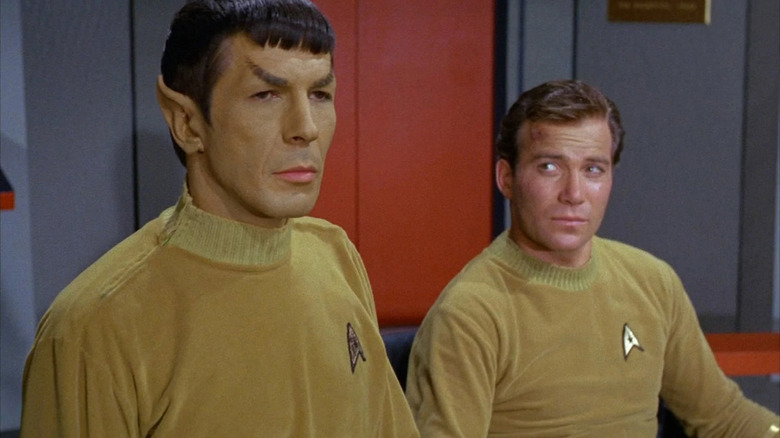
"You know. 1966? 79 episodes, about 30 good ones," said Philip J. Fry of "Futurama" to the jarred, floating head of Leonard Nimoy. This is his animated opinion, of course, but a better question isn't how many are good, but how many of the original "Star Trek" episodes are great. Would you believe 21?
Determining greatness is subjective of course. Popularity isn't a fair indicator of quality, and some fan favorites are guilty pleasures, while others are fun but defective in ways that knock them down from great to merely good. Any episode's overall quality depends on multiple factors: the uniqueness of the premise, the quality of the writing, the story beats, the characterization, guest stars, action, music, production values, and even visual effects.
Speaking of visual effects, we're not talking about the 15-year-old "remastered" CGI, which already look dated and cartoonish. We're going O.G. all the way. The criteria here is ranking these as the total package rather than the sum of their parts. With that in mind, here's a perhaps controversial list of the 21 greatest "Star Trek: The Original Series" episodes.
21. A Piece of the Action (Season 2, Episode 17)
Although humorous moments abound throughout the original "Star Trek," there aren't many outright comedy episodes. In fact, there are only three: "I Mudd," "A Piece of the Action," and "The Trouble with Tribbles." Most fans I know vote the straight "Tribbles" ticket, but that episode is merely cute-funny, whereas the over-the-top "A Piece of the Action," is actually genuinely funny. The script by Gene L. Coon is more absurd than "Tribbles" and features more comic business. The cherry on top was its helmer, James Komac, who was a gifted comedy writer and director of hundreds of episodes of shows including "Welcome Back, Kotter" and "Chico and the Man" (which he created).
This episode is almost a meta-commentary and spoof on the "Star Trek" schtick of "strange new worlds" which end up being monocultures thinly based on Earth's history. Here we see why the Prime Directive exists: an entire civilization has modeled itself on the popular mythos of Roaring '20s Chicago mobs. It's literally Planet Cosplay, and an unintentional spoof of fandoms then and now. Two things keep it at this end of the list: it's shamelessly riffing on "Robin and the 7 Hoods" (1964), and it's almost irredeemably dumb. Fortunately, it's dumb fun, and fun enough to be among the best. "Right?" "Riiiiight."
20. Space Seed (Season 1, Episode 22)
You might be surprised that this comes in so low in a list of greats, but that it merits inclusion at all relies solely on the sheer screen presence and magnetism of its guest star. Khan Noonien Singh is an arrogant egotist and tyrant, but Ricardo Montalbán's confident performance makes him watchable. Minus him, the story defects would relegate this episode to merely "good." Many put this in their top 10, but I suspect that's because it basks in the reflected glow of its cinematic follow-up "The Wrath of Khan."
The script is serviceable but unmemorable and commits the sin of making our heroes foolish instead of making Khan's intelligence and cunning the real danger. Kirk hands this unknown and suspicious character unfettered access to the ship's technical library on a silver platter, and historian Marla McGivers is a pushover who betrays all her shipmates because she's a fangirl of brutish dictators.
Weak story aside, the episode does have strengths. All the performances are good, and the story moves along at a brisk pace. There's memorable dialog, and McCoy really shines when he isn't cowed by Khan holding a scalpel to his neck. There's also some of the best miniature effects work on the show, going to the expense of a custom-made model of the Botany Bay . Montalbán is what makes it a best episode at all, but he alone can't elevate it.
19. The Conscience of the King (Season 1, Episode 13)
This least "Star Trek"-y of "Treks" scores points for being just that. The series premise allows it to be a semi-anthology, able to shift genres without breaking format, so one week it's a psychological drama about the duality of human nature, another time it's about cold war proxies, or planet-killing doomsday machines by way of "Moby Dick," or — as in this case — a Shakespearean tragedy about mercy and revenge. Just As Hamlet must determine whether or not his uncle Claudius murdered his father, so must Captain Kirk determine if actor Anton Karidian is the man once known as Kodos the Executioner.
Writer Barry Trivers cleverly frames his story within the play that informs it, a bit of dramaturgical license that permits a more theatrical approach. Take, for example, this bit of dialogue from Lenore Karidian: "There's a stain of cruelty on your shining armor, Captain. You could have spared him, and me. You talked of using tools. I was a tool, wasn't l? A tool to use against my father."
This episode exemplifies a shadowy aspect of Kirk's affairs rarely discussed in how he weaponizes romance to get what he wants. The ultimate irony is that he plays Karidian's daughter Lenore in order to get close to her father only to learn that she's been playing him. That it's so different is a double-edged blade that simultaneously makes it a best episode, but nowhere near the top. It was a great stretch for the show.
18. The Immunity Syndrome (Season 2, Episode 18)
This one barely edges out the not-dissimilar and more popular "The Doomsday Machine." Both feature the crew of a sister ship annihilated by a huge alien thing endangering life throughout the galaxy. But where "Doomsday" is a straightforward adventure story driven by an Ahab-like guest star, "Immunity" is more personal, as it features some great and properly motivated Spock and McCoy conflict.
Too often Bones would goad Spock for no reason, but here their back and forth is professional: two scientists vying for an opportunity to study this alien organism, each feels himself the most qualified to take on what promises to be a suicide mission, and each, perhaps, choosing to make the sacrifice rather than let the other die. But it's Kirk who has to make the final, heartbreaking choice of which of his friends to send. That's classic "Trek."
Given its budget and the visual effects tech of the time, "Star Trek" was rarely able to get across truly alien life forms, but this is a notable exception, and the conceit that the Enterprise must enter the alien entity as a virus infects a cell is a nice twist. The visual effects of the space amoeba thing are fabulous and weird, something the 2007 remastered CGI does not improve on.
17. Day of the Dove (Season 3, Episode 7)
The third season has no classic episodes, but a few come close. "Day of the Dove" is the best of the bunch. The simple premise of exploiting bigotry between our heroes and their cold-war counterparts, the Klingons, works better than it ought. If you want to look for a message, the alien entity that fuels the very hatred and violence it feeds upon can be read as a stand-in for the military-industrial complex, which fans the flames of conflict in order to sell weapons in a perpetual feedback loop. Alternatively, you can just take it for a MacGuffin.
The nefarious influence of the alien entity memorably amplifies the slightest biases of the Enterprise crew, and it's uncomfortable to hear blatant racism coming of out our noble heroes' mouths, especially Scotty's attack on Spock. Michael Ansara plays Kang as no mere mustache-twirling bad guy, but as a shrewd enemy starship commander, an honorable warrior, and a fine opposite to Kirk. By turns personable, calculating, and violent, he's a model Original Series Klingon. Frankly, I'd rather watch him than Khan; your mileage may vary. It's got action. It's got character conflict for days. It's the best the third season has to offer, but it's not as great as the first and second-season entries coming up.
16. Tomorrow Is Yesterday (Season 1, Episode 19)
The original "Star Trek" didn't play with time travel much, and when it did the results were either very good or they were horrid, with the backdoor pilot "Assignment: Earth" being the low point. "Tomorrow Is Yesterday" features the most offbeat teaser of the series, following an Air Force F-104 interceptor, with the visual punchline that the bogie it's after is the USS Enterprise.
What follows is illogical as all get out, but the gimmick of the Enterprise being tracked as a UFO and having to undo the temporal damage it's done by being photographed and accidentally crushing that Air Force interceptor is great and the story milks it for all it's worth. No real depth here, but the fun is all in the plot events and reactions of the crew.
There's some great in-character stuff in the episode, including Spock's statement that he too doesn't believe in "little green men," and his one-star ranking of the Air Force film of the Enterprise as "bad photography." Kirk's playfully resigned responses to his Air Force interrogator are great, too. And, hey, Sulu even gets to get off the bridge. The main weakness is the "how does that work?" ending gimmick of beaming people back into their own bodies. Great, but not a classic.
15. Balance of Terror (Season 1, Episode 14)
A fan favorite for good reason, the episode depicts the loneliness of command as Kirk tries to seek and destroy a marauding alien vessel without triggering an outright war. Seeing some of the "lower decks" types makes the Enterprise feel more real and lived in and sells that Kirk's every decision has repercussions beyond the bridge. But it's Mark Lenard's perfectly pitched turn as the unnamed Romulan commander that's most memorable here. Torn over the ramifications of the performance of his duty, he's Kirk's equal in every way, and you can believe that he loses this battle not by dint of any personal failings but merely because his ship is outmatched by the much quicker and faster-firing Enterprise.
For 1966 the effects are great and largely still hold up. The Romulan ship is simple and distinctive, and the music is spot on. The main thing keeping it out of the top 10 is that it so baldly swipes elements of the films "Run Silent Run Deep" and "The Enemy Below," slapping pointed ears on the German Kriegsmarine story from the latter film, borrowing its war-weary commander and a subordinate fanatically loyal to their political leader. In "Arena," the show paid for the rights of the story it was cribbed from and credited the author. No such screen credit graces this obvious lift.
14. The Ultimate Computer (Season 2, Episode 24)
Kirk's infamous for offing overzealous computers (see: Landru in "Return of the Archons," Nomad in "The Changeling," and the androids of "I Mudd"), but his personal best computer kill is in "The Ultimate Computer." Here he doesn't merely meltdown the M5 Multitronic unit by confronting its flawed logic regarding its purpose; he aims a precise surgical strike at the chink he spots in its programming armor: appealing to the morality inherent in the memory engrams its all too human creator imprinted it with, causing it to reason it must die to pay for the sin of murder.
This episode is character-driven, with Kirk confronting his own redundancy and possible irrelevancy even as Spock and McCoy make their loyalty and friendship clear. Guest star William Marshall's turn as the deranged Dr. Daystrom is a standout, ranking among the best of the show.
All this drama is supported by some fine action, as M5 reduces a redshirt to a puff of smoke, photon torpedoes a robot ship, and then nearly destroys four sister ships of the Enterprise, actually killing the entire crew of one. Even the light ending — which often play as callous given the events which precede them in many episodes — is acceptable here because it's about Spock and McCoy, not Kirk. But it's still Kirk vs. the Computer, and those are never "Star Trek" at the very top of their game.
13. The Cage (Original Pilot)
Forget "The Menagerie" with its paper-thin envelope around the first pilot, repetitive courtroom scenes, and forced cliffhangers, all of which render it a solid but not great installment. But on its own "The Cage" is not just a great launchpad for what "Star Trek" is and would become, but an imaginative and well-executed story in its own right. Gene Roddenberry's script is smart, with the atrophied Talosian aliens a satirical stand-in for TV audiences who might rather live other people's fantasies than experience adventures of their own. While it's a bit talky and static in places, when they're in action it's great stuff — notably the laser cannon scene and Pike's illusory fight on Rigel VII.
Visually it's terrific. This was the most expensive episode ever made , and it shows. The sets, costumes, makeups, and many special effects are top-notch for a show of the era particularly the matte shot of the Rigel VII fortress. The pacing's a bit loose, the characters don't pop due to the largely meh casting, and "THE WOMEN!" Number One and Yeoman Colt secretly wanting to bone the Captain is cringeworthy. However, guest star Susan Oliver's performance is the standout here, followed by Leonard Nimoy as Spock. Ultimately, it's just as well that the far more energetic William Shatner stepped in to replace Jeffrey Hunter's less-than-charismatic version of Captain Pike .
12. Arena (Season 1, Episode 18)
If any episode of "Star Trek" is truly iconic, this is it. The action set piece on Cestus III is the biggest of any in the series, with running and jumping and explosions galore, a redshirt vaporization, a detonating tricorder, and a photon torpedo-sque mortar. Once back on the Enterprise, Kirk's dogged determination to overtake and destroy the enemy ship demonstrates the obsessive nature of his character, but communication with his alien foe plants a seed of doubt which ultimately empowers him to practice what he preached in "A Taste of Armageddon: " We're human beings with the blood of a million savage years on our hands, but we can stop it. We can admit that we're killers, but we're not going to kill today. That's all it takes. Knowing that we won't kill today."
Kirk doesn't kill, and it saves the day. It lands here amongst the best because the story ends with the overused first-season gimmick of the godlike entity — the others being Gary Mitchell, Charlie-X Evans and his Thasian truant officers, Trelane the god-child, and the Organians — but the Metrons are more a plot device than anything. The Gorn is a great and worthy adversary, even as its slow-motion gestures are laughable. Spock hanging a lantern on Kirk's cannon-building is a bit much, but hey, he's the costar and has to do something.
11. Where No Man Has Gone Before (Season 1, Episode 3)
This might be a surprise but despite the second pilot weirdness of different uniforms, series crew regulars appearing not at all (McCoy, Uhura) or in different jobs (Sulu is an astrophysicist), and Spock's not-quite-there characterization and more severe makeup, the core "Star Trek"-ness is there in spades. Kirk makes a risky decision in the first act and must deal with the building consequences for the balance of the show, finally shouldering personal responsibility for his decision in the worst way possible: in order to save his ship and crew, he's forced to kill a subordinate shipmate and friend.
The episode looks great (being far more expensive than any regular production episode), repurposes the planet set built for the even more expensive first pilot, and features more optical effects than would be the norm for a production episode. Most importantly, William Shatner's Kirk projects leading-man charisma of the sort that's arguably what sold the show. It also delivers on Gene Roddenberry's original high-concept pitch of a "Wagon Train to the stars" where stories would focus on strong guest stars interacting with the recurring cast. The script is not without its flaws, and had Gary Mitchell been a tad more likable the drama would have played even better. Still, two thumbs way up.
10. A Taste of Armageddon (Season 1, Episode 23)
"New civilizations" planet stories rarely yielded great episodes, often setting up straw man civilizations for Kirk to knock down, but this one bucks the trend with a story smart enough to rank among the best. Kirk vs. the Computer legendarily has Kirk talk the machine to death, but now and again he goes for the direct approach. Here the computers coldly run simulations and select innocents to die, and Kirk has zero compunction about blasting them, finally forcing the two civilizations to finally attempt to negotiate peace after 500 years of a "war" where death has been made so neat and tidy they see it as a necessary evil rather than something to stop.
Goodies include Scotty's head-butting with Ambassador Fox, Kirk's arguments about war with Anan 7, and Kirk threatening to have the Enterprise rain destruction down on a planet that's not faced a real attack in centuries. The moral? Any war held at arm's length is mere statistics, something the American people had grown accustomed to until television thrust the reality of Vietnam into their living rooms each evening. That's a lesson we must learn over and over again in conflicts where we increasingly use long-range and smart weapons to strike people we never even see. It's a message as relevant today as when it was first aired.
9. The Corbomite Maneuver (Season 1, Episode 10)
Effectively the "third pilot" of "Star Trek," this was the first regular production episode to go before the cameras and it had the luxury of a rehearsal day, a solid director, and a fine script. It even ends with a quintessential "Trek" twist: our implacable foe ends up being an erstwhile friend. By rights, this should've been the first episode to air as it sets up the whole show, but it was nowhere near ready at the premiere , in part due to the sheer number of optical effects in post-production. Dr. McCoy is wonderful from his first appearance, and his camaraderie and professional conflict with Kirk set the stage for their entire relationship.
The weird flagship Fesarius is pure alien goodness, and the Balok puppet is iconic. Memorable business includes Sulu's countdown, Spock's logic and resulting lack of imagination, Scotty's comment about Spock's parents, and McCoy and Kirk's conflict over Bailey. A highlight is the briefing room scene, with its lived-in atmosphere with piles of tapes and empty cups of coffee showing instead of telling us how hard the crew has been working on their predicament. Likewise, the Enterprise feels like a real lived-in ship, with corridors bustling with the crew, something the show would lose as fixed costs increased and studio budgets didn't grow to match . It's one of the 10 best, held back only because it drags in some spots.
8. The Galileo Seven (Season 1, Episode 16)
Albeit loosely inspired by the survivor drama "Five Came Back" (1939), this episode charts its own course as Spock tries and fails to resolve a potentially lethal situation with logic alone. It's rare that adventure shows of the time would depict a lead character failing, but that's just what "The Galileo Seven" does.
As in "The Corbomite Maneuver," we are again shown that Spock's logic can serve as blinders that prevent him from seeing all the possibilities even as he tells Scott "there are always alternatives." As such, he expects the giant natives to react rationally to a show of force and brings them right down on the party. He's likewise ill-equipped to deal with the emotional frailties of the crew under his command, especially the insolent and insubordinate Lt. Boma, memorably played by Don Marshall, later of "Land of the Giants."
The B-story with Kirk desperately trying to locate the lost shuttle against a ticking clock demonstrates the sorts of no-win scenarios a ship captain must face. The production scores visually for the full-size shuttlecraft, as well as the visual effects depicting it and its sister crafts' departure and return to the Enterprise hangar deck.
7. The Naked Time (Season 1, Episode 4)
The fourth episode aired, "The Naked Time" is the foundational character-building segment of the series, peeling away the surface of Kirk and Spock and revealing a bit of what makes them tick. It's also entertaining as hell, with a slow burn as the crew is at first blissfully ignorant of the inhibition-inhibiting compound brought aboard and then having to deal with the resulting chaos. Sulu's descent into madness is charming, and George Takei was always at his most charismatic when he got to play unhinged. Sadly, neither Uhura nor Rand's secret selves get explored, and poor Chapel's reduced to pining for Spock as her primary character trait for most of the series.
The only weak spot here is that the "science" part of science fiction went out of the airlock. A collapsing planet is as preposterous an idea as the notion that the Enterprise is forced to constantly alter its orbit to study it. But guest crewman Kevin Riley is fun and Scotty gets two great lines here, the first being "I can't change the laws of physics," and the second an example of technobabble that's simple and audience-friendly: "You can't mix matter and antimatter cold!"
6. The Devil in the Dark (Season 1, Episode 25)
The episode is unique for being the only one to open with no sign of the Enterprise or her crew. Effectively a redo of series opener "The Man Trap," this episode succeeds where its predecessor fails not merely because the crew act more rationally but because a narrative twist turns the titular "Devil" into a sympathetic character. The Kirk-Spock dynamic is on fine display here as Spock first wishes to capture the creature alive and Kirk wants it dead, but Spock's feelings for his captain override his desire for scientific knowledge the instant he believes Kirk is in danger.
Spock urges his captain to "Kill it!" even as Kirk susses out that the creature may be more than a monster. This is the first instance of Spock mind-melding with a wholly alien life form, a gimmick which would be taken to preposterous extremes in "Star Trek: The Motion Picture." Leonard Nimoy's "pain!" emoting is a bit over the top even for the time and keeps the episode out of the top five. Otherwise, he and William Shatner display the chemistry that made the show work even when the scripts let them down. This script does not let them down.
5. Journey to Babel (Season 2, Episode 10)
This world-building episode fires on all cylinders and never misses a beat. If writers then or now needed a model for how to write "Star Trek," this is it, and it's hands down the best episode penned by Dorothy "D.C." Fontana. There's a story conflict as the Enterprise ferries quarrelsome ambassadors and their aides to the titular "Babel" conference over a matter of Federation business. There's an interpersonal conflict between not just Spock and his parents but also between Spock and Kirk and Bones over relinquishing command.
There's physical conflict as ambassadors brawl, one is murdered, and Kirk is ambushed and wounded. We meet lots of aliens, see a bit of galactic politics, and get a nail-biter of a finish as McCoy tries to perform delicate surgery while Kirk struggles to keep it together amidst attacks by a seemingly unstoppable, unknown ship.
Mark Lenard returns not as a Romulan but as Spock's Vulcan father, Ambassador Sarek, who picks up on Leonard Nimoy's Vulcan portrayal and crafts one uniquely his own. Memorable too is Reggie Nalder, whose burn-scarred face and Austrian accent accentuate his alienness in the role of the blue-skinned Andorian delegate Thelev, and established Andorians as Federation members , who would not be explored on TV for decades. Spock's family drama is a bit conventional for an alien culture, and just a dash more of the Vulcan alienness we got in Ted Sturgeon's "Amok Time" would have made this perfect.
4. The Enemy Within (Season 1, episode 5)
With a script that takes a pinch of "Strange Case of Dr. Jekyll and Mr. Hyde" and adds a dash of "All About Eve," "The Enemy Within" really delivers on the "Star Trek" promise to be an "adult" show by exploring the uncomfortable idea that even the noblest have a dark side, and that our shadow selves are necessary parts of being human. The scenes with Kirk, Spock, and McCoy crackle with intellectual and emotional tension, and Spock finding Kirk's condition so "fascinating" neatly propels the drama while hinting at his own duality. William Shatner's twin performances as the understated compassionate Kirk and the scenery-chewing "imposter" demonstrate his range.
A few missteps are the weird editing, where events happen out of order, such as when Spock states they have an intruder aboard long after they've established the transporter duplicated the dog-thing; Rand being expected to stand up for herself in front of her alleged attacker, Kirk; and the silliness of Spock reporting that the malfunctioning transporter duplicated the thermal heaters beamed down and not thinking to beam down blankets or other insulation to help keep the stranded Sulu and company from becoming human popsicles. Additionally, Spock's closing crack at Rand about the imposter's qualities was and remains cringeworthy.
3. Mirror Mirror (Season 2, Episode 4)
This is the poster child for episodes that manage to become classics despite the premise being as dumb as a box of rocks. Absolutely nothing about the scenario makes a lick of sense. There's a parallel universe where all the same people end up on the same ship despite having vastly different histories and a culture of assassination. The starships in both universes happen to be on the same planet and beaming the same four people at the exact same time, and our parallel-universe leaping characters and their barbaric counterparts somehow switch wardrobes — and presumably underwear — mid-transporter beam.
What saves it is the sheer entertainment value of this gaudier imperial Starfleet and the skewed versions of familiar regulars inhabiting it. Evil Sulu's a sweaty seducer, mirror Chekov is a back-stabbing opportunist, and bearded Spock was a meme before we knew we had memes. The best Uhura performance can be found here, and Nichelle Nichols should be remembered for this over that overrated and involuntary interracial kiss. The only thing that could have made it better was had Yeoman Rand been brought back as "the Captain's Woman." The big speech to mirror Spock about the illogic of waste is Kirk at his Kirkiest, and that's the perfect capper on a perfectly entertaining classic that ranks right near the top.
2. Amok Time (Season 2, Episode 1)
The Vulcan episode to rule them all is one of those rare world-building episodes of the original series, except here the strange new world is Spock's home planet. Vulcan civilization is memorably introduced in a most unexpected way by demonstrating that the cooly logical Spock is anything but when it's time to swim upstream and spawn, whereas his mate-to-be, T'Pring , employs the logic Spock adores in order to escape her obligations to him and make her own choices.
Everything about the scenes on Vulcan works splendidly, from matriarch T'Pau's officiating and T'Pring's challenge to the big Kirk-Spock battle. Okay, and the wonderful and memorable OTT music is the icing on the cake. The first half on the Enterprise has some nice comic moments as well as some solid Kirk-Spock-McCoy interaction, but, as with many episodes where a mystery is involved, the tension of the first half doesn't play quite as well on repeat viewings.
Fortunately, the drama and conflict on Vulcan are top-notch and hold up. The punchline in sickbay is a classic, because the bigger the dramatic tension, the bigger the comic release, and, given all the action on the planet, the funny tag feels totally earned for a change.
1. The City on the Edge of Forever (Season 1, Episode 28)
No surprise here, as it tops a great many lists, but "City" excels not only because the core drama is compelling but because of the care with which it was put together. The most expensive regular production episode of the series , all the money is up there on the screen, from the period costumes to the backlot shooting, new sets, stock footage, and the flashing Guardian time donut. William Shatner, Leonard Nimoy, and DeForest Kelley are all in fine form here. Guest star Joan Collins isn't great but she's fine.
Story-wise, the fish-out-of-water situation, the incredibly high stakes, and the crushing inevitable tragedy make this the exemplary segment. Even gutted by ham-fisted staff rewrites by the "Trek" staff (in my opinion), Harlan Ellison's core story premise remains moving in spite of the on-the-nose sermon by Edith, the racist joke at Spock's expense, and the complete absence of the tragic Trooper character on whom the irony of who amongst us "matters" hinged. Kirk's episode-closing "Let's get the hell out of here" was not any kind of TV first, but it was the perfect minimalist button that the story needed. What more was there to say?
Den of Geek
Every Star Trek TV Series Ranked
We're ranking all the Star Trek TV series, from The Original Series to Strange New Worlds and beyond!

- Share on Facebook (opens in a new tab)
- Share on Twitter (opens in a new tab)
- Share on Linkedin (opens in a new tab)
- Share on email (opens in a new tab)
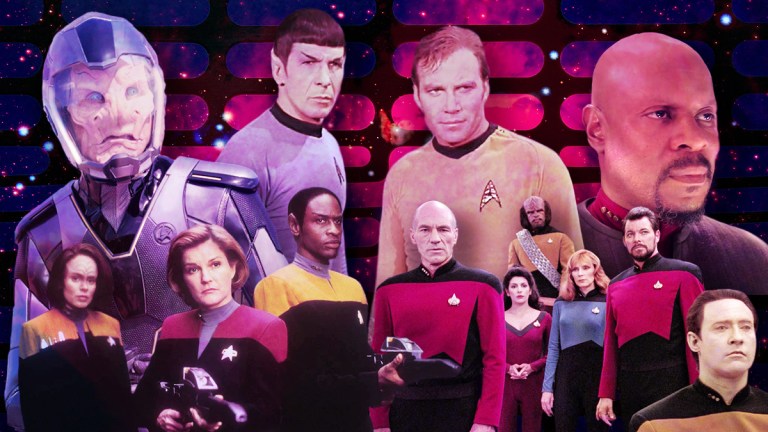
Since its debut in 1966, Star Trek has boldly gone to nearly every cultural aspect of modern life. The franchise has included 13 feature films with various crews, numerous board and video games, hundreds of action figures, commemorative plates — you name it, and there’s probably a version with a Starfleet logo on it.
But despite all this exploration into other media and fields, Star Trek remains best on television. And after a long drought, the franchise is finally thriving again in its original medium, despite the bumbling of its parent company Paramount. Even with Picard done and Discovery entering its fifth and final season, multiple series are still in production, including the acclaimed Strange New Worlds .
But as the greatest Trek theme song reminds us, it’s been a long road getting from there to here. The Original Series was canceled after a budget-strapped third season in 1969 and only built its following in syndication. Star Trek: The Next Generation overcame its rocky start to launch a renaissance that lasted throughout the 90s, but the cancelation of Enterprise led to 13 years without a new Trek show on TV.
With all of that behind us, and in the midst of a second Star Trek renaissance, it’s time to look back at the best and worst that the franchise has to offer.
Ad – content continues below
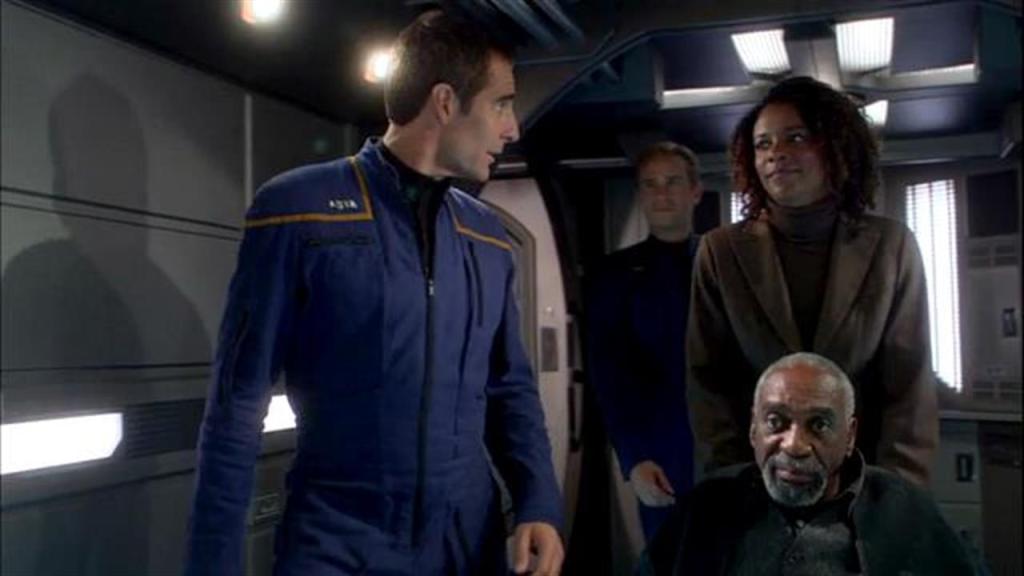
12. Enterprise (2001 – 2004)
Enterprise will always be known as the series that ended the first Star Trek renaissance. What began with The Motion Picture and peaked with multiple excellent television series finally fizzled out with a lackluster series that too often felt perfunctory.
The series certainly had the right idea in mind. Instead of continuing the storyline set out by The Next Generation or revisiting the Kirk era, Enterprise went back to the beginning, showing the rough early days of humanity’s warp-capable exploration and the establishment of the Federation.
Despite those noble intentions, Enterprise mostly floundered, starting with its cast. Trip Tucker made for a fun swashbuckling hero from the beginning, John Billingsley brought a delightful weirdness to his alien Doctor Phlox , and Jolene Blalock brought depths of nuance to the oft-underdressed Vulcan T’Pol, but the rest of the crew got either underutilized or used poorly. The incredibly likable Scott Bakula struggled to get a handle on Captain Archer, Linda Park’s Hoshi Sato got less to do than TOS Uhura, and Travis Mayweather had no qualities beyond being born in space.
However, Enterprise did eventually become a worthy Trek series. The Temporal Cold War gave the NX-01 more immediate relevance to other entries and the Xindi Civil War allowed the series to tackle questions raised by its post-9/11 present. However, even these advancements got overshadowed, partially by Ronald D. Moore leaving Trek to make the morally complex competitor Battlestar Galactica and by the producer’s decision to end the series by foregrounding Riker on the holodeck. In the end, Enterprise ’s time never came.
11. The Animated Series (1973 – 1974)
We don’t know what it was like to watch The Animated Series during its original run, but it must have been magical. A beloved series, seemingly gone forever, gets one more crack. While the cheap TV animation of the 1970s must have been a disappointment to even the show’s first viewers, and surely some lamented the loss of Walter Koenig’s Chekov , who was cut from the show for budget reasons (a script written by Koenig was used for the episode “The Infinite Vulcan”), most would take more Trek in any form available.
And to be sure, TAS was a worthy continuation of the original series. William Shatner, Leonard Nimoy, DeForest Kelley and their co-stars proved to be able voice actors, breathing life into decidedly more static representations of their characters. Even better, the series benefited from scripts by some of the best sci-fi writers of the era, including the ever-reliable D.C. Fontana and Ringworld creator Larry Niven.
To be sure, some of the novelty of TAS has worn off. Star Trek has proven to be a reliable franchise, and fans no longer have to be satisfied with the scraps that the studio tosses them. Even the best animated episodes feel diminished by their medium; less a second chance for the Enterprise crew and more a lesser version of the franchise we’ve come to love.
Get the best of Den of Geek delivered right to your inbox!
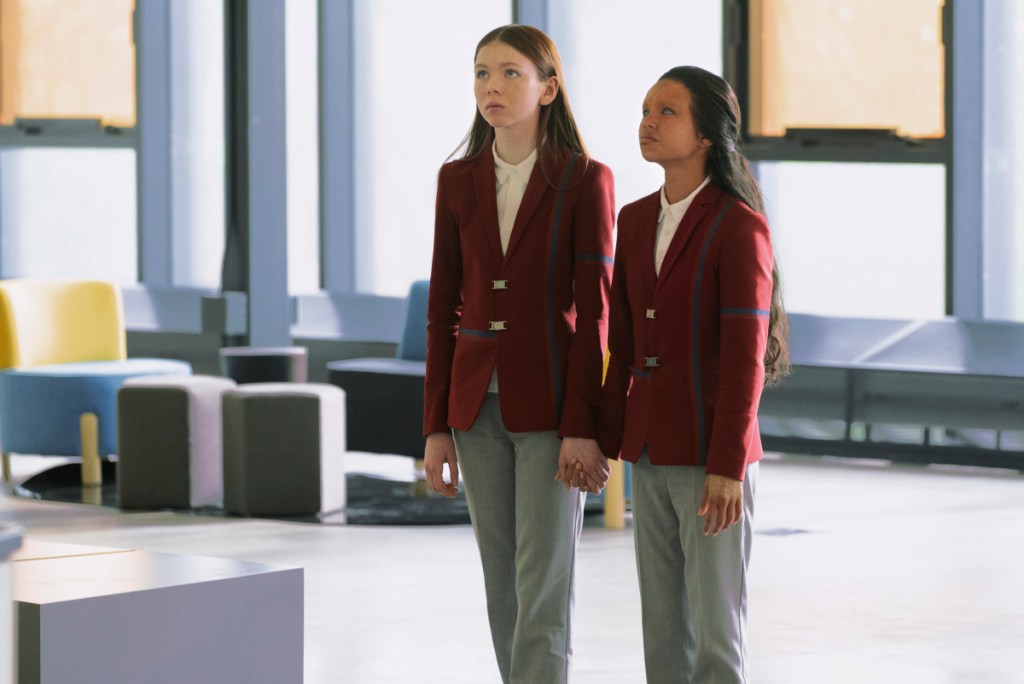
10. Short Treks (2019 – 2020)
Short Treks is exactly what it sounds like: 8-15 minute short movies set in various parts of the Star Trek universe. This small-scale approach means that it’s easy to forgive the Short Treks entries that go awry, and some certainly have. The series closer “Children of Mars” feels like an after-school special with slick music video aesthetics, made all the worse by the fact that it’s a lead-in to Picard season one, perhaps the worst season of Trek ever. The great composer Michael Giacchino finds some delightful turns in the Pixar -inspired “Ephriam and Dot,” but it’s a tonal disaster that makes the Discovery crew look like monsters.
Fortunately, most of Short Treks ’ ten episodes are pretty great. “Calypso” takes a horror turn with Aldis Hodge playing a crewman alone on a haunted ship. The hilarious “The Trouble with Edward” stars H. Jon Benjamin as an insecure scientist whose arrogance gives tribbles their mass reproduction abilities. And “Q&A” foregrounds the wonderful Strange New Worlds , as Spock and Number One bond over show tunes while stuck in a turbo lift.
Unfortunately, the inessential nature of Short Treks cuts against these stronger entries as well. Buried someplace on the Paramount+ app, Short Treks rarely have strong relevance to mainstream stories, and thus can be easily ignored, the good and the bad.

9. Picard (2020 – 2023)
Picard ended with a miracle season, a perfect mixture of fan service and proper character development. Deftly helmed by showrunner Terry Matalas , Picard season three caught up with the beloved Captain and his crew twenty years later to find them grown older and different, not just stuck in their old routines. Combined with exciting newcomers, especially the stick-in-the-mud Captain Liam Shaw , Picard season three whet viewers’ appetites for more adventures, hopefully in a series called Star Trek: Legacy .
Notice how I keep specifying “ Picard season three”? Because up until that season, Picard was an absolute disaster, the worst that the franchise ever put on screen. To be fair, it’s easy to understand Patrick Stewart’s trepidation at bringing back the old crew , worrying that the show would be a sad rehash of thirty-year-old stories. But in trying to avoid easy nostalgia, the first two seasons of Picard seemed to hate the very franchise it continued. The first season featured the brutal on-screen dismemberment of Icheb, a domesticated Riker with a pizza oven, and Starfleet officers decrying the “pure fucking hubris” of Picard. Season two was even worse, with its ‘Q has dementia’ plotline and a misguided approach to the Borg Queen.
Fortunately, the Captain eventually righted the ship and gave us the story we wanted. Notably, the third season didn’t achieve success by avoiding darker moments. Picard has painful confrontations with Ro Laren and Beverly Crusher, the loss of a child threatens to tear apart Riker and Troi, and Worf straight-up beheads a dude. But all of these unpleasant notes come from a place of respect for the characters, building on what came before instead of destroying it for shock value.
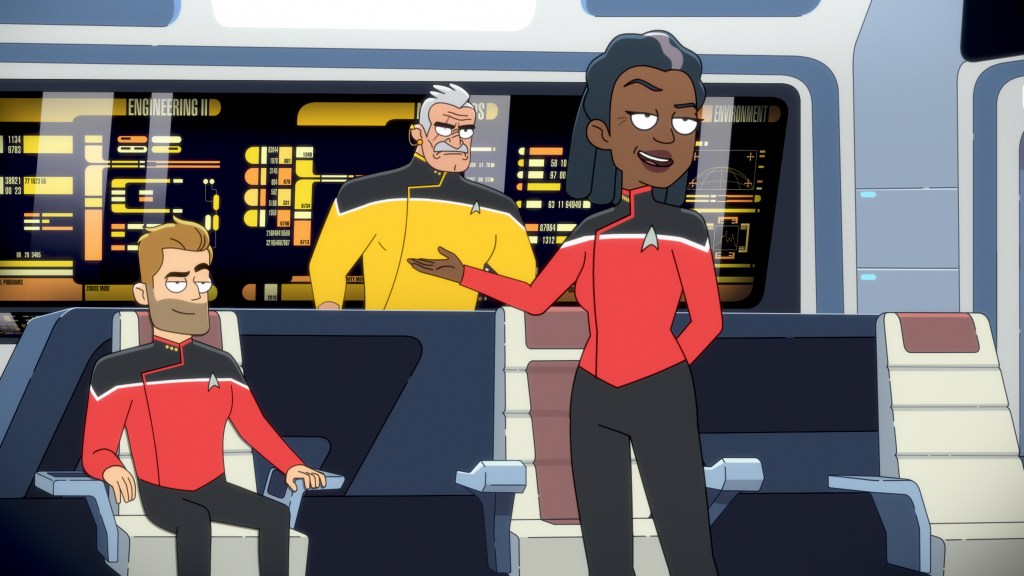
8. Lower Decks (2020 – Present)
There’s a unique joy to watching the Star Trek animated series Lower Decks , something akin to getting back together with old friends. Created by one-time Rick and Morty showrunner Mike McMahan, Lower Decks follows a quartet of ensigns on the USS Cerritos, a Starfleet ship tasked with mundane missions. With lower stakes, the characters have more downtime, allowing them to debate the merits of TNG ’s Rambo riff Roga Danor or play a Klingon DVD game hosted by Martok (voiced again by J. G. Hertzler). In these moments, Trekkies can’t help but chuckle with recognition. How is it that anyone else in the world laughs about these arcane parts of Trek lore?
But at the same time, Lower Decks can get somewhat exhausting. The jokes come fast and furious, as leads Tawny Newsome, Jack Quaid , Eugene Cordero, and Noël Wells sometimes shout their lines (a fact referenced in the recent crossover with Strange New Worlds ). And at times, the multitudinous in-jokes can become the point of the episode, banking way too much investment in the humor of a Tom Paris commemorative plate.
However, Lower Decks has also proven itself to be capable of genuine character exploration. Over the course of the series, Newsome’s Beckett Mariner has revealed herself not to be a too-cool-for-school rebel from an 80s “slobs vs snobs” comedy, but an incredibly capable future officer whose difficult relationship with her mother drives her to self-sabotage. Wells’s Tendi fights against stereotypes about Orion pirates and sex slaves to establish herself as a good-hearted scientist. In these moments, LD finds its jokes in character motivations, not just in winking references.
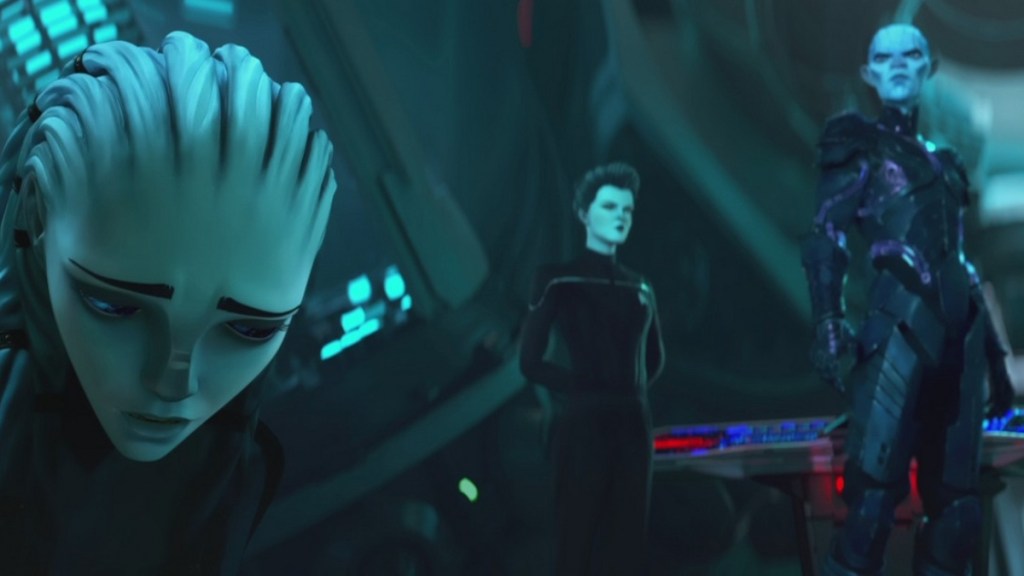
7. Prodigy (2021)
We really hate putting Prodigy so low. As a children’s animated series with ties to the still-underrated Voyager , it’s easy to see why so many Trekkies have skipped over it. That oversight certainly had something to do with Paramount’s boneheaded decision to remove it from Paramount+, the so-called “Home of Star Trek .” But those who did catch Prodigy , especially with their Trek -agnostic kids, discovered a truly delightful series that captured everything great about the franchise.
Set deep in the Delta Quadrant, Prodigy follows a group of alien teens , led by Dal R’El (Brett Grey) and Gwyn (Ella Purnell), who escape a prison colony via the abandoned Starfleet craft the USS Protostar. With help from a holographic Captain Janeway , the kids learn to embrace the ideals of the Federation, while also uncovering their connection to the evil overlord the Diviner (John Noble). The kids’ idealism and desperate situation allows them to reaffirm Starfleet’s first principles, even as they encounter adults from the Federation who have forgotten the meaning behind the symbols they wear.
By making outsiders the focus, Prodigy serves as a perfect entryway into Trek for its younger primary audience. But that doesn’t mean it avoids deep cuts. The main cast counts among its number a Tellurite (voiced by the always hilarious Jason Mantzoukas) and a Medusan (Agnus Imrie). Everyone from Spock and Crusher to Odo and Chakotay have appeared as holograms, and the series even featured the return of one-offs Admiral Jellico and the Outrageous Okona. Through Prodigy , even the most uninitiated Trek fan gets to see the franchise’s goofiest characters and most inspiring ideals.
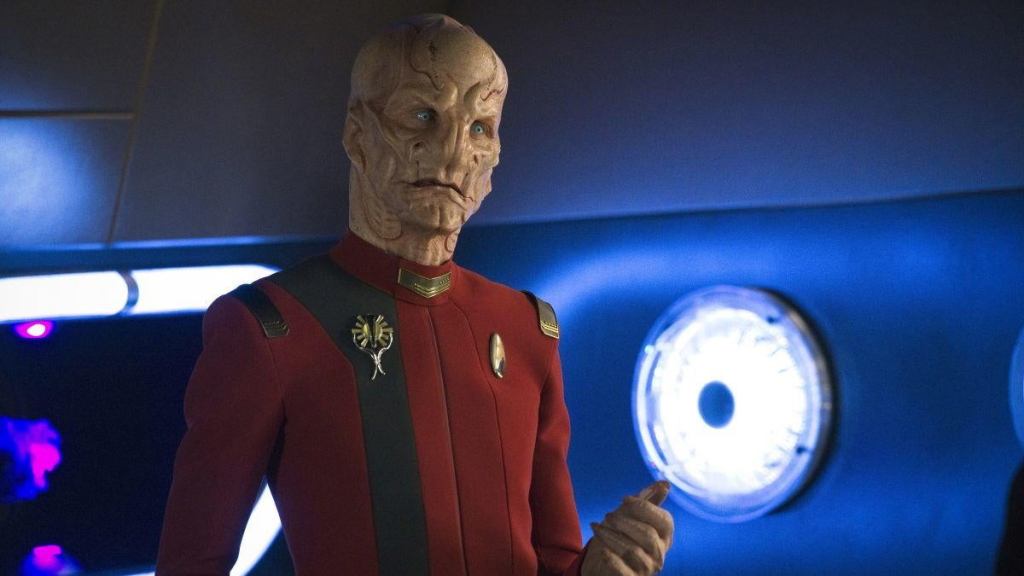
6. Discovery (2017 – 2023)
Strangely, Discovery only gets better as other Star Trek series embrace the standard form. When it first launched under the direction of the often wonderful but always idiosyncratic Bryan Fuller , Discovery aggressively separated from and connected to everything that came before. Instead of taking advantage of its likable cast, Disco focused almost entirely on Michael Burnham (Sonequa Martin-Green), the heretofore unmentioned adopted sister of Spock. Season-long serialized arcs often built to disappointing reveals (all the dilithium in the 32nd century burned because a Kelpian had a temper tantrum?) and nobody asked to watch a topless Klingon woman commit sexual assault.
But as Strange New Worlds and Lower Decks become more prominent during the second Trek renaissance, Disco ’s oddities can be accepted as the experiments they were meant to be. After all, Fuller intended the series to be an anthology, focusing on different characters and timelines each season. That offbeat spirit remained in the show, even after Fuller left production. As it heads into its fifth and final season, Disco remains committed to taking Trek into new, uncharted territory.
Nowhere is that more clear than in its most controversial aspect: the crying. Emotion has always been a key part of Star Trek , represented by McCoy in the triumvirate with Kirk and Spock. But with Disco , emotion became a valid form of problem-solving, taking its place beside the franchise’s favored approach, logical thinking. Even if the crying in Discovery doesn’t work for everyone, there’s no denying that it serves the franchise’s core goals by finding new ways of understanding humanity.
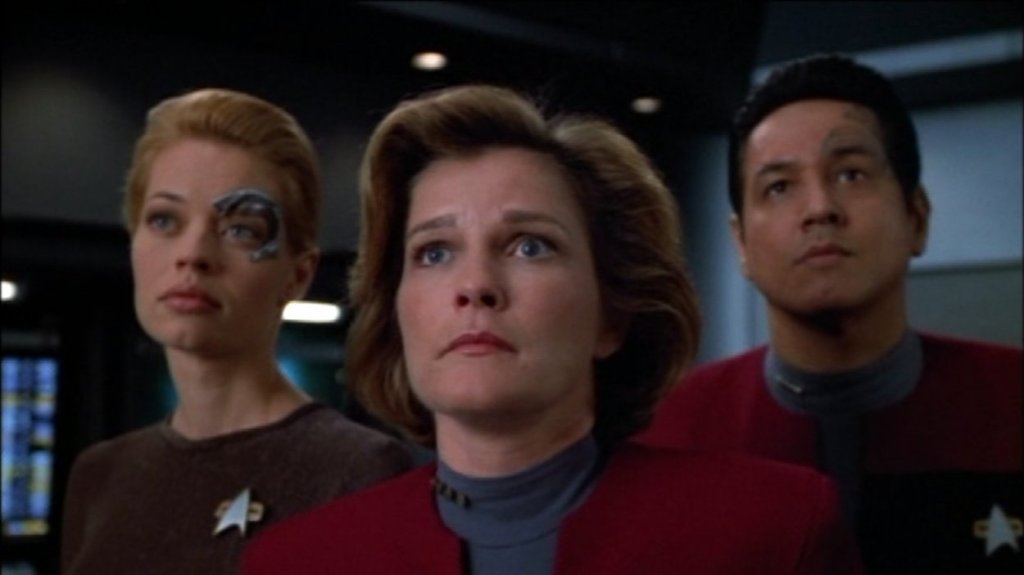
5. Voyager (1995 – 2001)
Most Trek series get off on the wrong foot, but few screw things up like Voyager . Despite a fantastic premise, in which Captain Janeway strands her crew in the Delta Quadrant and is forced to work with Maquis dissidents, the series stumbles through some terrible decisions. Not only does it try to push the incredibly stupid and ugly Kazon as the chief enemy race (the way-better Vidiians are right there!), but it also acts like Neelix, who is controlling and petty with his two-year-old girlfriend Kes, is a lovable goof. Even for a Rick Berman-produced show, that’s creepy.
You do have to get over the fact that the show chooses standalone episodes over serialization, basically killing any larger tension and most character development, but the show quickly makes it easier to forgive that shortcoming by telling some fantastic single episodes. By the time the fantastic Jerry Ryan joins the show in season four as ex-Borg Seven of Nine and the Kazon get left behind, Voyager delivers some all-time great Trek episodes, including “Year of Hell” and “Blink of an Eye.”
Latest TV reviews
Star trek: discovery season 5 episode 5 review – mirrors, the red king review: uneven folk horror crime mash-up, red eye review: itv thriller starts silly, gets great.
Even better, the series settles into fleshing out its primary characters. Yes, this does mean that some go by the wayside — not just the departed Kes, but also Chakotay becomes a big nothing, Paris and B’Elanna get pushed into the domestic bliss corner, and Kim stays an ensign. But the tensions between Seven of Nine, Janeway, and the Doctor make for a classic Trek trio, allowing the show to explore the nature of humanity while also making the Captain the most adventurous of Starfleet leaders. Plus, Voyager gives us the best Trek kid ever in Naomi Wildman and no we will not hear counterarguments.
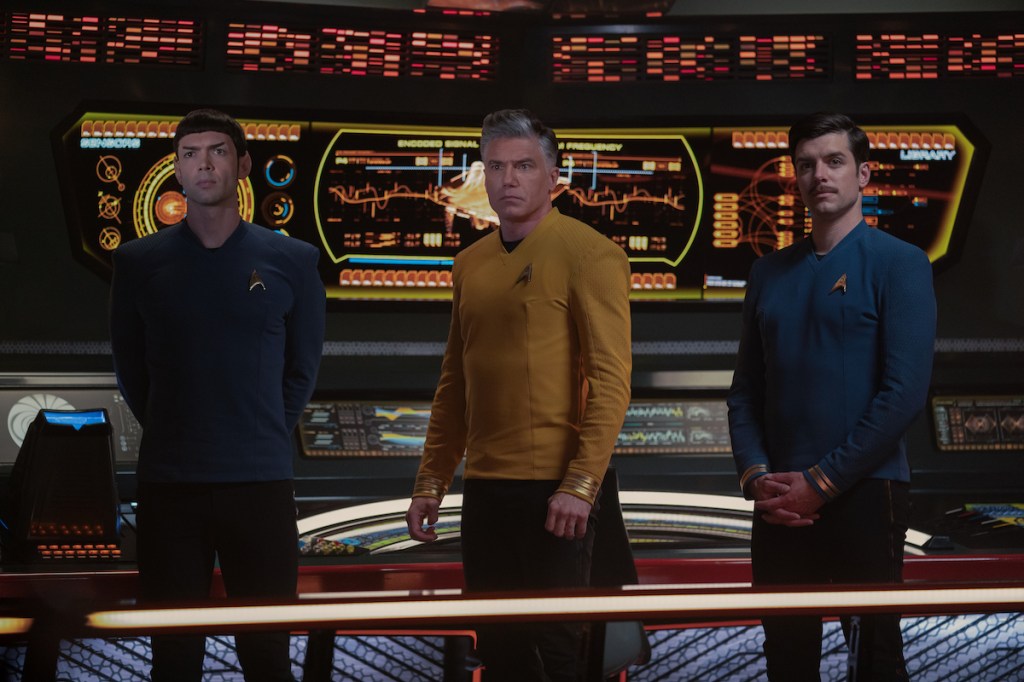
4. Strange New Worlds (2022 – Present)
Aside from TOS , nearly every Trek series has started off with a bad season or two. But that’s not the case with Strange New Worlds , which has not had a single bad episode yet.
SNW returns to the early days of the USS Enterprise, following the adventures of Kirk’s predecessor Captain Christopher Pike and a crew that includes young Spock and Uhura. What could have been a reactionary retreat to a safe era of Trek , complete with a straight white guy in the captain’s chair, has turned out to be Trek at its best. Anson Mount makes for not only an affable, big brother of a leader as Captain Pike , but he’s also a remarkably generous performer. Time and again, Mount finds new ways of supporting his scene partners, whether it’s playing a baffled straight man when Spock gets overwhelmed by his human side or reassuring his security chief La’an with words of gentle wisdom.
Thanks to Mount’s ability to share the spotlight, SNW has been able to develop the best ensemble cast of any Trek series, a remarkable feat given its use of well-known characters. Ethan Peck has successfully established his own take on Spock, playing a more emotional version of the character that still feels like someone who will grow up to be Leonard Nimoy . Celia Rose Gooding plays Uhura as an incredibly talented Ensign who doesn’t yet know that she’ll become the legendary Starfleet comms officer. Babs Olusanmokun, Jess Bush, and Rebecca Romijn fully round out characters barely glimpsed in TOS .
With this outstanding cast and crew, SNW puts a modern sheen on TOS themes and even episodes, without diverging too hard from what came before. Case in point: the season one finale “ A Qu a lity of Mercy ,” which revisits the classic episode “Balance of Terror” in an alternate reality. It’s our love for Pike and other characters that makes us want them to sacrifice a better life in order to restore the original timeline, even if it means Pike must accept his fiery fate.
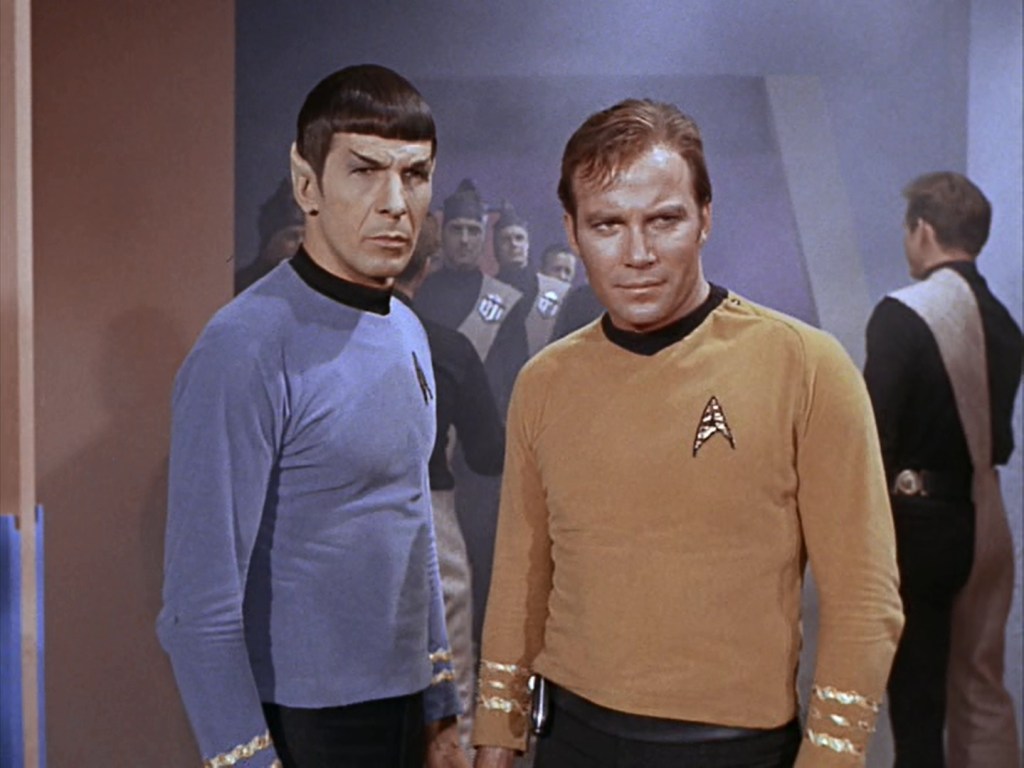
3. Star Trek (1966 – 1969)
Newcomers to the franchise sometimes struggle with the original series, finding it hopelessly dated. TOS does definitely embrace the aesthetics of its time, with its miniskirt uniforms, technicolor background lighting, and, yes, space hippies. But like The Twilight Zone , its closest counterpart of the era, both in terms of themes and influence, Star Trek used its outlandish premise to speak to the heart of the human condition.
At this point, it’s easy to make jokes about William Shatner ’s idiosyncratic delivery, but there’s no denying how well it works for Captain Kirk. Every pregnant pause, every sparkle in his key-lit eyes reveals a genuine love for exploration. When combined with the logical Spock and the irascible McCoy, Star Trek establishes a perfect formula for spacefaring television adventures. Even as they encounter low-budget baddies like the costume-shop Gorn or the blocky supercomputer Landru, Kirk and Co. remain focused on the human element.
Thanks to this approach, TOS perfected the sci-fi tension between high-concept ideas and terrestrial concerns. Gene Roddenberry and writers such as D.C. Fonatana and Gene L. Coon got to grapple with issues such as racism and the Vietnam War with stories about Klingons and Romulans. As rich and fantastic as TOS got, it never lost the humans at the center, making it ripe for continuing adventures and spin-offs.
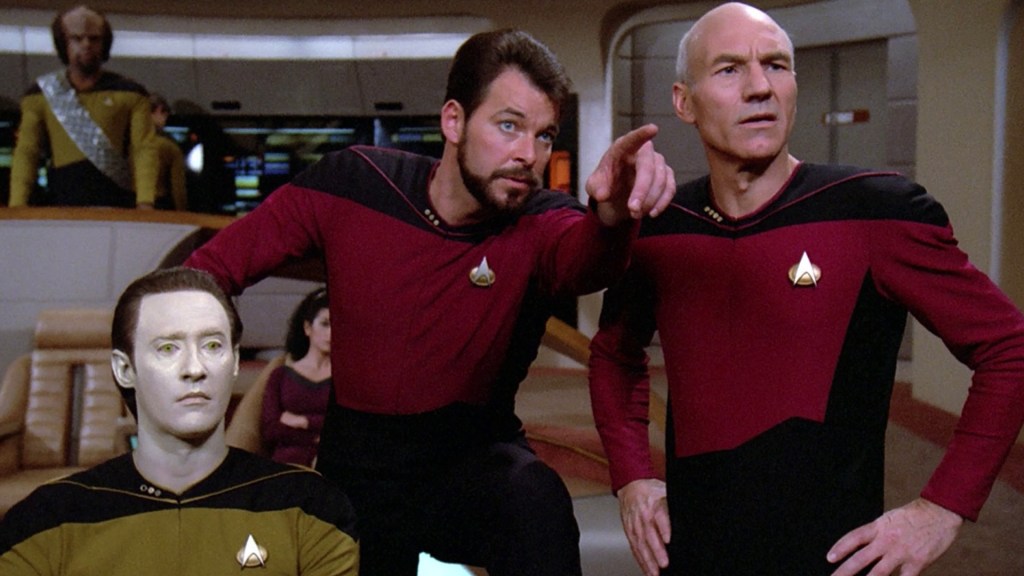
2. The Next Generation (1987 – 1994)
Patrick Stewart didn’t empty his suitcase. That’s how certain he was in the failure of Star Trek: The Next Generation . Stepping in for the hammy masculinity of the established Captain Kirk, the patrician, thoughtful (and bald) Jean-Luc Picard seemed like an ill-fit for the franchise, even with the more traditionally heroic Will Riker in tow. And for the first two seasons, Stewart seemed to be correct, especially when Roddenberry and others tried to restrict the TNG cast to TOS -style stories.
But by the time it hit its third season, TNG perfected the Star Trek formula, embracing what was so great about TOS while also emphasizing its most underutilized asset, the ensemble cast. Instead of putting Picard at the center of a trio, which initially included Data and LaForge, the Captain became the imperfect parent of a family filled with interesting personalities. Debates about morality and philosophy occurred around a table in the ready room, where several voices chimed in on important issues.
This isn’t to say that TNG didn’t grapple with big ideas like its predecessor. “The Measure of a Man” raised questions about the dignity of life, “ Chain of Command ” looked at the cost of war, and “Ensign Ro” considered the morality of resistance. It’s just that all of these episodes came from a place of love and investment in the characters. We tuned in every week not just to seek out new life and new civilizations, but to spend more time with interesting characters whom we loved, making even the most outlandish adventure feel as comfortable as a poker game with old friends.
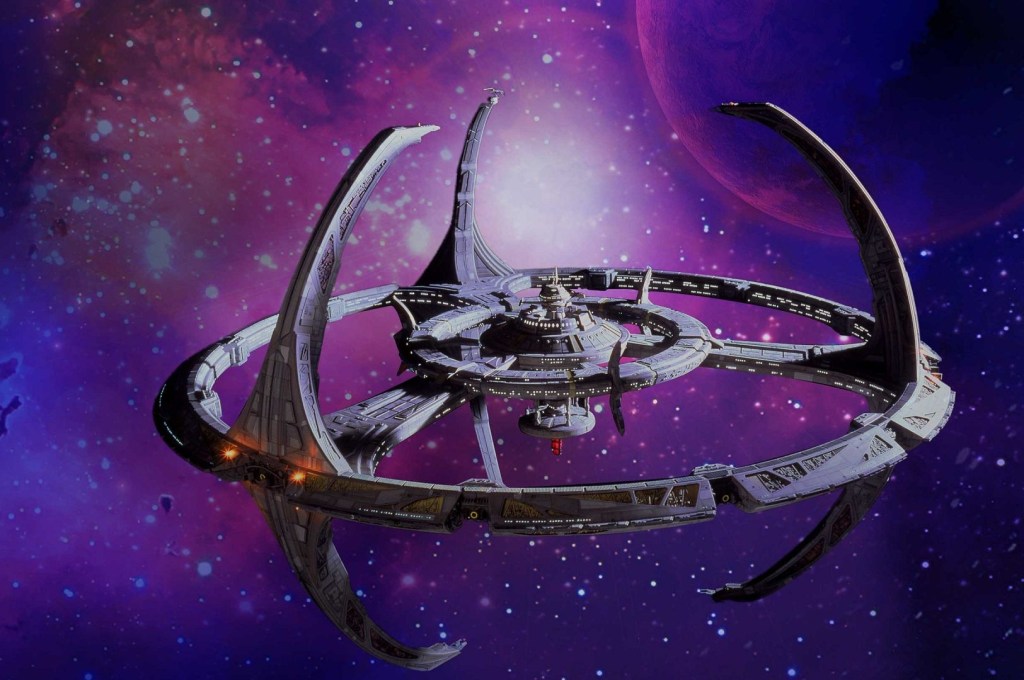
1. Deep Space Nine (1993 – 1999)
What initially seemed like too far a departure from the Star Trek formula has now become the standard hipster answer for ‘best Trek ’. But, you know, Deep Space Nine is the best Trek !
DS9 veered from its predecessors in several important ways. Instead of focusing on a space-faring Enterprise, it remained on the titular space station (although the addition of the Defiant in season three allowed the show to indulge in standard “ship and crew” storylines). It dealt directly with religion, thanks to its engagement with the Bajoran prophets who chose Commander Sisko as their Emissary. And it took a notably darker tone as the space station shifted from the outpost at the edge of Federation space to the frontline of the massive Dominion War.
Despite these diversions, DS9 combined the best of the two previous series. Like TNG , DS9 boasted an excellent cast of interesting characters. As Benjamin Sisko , Avery Brooks played the best dad in television history, a grieving widower whose ideals often put him at odds with his Starfleet superiors. Armin Shimerman , Aron Eisenberg, and Max Grodénchik singlehandedly redeem the Ferengi, turning them from annoying and ugly enemy aliens to complex creatures with their own morality. And Nana Visitor’s Kira Nerys found layers of nuance in her Bajoran freedom fighter forced to work with the Federation.
With these complex characters in place, DS9 told some of the most complex and compelling stories in Trek history, episodes that both challenged and upheld the franchise’s core utopian ideals. “In the Pale Moonlight” found Sisko bending his principles to force a treaty with the Romulans and “Far Beyond the Stars” reaffirmed the importance of science fiction. The show even made space for some of the best comedic episodes in Trek history, such as the baseball romp “Take Me Out to the Holosuite” and the 30th-anniversary special “Trials and Tribble-ations.” Deep Space Nine showed Trek at its most humane, ambitious, complex, and idealistic, making it the best show in the franchise.

Joe George | @jageorgeii
Joe George’s writing has appeared at Slate, Polygon, Tor.com, and elsewhere!
The 50 best Star Trek episodes ever
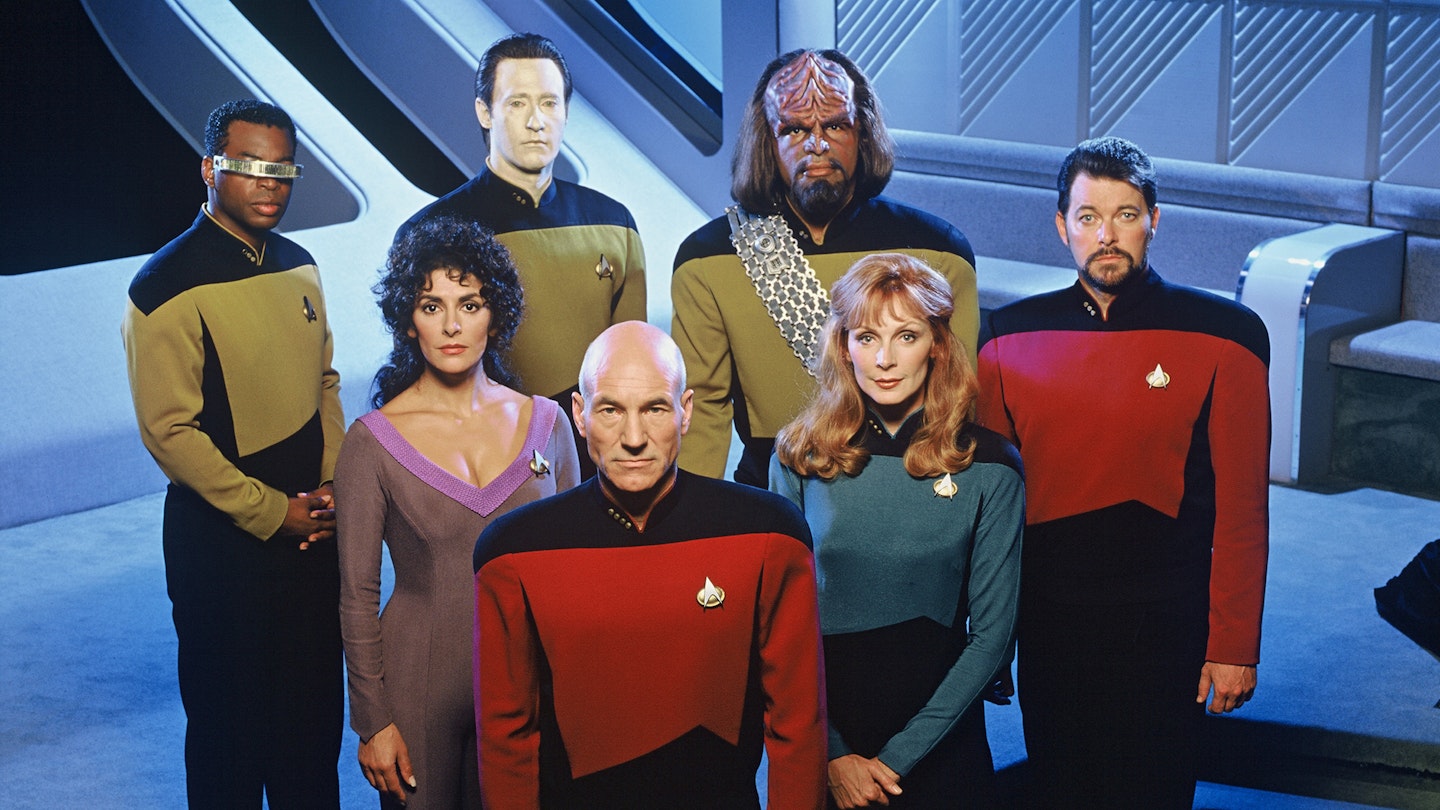
What kind of fools would attempt to take over seven hundred hours of television spread out over five different series, review them and then distill them down to a list of the fifty best episodes? You're looking at them. What follows is Empire 's breakdown of the best that Star Trek has had to offer over the past half century. Engage!
Here is a list of our favourite Star Trek episodes counting down from the 50th to the number one greatest. So sit back and get comfortable (this may take a while...)
50. Q Pid ( TNG )
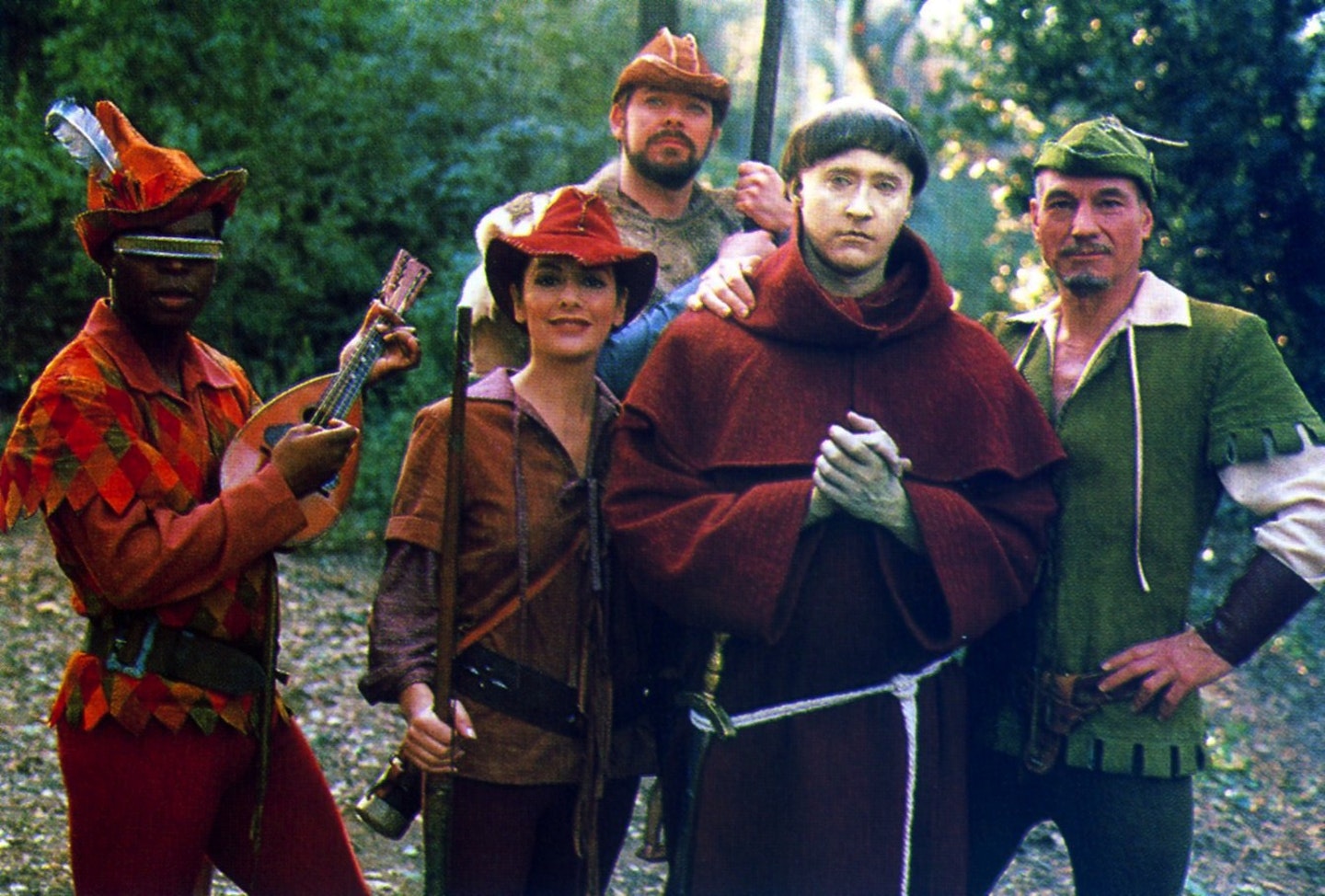
John de Lancie's Q is a recurring pain in the arse for the crew of the Enterprise, but no one can say he isn't any fun. This time, when Picard rejects his offer to help mend some fences with a lady friend, he transports a number of the crew to Sherwood Forest, planting them straight into a Robin Hood adventure. Standout moment? An indignant Worf proclaiming, "I am not a merry man!"
49. Lower Decks ( TNG )
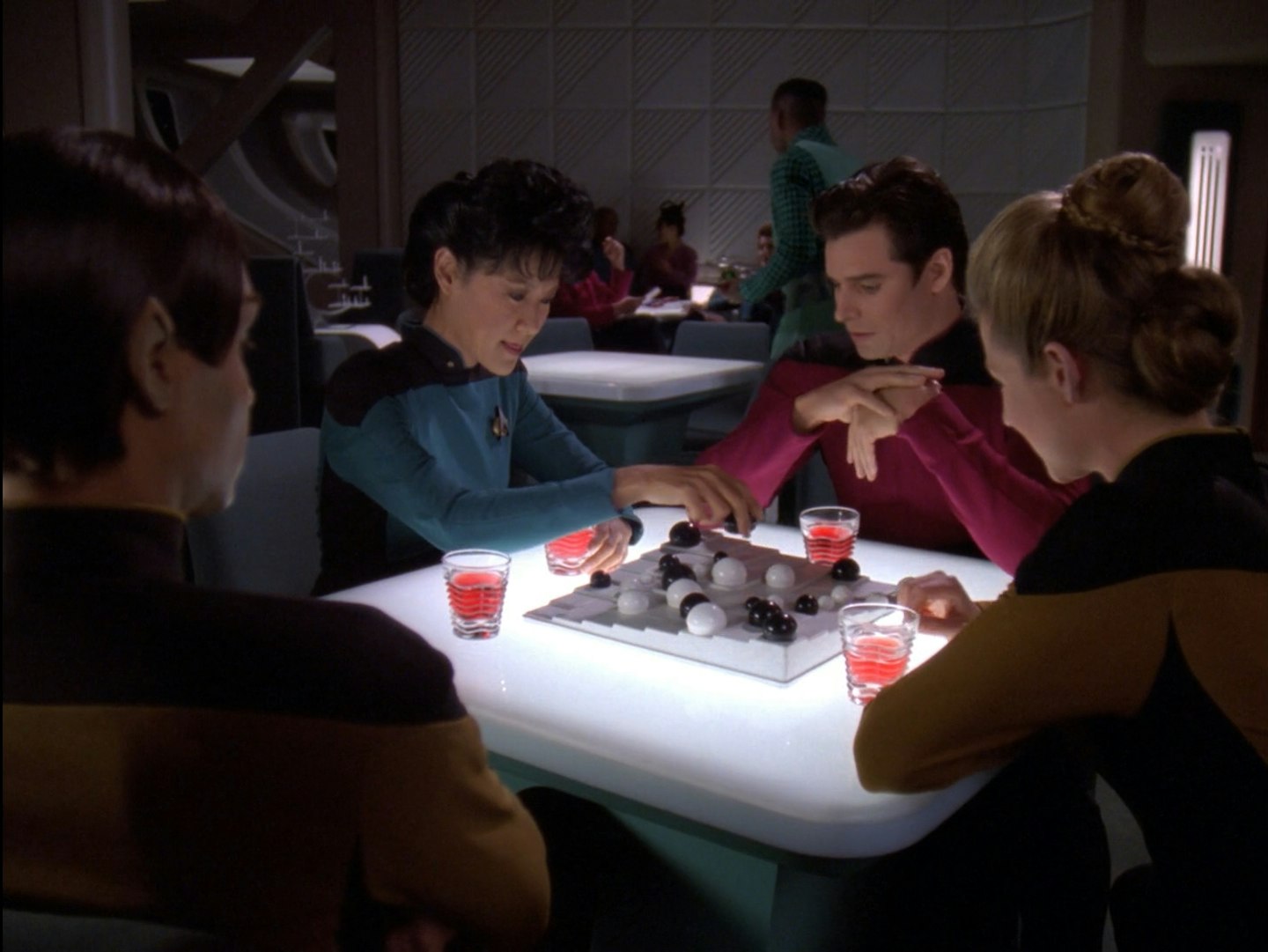
As The Next Generation was winding down its television run, the writers decided to shift gears and focus on a group of junior officers, following them as they interact with the primary crew while vying for promotions. An entirely different, very welcome change of pace that proves hugely enjoyable – despite a somewhat downbeat ending.
48. Endgame ( VOY )
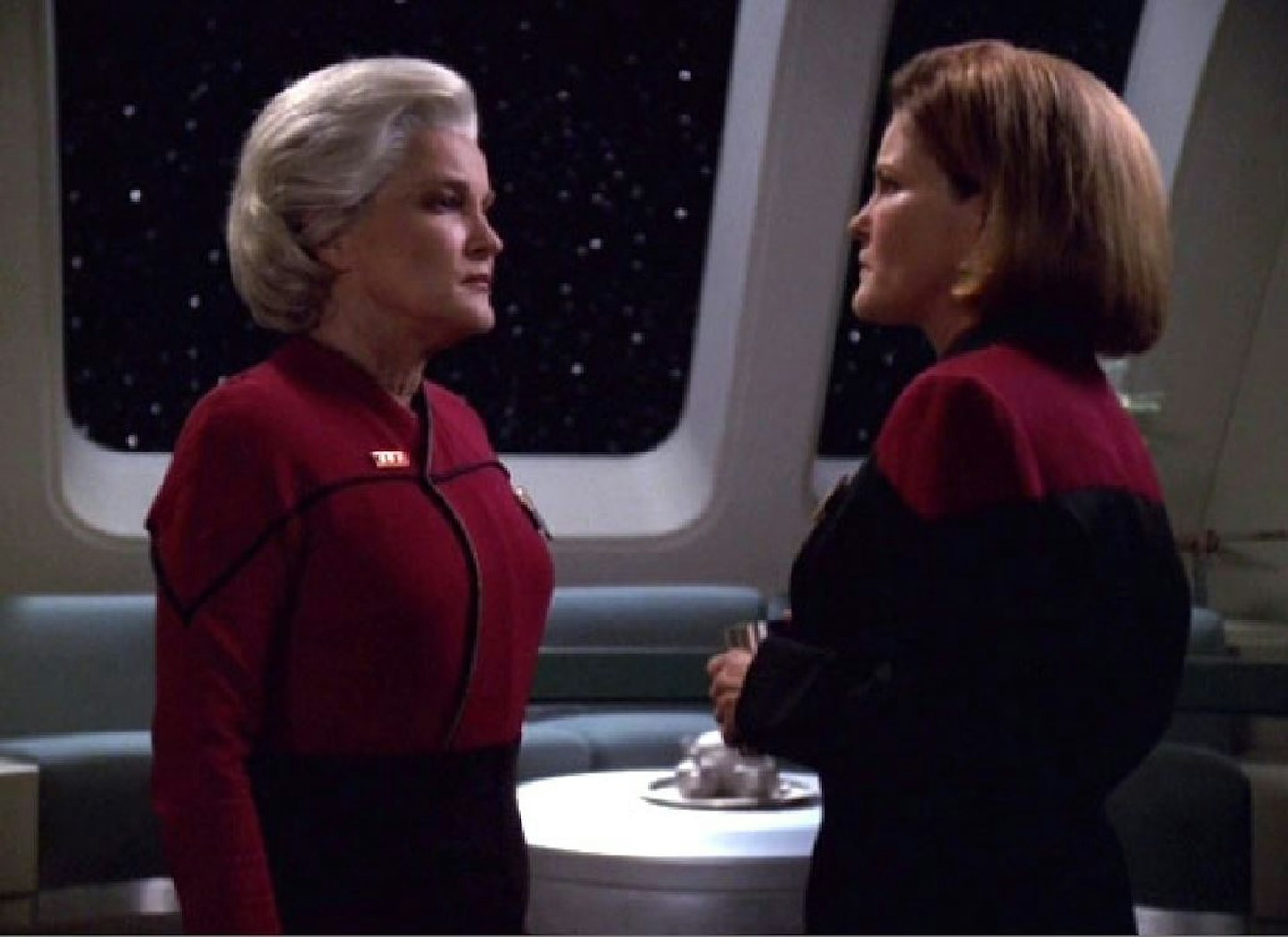
Cut through all the technobabble and what you're left with is an intriguing tale of an older Admiral Janeway, 10 years after Voyager's return home, deciding to go back in time to help her younger self defeat the Borg and get her crew home from the Delta Quadrant before history unfolds the same way. It's no All Good Things , but it wraps things up well and gives Kate Mulgrew a real chance to shine in dual roles.
47. Hard Time ( DS9 )

In what is a dark take on TNG 's The Inner Light , O'Brien is found guilty of espionage by an alien race that implants the memory of years of harsh imprisonment, which in reality lasted just a few hours. Much of the episode is focused on his trying to readjust to his normal life. A bravura performance by Colm Meaney who sells the trauma spectacularly.
46. In A Mirror Darkly ( ENT )
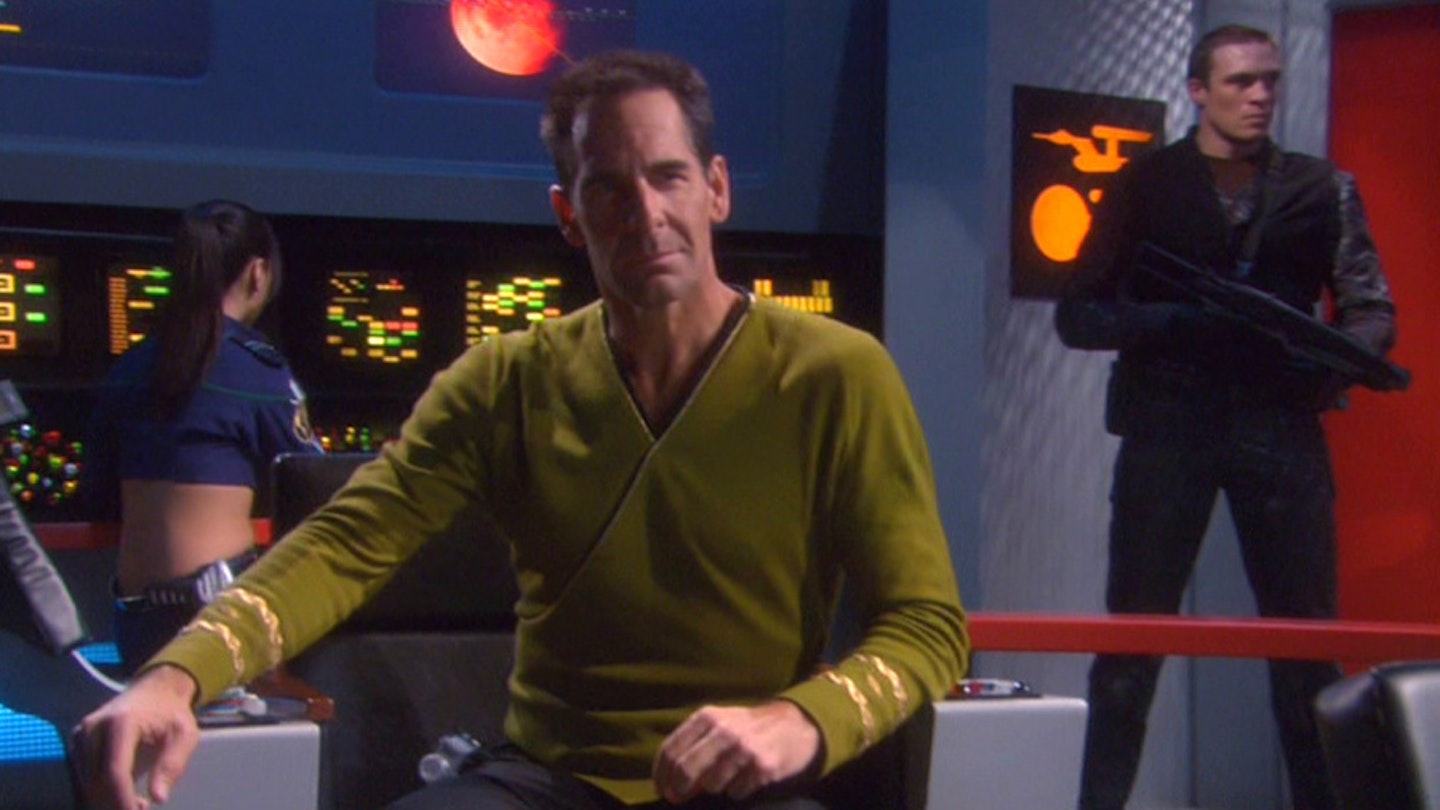
Oh, Enterprise , why did you wait so long to live up to your own potential? This episode from the final season takes place in the Mirror Universe, serving as a sequel to season three of the original series' The Tholian Web and a prequel to that show's Mirror, Mirror. Imaginative and most of all fun, it's just unfortunate that executive producer Manny Coto couldn't tie the show further into the events of the '60s series.
45. Sacrifice Of Angels ( DS9 )
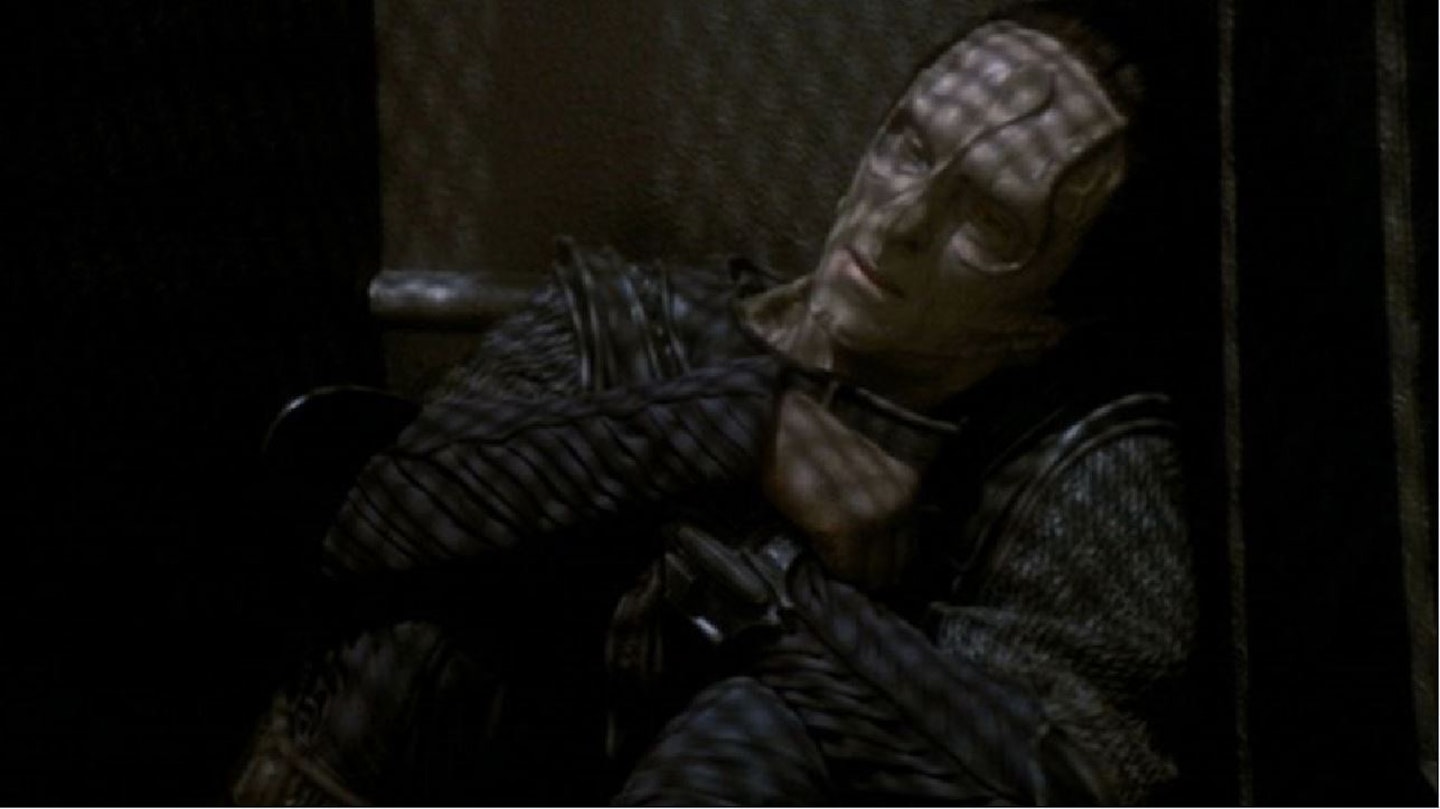
War brings a price, and the price paid on Deep Space Nine is very real. The conclusion of a six-episode arc opening season six, it's all about Sisko and his people reclaiming DS9 from the Cardassian/Dominion alliance. Tremendous action, espionage and yet another example (collect them all) of the way this series the consistently the best of the entire Trek franchise.
44. Phage ( VOY )
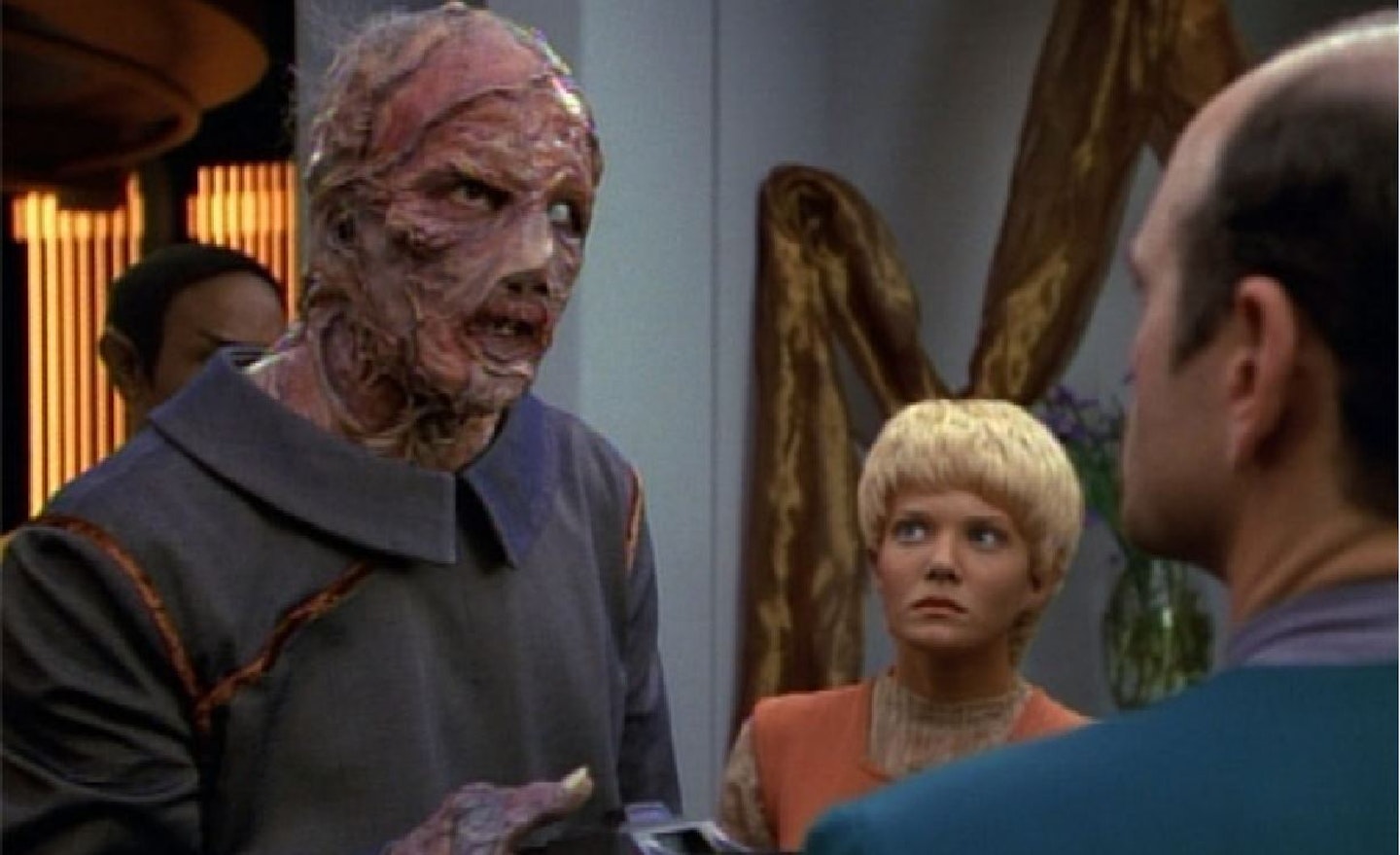
Executive producer Brannon Braga once said that Voyager should be The X-Files of space, and this episode shows it meeting that potential. An alien race in the Delta Quadrant, suffering from an incurable disease, prolongs the life of its people by transporting vital organs out of unwilling donors and transplanting them. It's chilling as hell, yet by the end – in true Star Trek fashion – you somehow end up feeling sympathy for them.
43. Balance Of Terror ( TOS )
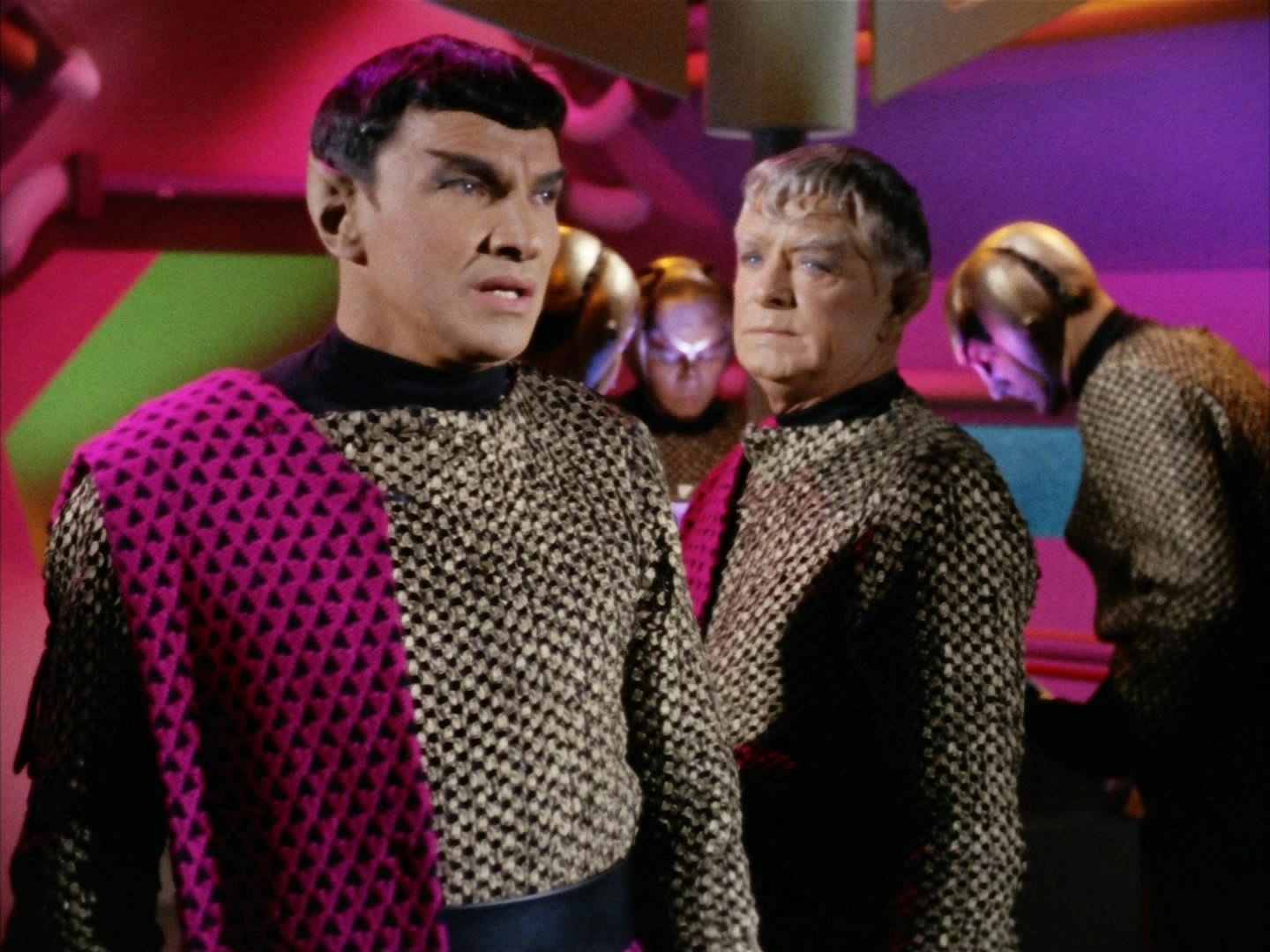
The Federation's (and our) first look at the Romulans in what is essentially a submarine thriller in space. Mark Lenard (who would go on to play Spock's father, Sarek) is the Romulan commander who recognises many of his own traits in Kirk, finding him a worthy adversary. The exploration of bigotry (the Romulans are an offshoot of Vulcans) underpins a piece of television that manages to conjure genuine suspense as one commander attempts to outmaneuvre the other with only one possible outcome.
42. Relics ( TNG )
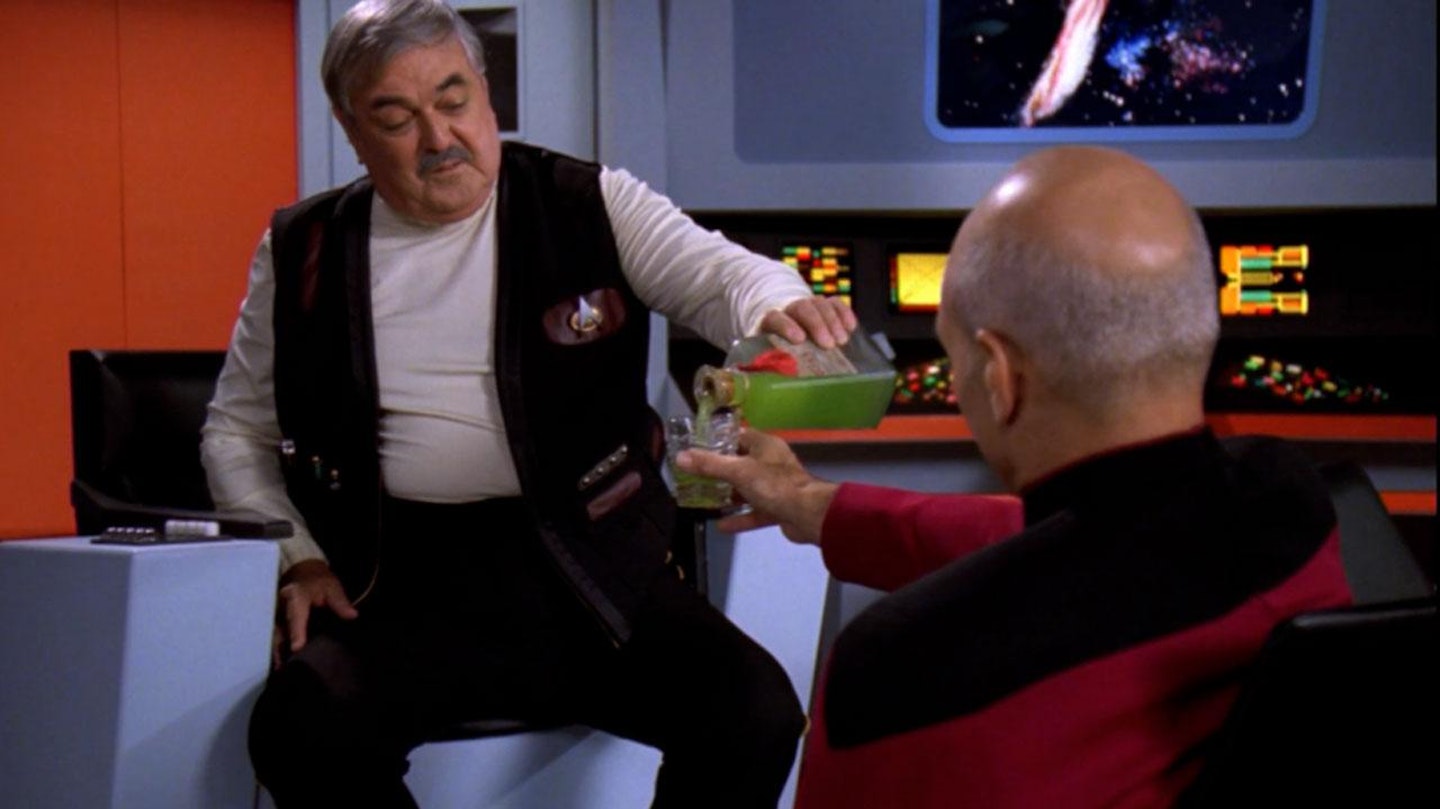
James Doohan reprises his original series role of Scotty in this Next Generation episode that sees Scott being rescued from the transporter of a long-missing transport ship and having to adjust to life in the 24th Century. The focus is strongly on Doohan and Levar Burton's Geordi LaForge, and serves as an effective exploration of ageism and the fight against obsolescence. One of Doohan's finest turns as Scotty, and while it's commonplace now (even in fan films), seeing Picard walk through a recreation of the original '60s bridge on the holodeck is very cool.
41. Arena ( TOS )
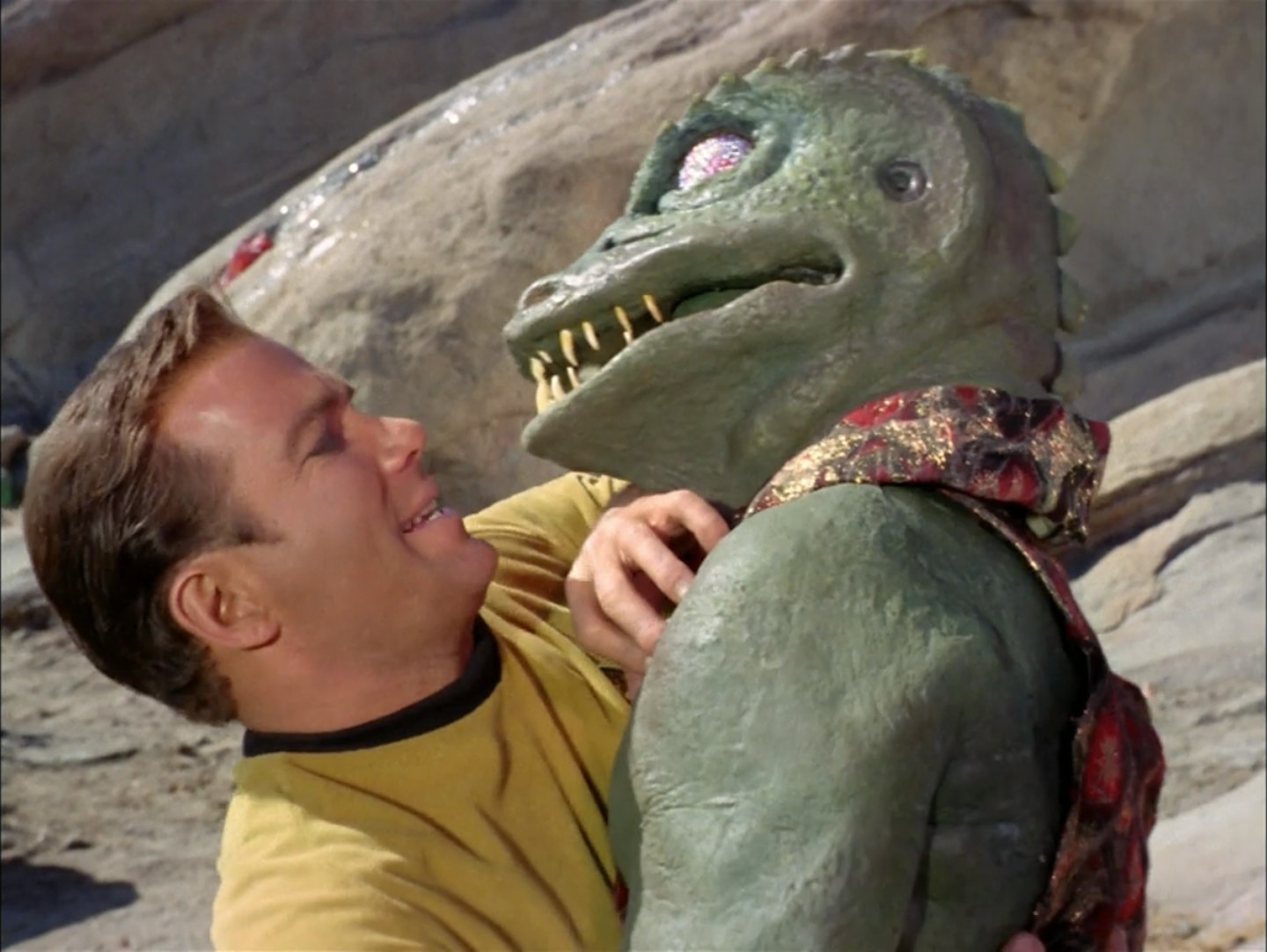
An alien race forces Kirk to fight the lizard-like Gorn, theoretically to the death, but the good captain refuses to carry out the fatal blow. By showing mercy, Kirk demonstrates the superiority of humanity, impressing the aliens and showing how far his race has come. It sounds simple, but the execution (despite the now infamously bad Gorn costume) is first rate.
40. The Offspring ( TNG )
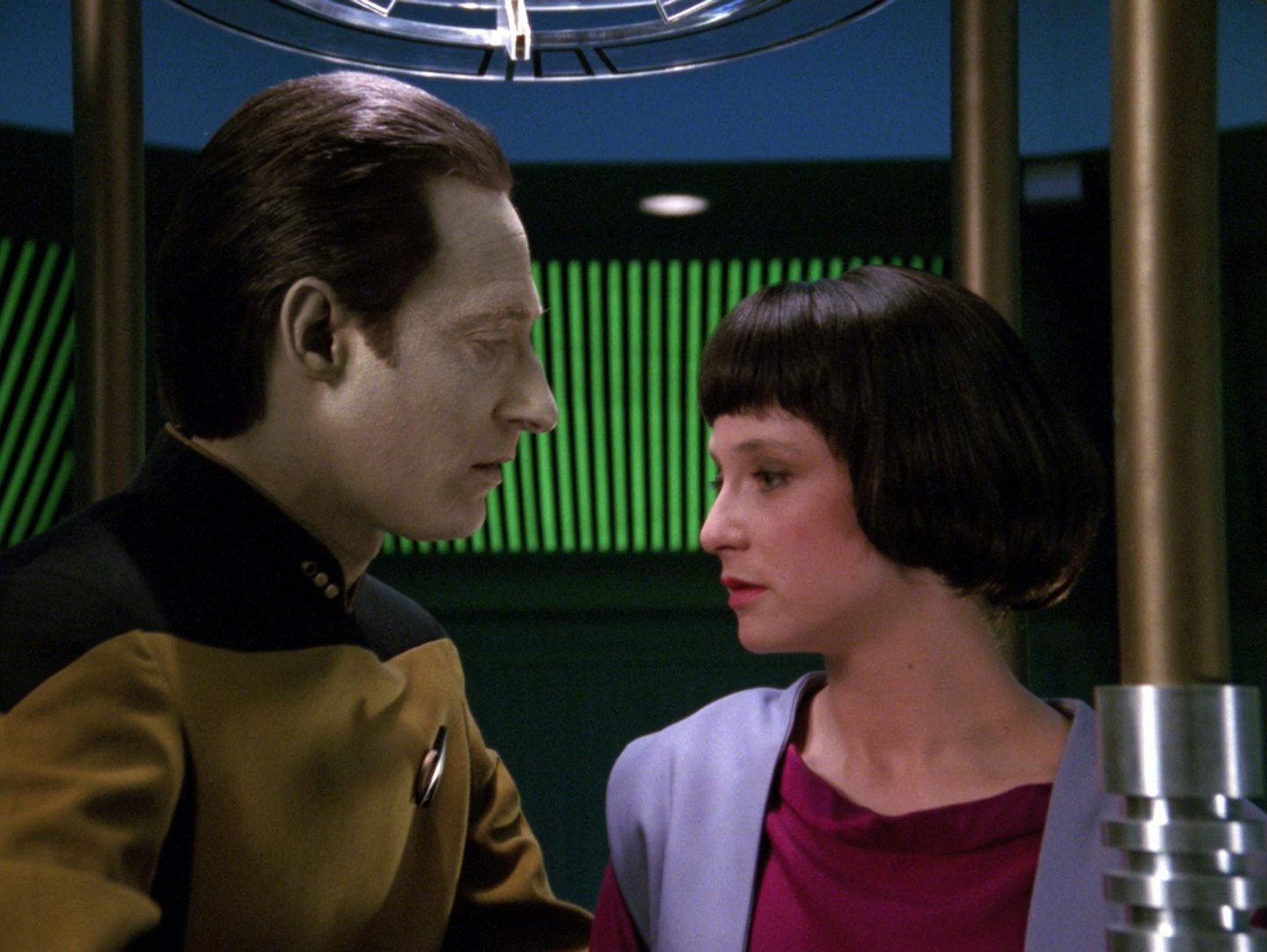
In what could unofficially be viewed as a sequel to the season two TNG episode The Measure Of A Man , Data creates an android "daughter" (Hallie Todd's Lal) and attempts to instruct her in the ways of life. Moving on a number of levels, most notably watching Lal evolve in ways Data could never hope to as he fights to keep her free of Starfleet's science division. Co-star Jonathan Frakes made his directorial debut on this episode, paving the way to his taking on 1996's First Contact .
39. Past Tense ( DS9 )
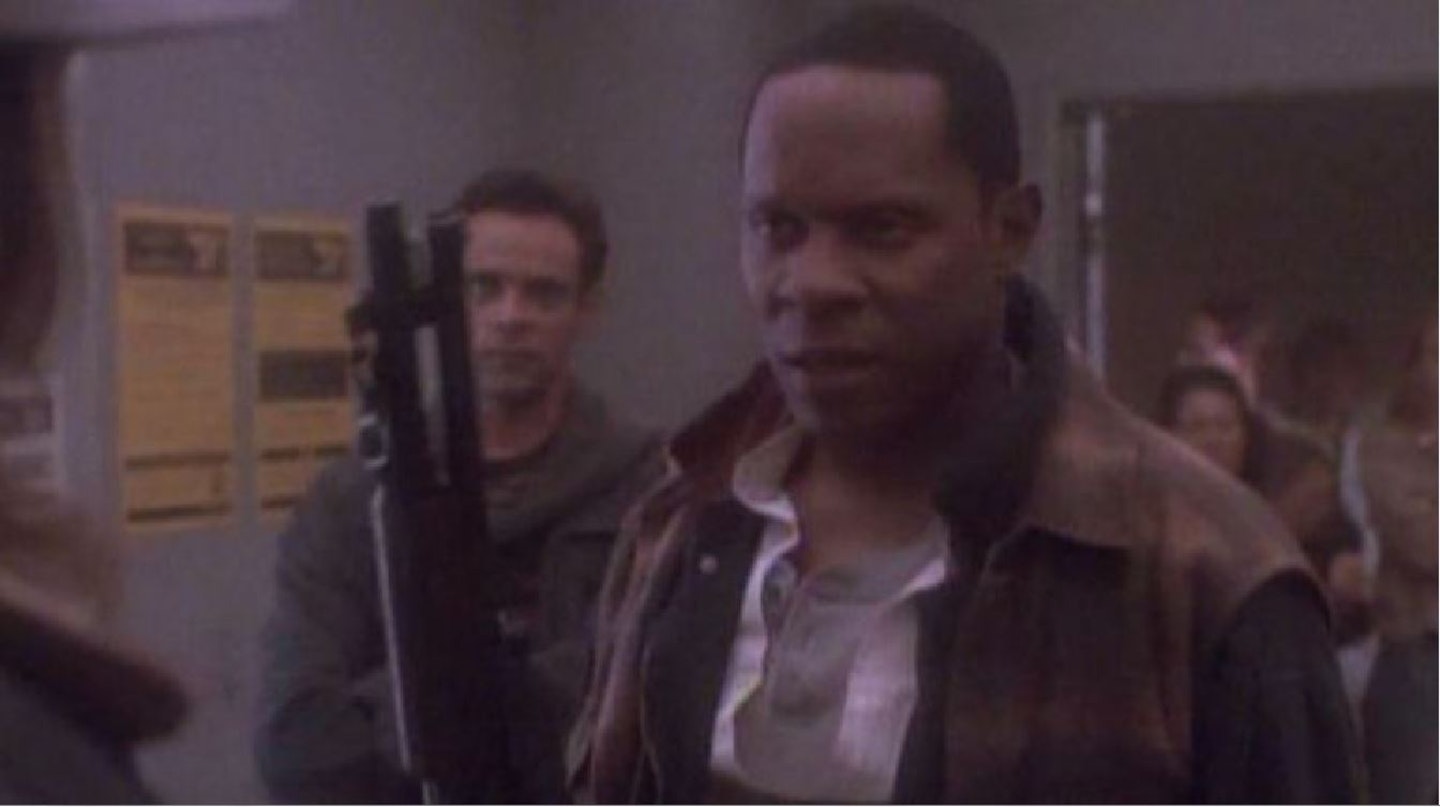
As conceived by Gene Roddenberry, Star Trek was supposed to take modern social issues and examine them through the prism of the future. Embracing that philosophy, the writers of Deep Space Nine took on Los Angeles' growing homeless problem and postulated a frightening future (through DS9 's past) in which the homeless are herded into city sectors and all but abandoned there. Avery Brooks' Sisko finds himself having to step into history to make sure the time stream stays on course.
38. Datalore ( TNG )
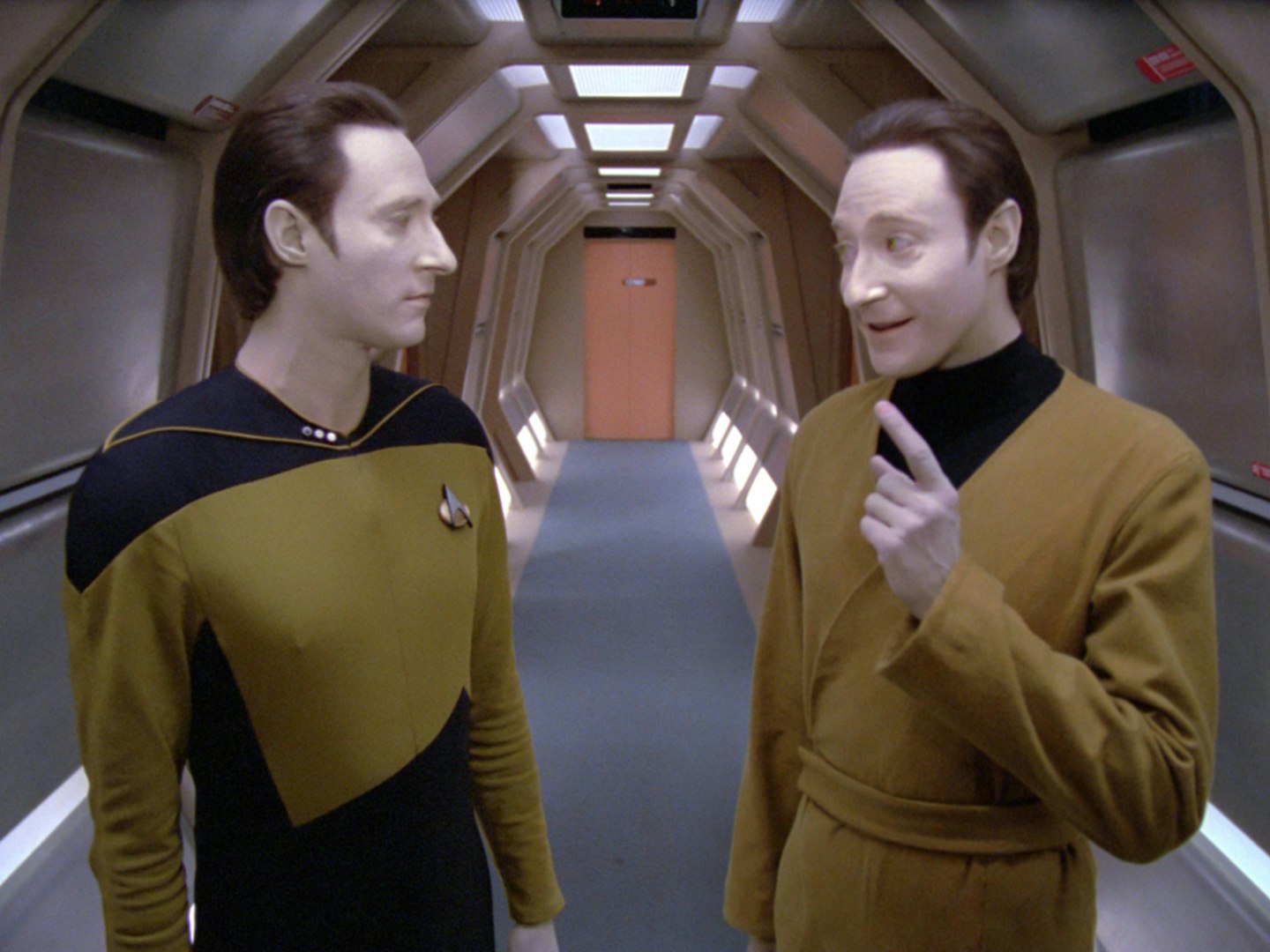
Not everything in season one of The Next Generation felt like a retread of what had boldly gone before. Data's 'brother', an early model named Lore, shows up and Brent Spiner does a stand-up job portraying two very different versions of his character. Not dissimilar to the original's The Enemy Within .... which means that, yes, the plot is something of a retread, but in this case it's a very good retread. Okay?
37. Broken Bow ( ENT )
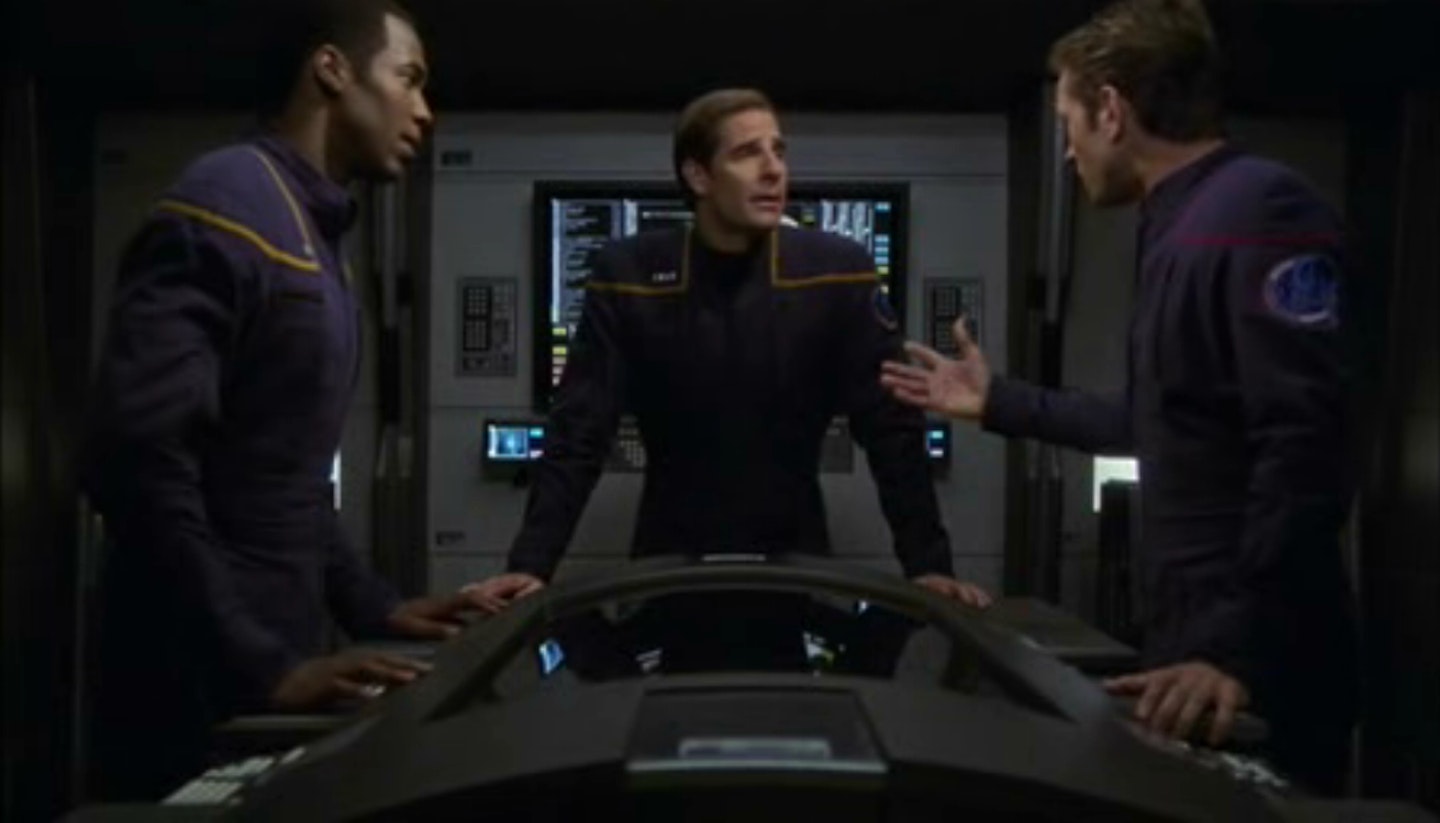
Enterprise comes out of the gate swinging with this two-hour premiere that efficiently sets up the series and establishes that the early stages of Starfleet were very different from what it would ultimately become. The promise of the show is nicely set up (disastrous theme song notwithstanding), but, sadly, it would seldom live unto it.
36. The Andorian Incident ( ENT )
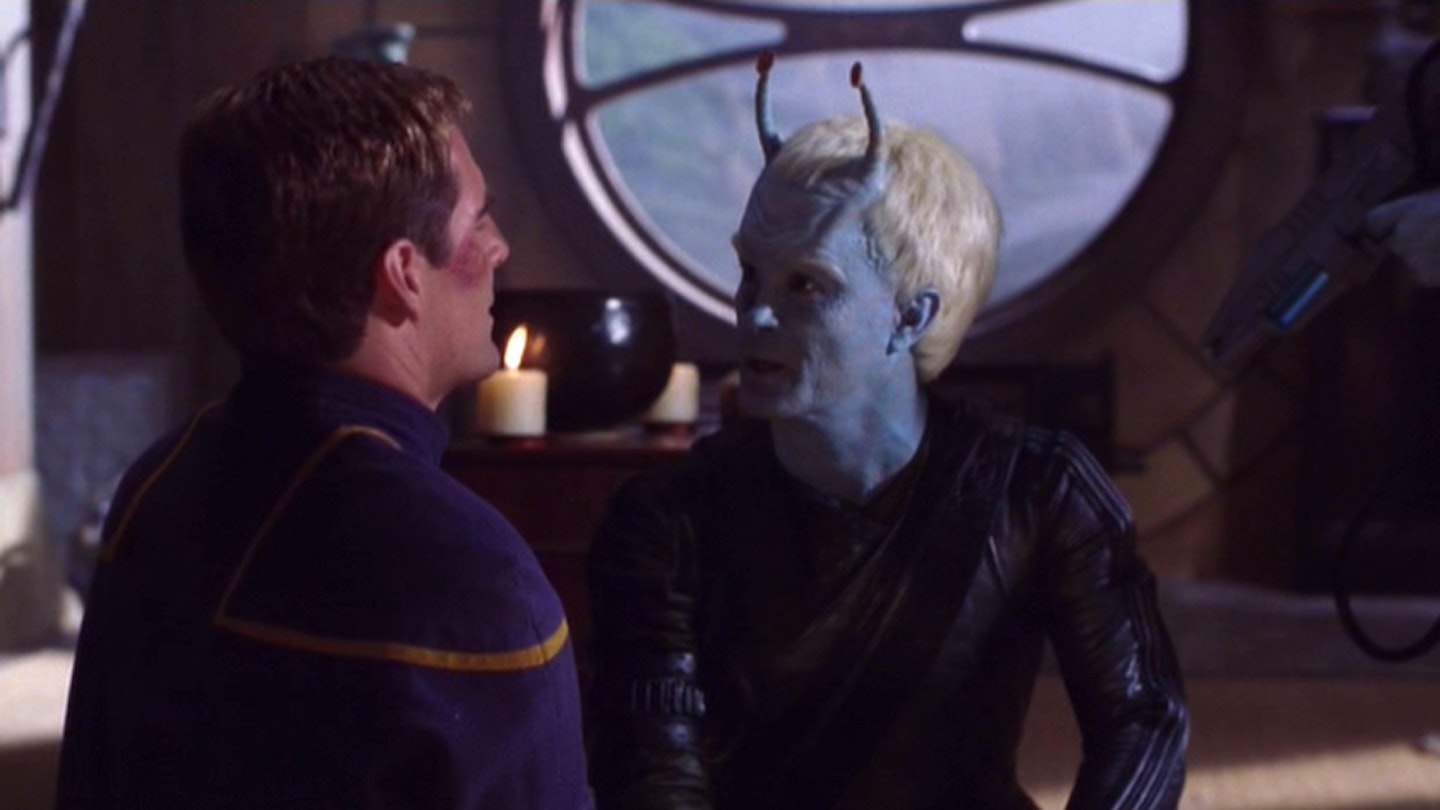
The blue-skinned Andorians return for the first time since the original series and score in a big way. The plot – about a secret Vulcan plot against them – is interesting, but what crackles is the instant chemistry between Jeffrey Combs' (Weyoun on DS9 ) Shran and Scott Bakula's Captain Archer. It's a relationship that would serve Enterprise well for many episodes to come.
35. Little Green Men ( DS9 )
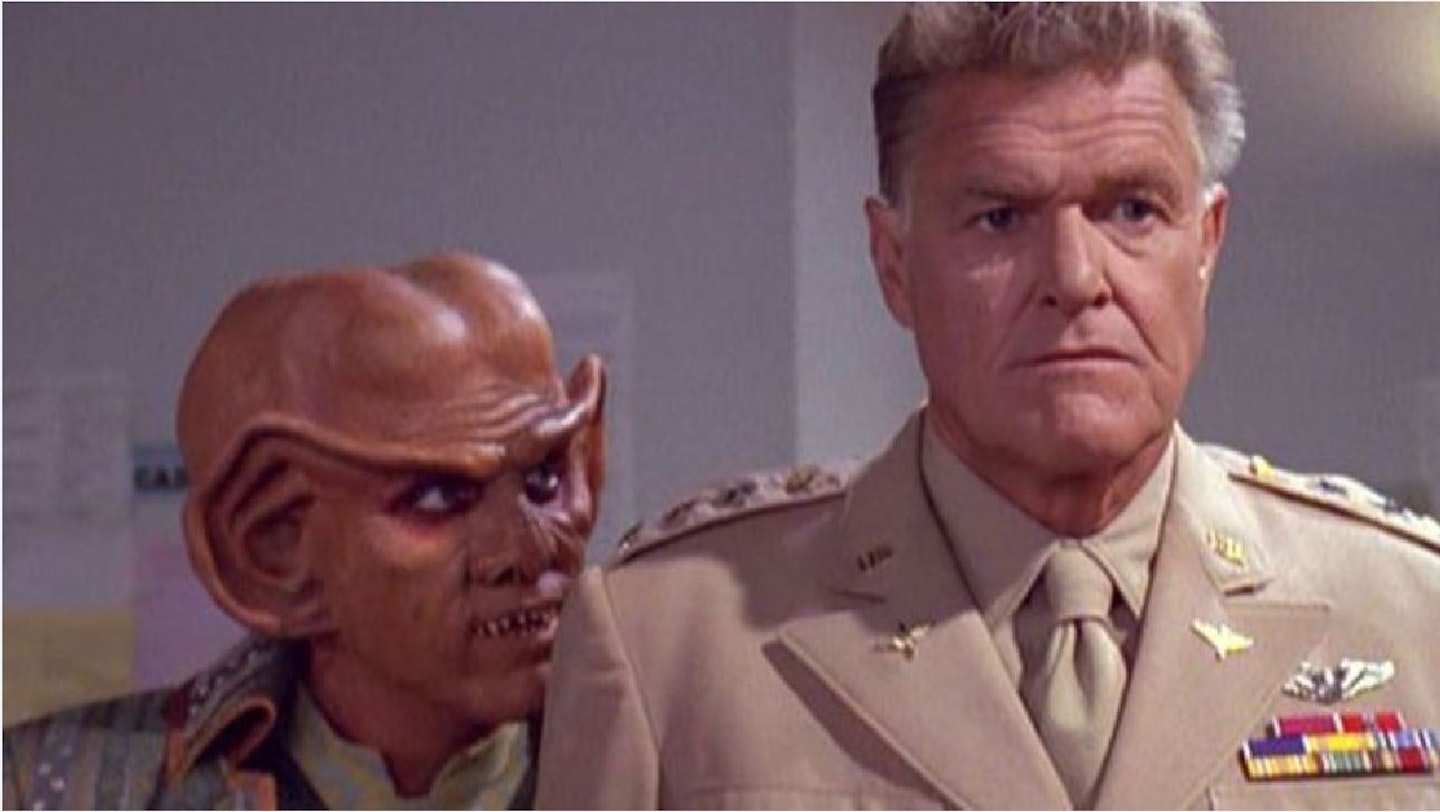
Now we know what went on in Roswell, New Mexico in 1947: A trio of Ferengi and a shapeshifter crash-landed in the desert and threw members of the US government into disarray. Deep Space Nine goes full-out comedy in what is this series' equivalent of The Trouble With Tribbles (aside from the episode that actually re-visits the Tribble episode, that is, but more on that later).
34. I, Borg ( TNG )
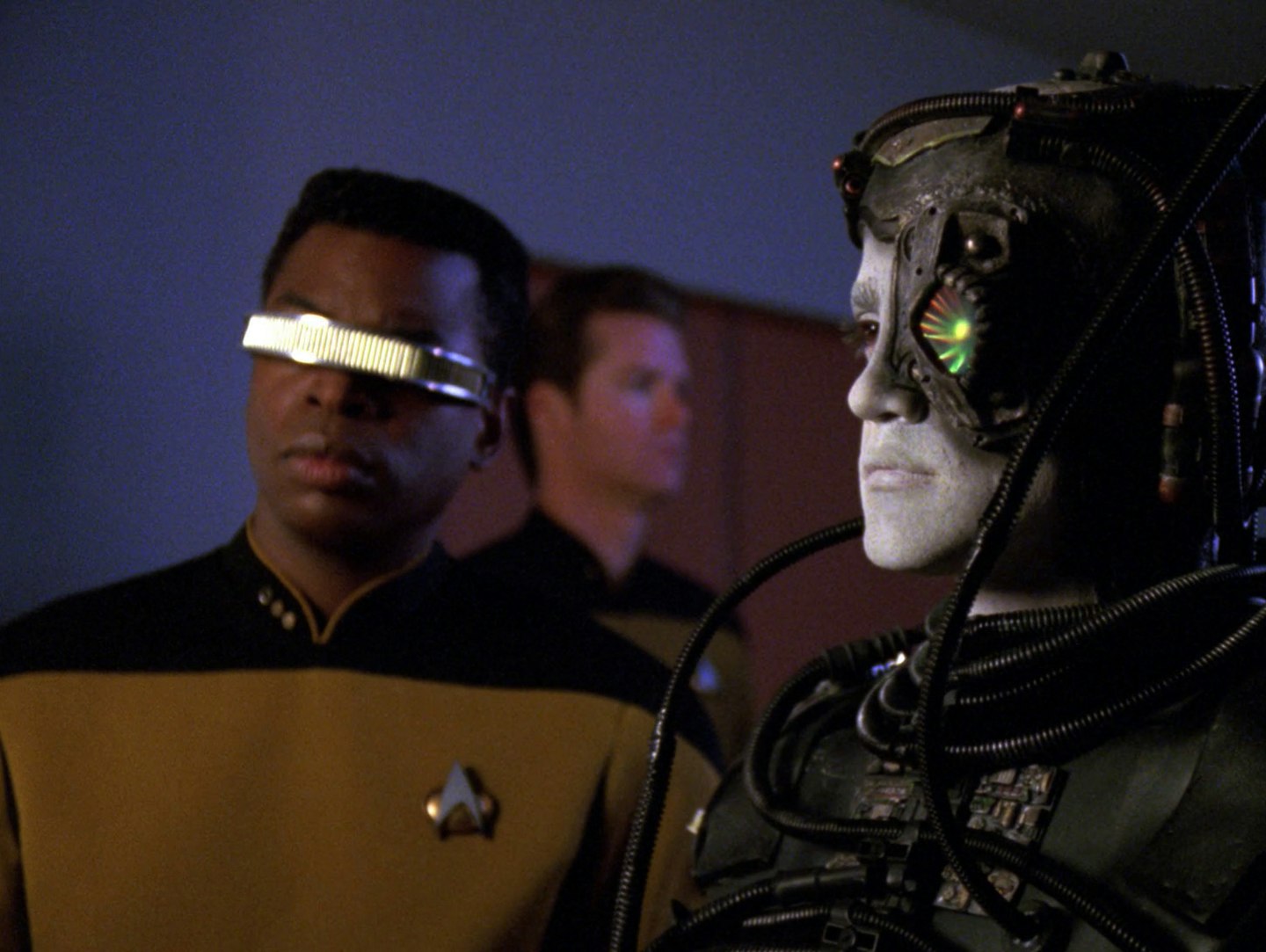
When a member of the Borg, eventually given the name Hugh, breaks away from the collective, it raises issues of whether or not genocide (to be accomplished by infecting Hugh and returning him into the collective) for the greater good is warranted. Seriously, when is genocide a good idea?
33. Duet ( DS9 )
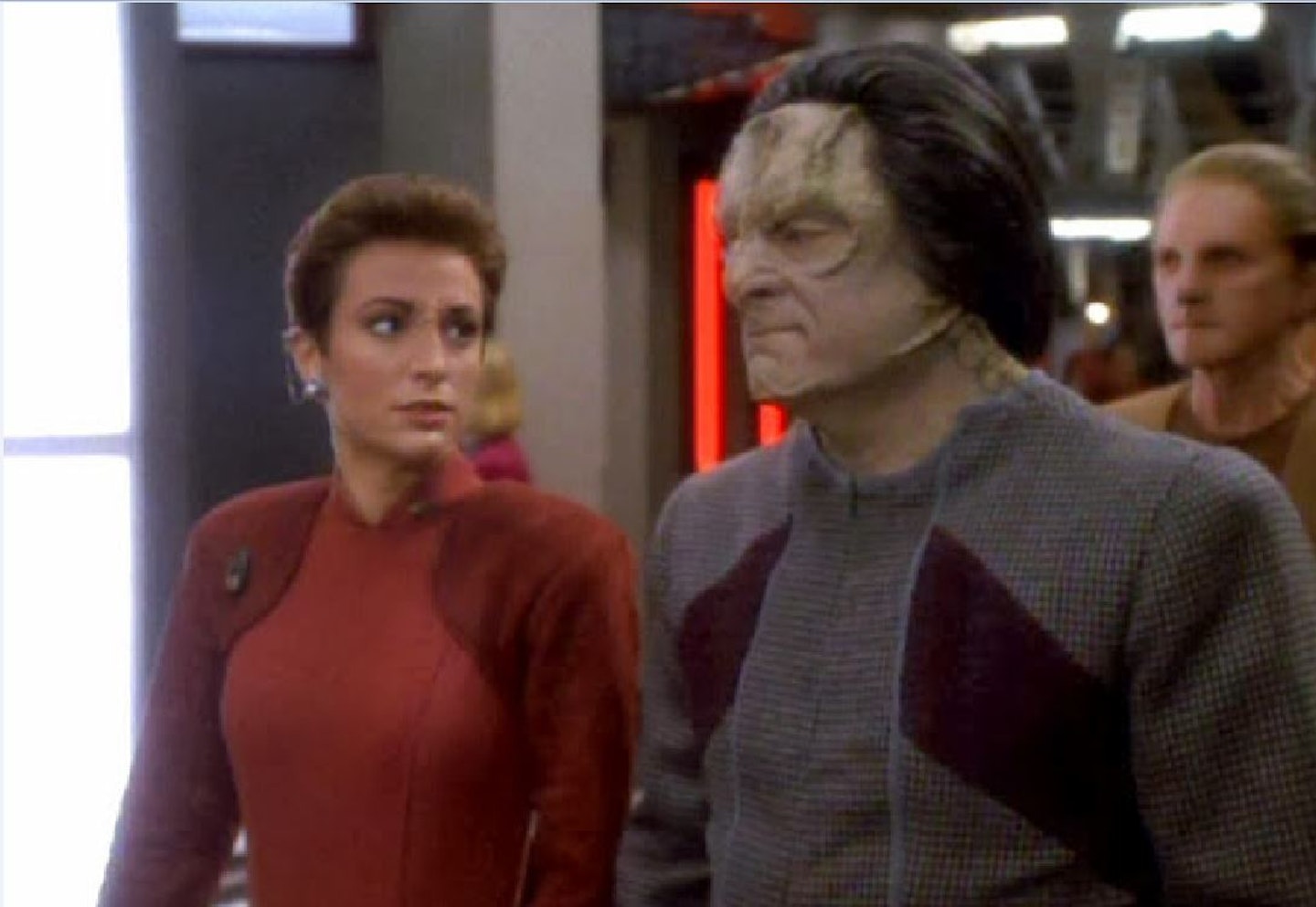
A highlight of Deep Space Nine 's first Season, and essentially a two-person drama between Nana Visitor's Kira Nerys and guest star Harris Yulin as the Cardassian war criminal Marritza. Amazing back and forth moments between the actors, and riveting in the revelations that arise.
32. Time’s Arrow ( TNG )
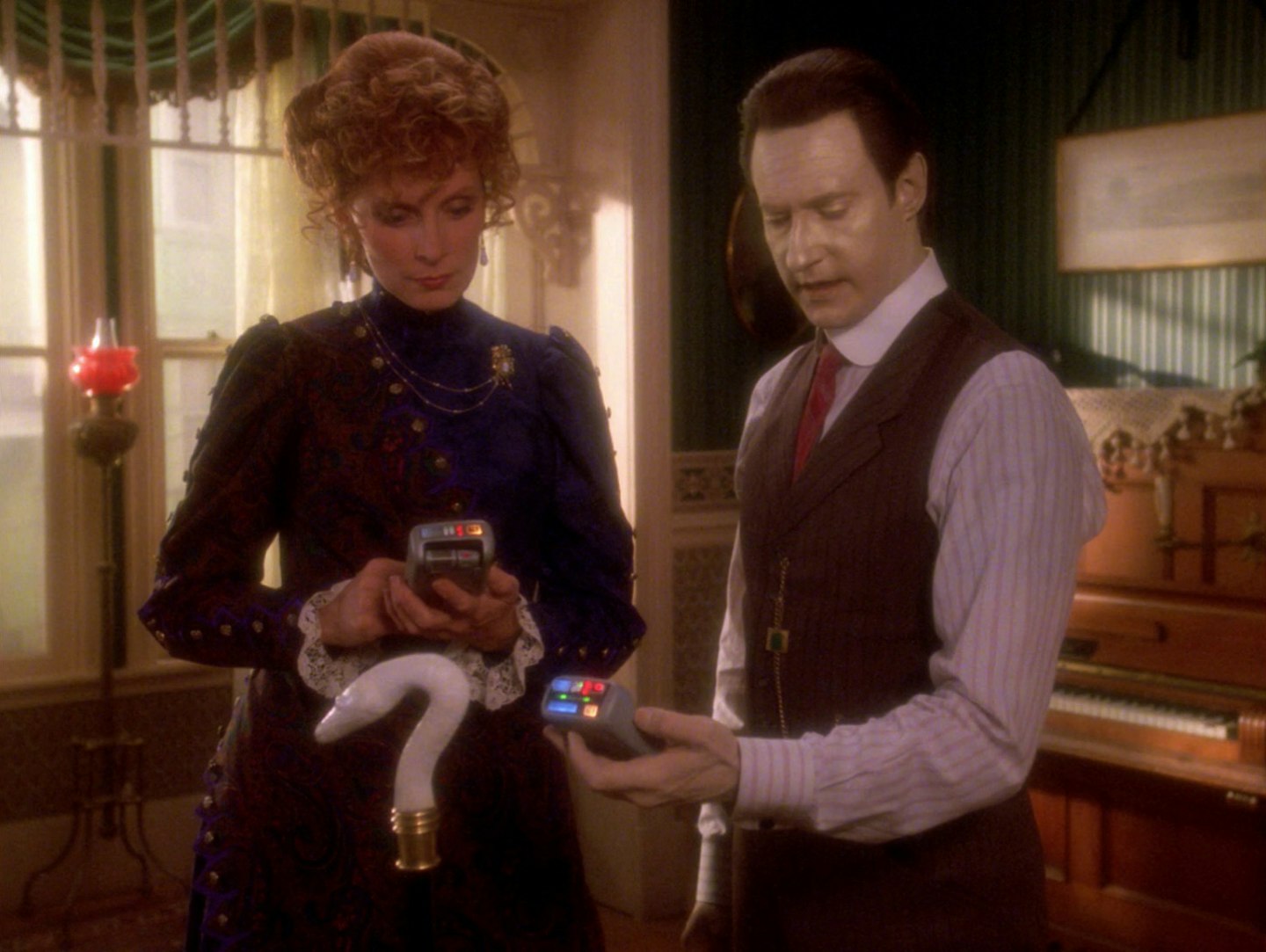
An audacious adventure that begins with the discovery of Data's head among relics from 19th Century San Francisco and goes on to include aliens sucking the life force out of humans in the past, time travel, Whoopi Goldberg's Guinan and Mark Twain(!). It's utterly insane, but imaginative and enormous fun.
31. The Wounded ( TNG )
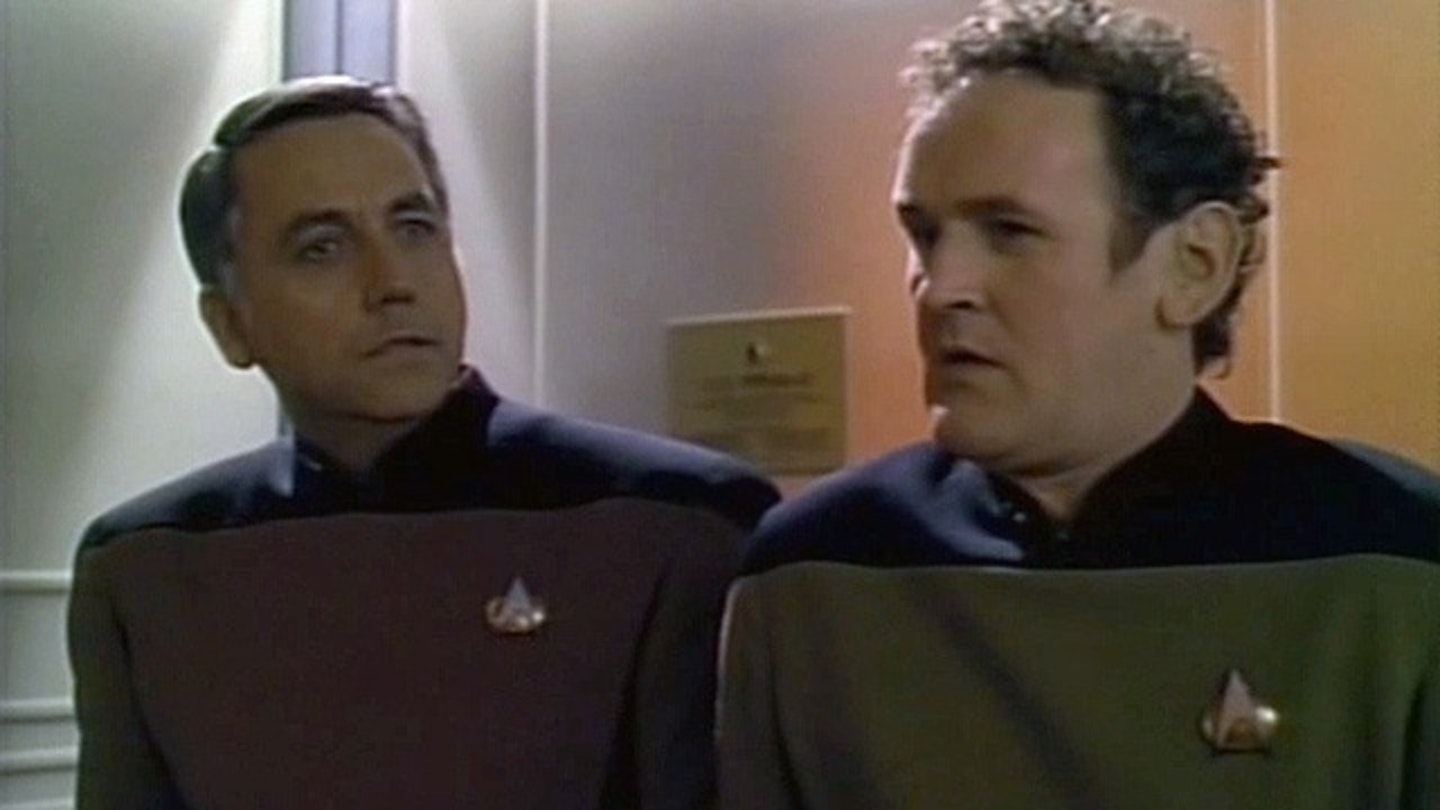
The Next Generation goes a bit Heart Of Darkness as Picard must stop a renegade starship captain from committing acts of war against the Cardassians, despite the fact that his military suspicions about them are true. Great tension as Picard is torn between his duty as a Starfleet officer and the grim reality of the political situation.
30. What You Leave Behind ( DS9 )
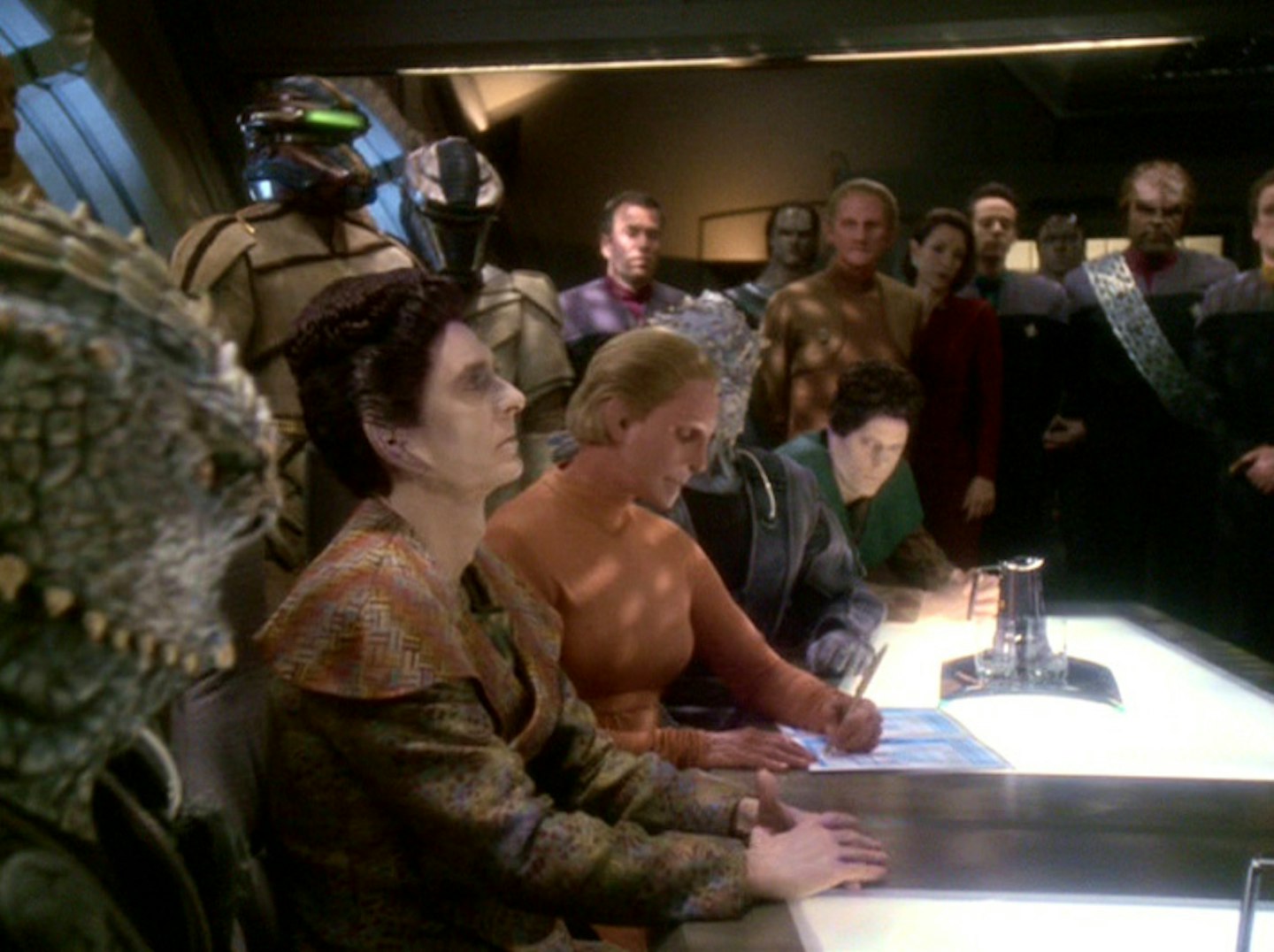
The two-hour series finale of Deep Space Nine . While far from the best series-ender ever, it's an exciting and moving close to a series that still had so much life left in it. Major arcs are brought to an end and entirely new ones are begun (and left dangling), but the most important thing is that the show left on its own terms and in its own way.
29. Unification ( TNG )
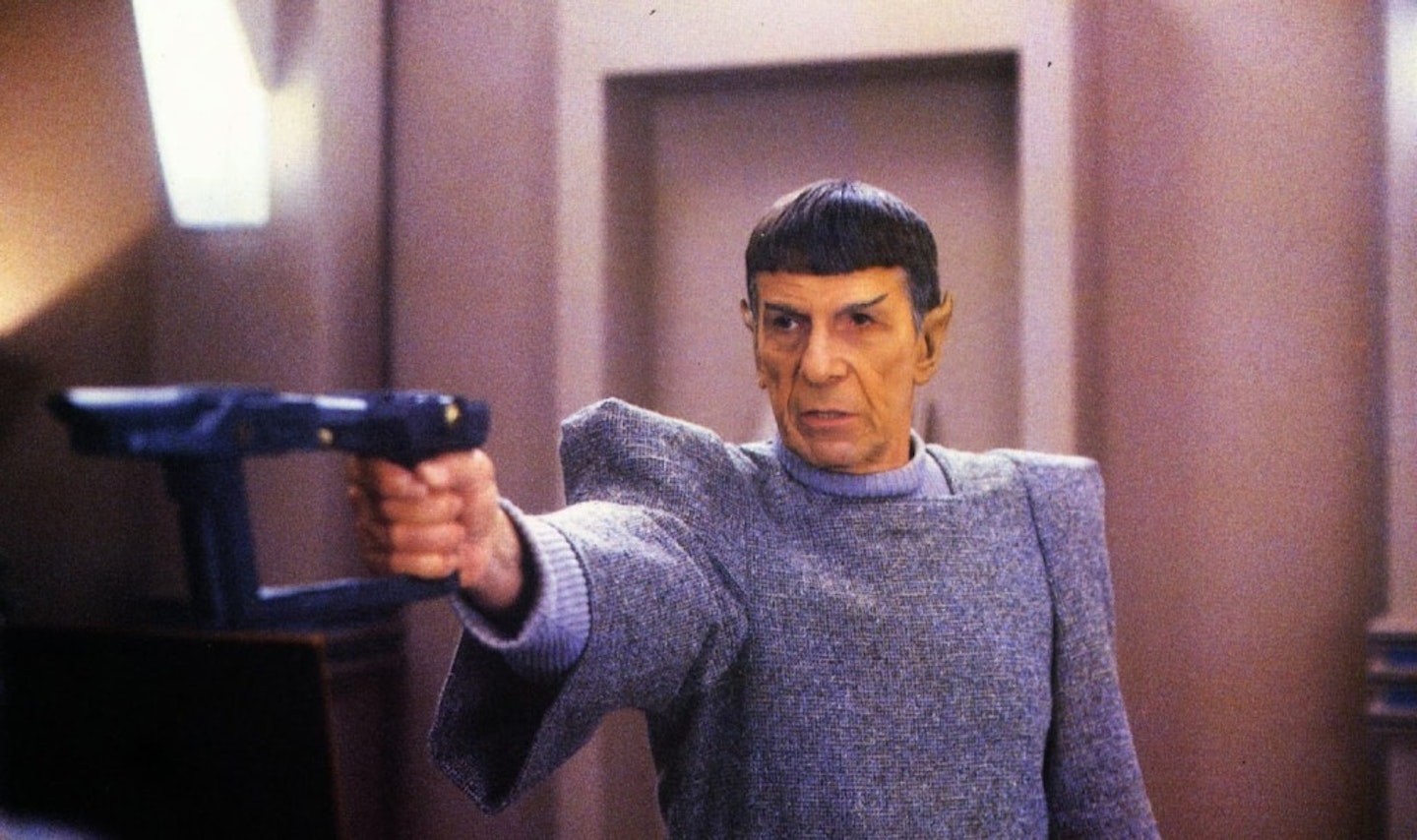
Leonard Nimoy's Spock comes to The Next Generation in what was a tie-in to 1991's Star Trek VI: The Undiscovered Country . The plot, about Spock's political attempts to reunite the Vulcan and Romulan people, is fine, but the joy comes from watching Nimoy interacting with Patrick Stewart's Picard. It is, in a word, fascinating.
28. Home Front/Paradise Lost ( DS9 )
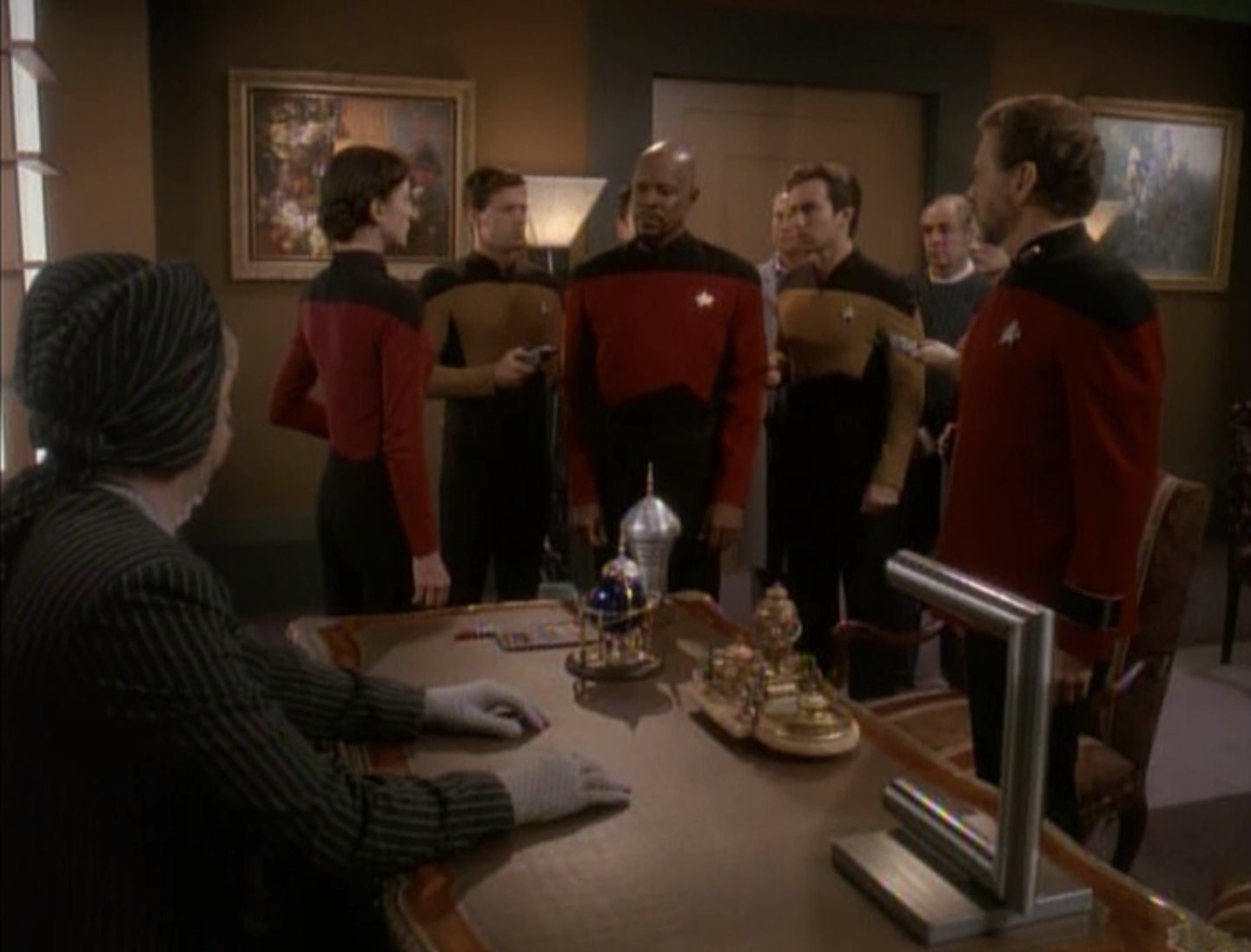
Paranoia about changeling infiltration provides Admiral Leyton with an excuse to manipulate the militarisation of Starfleet against its enemy. It's up to Sisko and O'Brien to reveal the truth and preserve everything the Federation stands for. Not a million miles away from the plot of 2013's Star Trek Into Darkness , only better.
27. For The Uniform ( DS9 )
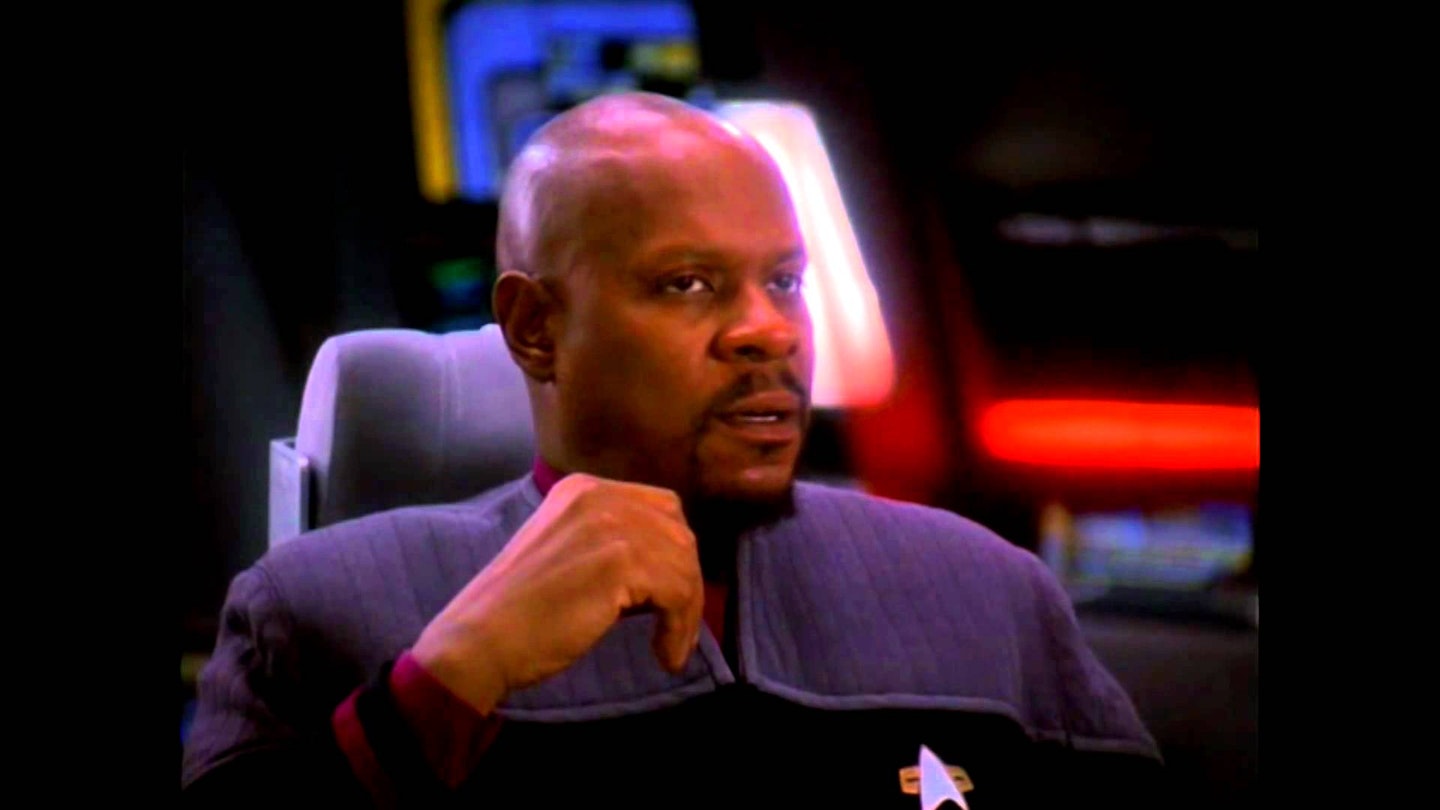
Once again the writers and Avery Brooks prove that Sisko is unlike any other Starfleet captain, as a tense game of galactic cat-and-mouse plays out between him and his former head of security Michael Eddington, who revealed himself to be a traitor and member of the rebel organisation the Maquis.
26. Future Imperfect ( TNG )
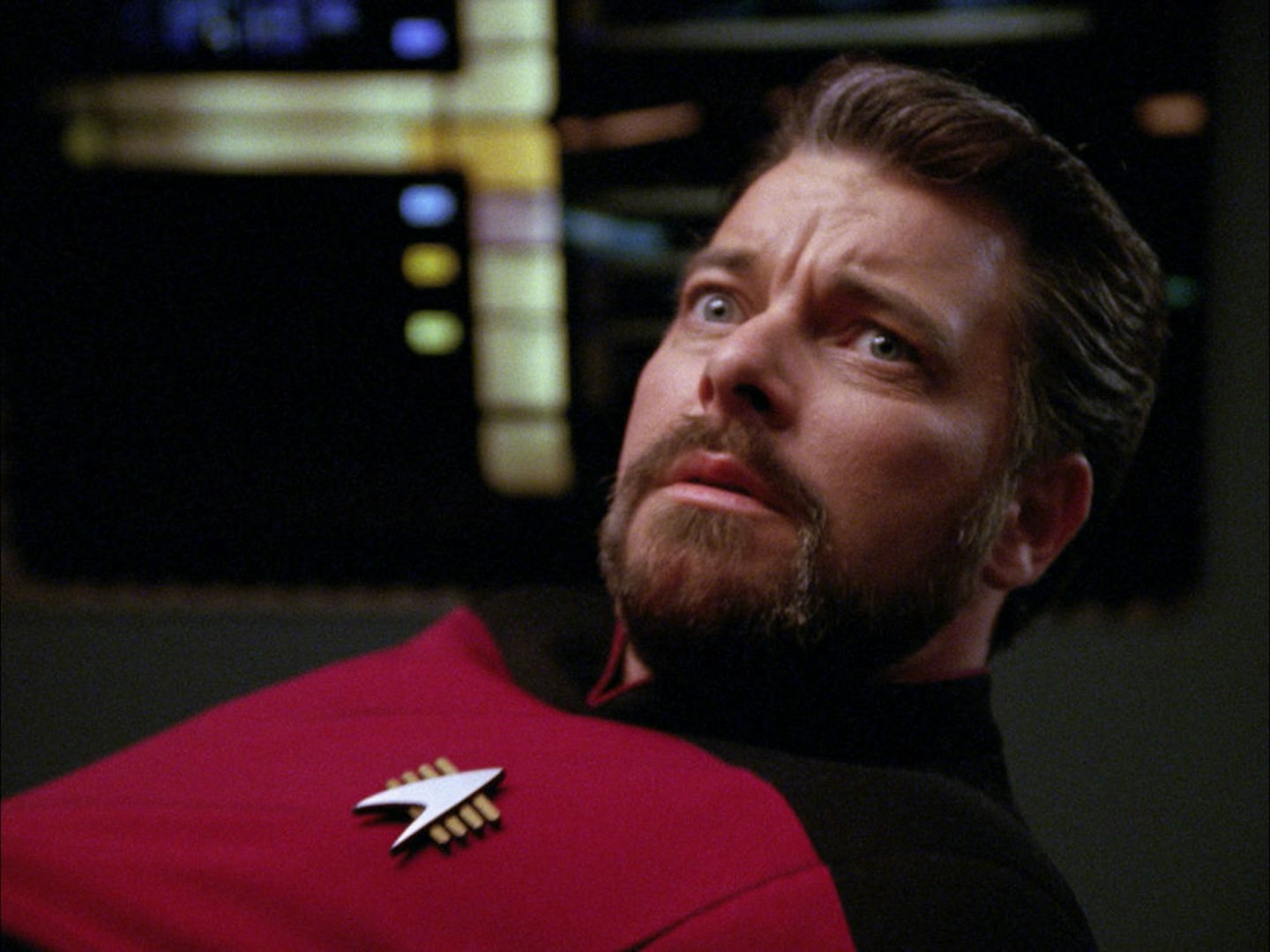
Jonathan Frakes gets to shine as Riker when he awakens sixteen years in the future in what are very different circumstances. Initially trying to adjust to this new life, inconsistencies lead him to try and discover the truth. As it turns out, nothing is as it seems. Certain elements play like an homage to Star Trek 's first pilot, The Cage .
25. Year Of Hell ( VOY )
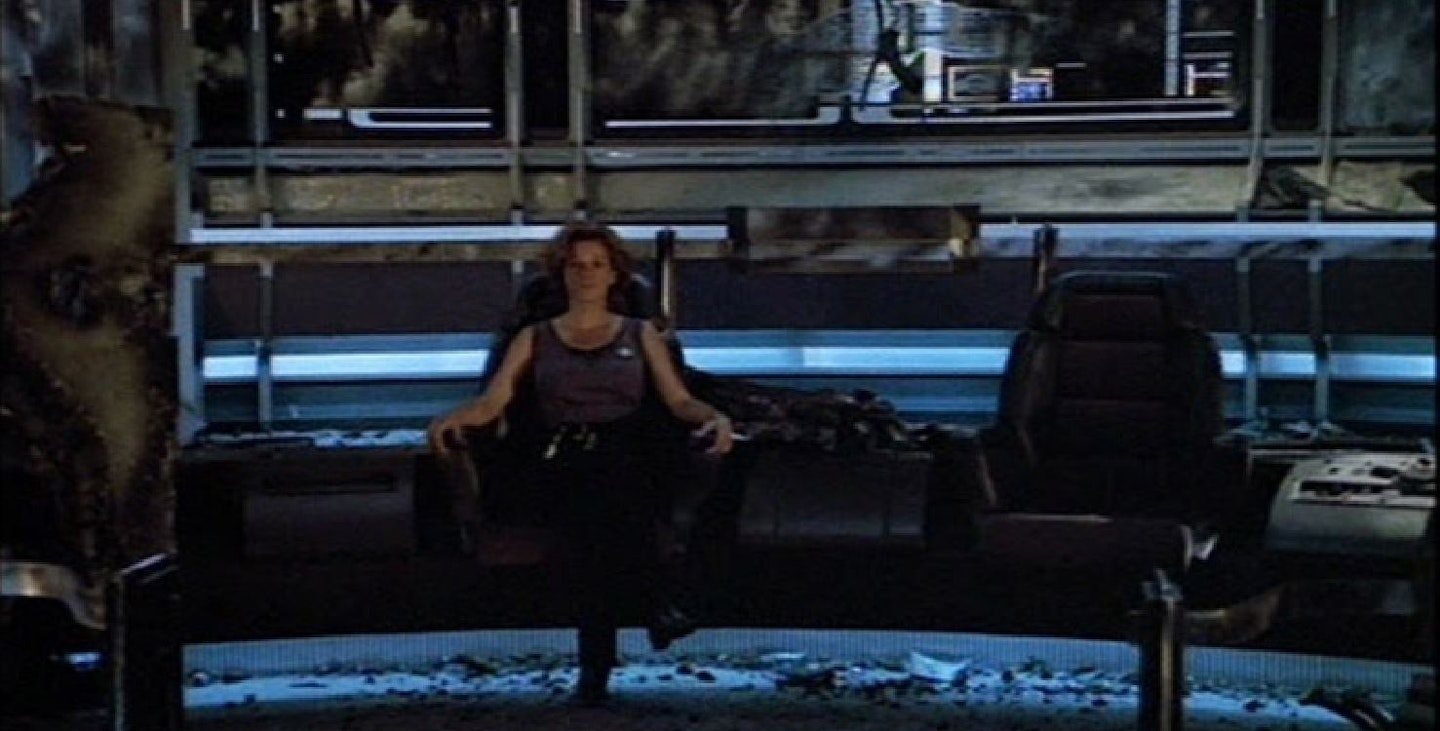
A glimpse into what Voyager could (and should) have been: a gritty two-part adventure that follows the starship over the course of a year where it's constantly fighting for survival, and barely being held together. Disappointingly, It all gets reset at the end, but it's an incredibly dark journey and features a delightfully villainous Kurtwood Smith as Annorax.
24. This Side Of Paradise ( TOS )
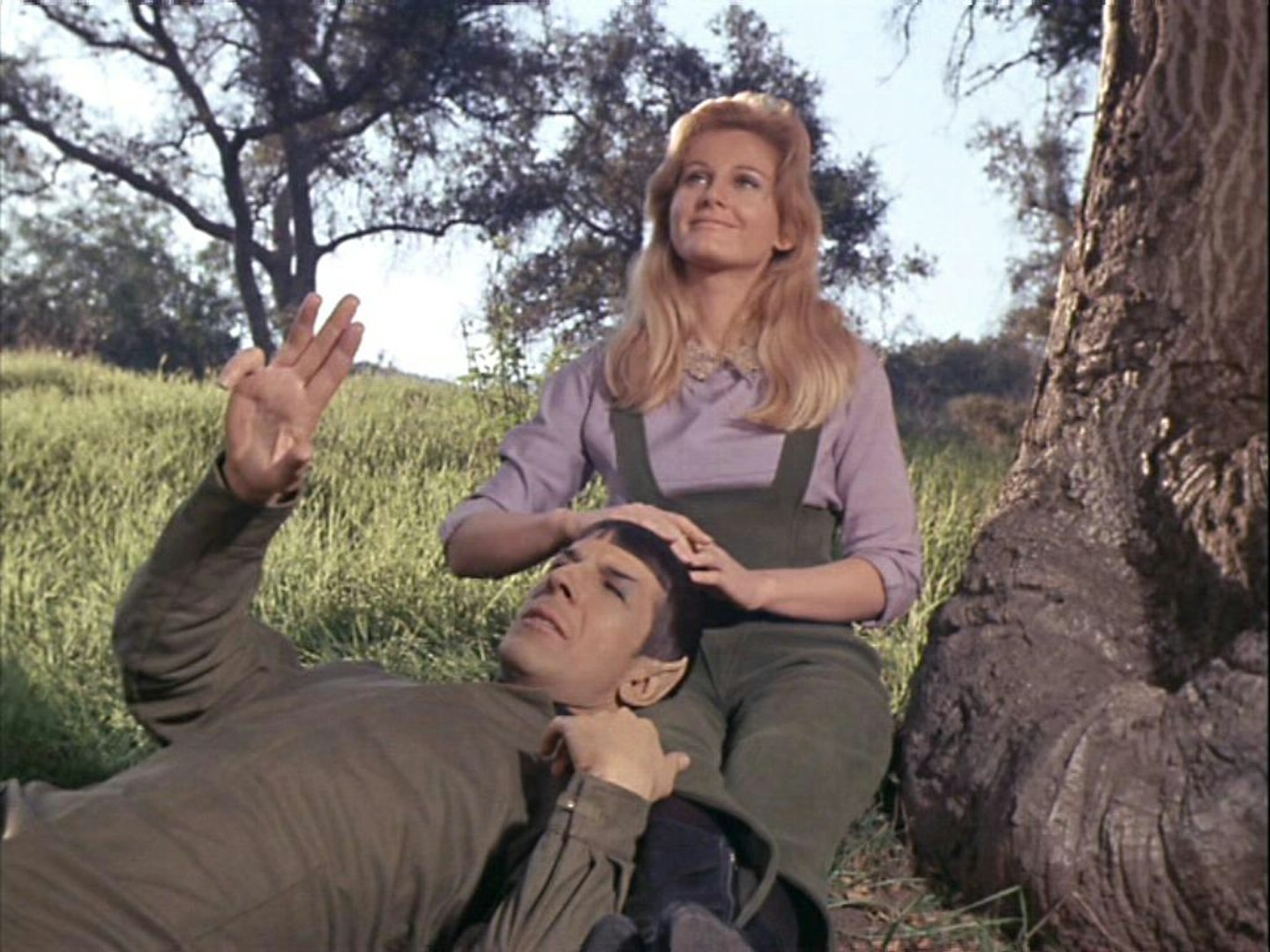
Spock is able to reveal the depths of his emotion thanks to alien spores that have affected most of the crew, who are enjoying life on an idyllic planet. This also serves as a rare love story for Spock, and his final moment, once he's been restored to his logical self, is heartbreaking.
23. Our Man Bashir ( DS9 )
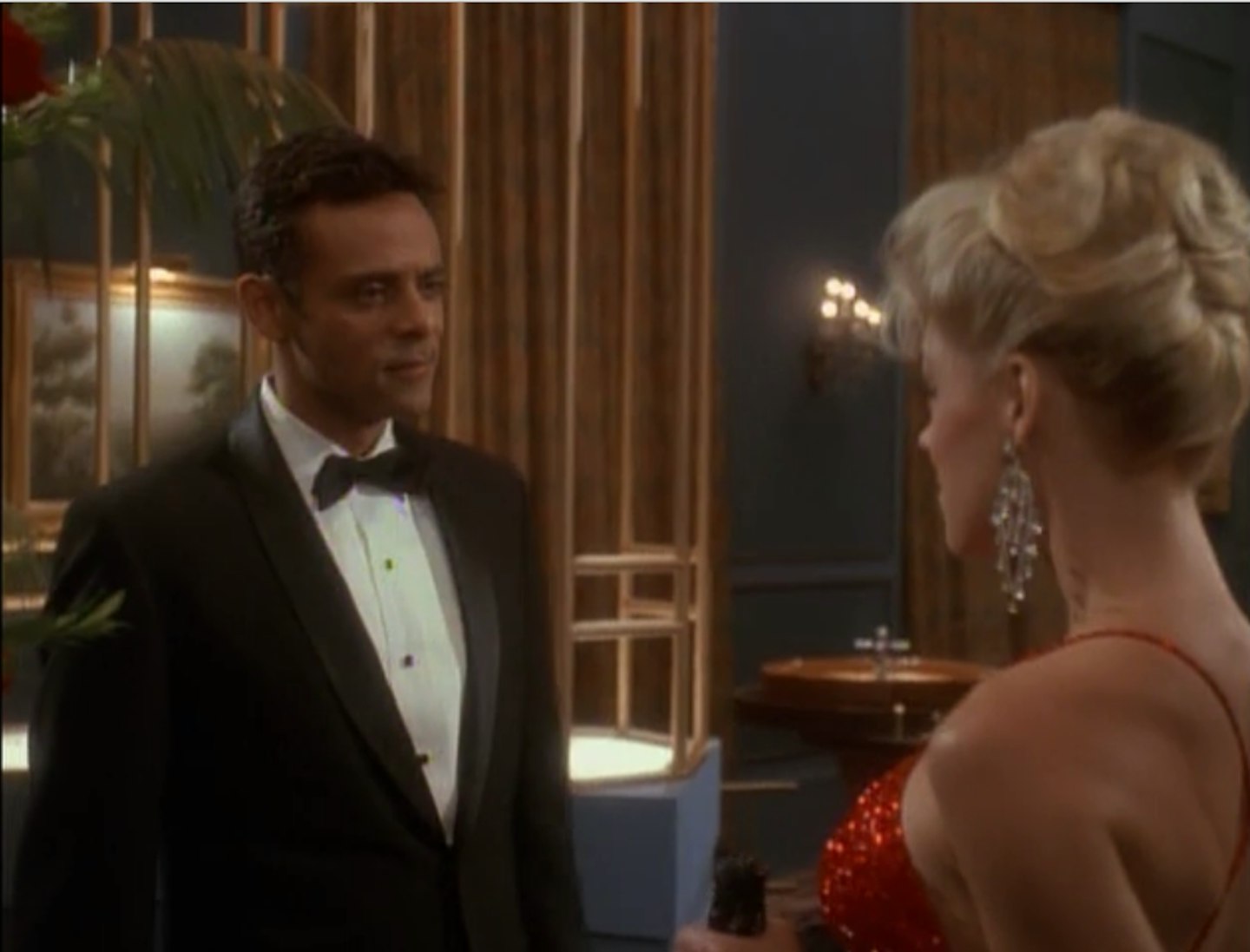
The name's Bashir. Julian Bashir. This homage to early Bond films sees the station's doctor in the role of a suave super spy, playing out a spy story in the form of a holosuite adventure (with very real consequences). The cast clearly had a whale of a time throughout, and with good reason.
22. Way of the Warrior ( DS9 )
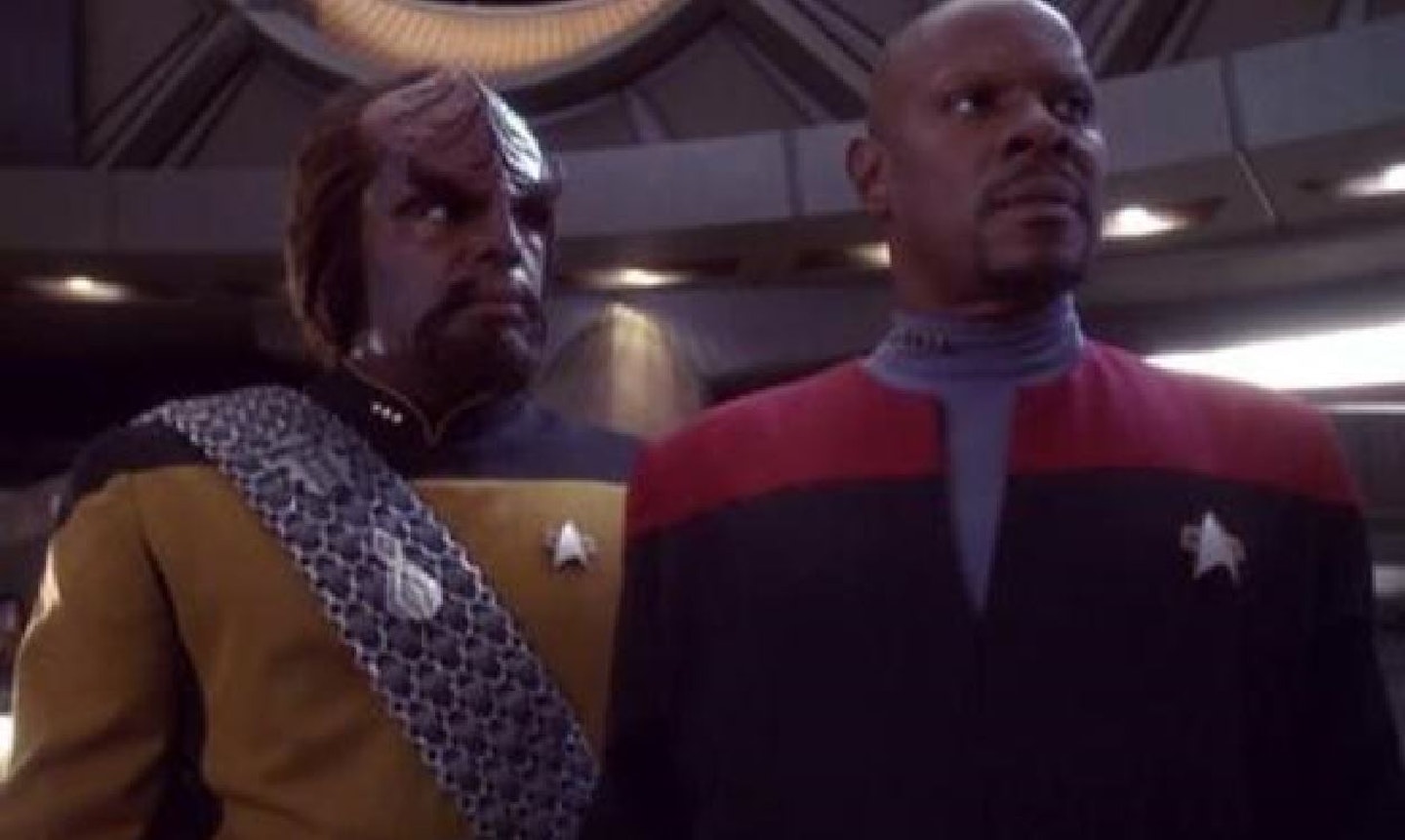
For anyone who may not be enamoured with the early episodes of Deep Space Nine , this one should be your starting point. It's where the show becomes far more serialsed, tensions increase between the Federation and the Klingon Empire (paving the road towards the Dominion War), Michael Dorn joins the show as TNG 's Worf and Avery Brooks comes to life like never before as Sisko after he shaves his head and grows a goatee.
21. Space Seed ( TOS )
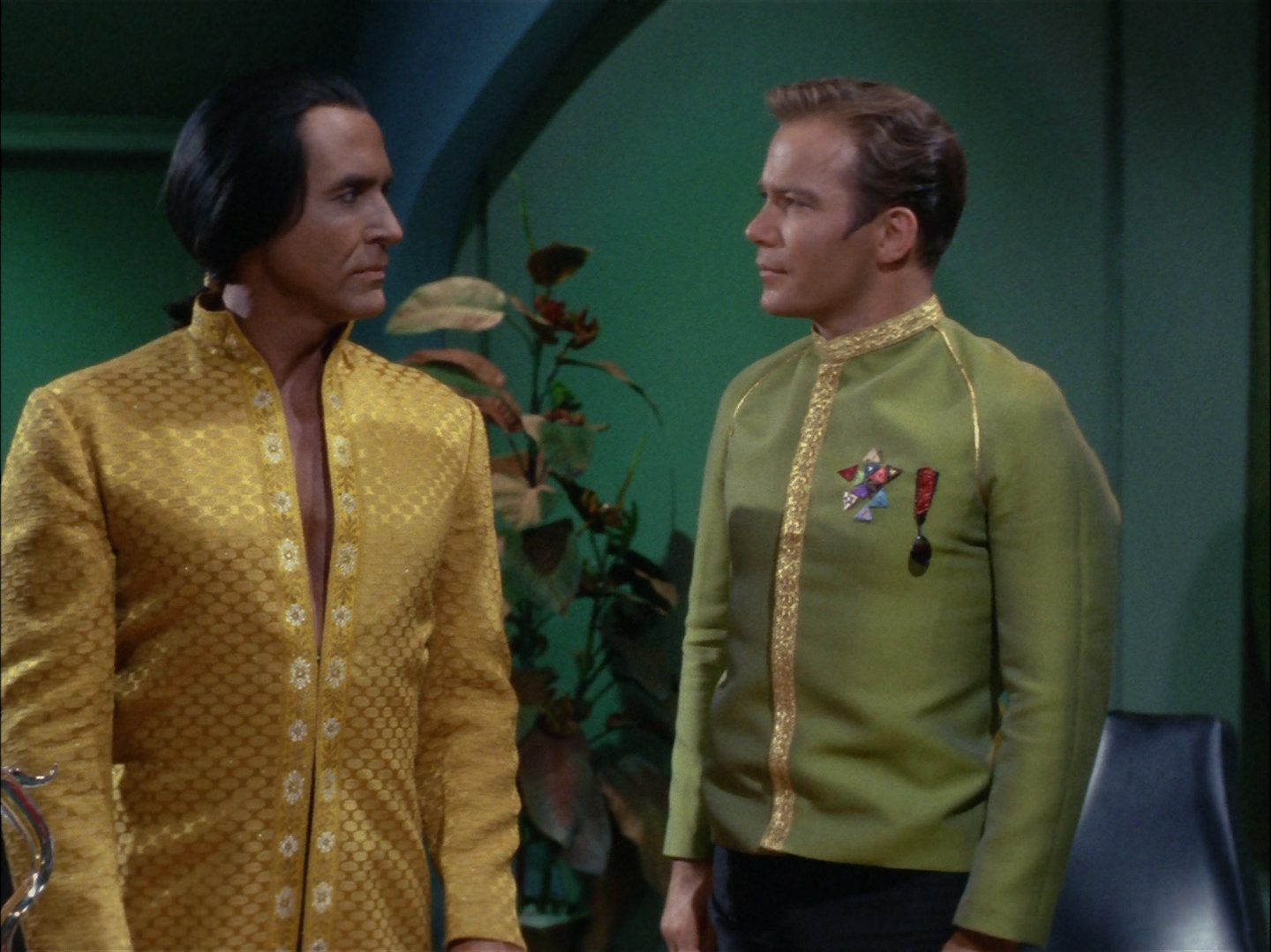
There's not much that needs to be said about this one beyond the fact that it marked Ricardo Montalban's debut as 20th Century genetic superman Khan Noonien Singh, and ultimately planted the seeds for what would, fifteen years later, become The Wrath Of Khan . The scenes between Montalban and Shatner (outside of a dopily resolved fist fight) are gold.
20. Q Who ( TNG )
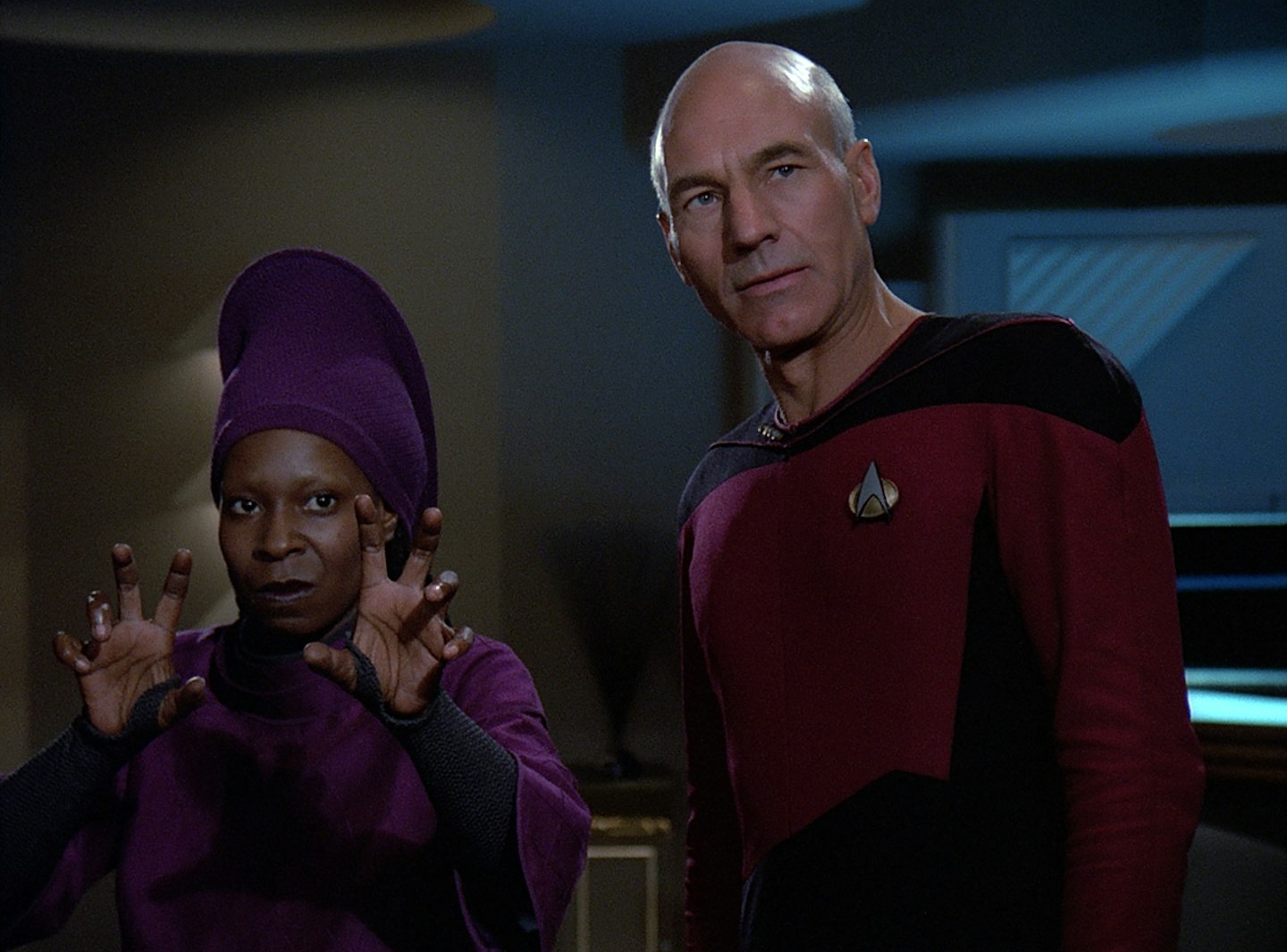
From the imagination of executive producer Maurice Hurley came this Season Two episode that had John de Lancie's Q propel the Enterprise to the Delta quadrant where they encounter the Borg for the first time. One of the few episodes of TNG to reveal space to be a genuinely scary place.
19. Brothers ( TNG )
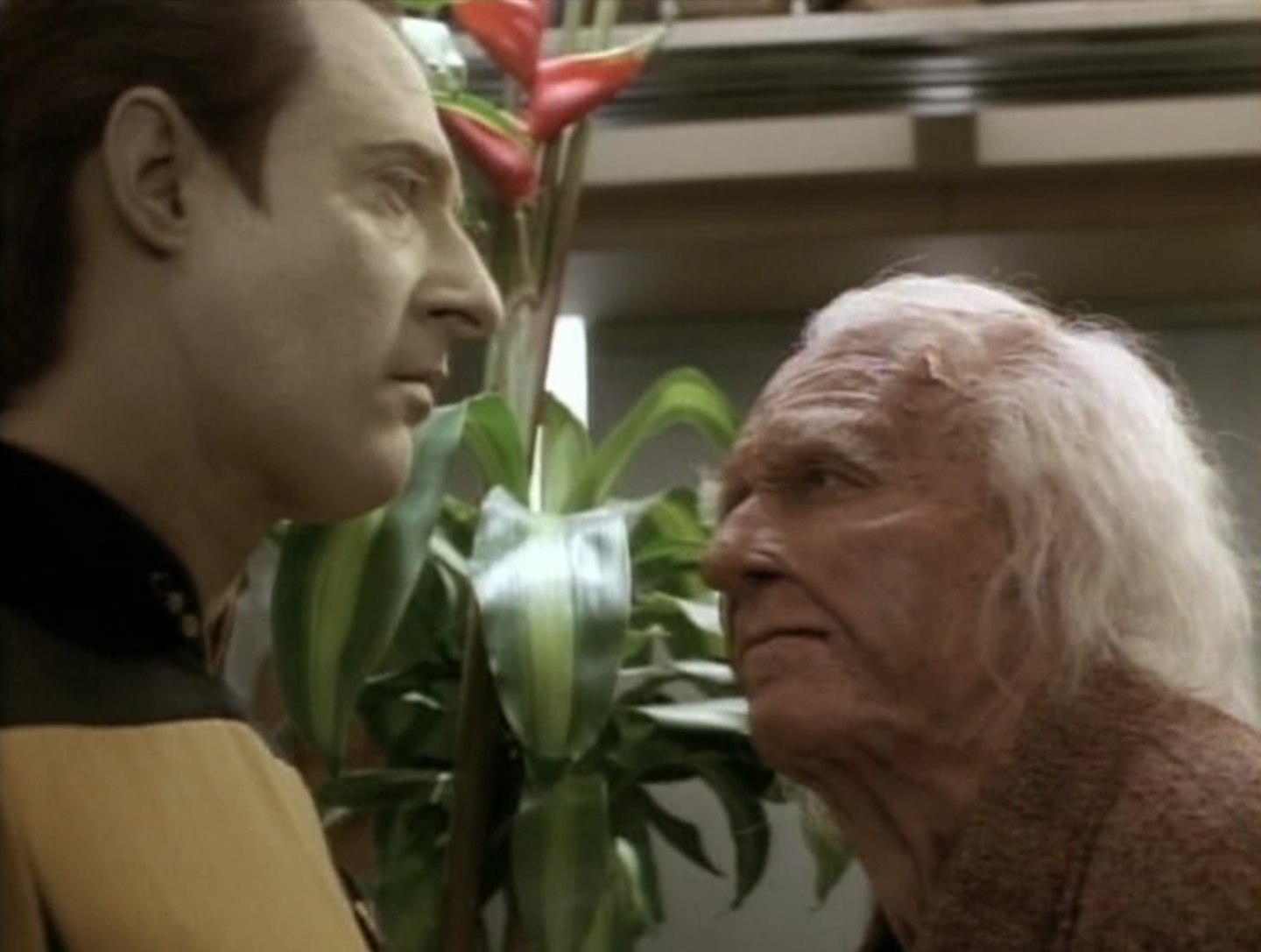
Brent Spiner does triple duty as Data, his brother Lore and their "father," Dr. Soong. The story itself — an attempt by Soong to provide Data with an emotion chip that Lore ultimately steals — is not half as memorable as the actor's three distinct performances.
18. Trials And Tribble-ations ( DS9 )
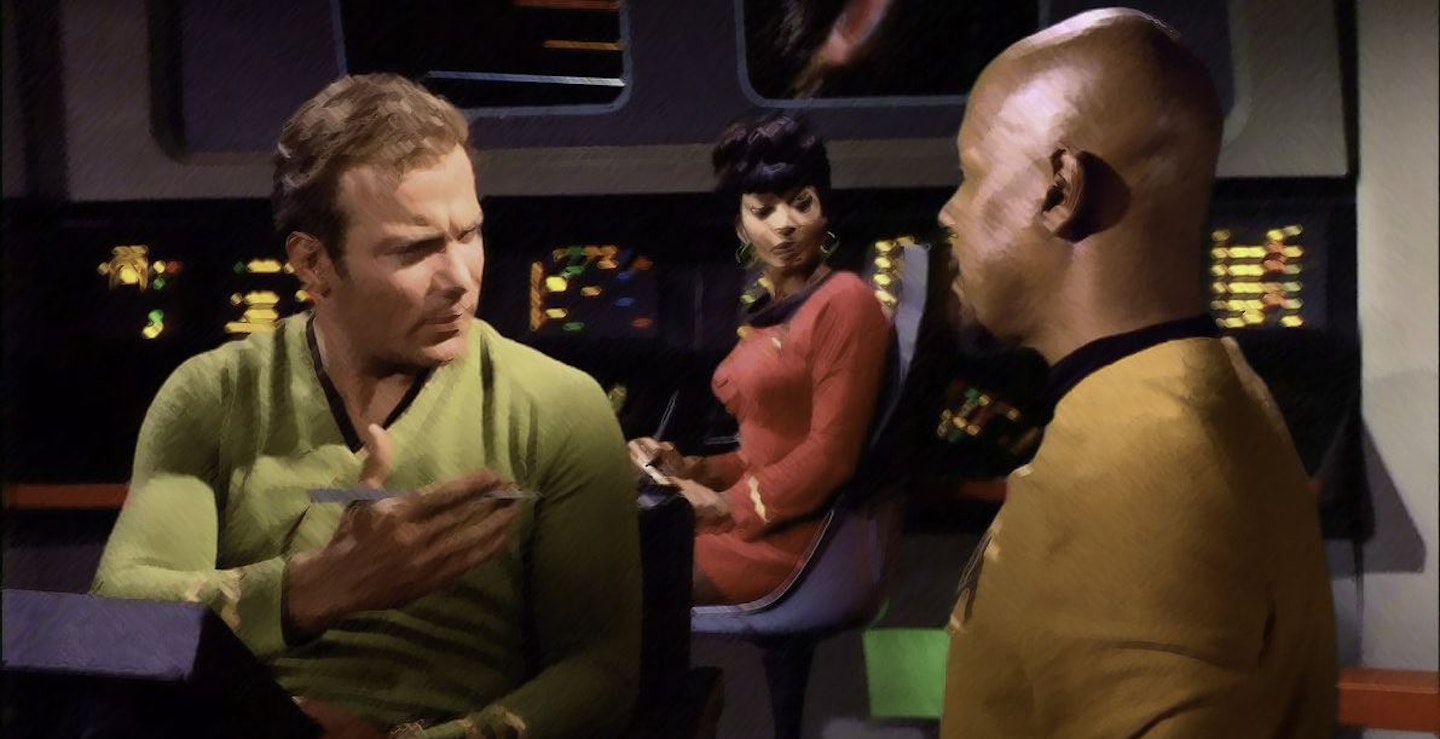
Now this was the way to celebrate Star Trek 's 30th Anniversary as the producers of Deep Space Nine crafted a story that took Sisko, Dax, Bashir and O'Brien and dropped them right in the middle of the original series' "The Trouble With Tribbles." Great fun and top-notch effects work that allowed this crew to interact with that one.
17. The Measure Of A Man ( TNG )
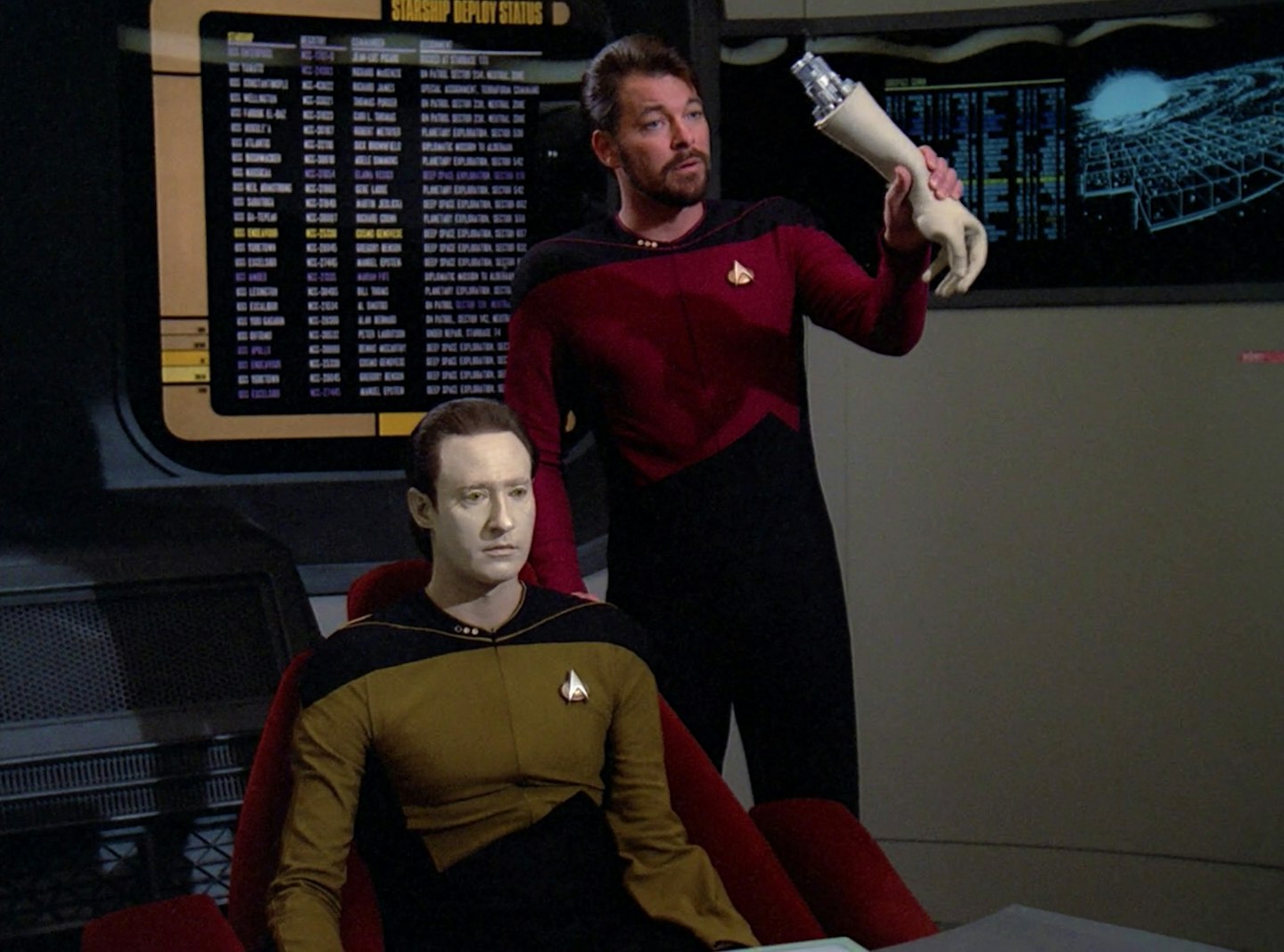
The first real evidence that The Next Generation was establishing its own identity as a series came in this Season Two episode. Picard defends Data's right to self-determination against a scientist who desires to dismantle him to create a number of similar androids. An insightful script by Melinda Snodgrass, and a standout performance by Brent Spiner as Data.
16. Chain Of Command ( TNG )
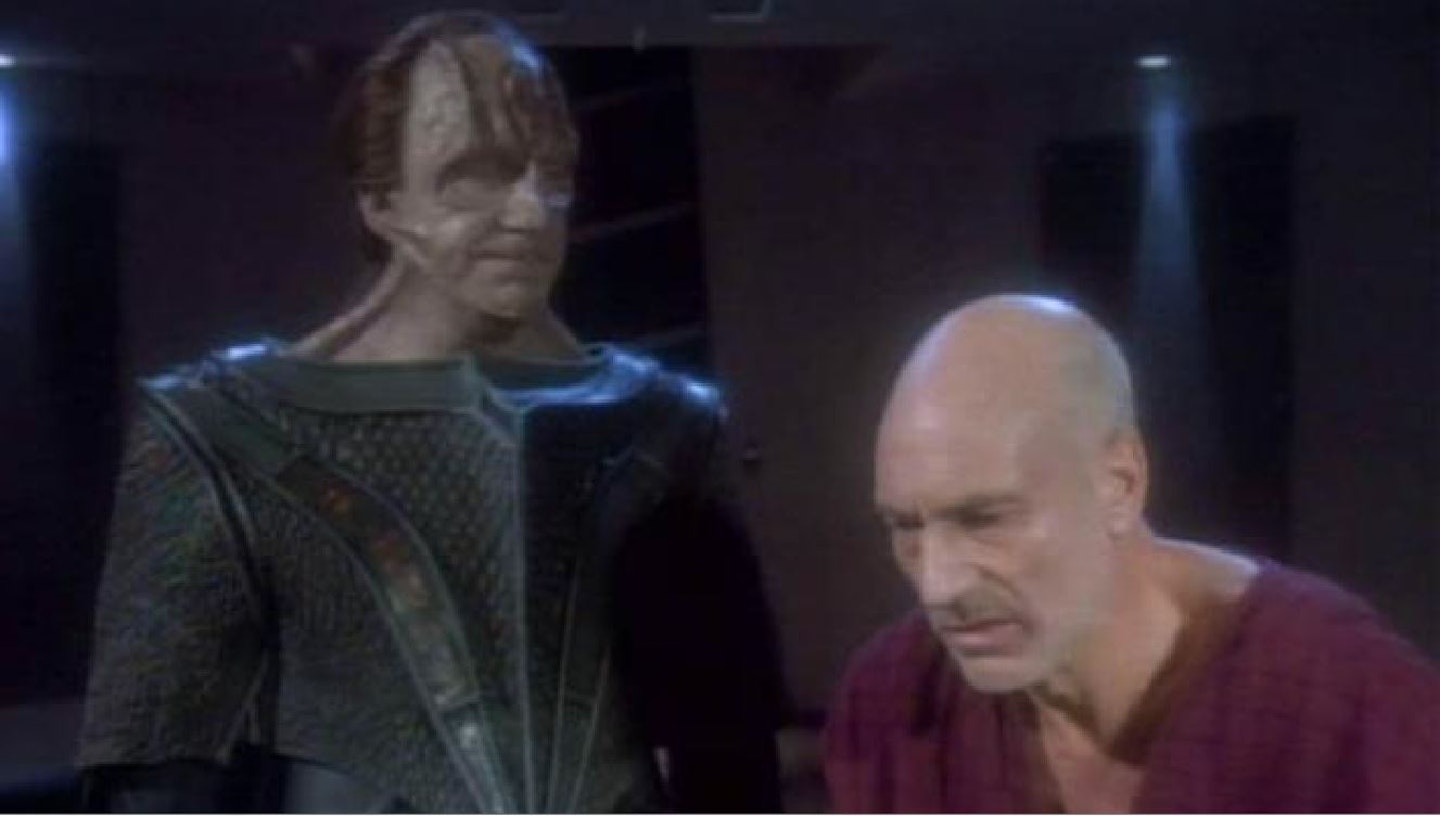
In this instalment of Keeping Up With The Cardassians, Picard is made a prisoner of war during a covert operation against the alien race. He's ultimately tortured by David Warner's Gul Madred, and the psychological machinations that follow provide some of TNG 's most powerful moments, and arguably Stewart's best performance in the role. "There are FOUR LIGHTS!"
15. The Enemy Within ( TOS )

Yes, you have to look beyond some stereotypical Shatnerisms, but overall William Shatner is stunning to watch in this episode as Kirk is, as a result of a transporter malfunction, split into good and evil duplicates of himself. A psychological study of the requirements for an effective starship captain. Written by Twilight Zone scribe Richard Matheson .
14. Scorpion ( VOY )
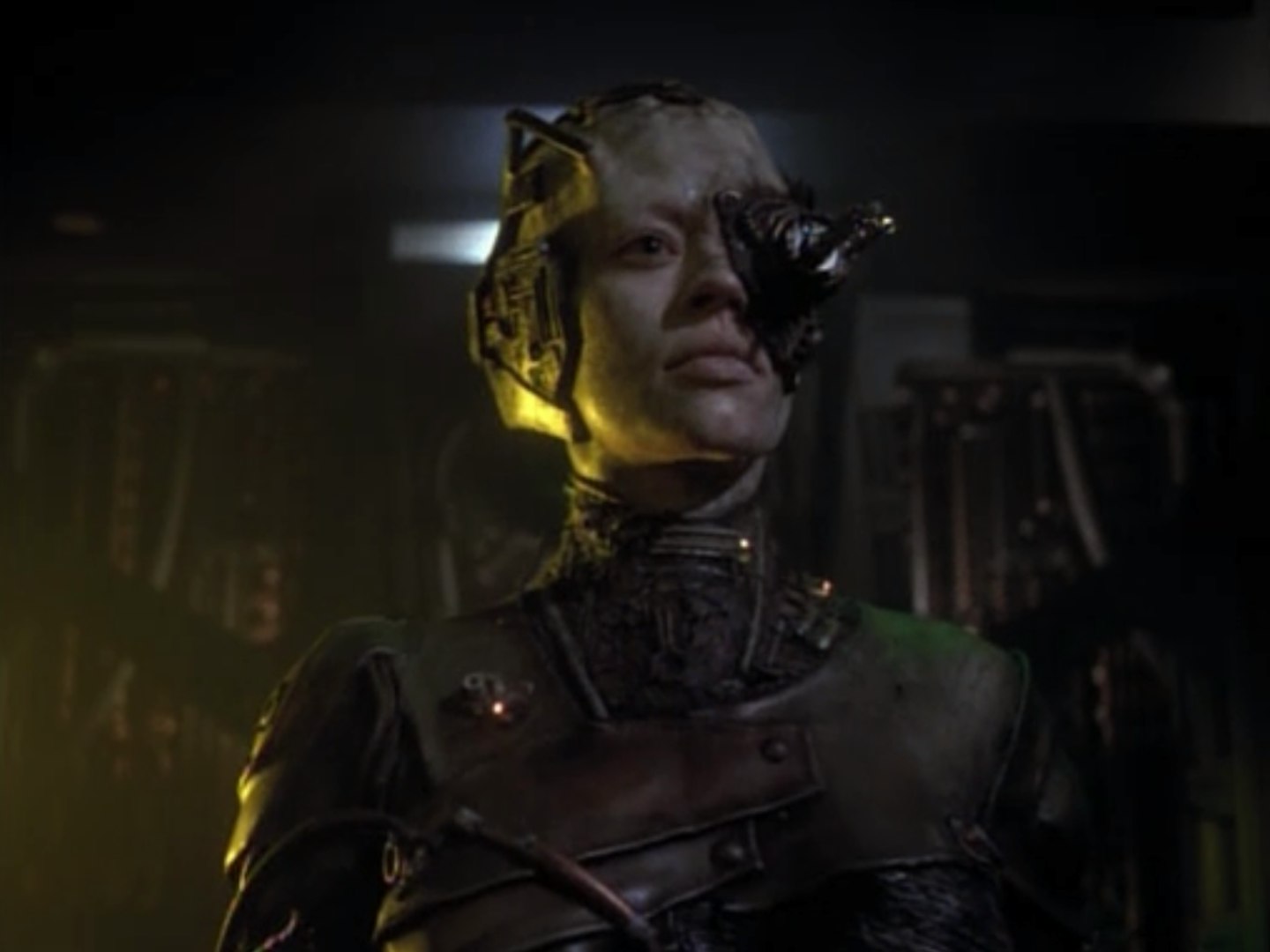
Often referred to by fans as 'The Breast Of Both Worlds', this two-parter introduces Jeri Ryan as Borg crew member Seven Of Nine, though her sprayed-on silver uniform wouldn't make an appearance straight away. Despite being a transparent attempt to 'sex up' the show, it was a tremendous introduction for the character and, more importantly, gave Voyager a much-needed kick up the arse in terms of both drama and conflict.
13. In The Pale Moonlight ( DS9 )
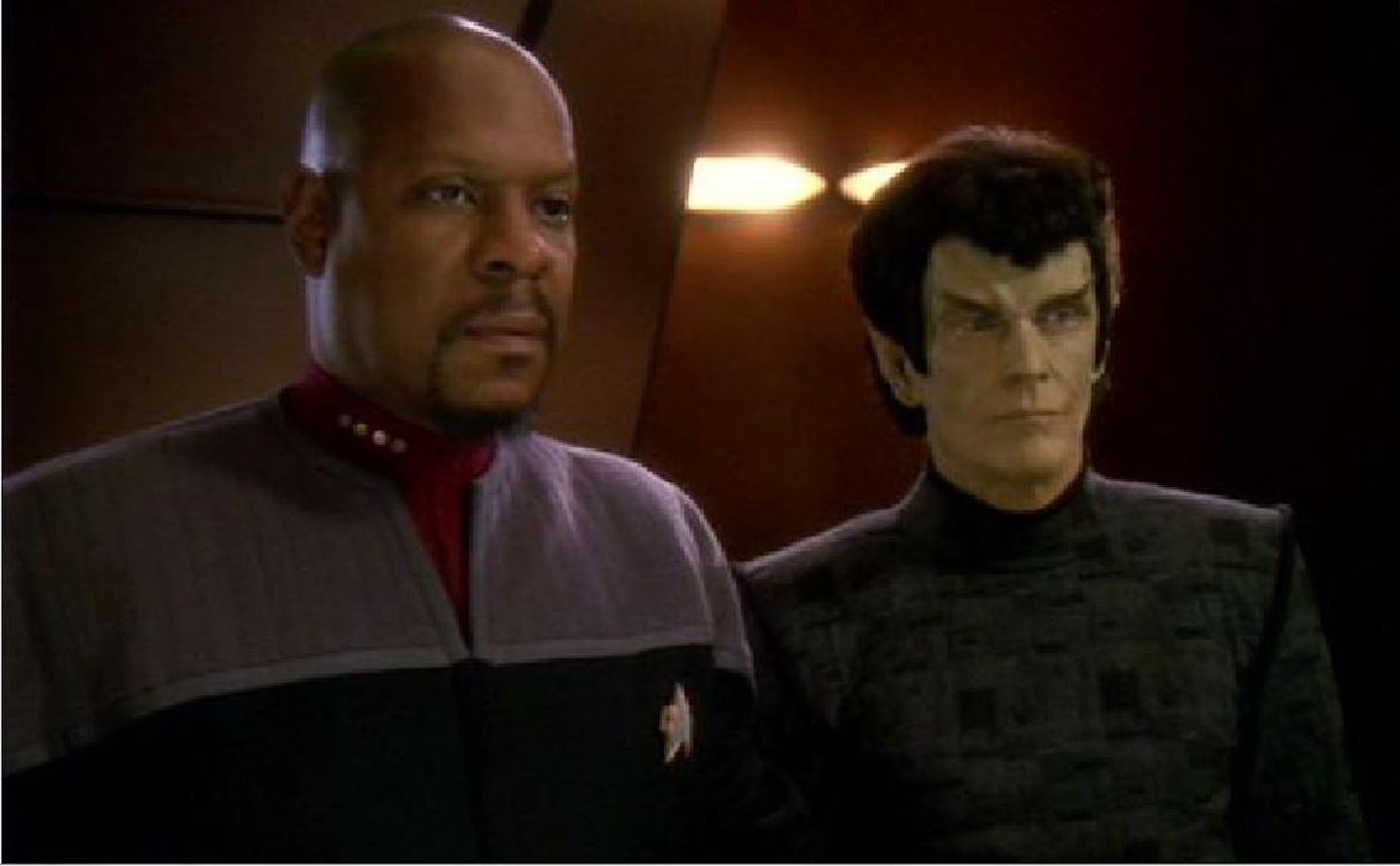
Starship captains have a tendency to bend the tenets of the Federation (we're talking to you, James T.!), but in this one Sisko pretty much snaps them in half as he manipulates the Romulans into joining the Federation in war against the Dominion. A powerful personal dilemma with no easy solutions.
12. Mirror, Mirror ( TOS )
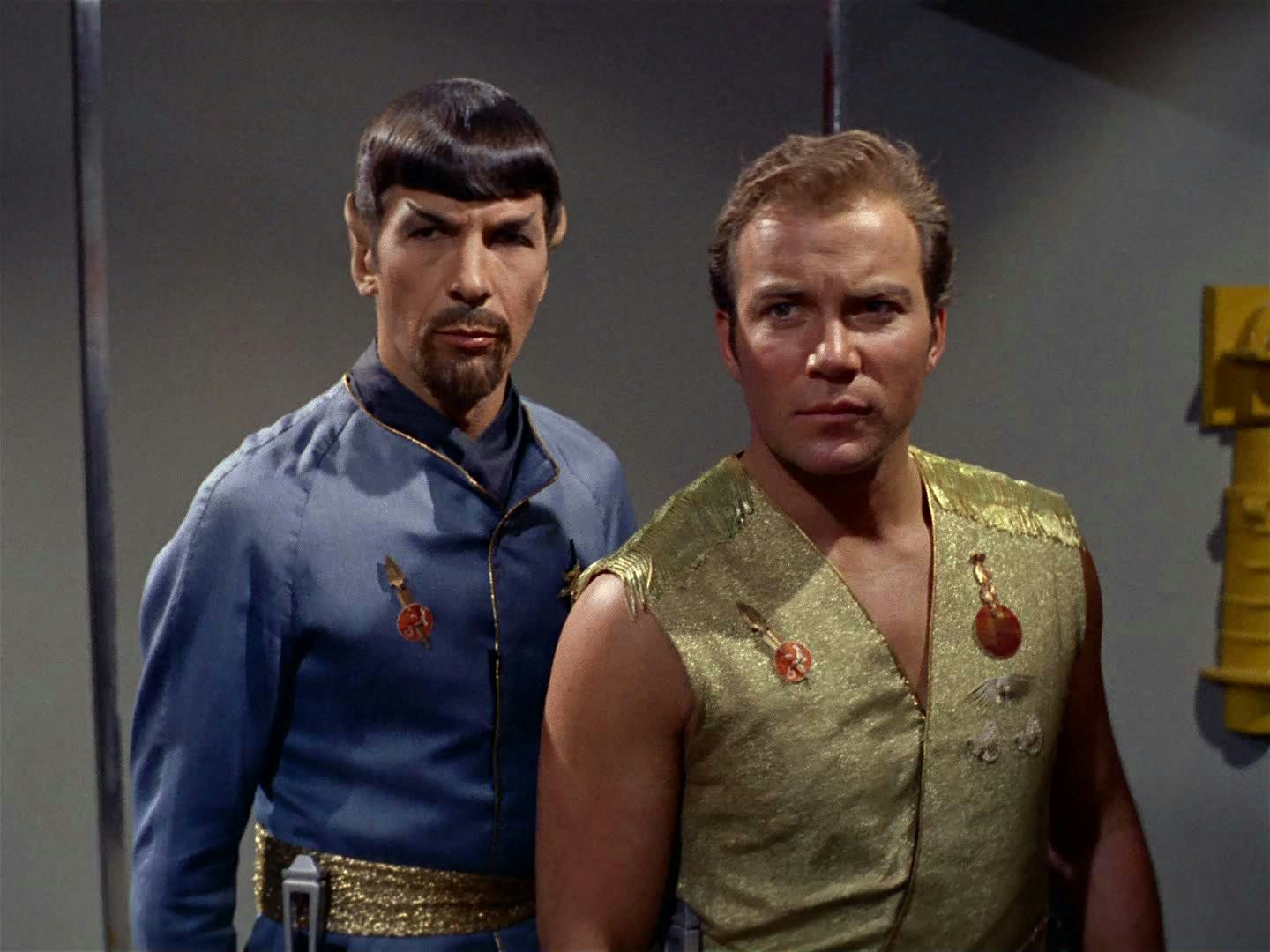
Kirk, McCoy, Scotty and Uhura find themselves in a parallel, more savage universe where the Federation is the Empire and is essentially feared like the Klingons. Be sure to check out alternate Spock, who wears the goatee of evil.
11. All Good Things ( TNG )
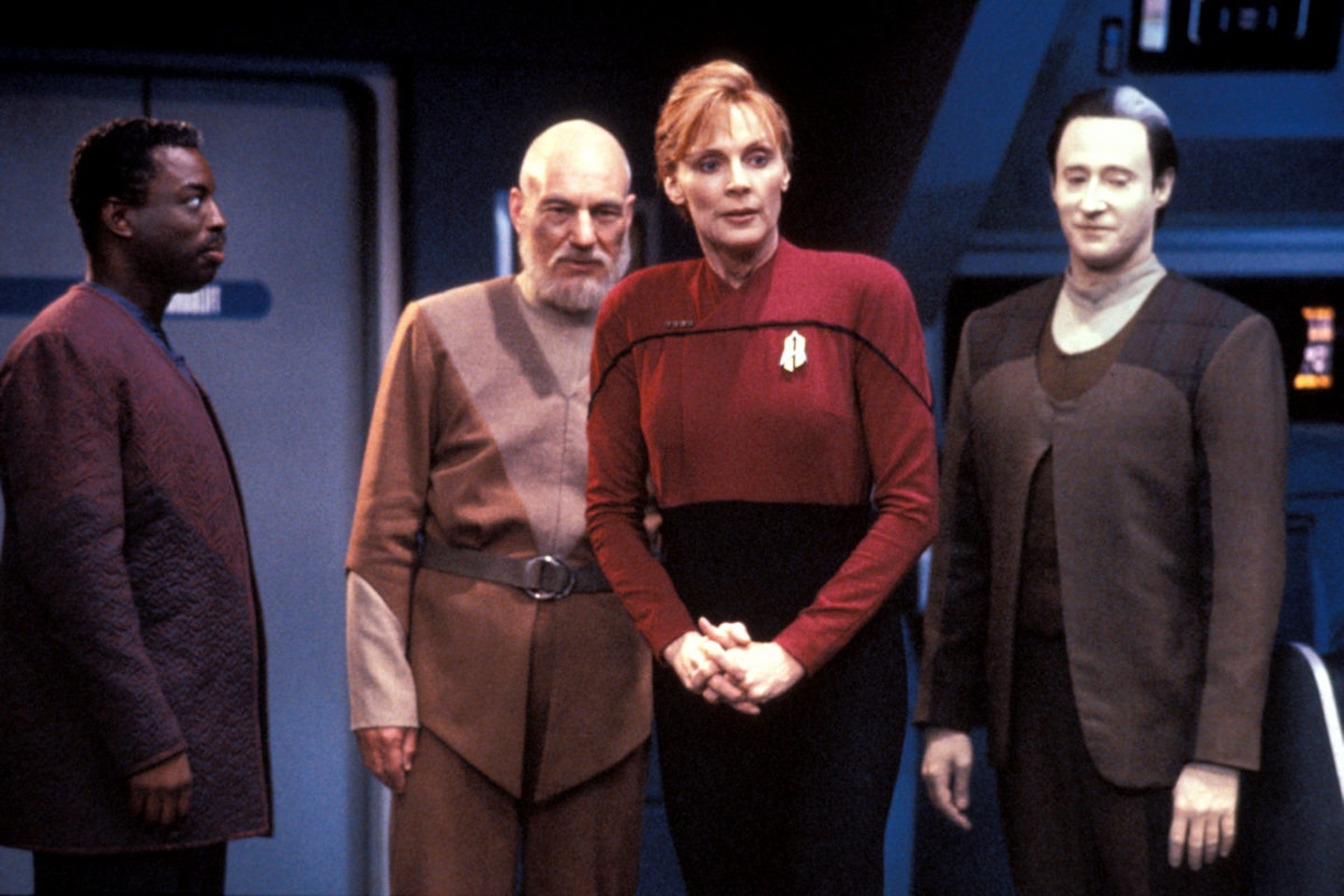
The series finale of The Next Generation bookends its premiere, Encounter At Farpoint , as Q (John de Lancie) continues humanity's trial. Taking place in three time periods (the pilot, the present and the future), its scope is epic, its themes powerful and it's all so well executed that it probably should have been TNG 's first feature film.
READ MORE Trek: 10 Unfilmed Episodes
READ MORE: Star Trek: Why It Still Matters?
10. The Inner Light ( TNG )
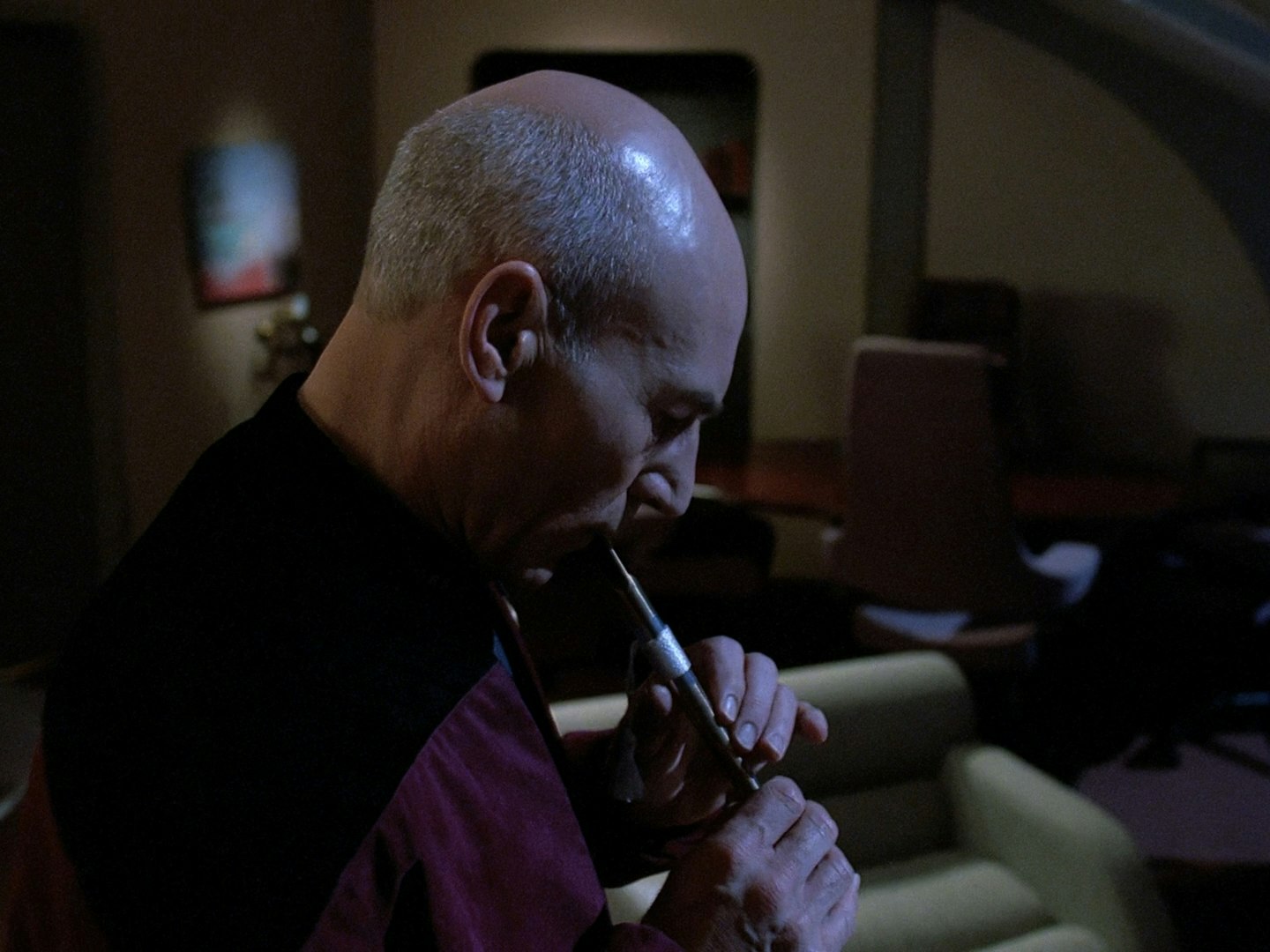
To ensure that memory of a civilisation survives its passing, a probe affects Picard's mind to make him live an entire lifetime among its people, while only minutes pass on the Enterprise itself. In three quarters of an hour, Patrick Stewart somehow makes you really believe in the love and loss of a life well lived – all in the blink of an eye.
9. The Doomsday Machine ( TOS )

A tense thriller that serves as a contrast in command between Kirk and Commodore Matt Decker (William Windom). After losing the crew of his ship, the Constellation, to a galaxy-roaming doomsday device, Decker is so driven by vengeance that he could very well sacrifice the Enterprise in its pursuit.
8. The Trouble With Tribbles ( TOS )
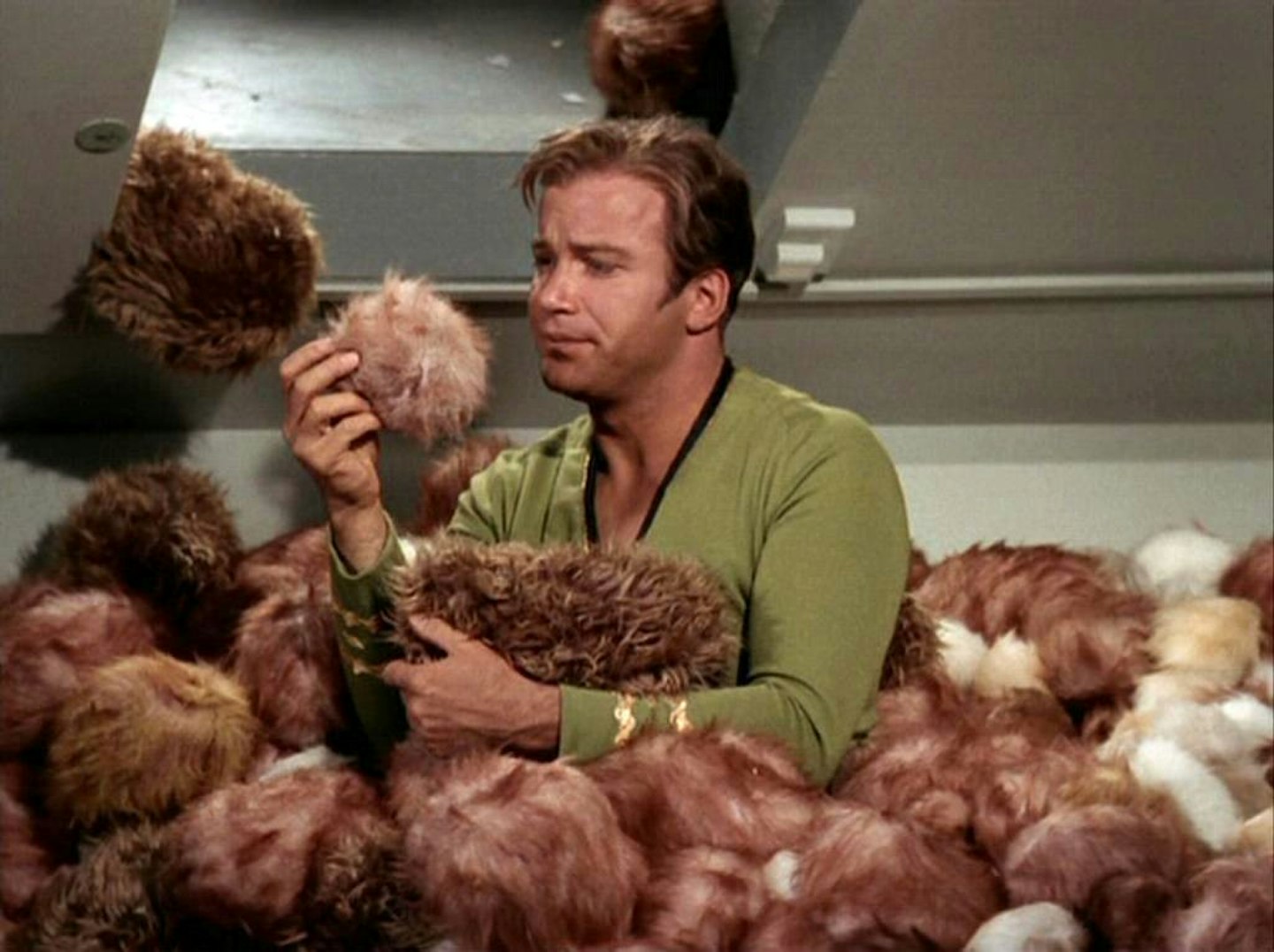
For the first time, Star Trek proved that it could be funny without losing any of its integrity. Purring furballs, Klingons, bar fights and great comic bits for Shatner to play all combine to make up a true classic. Remember: don't feed them!
7. The Visitor ( DS9 )
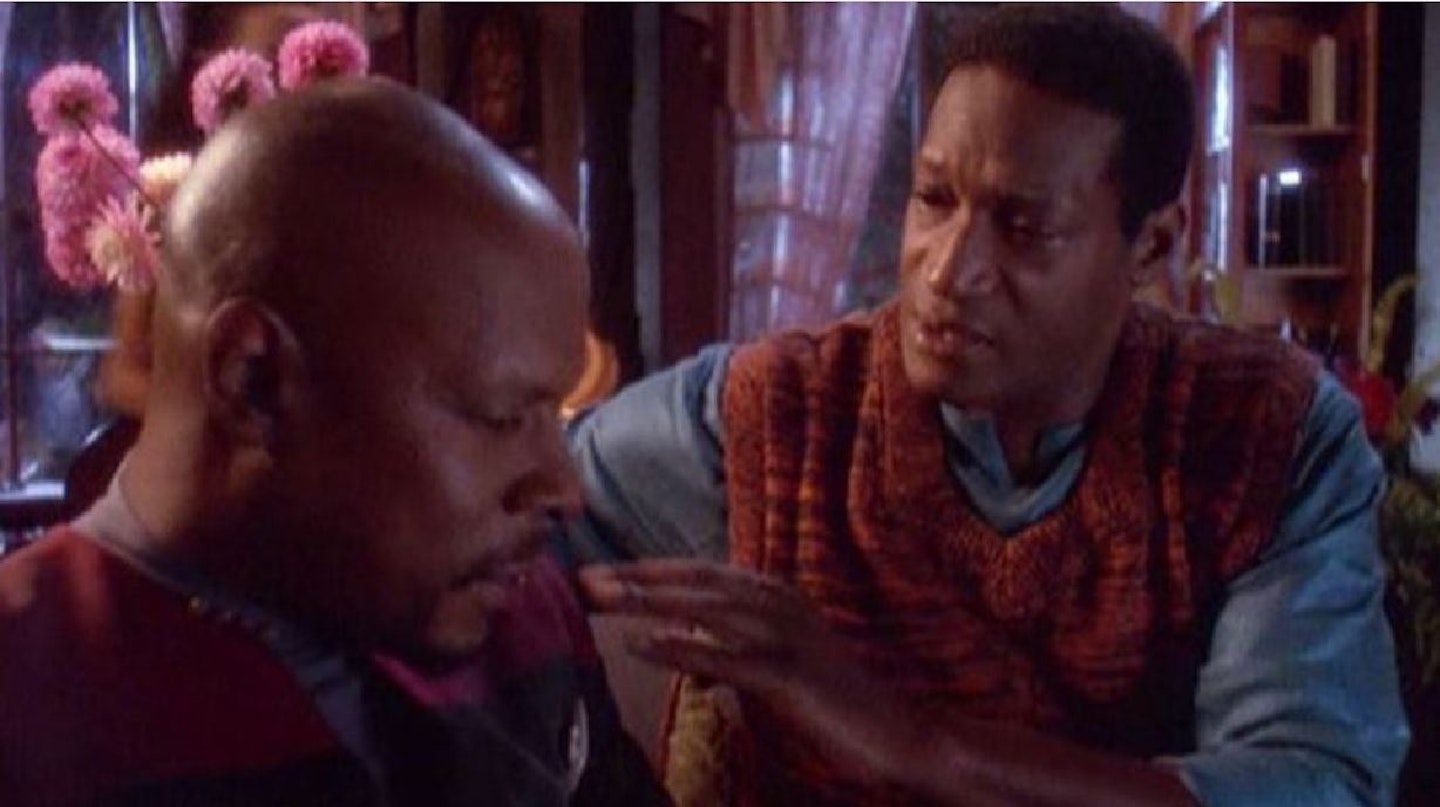
Jake Sisko grows up to be Tony Todd in this tale of Jake attempting to cope with the seeming death of his father, while being filled with the lingering hope that he may somehow be able to set things right. A stirring study of a father/son relationship and the weight of a guilt that spans decades.
6. Darmok ( TNG )
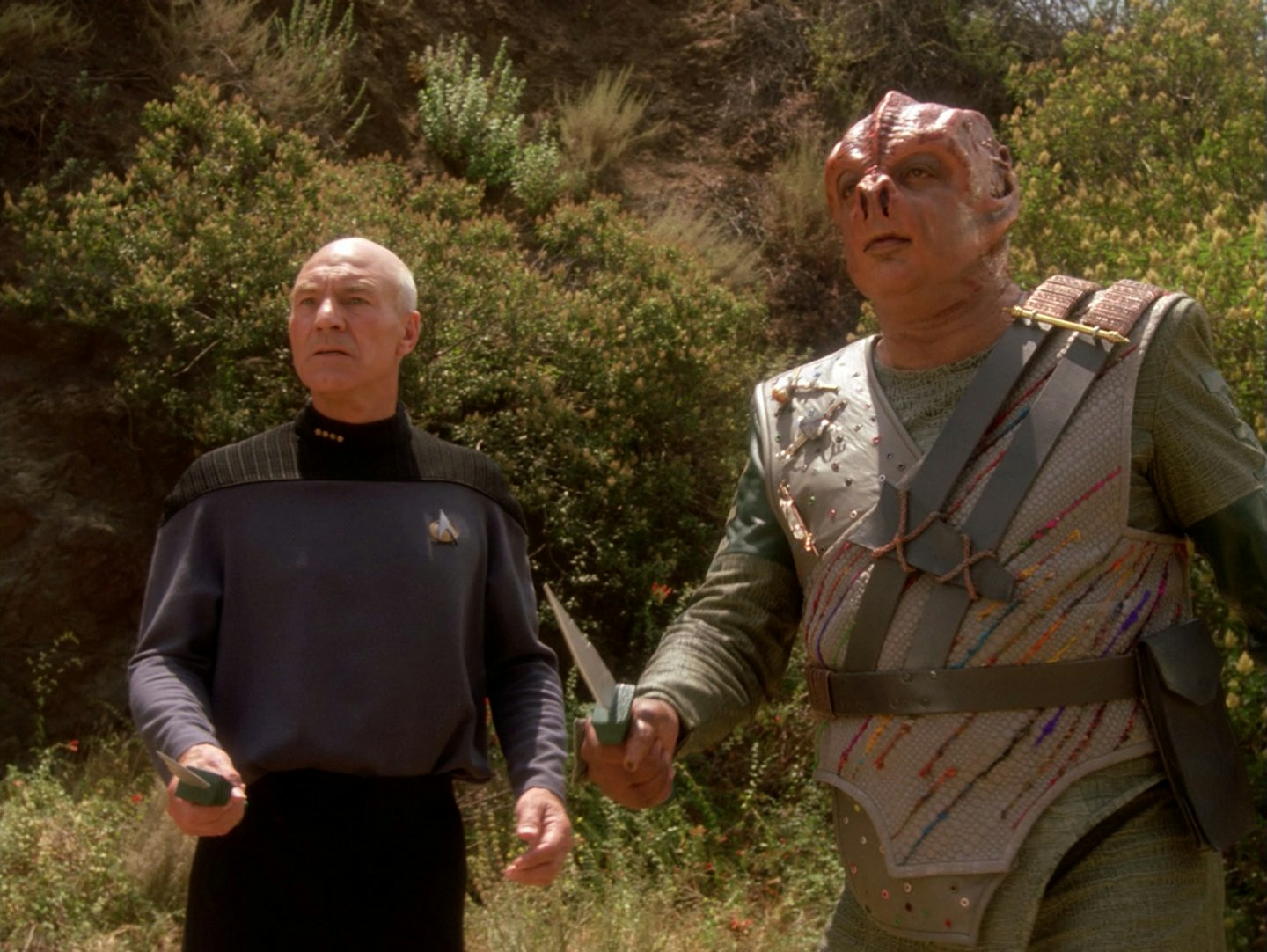
Quite possibly the perfect embodiment of the Star Trek philosophy. Two races, represented by Picard and the Tamarian's Dathon (whose people only speak in metaphors and cultural references), must bridge a language gap to establish relations between their people in what becomes a life and death struggle. Paul Winfield ( The Wrath of Khan ) guest stars as Dathon.
5. The Best of Both Worlds ( TNG )
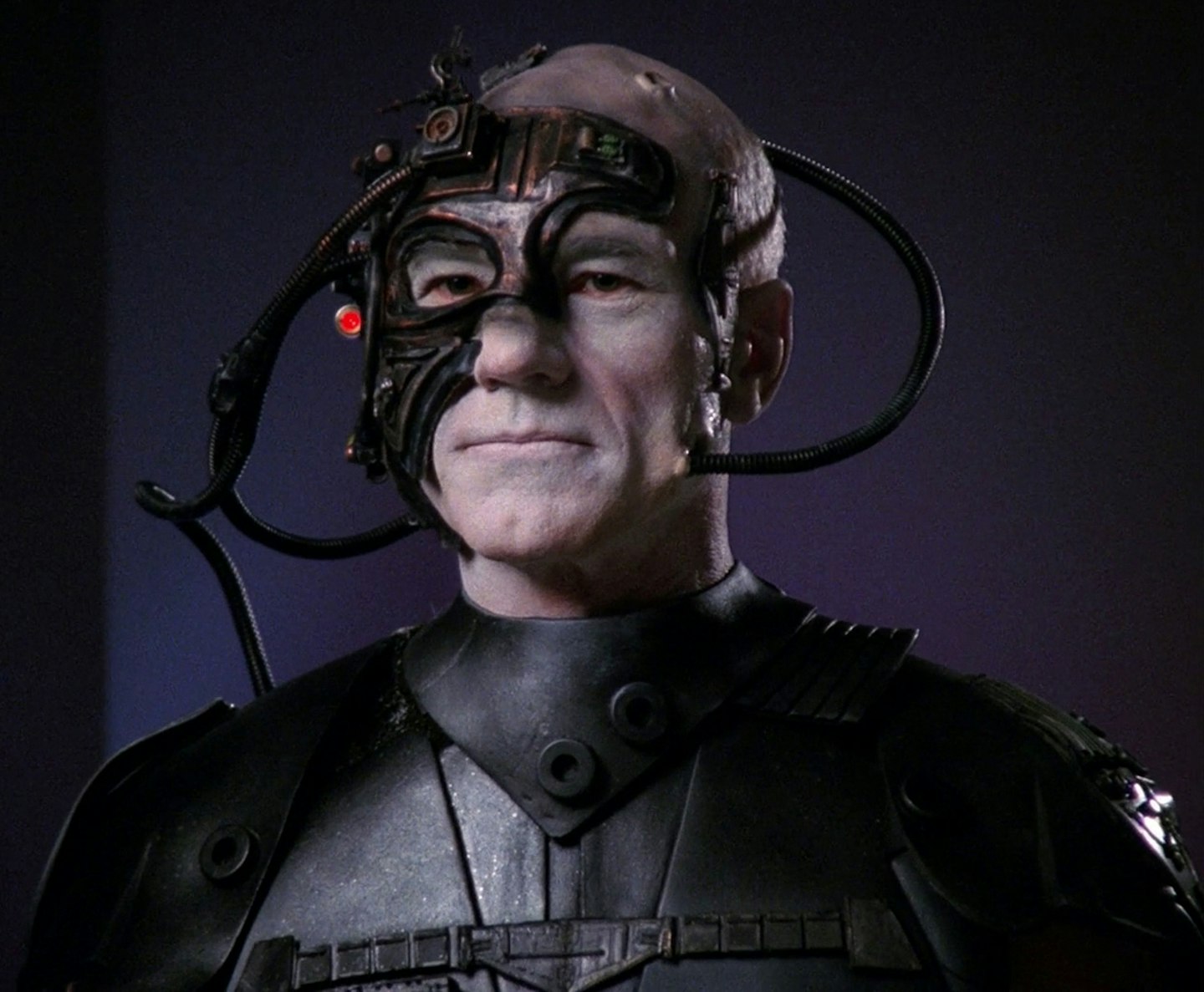
After floundering for a couple of seasons, The Next Generation came into its own with the arrival of exec producer Michael Piller and this tale of the Enterprise's battle with the Borg, which features Picard's transformation into Locutus. From this moment on, resistance to TNG was futile.
4. Far Beyond The Stars ( DS9 )
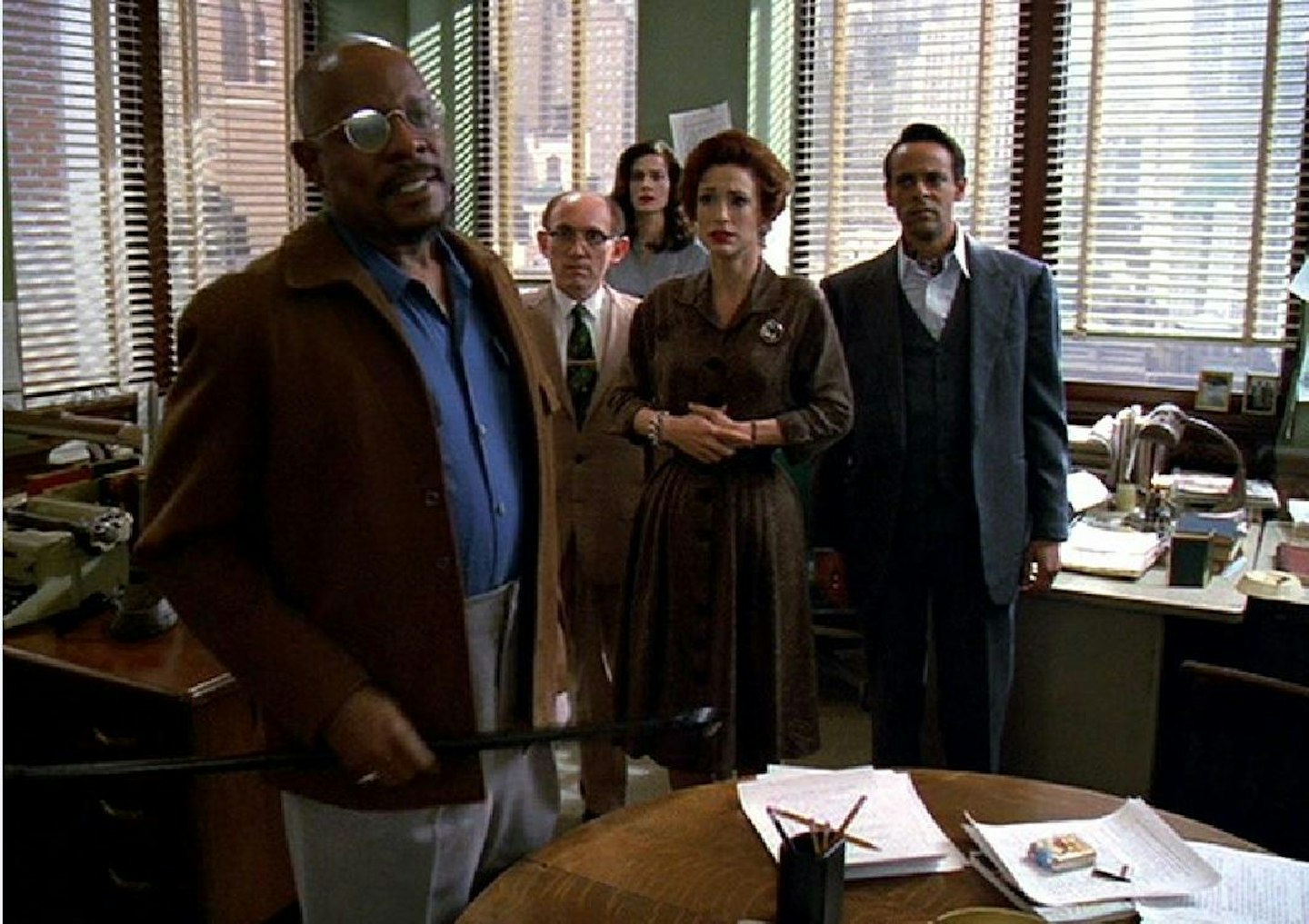
Emotionally fragile, Sisko abruptly finds himself as science-fiction writer Benny Russell in 1950s New York. A tour de force performance by star/director Avery Brooks as Benny deals with the racism of the time. We're given the suggestion that the events of DS9 (and therefore the entire Star Trek universe) has sprung from his imagination. Added bonus: seeing much of the cast out of makeup.
3. Yesterday's Enterprise ( TNG )
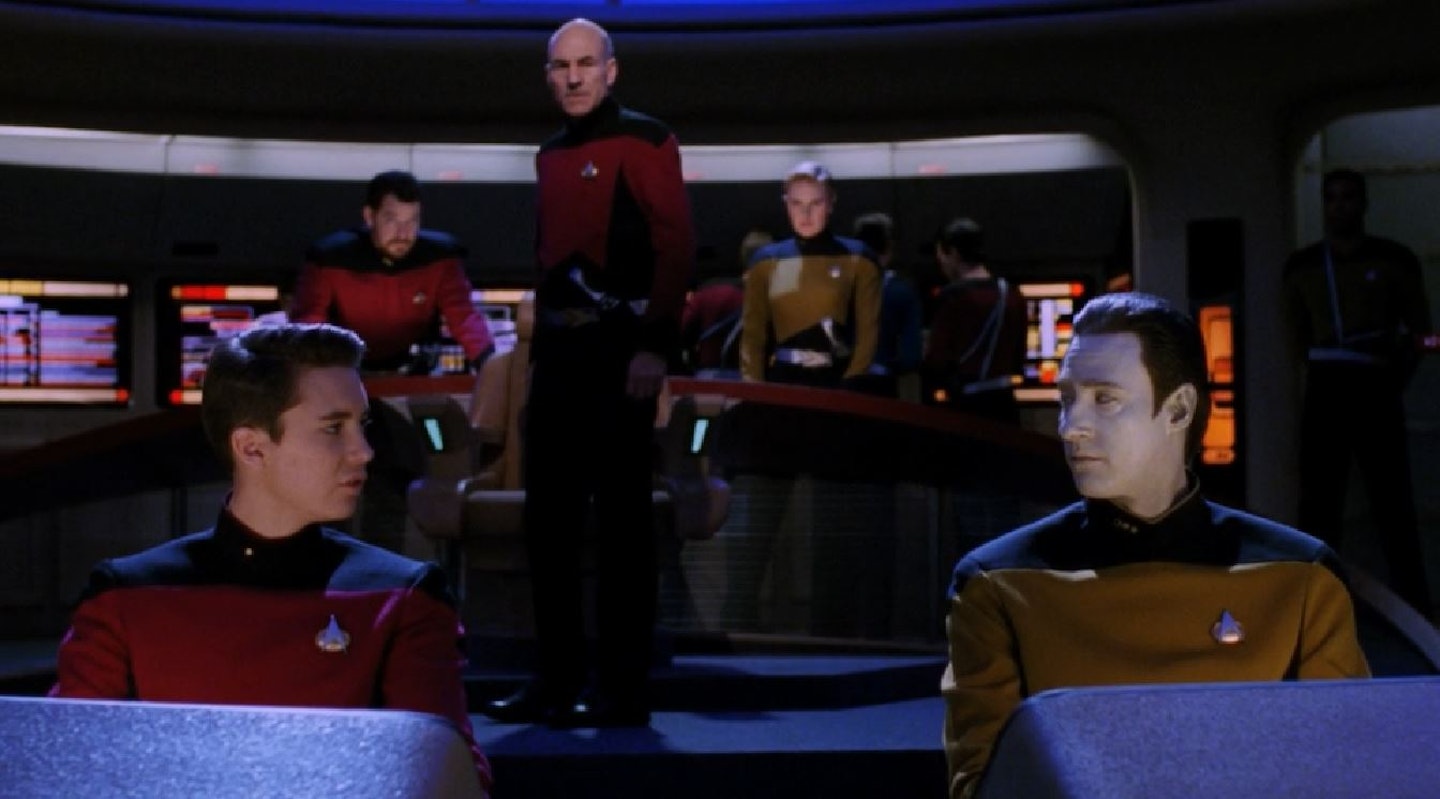
The Federation is getting its arse soundly kicked by the Klingons in this time-altered universe, and Picard must figure out what to do with the Enterprise-C, a ship out of time whose arrival seems to have changed the course of galactic history. This (alongside Chain Of Command ) is about as gritty as TNG ever got and is hugely enjoyable as a result.
2. The Devil In The Dark ( TOS )

It looks like a shag carpet and has a vicious streak a mile wide, but it's actually a mother protecting its young from Federation miners. An episode that perfectly encapsulates the Trek philosophy of overcoming our differences and the personal favourite of Shatner, whose father died during filming.
1. The City On The Edge Of Forever ( TOS )
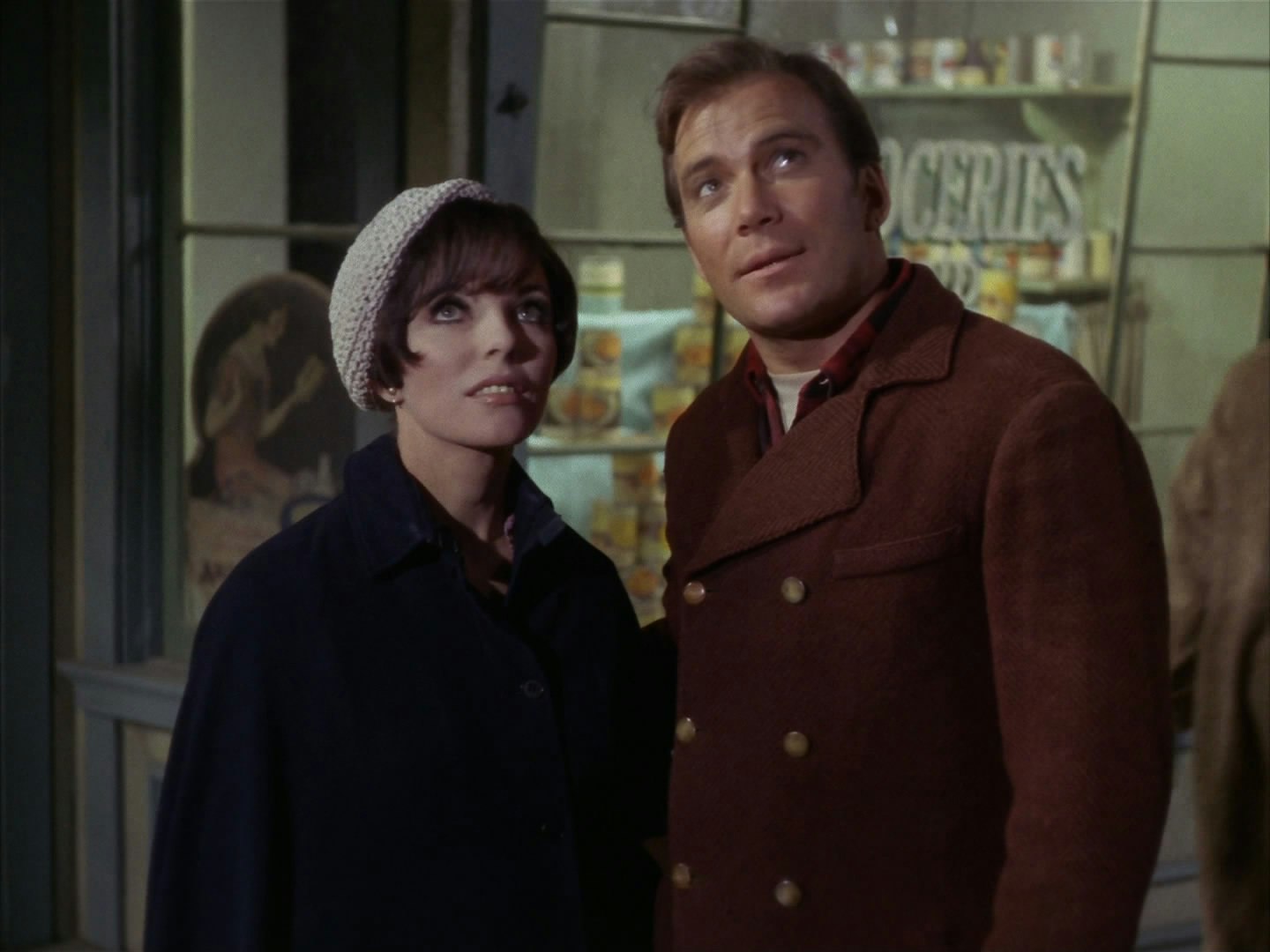
Starship captain meets social worker in the past. Starship captain falls in love with social worker. Starship captain sacrifices social worker for the sake of the universe. Social worker happens to be played by Joan Collins. Writer Harlan Ellison hates it, everyone else loves it. Star Trek at its absolute best.
Head to Empire's 10 Essential Star Trek Articles
READ MORE: Star Trek Beyond Review
READ MORE: Star Trek 2: The Wrath Of Khan Review
- Tickets & Showtimes
- Trending on RT

TAGGED AS: CBS , CBS All Access , Sci-Fi , science fiction

(Photo by Paramount+/CBS)
Star Trek TV Shows Ranked by Tomatometer
Updated: September 8, 2023
The Star Trek universe kicked off in 1966 with the original series , created by science fiction visionary Gene Roddenberry , and later exploded into a massive film and TV juggernaut.
While the original series, which starred William Shatner as Captain James T. Kirk and Leonard Nimoy as Mr. Spock, saw only three seasons, it made an indelible impression on the sci-fi genre. Live-action TV follow-up Star Trek: The Next Generation , with Patrick Stewart as Captain Jean-Luc Picard leading an ensemble cast, captivated viewers from 1987–1994 and inspired three more series that would air within the next decade: Star Trek: Deep Space Nine , Star Trek: Voyager , and Star Trek: Enterprise .
Starting with 1979’s Star Trek: The Motion Picture , Paramount Pictures has been regularly cranking out Trek films with the original series and Next Generation casts, as well as a rebooted version in 2009 with Chris Pine as Starfleet Academy cadet James Kirk and Zachary Quinto as young Spock. ( See the Star Trek films ranked here. )
In 2017, Trek returned to small screens with season 1 of CBS All Access streaming title Star Trek: Discovery , set during a tumultuous wartime era about a decade before the original and starring Sonequa Martin-Green . The new series marked a TV franchise reboot by Alex Kurtzman , writer on the 2009 Star Trek film and its sequel Star Trek Into Darkness .
RELATED: All Star Trek Movies Ranked by Tomatometer
The year 2020 gave fans a celebration of one of its most iconic characters with the premiere of Star Trek: Picard and Stewart reprising his role in the new streaming series that launched its second season in 2022. New live-action series Star Trek: Strange New Worlds was also released in 2022, and its first season was quickly Certified Fresh with a 100% Tomatometer score (it has since dropped to 99% on one review). The show’s second season, released in 2023, was nearly as well received and is Certified Fresh at 97% on the Tomatometer.
The TV franchise has since introduced two animated series Star Trek: Lower Decks , about the misfit support crew on one of Starfleet’s least-important ships, and kid-friendly Star Trek: Prodigy , which tells the story of a diverse group of teens who inadvertently become the crew of a prize starship and learn important lessons in their subsequent adventures. The latter series — No. 3 on our list below — has since been canceled by Paramount+, but a petition to save the show has gathered over 33,000 signatures.
Have a look below to find out which series score highest with critics in our Trek TV by Tomatometer list.
Disagree with the results? Tell us in the comments which series you think should have been ranked higher (or lower).
Star Trek: Strange New Worlds (2022) 98%
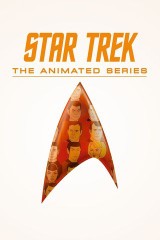
Star Trek: The Animated Series (1973) 94%
Star Trek: Prodigy (2021) 94%
Star Trek: Lower Decks (2020) 92%
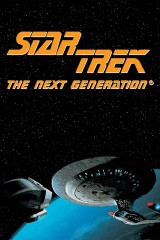
Star Trek: The Next Generation (1987) 92%
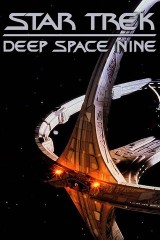
Star Trek: Deep Space Nine (1993) 91%
Star Trek: Picard (2020) 89%
Star Trek: Discovery (2017) 85%
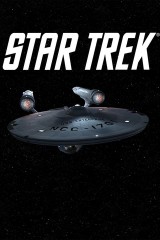
Star Trek (1966) 80%
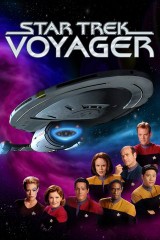
Star Trek: Voyager (1995) 76%
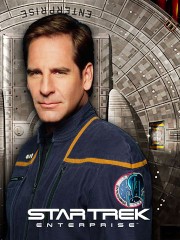
Star Trek: Enterprise (2001) 56%
Related News
TV Premiere Dates 2024
Fallout : What to Expect in Season 2
Fallout : What It Gets Right, and What It Gets Wrong
More Movie & TV Scorecards
The Best TV Seasons Certified Fresh at 100%
Marvel TV Ranked by Tomatometer
Best Actor Oscar-Winning Movies, Ranked by Tomatometer
Movie & TV News
Featured on rt.
DC Animated Movies In Order: How to Watch 54 Original and Universe Films
April 23, 2024
April 22, 2024
Weekend Box Office Results: Civil War Earns Second Victory in a Row
25 Most Popular TV Shows Right Now: What to Watch on Streaming
Top Headlines
- DC Animated Movies In Order: How to Watch 54 Original and Universe Films –
- The Best TV Seasons Certified Fresh at 100% –
- Best TV Shows of 2024: Best New Series to Watch Now –
- 25 Most Popular TV Shows Right Now: What to Watch on Streaming –
- 30 Most Popular Movies Right Now: What to Watch In Theaters and Streaming –
- Box Office 2024: Top 10 Movies of the Year –
The Definitive Voice of Entertainment News
Subscribe for full access to The Hollywood Reporter
site categories
Breaking news, n.y. appeals court overturns harvey weinstein rape conviction, ‘star trek’: 20 greatest episodes from the original series.
Whether you’re a long-time fan or looking for a starting point, let this top 20 episodes list from the original series of ‘Star Trek’ be your guide to the stars.
By Aaron Couch , Graeme McMillan September 20, 2016 6:00am
- Share this article on Facebook
- Share this article on Twitter
- Share this article on Flipboard
- Share this article on Email
- Show additional share options
- Share this article on Reddit
- Share this article on Comment
- Share this article on Whatsapp
- Share this article on Pinit
- Share this article on Linkedin
- Share this article on Print
- Share this article on Tumblr

In honor of Star Trek 's 50th anniversary this month, The Hollywood Reporter counted down the top 100 episodes of Star Trek — ranking them across all six TV series with help from the stars and writers who made them so beloved.
Now we're going to break it down even further — this time organizing the episodes by era. Every day through Friday, we'll be releasing a new list specific to each series, with the order is based on our original list of 100.
Here, we look at the best of the original series, which ran from 1966-69 saw Gene Roddenberry's vision brought to life by actors William Shatner (Spock), Leonard Nimoy (Spock), DeForest Kelley (Bones), Nichelle Nichols ( Uhura ), Walter Koenig ( Chekov ), George Takei ( Sulu ), and James Doohan (Scotty).
Below you'll find Shatner and Koenig reveal their favorite episodes, as well as hear from Star Trek Beyond director Justin Lin, two iconic Trek writers and many more.
Related Stories
'star trek': 100 greatest episodes, "spectre of the gun".
"We had bee spending too much money by the network's reckoning, so we had less to spend on this particular episode," recalls Walter Koenig of the hour, which saw an away team forced to battle in an Old West-style gunfight. "It gave my character some interesting work. He got the girl, he died and came back to life. I loved the whole concept."
'Star Trek': Walter Koenig on Lean Years After Cancellation and How Writing Ultimately Saved Him
"the galileo seven".
Not only does this episode give us the first appearance of a shuttlecraft in Trek lore, it introduces a version of the concept that would become key to the franchise decades later — that there is a push and pull between the needs of the many and the needs of the few. The Enterprise is on a mission to deliver relief supplies to a colony. Meanwhile, seven crewmembers — including Spock and Bones — crash land on a hostile planet, and Kirk must grapple with holding out hope for them and delivering the relief supplies.
"A Taste of Armageddon"
"This was the first Original Series episode I ever saw and it still blows my mind," says Jordan Hoffman, U.S. Film Critic for The Guardian and host of ENGAGE: The Official Star Trek Podcast . "Kirk is escorting a diplomat to a system of planets that have been in conflict for centuries. However, to protect their society’s infrastructure and maintain their culture, they don’t fight with weapons. Computers determine where phantom missiles hit and if your number comes up, you are ordered into a disintegration chamber. It is up to the Enterprise to intervene (which they totally aren’t supposed to do) and stop this insanity. It’s a rich concept with thrills, action, great speeches and even some humor. (Indeed, Spock takes the time to make a solid joke before sending someone crumpled to the floor with his Vulcan nerve pinch.)"
"The Doomsday Machine"
If Star Trek had shown Starfleet at its best until now, audiences got to see the flipside in this episode, in which Commodore Matt Decker (William Windom ) turns into an outer space Ahab chasing the cosmic Moby Dick of the episode's title: a "planet killer" that had nearly destroyed his own ship and killed everyone on board except for him. For an episode with such stakes, it's a surprisingly subtle story: While we should be worried about whether the planet killer can be stopped, the real tension comes from watching Decker struggle to deal with his trauma.
"The Corbomite Maneuver"
The first episode to be filmed after the two different pilots for the series, " Corbomite " manages to sum up everything that makes the original series so special, with a tense yet optimistic take on the idea of first contact between the Enterprise and an alien race that shows how fearless, compassionate and sneaky Captain James T. Kirk can be when pressed, and a Twilight Zone -esque last-second twist. As if that wasn't enough to make this episode worthwhile, it features the first times that DeForest Kelley and Nichelle Nichols played McCoy and Uhura — although by the time the episode aired, they were well-established characters to the loyal audience.
"Journey to Babel"
"I've always loved 'Journey to Babel,' by Dorothy Fontana," says writer David Gerrold when asked about his favorite Star Trek episode. "Because it reveals so much about Spock, and his past, and his parents." That's putting it mildly; before this episode, it's unlikely that anyone would have given much thought about the parents of any of the crew, but the introduction of Spock's estranged parents — one of whom was human, the other suspected of murdering a fellow diplomat on board the Enterprise — changed the way audiences looked at the characters forever: suddenly, they were more than just their jobs, and had inner lives and struggles that everyone could relate to. And all because the most alien of all of the crew had proven himself to be just as human as the rest of us.
"All Our Yesterdays"
While the final episode of the original series — "Turnabout Intruder" — is generally considered to be a low point for the show, the second last episode throws Spock, McCoy and Kirk back in time and puts them all out of their comfort zones as a result, with McCoy having to be the practical one, Spock becoming overwhelmed by emotions and Kirk on his own against the authorities. Yes, the title sounds like a soap opera (It's actually from Shakespeare, specifically Macbeth ), but this is a particularly strong Star Trek episode through and through.
"The Enterprise Incident"
Justin Lin, who directed this summer's Star Trek Beyond , picks this tale of intrigue as his favorite.
"A good old-fashioned spy thriller set in the Neutral Zone. What’s not to love?" Lin asks. "We get to see my favorite version of Kirk: the tactician. His ruse is brilliant and daring, but it’s Spock who steals the show in his interaction with the female Romulan commander. We see him in rare form, opening up his human and—dare I say—sexual side. Of course, Kirk’s ploy succeeds and the cloaking device is stolen, but Spock derides the fleeting nature of such military victories and says to the female commander something emblematic of everything great about Star Trek : 'I hope that you and I have exchanged something more permanent.' "
The episode was loosely inspired by a real-life incident where the USS Pueblo was attacked by North Korean forces after being accused of sailing into its territory in January 1968.
"The Menagerie"
Mr. Spock commits mutiny on the Enterprise in order to get Christopher Pike, his former commander, back to the forbiden planet Talos IV. We eventually learn that years earlier, Pike and Spock visited the planet, where Pike was horribly mutated — and Spock is trying to get his former commander there to be healed.
"It is a story of Spock’s loyalty to his former commander as well as to Captain Kirk and of Spock’s bravery as he risks his own career and reputation," recalls Adam Nimoy , son of Leonard Nimoy ad director of For The Love of Spock , which hits theaters Sept. 9. "Although he refuses to admit to it, Spock sets aside logic to do the right thing, and I just loved it."
How Nearly Refusing 'Star Trek III' Reinvigorated Leonard Nimoy's Career
"amok time".
For fans who'd spent the show's first year swooning over Leonard Nimoy's pointy-eared alter-ego, second season opener "Amok Time" was everything they could've hoped for and more: Not only did they get to go back to Spock's home planet, they also got to see two things they'd dreamt of but never expected: Spock in the throes of passion — apparently, Vulcans are very like dogs in heat every seven years — and Spock fighting Kirk to the death … or, at least, that's what it seemed like at the time. Written by noted sci-fi author Theodore Sturgeon, this episode showed that Trek 's second year would be, if anything, even bolder than its first.
"The Devil In The Dark"
"The Horta has a funny story," says original series story editor D.C. Fontana of the episode's alien. " Stuntman , actor, creature creator Janos Prohaska did creature work for us. [Writer] Gene Coon, Gene Roddenberry and I were in the office and Janos came in and said, 'Come outside, I want to show you guys something.' So we went outside, and here's this a lump of what looked like foamy bubbles. He said, 'Just watch,' and laid a rubber chicken out on the street, and crawls into this rubber bubble suit and crawls towards the rubber chicken and the chicken disappears and a trail of bones comes out the back. Roddenberry , Coon and I were laughing our heads off, and Gene Coon said, 'I've got to do something with that.' "
That something turned out to be the Horta , an alien threat who isn't so sinister after all.
"You think it's a monster killing the miners, and you find out it's a mother protecting its young!" says Fontana. "That was the first time we did the Vulcan mind meld, and that turned out well, but we also found that this alien isn't what you think it is. There's a human aspect that we can understand and begin to work with this thing."
"The Naked Time"
[youtube https://www.youtube.com/watch?v=M58aP5DtNqY]
A swashbuckling (and shirtless) Sulu is perhaps the single most enduring image from the original series, with the officer infected with a virus provoking him to act out his inner most desires. George Takei had just three weeks of "frantic fencing lessons" to prepare for his scenes, he recalled in his 1994 autobiography, To The Stars . Days before shooting, director Marc Daniels dropped another surprise: he would be performing the scenes shirtless. "Straightaway, I got down horizontally on the floor, put my feet on the couch, and began pumping out push-ups to build up a photogenic chest," Takei recalled in his book.
"Where No Man Has Gone Before"
[youtube https://www.youtube.com/watch?v=QT4fm0f2lZY]
After the first Star Trek pilot failed to catch fire, Roddenberry enlisted Gary Lockwood, who was about to shoot 2001: A Space Odyssey and had worked with the Star Trek creator on The Lieutenant. Trek producers believed Lockwood's involvement could help seal the deal — and they also brought on a new captain (Kirk) as well as Mr. Scott and Sulu . In the story, Kirk must grapple with the value of human life after an old friend and shipmate Gary Mitchell (Lockwood) gains dangerous (and growing) power from the edge of the galaxy.
"The pilot sells, and 20 years later Roddenberry said to me that Gary Mitchell was the character that got Star Trek on television," says Lockwood.
[youtube https://www.youtube.com/watch?v=4SK0cUNMnMM]
On the surface, it's an episode about Kirk fighting a giant lizard man, but it's about so much more. Namely: humanity, ingenuity and ultimately, mercy. After being forced to fight to the death, Kirk spares the life of the Gorn . Those impressive Gorn sounds were courtesy of Ted Cassidy, best known as Lurch on another ' 60s classic, The Addams Family . The image of Kirk fighting the Gorn is so indelible that even if you don't know the alien's species, you know his green skin.
"The Trouble With Tribbles"
[youtube https://www.youtube.com/watch?v=B2T1QX7BEyg]
Writer David Gerrold credits his interest in ecology with the origins of this classic episode. "I'd heard about rabbits getting out of control in Australia," he remembers, " and I thought, this is a very weird, very funny effect of introducing an invasive species into an environment without an appropriate predator. So, I was thinking for Star Trek , not all the aliens we meet are going to be scary or ugly — some of them are going to be cute and friendly and we're not going to recognize what kind of danger they are until it's too late." The teleplay was Gerrold's first professional credit, and he worked hard to make it the best that he could. "I had studied the Star Trek structure very carefully and put every scene on a 3 by 5 card until each scene demanded that the next scene followed," he says. "As funny as the script turned out, I was proudest of the structure of the episode. You could take all the jokes out, and it would still work as an adventure."
"Let That Be Your Last Battlefield"
[youtube https://www.youtube.com/watch?v=STQNi7ArRl8]
It's understandably challenging for William Shatner to pin down a favorite episode among all the greats, but when pressed, he chooses this one. The hour sees guest star Frank Gorshin play an alien, whose face is half black and half white and who hates those of his species with the colors reversed.
"That beautiful concept, without shaking a finger, illustrated the ridiculousness of race hatred, and it was very entertaining as well. The magnificence of the idea is obvious," says Shatner . The actor says part of the brilliance of Trek is its ability to entertain without preaching.
"We use to say, 'You send a message by telegram. Make [your show] entertaining," says Shatner . "But when you can combine both, like that idea, it becomes both dramatic and obvious. And you become aware. Those were the best of the Star Trek episodes."
"Mirror, Mirror"
[youtube https://www.youtube.com/watch?v=_oOqQ38XLv8]If Star Trek gave anything to the world, it's the idea that evil versions of characters have goatees, an idea ironically put forward by the Spock of the Mirror Universe — who isn't actually evil , per se. That's a good thing, because if he had been, it's possible that Kirk, Bones, Scotty and Uhura might have been trapped in the morally-flipped alternate timeline for good, having to deal with the stomach-bearing outfits for women, the workplace harassment nightmare that is the Agonizer and George Takei's wonderfully over-the-top Evil Sulu for the rest of their fictional lives. A fun look at the roads not taken (including a more military-focused Starfleet), this episode would go on to inspire sequels in both Deep Space Nine and Enterprise .
"Space Seed"
[youtube https://www.youtube.com/watch?v=B_c1Odol9xw]
No Star Trek episode has paid off quite like this one. Ricardo Montaban's single appearance on the original series as the 1990s warlord Khan Noonien Singh set the stage for the undisputed greatest Star Trek film ever, The Wrath of Khan , set 15 years after Kirk and the Enterprise stumbled upon the Botany Bay. "Space Seed" sees Kirk fight his intellectual and physical superior — and win despite the long odds. Nothing is more Kirk than that.
"Balance of Terror"
[youtube https://www.youtube.com/watch?v=JGn948_PXTU]
The acclaimed episode was inspired by submarine warfare and introduces the Romulans , with whom the Enterprise engages in a claustrophobic game of cat and mouse. The episode tackles themes such as the futility of war and xenophobia, with Mr. Spock facing discrimination from his own crew when it is revealed that Romulans and Vulcans not only look similar, but also share a common heritage.
"City on the Edge of Forever"
[youtube https://www.youtube.com/watch?v=KFqD7s-A6VU]
Never mind the behind-the-scenes controversy. Credited writer Harlan Ellison was heavily rewritten by Roddenberry , D.C. Fontana and others before the episode was shot, and decades later sued CBS for a share of profits from the episode. Just enjoy one of the true classic hours of science fiction TV as a dazed and confused McCoy travels back in time and accidentally rewrites history, forcing Kirk and Spock to follow and learn firsthand how hard it is to do the right thing for the greater good.
"I knew this episode was going to be special, not because I’m prescient, but because a couple of months earlier, I had interviewed series creator Gene Roddenberry for the Daily Sundial , the campus newspaper at San Fernando Valley State College," recalls journalist Fred Bronson, who would go on to form a friendship Roddenberry . "Aside from telling me that the purpose of television was to sell toothpaste, Roddenberry talked about an episode that had been recently filmed that he said was good enough to be a motion picture — and long enough as well, as they had to delete a lot of footage in order to make it fit the hour-long slot."
For fans of unexpected celebrity appearances, the love interest in this episode? None other than Joan Collins
"The best episodes of Star Trek (or any series) were always the ones where you absolutely believed everything that was happening was real and that you were not being manipulated by the writer," says Bronson. " 'The City on the Edge of Forever' felt authentic from the opening scene on the bridge of the Enterprise to the heartbreaking ending, when Capt . Kirk must allow the love of his life, social worker Edith Keeler , to die in a traffic accident. For years, I couldn’t watch reruns of that final scene without bursting into tears. From Spock’s declaration that trying to create a mnemonic circuit in the America of the 1930s was working with 'equipment…hardly very far ahead of stone knives and bear claws' to Kirk’s explanation to a police officer that Spock’s ears were the result of a childhood accident involving a 'mechanical rice-picker,' the dialogue of this classic episode is etched in my brain as the story that will live forever as Star Trek ’s finest hour."
'Star Trek' Oral History: When Captain Kirk Fought Jesus
Thr newsletters.
Sign up for THR news straight to your inbox every day
More from The Hollywood Reporter
‘good times’ boss defends animated reboot, telling viewers: “i understand if this is jolting”, all jesse watters wants is a little good press, ‘dead boy detectives’ review: netflix’s ‘sandman’ spinoff is a fast, fun binge, miranda cosgrove recalls young ‘icarly’ fan telling her she “got old”, jerry seinfeld says he “enjoyed” larry david’s elmo attack: “even treasures need a beating”, ‘snl’ scores multi-season ratings highs with ryan gosling.
- Movies & TV
- Big on the Internet
- About Us & Contact
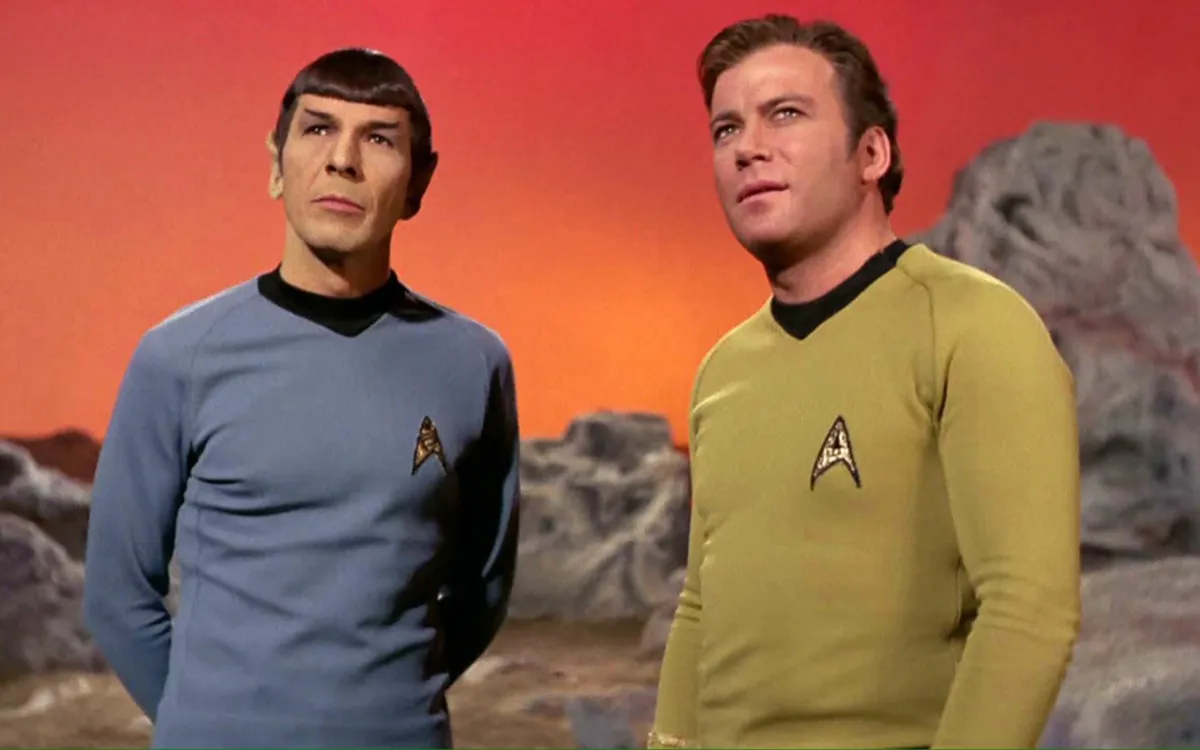
Best ‘Star Trek: The Original Series’ Episodes, Ranked
Created by Gene Roddenberry, Star Trek: The Original Series premiered on NBC on September 8, 1966, and aired three seasons consisting of 79 episodes, many of them classics of sci-fi entertainment.
“You know. 1966? 79 episodes, about 30 good ones,” said Futurama ’s Philip J. Fry to Leonard Nimoy, who’s alive in that universe as a head in a jar.
Of course, that’s Fry’s opinion. I would suggest watching all of them, but that’s not the assignment. So, read on for a list of the 15 best Star Trek: The Original Series episodes ranked.
15. “Tomorrow Is Yesterday” (season 1, episode 19)
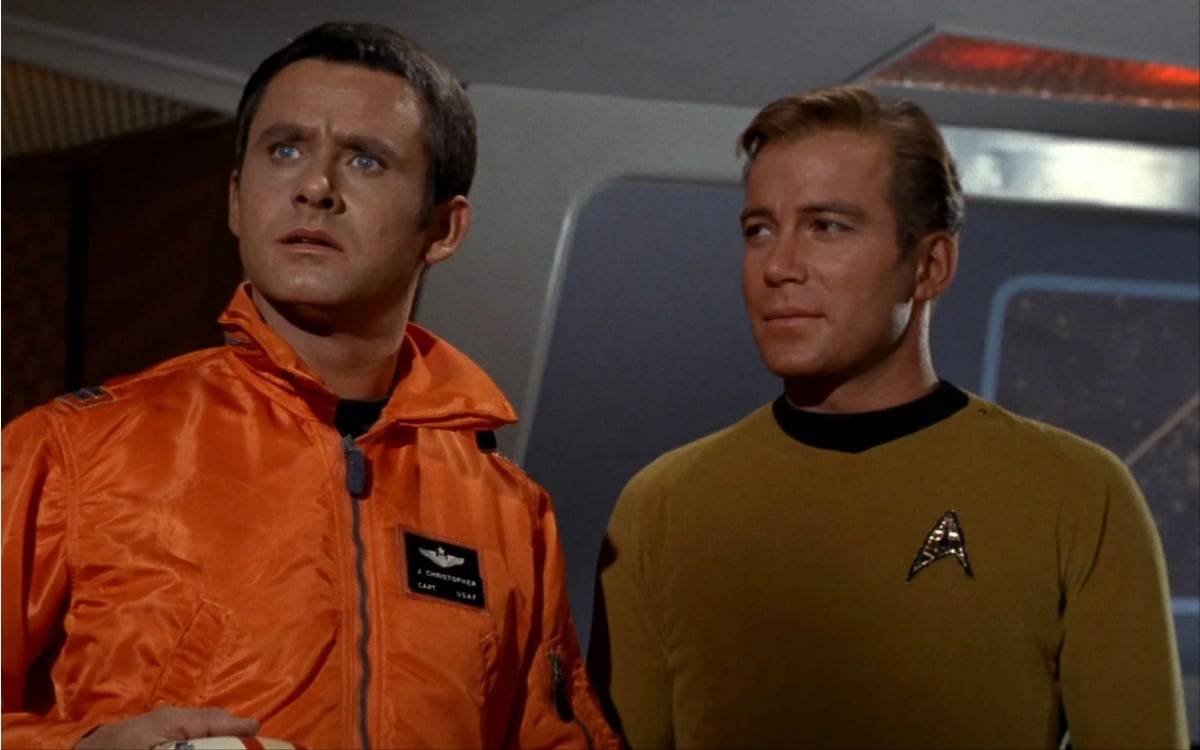
In this episode, an encounter with a black hole sends the Enterprise to 20th-century Earth, where it is seen by an Air Force pilot, whose son has an important role to play in the future. Written by longtime Trek scribe D.C. Fontana, “Tomorrow Is Yesterday” is notable for being the first episode written solely by a woman. Although she had previously written the teleplay for “Charlie X,” Roddenberry received the writing credit.
14. “Plato’s Stepchildren” (season 3, episode 10)
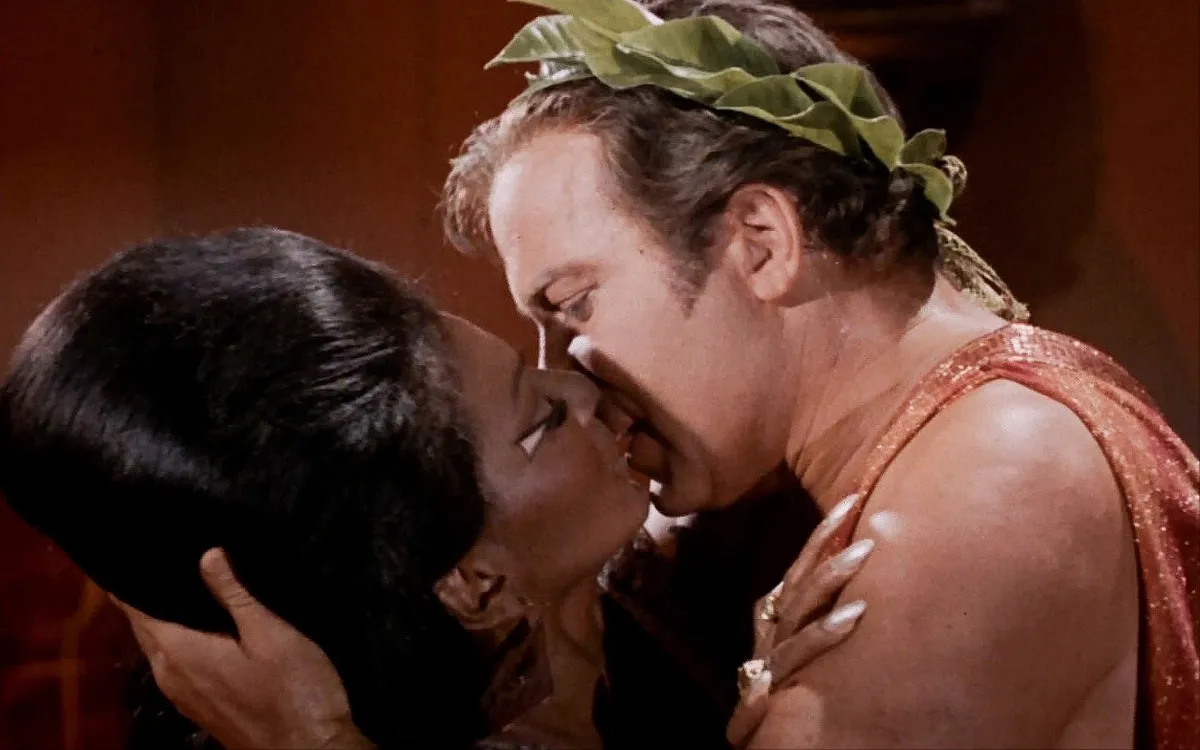
After Leonard McCoy (DeForest Kelley) saves a tyrannical king’s life, he uses torture to prevent him from returning to the Enterprise. From a feminist point-of-view, “Plato’s Stepchildren” isn’t the best Trek episode ever made due to this. Still, I’ve included it on this list as it was a culturally significant episode as the first interracial kiss between Black and White actors on scripted American television.
13. “Catspaw” (season 2, episode 7)
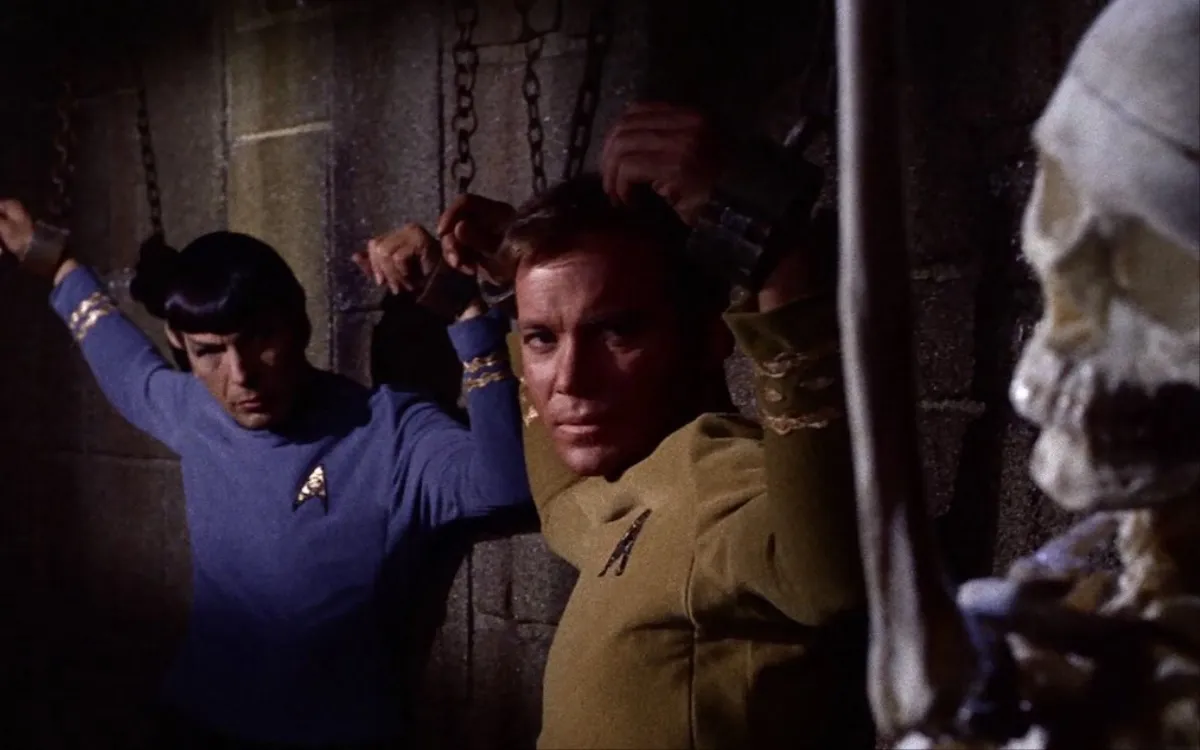
“Trick or treat, Captain?” Yup, “Catspaw” is Trek ‘s only Halloween episode. When the Enterprise discovers alien beings disguised as humanoids on Pyris VII, the aliens erect a haunted house—complete with a dungeon, eerie fog, witches, and black cat—to prevent Jim Kirk (William Shatner) from discovering their true plan: conquering the galaxy. Maybe you’ve heard this is one of the series’ worst episodes, but I think it’s spooktastic fun, written by Psycho novelist Robert Bloch.
12. “Operation — Annihilate!” (season 1, episode 29)
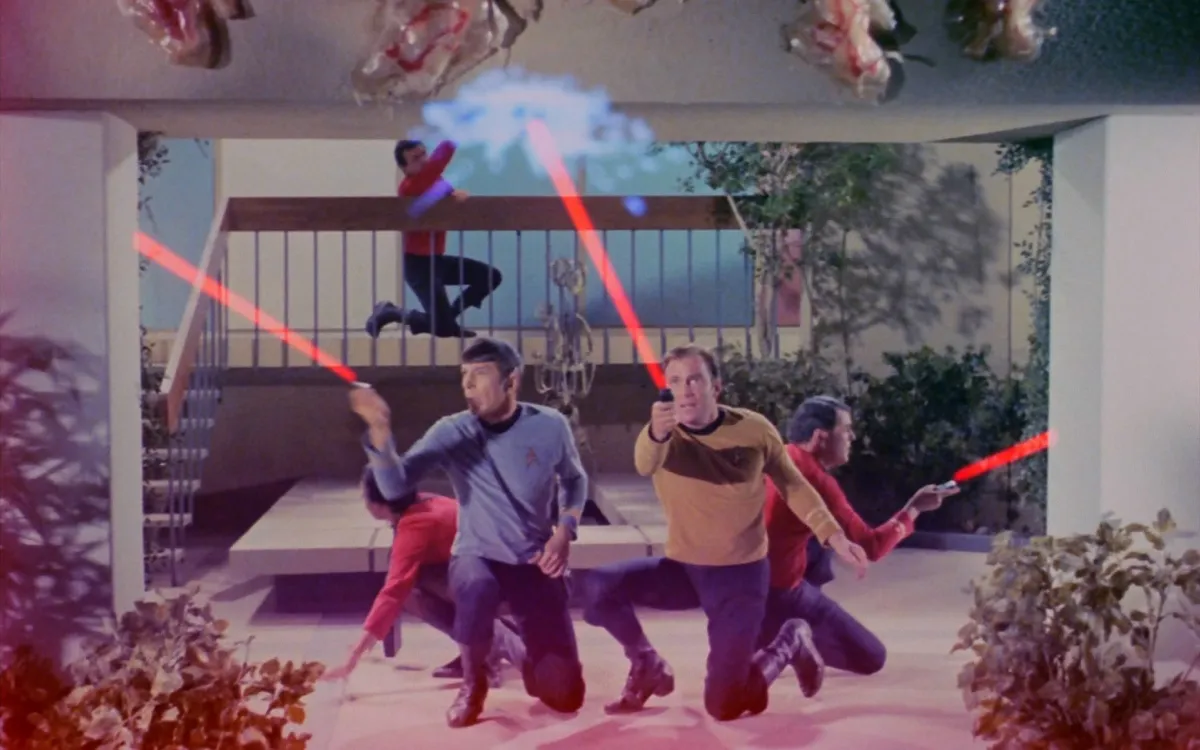
In “Operation — Annihilate!,” behavior-altering parasites cause mass hysteria, destroying the civilizations of several planets. When the Enterprise arrives at the Federation colony where Sam Kirk (Shatner) lives, it’s too late: Sam has already been pancaked. To kill the parasites without harming the hosts, McCoy devises a light treatment that he tests on Spock (Nimoy), causing the Vulcan to go blind temporarily. But, Vulcans are like cats and have inner eyelids, preventing Spock from going completely blind.
11. “The Cage” (first pilot)
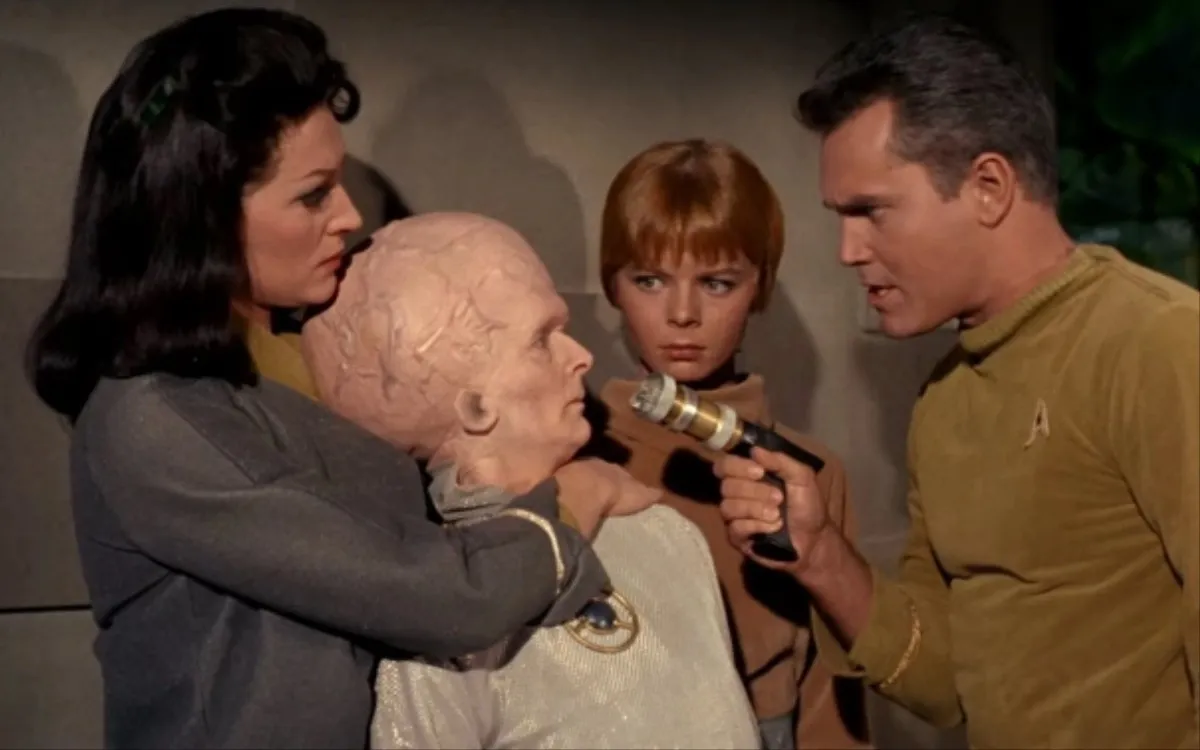
In Trek ‘s rejected pilot, “The Cage,” Christopher Pike (Jeffrey Hunter) and the Enterprise investigate an 18-year-old shipwreck and encounter a race of telepathic aliens, the Talosians, who want a human specimen for their menagerie. Although it included Spock and some core Trek themes, it also differed tremendously from what viewers saw in “Where No Man Has Gone Before.”
When CBS All Access ordered Star Trek: Strange New Worlds in May 2020, producer Henry Alonso Myers called it the longest pilot to series pick up in TV history in Paramount+’s YouTube video “ Bringing A Series to Life .”
10. “The Naked Time” (season 1, episode 4)
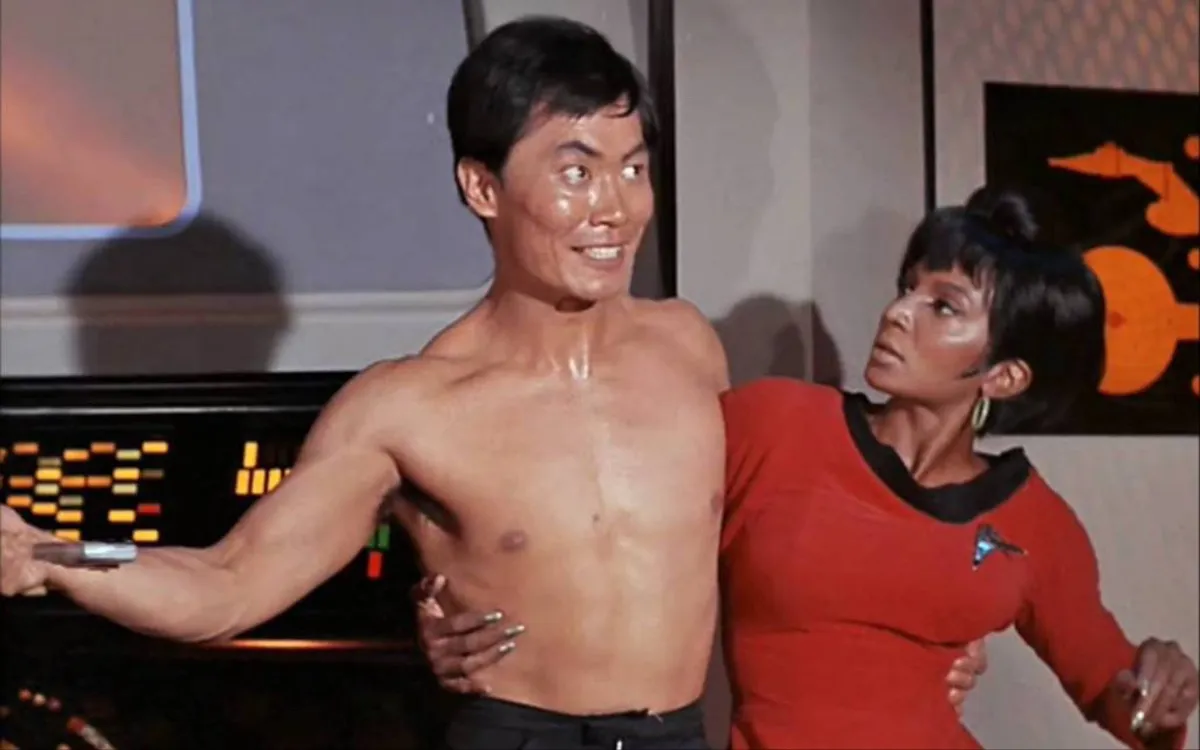
In this Hugo Award -nominated episode, while investigating the Psi 2000 research team’s deaths, the Enterprise crew becomes infected with a virus that provokes irrational and emotional behavior. Spock cries, Christine Chapel (Majel Barrett-Roddenberry) admits her love for Spock, and Hikaru Sulu (George Takei) threatens the bridge with his fencing foil, only to be foiled by a Vulcan nerve pinch (the first time one was seen onscreen).
In an interview, Takei told CJAD host Peter Anthony Holder that “without question,” his favorite episode was “Naked Time.”
9. “I, Mudd” (season 2, episode 8)
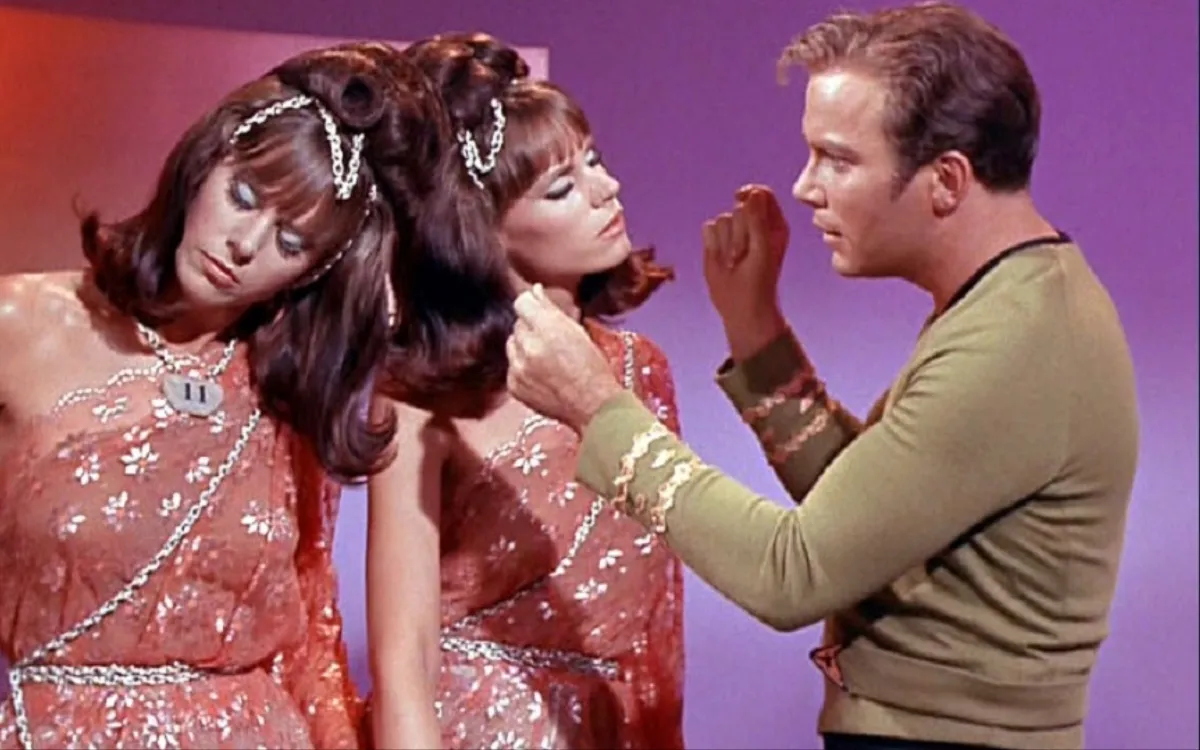
“I, Mudd” is the Enterprise’s second encounter with Harcourt Fenton Mudd (Roger C. Carmel). In the episode, Norman (Richard Tatro), an android, masquerades as a crewmember, steals the ship and takes it to an unmapped planet, where the landing party finds King Mudd the First, proudly displaying the beautiful female androids created for human amusement. However, all is not what it seems; that twist makes this episode great.
8. “The City on the Edge of Forever” (season 1, episode 28)
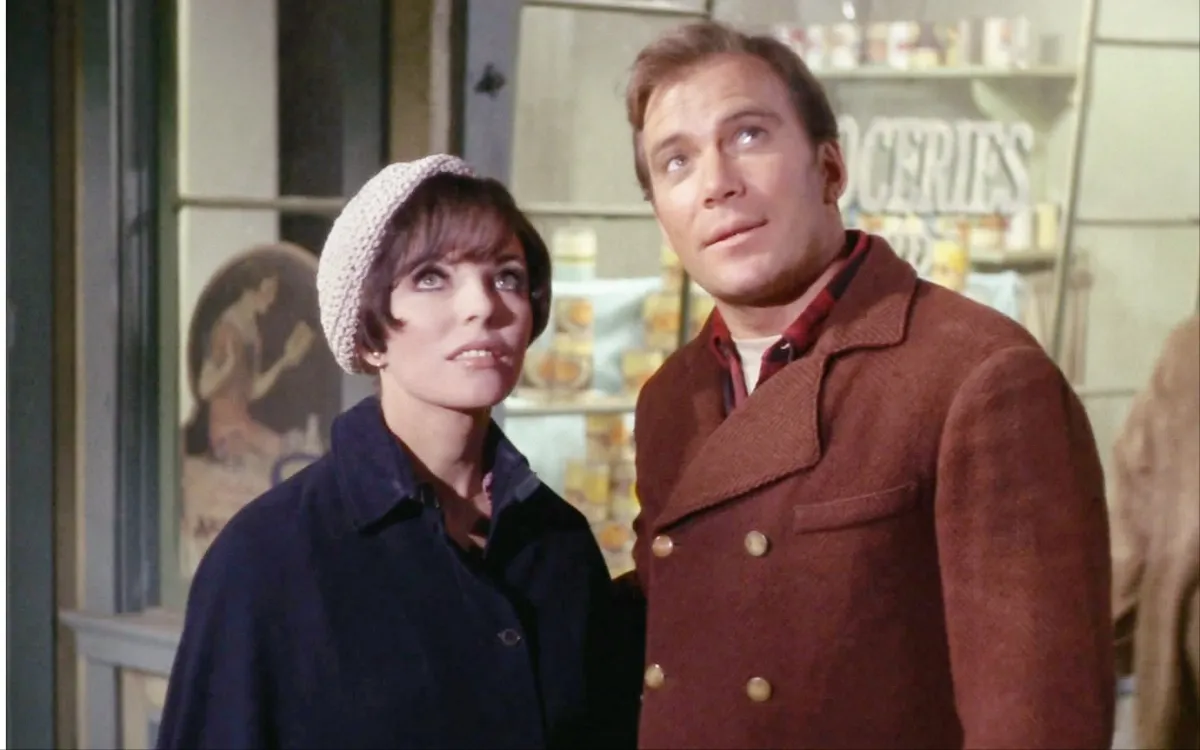
Widely considered one of the best TOS episodes, “The City on the Edge of Forever” was penned by Harlan Ellison (although it went through several rewrites, much to his distaste). In the episode, a mentally compromised McCoy steps through a time portal into Depression-era NYC, changing history. Kirk and Spock then travel through the portal, hoping to prevent McCoy from altering the timeline. While waiting for him, Kirk meets a social worker, Edith Keeler (Joan Collins), and falls in love, only to learn that her life is the one McCoy saved to alter the timeline. Kirk must decide between the girl and the timeline.
7. “The Devil in the Dark” (season 1, episode 25)
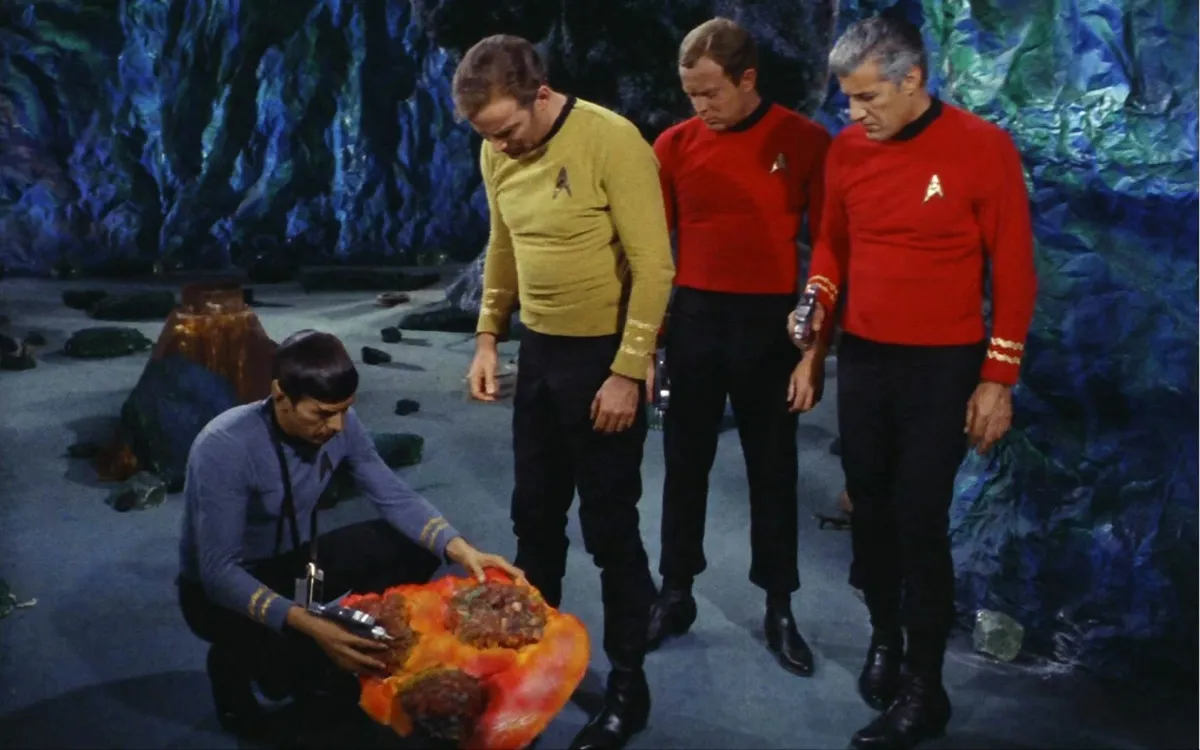
While investigating the deaths of Janus VI miners, the Enterprise discovers a new species, the Horta, and Spock mind melds with a nonhumanoid alien for the first time, learning the alien had been willing to share the planet until oblivious humans destroyed her eggs. With Spock as a mediator, the miners and the Horta can now communicate effectively and negotiate a treaty. The monster has changed in the miners’ eyes to a cute little devil, making the episode a great lesson in the dangers of stereotyping.
6. “Balance of Terror” (season 1, episode 14)
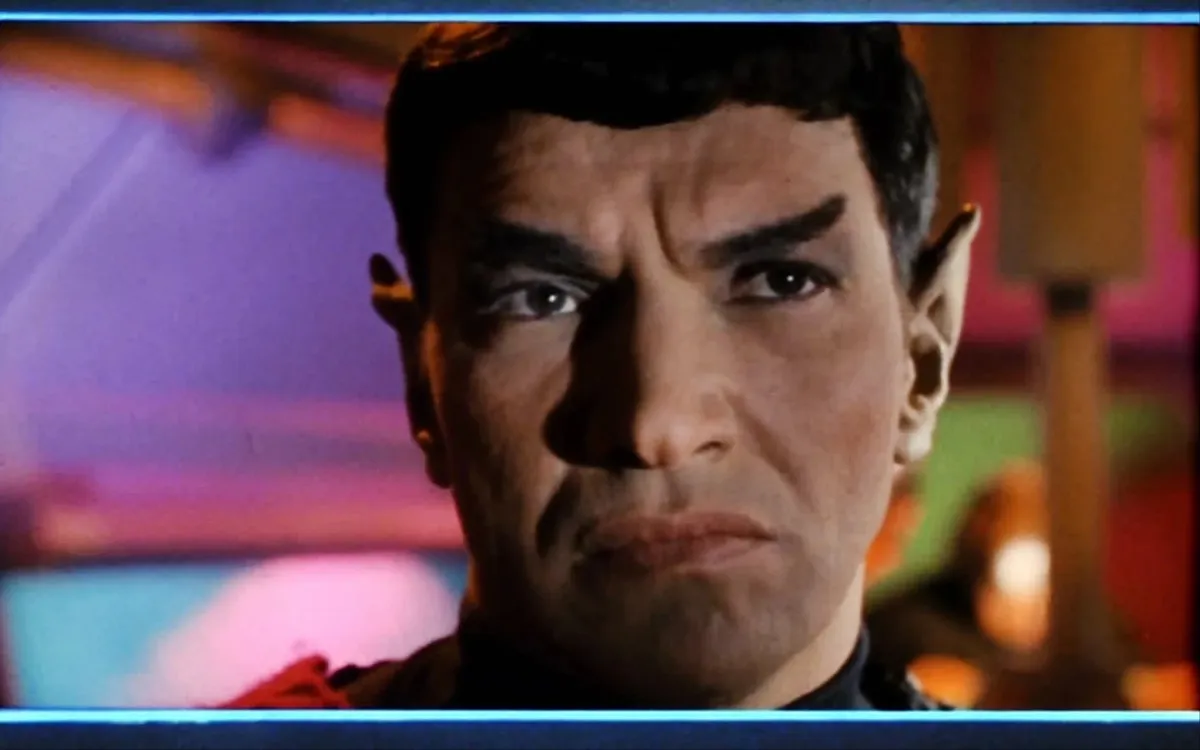
“Balance of Terror” is the first time Starfleet sees the Romulans and learns they look exactly like the Vulcans. When the Enterprise is alerted that a Romulan bird-of-prey has destroyed a Federation outpost guarding the Neutral Zone, Starfleet orders Kirk to destroy the ship. Meanwhile, the Romulan commander (Mark Lenard) is ordered by his people to do the same. Regularly topping best-of lists as a commentary on war and the prejudices it creates, the episode is notable for what the Romulan commander tells Kirk: “You and I are of a kind. In a different reality, I could have called you friend.”
5. “Space Seed” (season 1, episode 22)
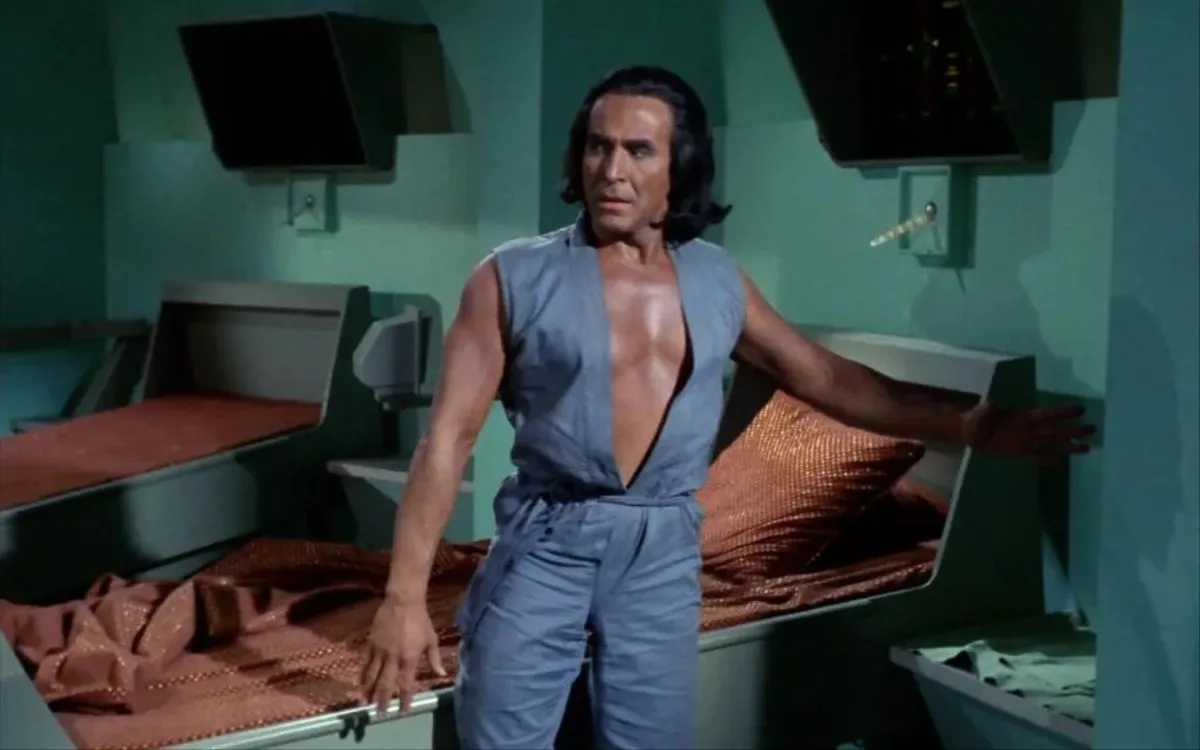
“Space Seed” is the first appearance of a longtime Kirk foe: Khan Noonien Singh (Ricardo Montalbán), a genetically engineered strongman and leader in Earth’s Eugenics War. The magnetism of Montalbán (not to mention his thick, thick chest) is worth the price of admission alone. The episode is also an essential story for Star Trek II: The Wrath of Khan , Star Trek: Strange New Worlds , and several Star Trek: Enterprise episodes.
4. “Arena” (season 1, episode 18)
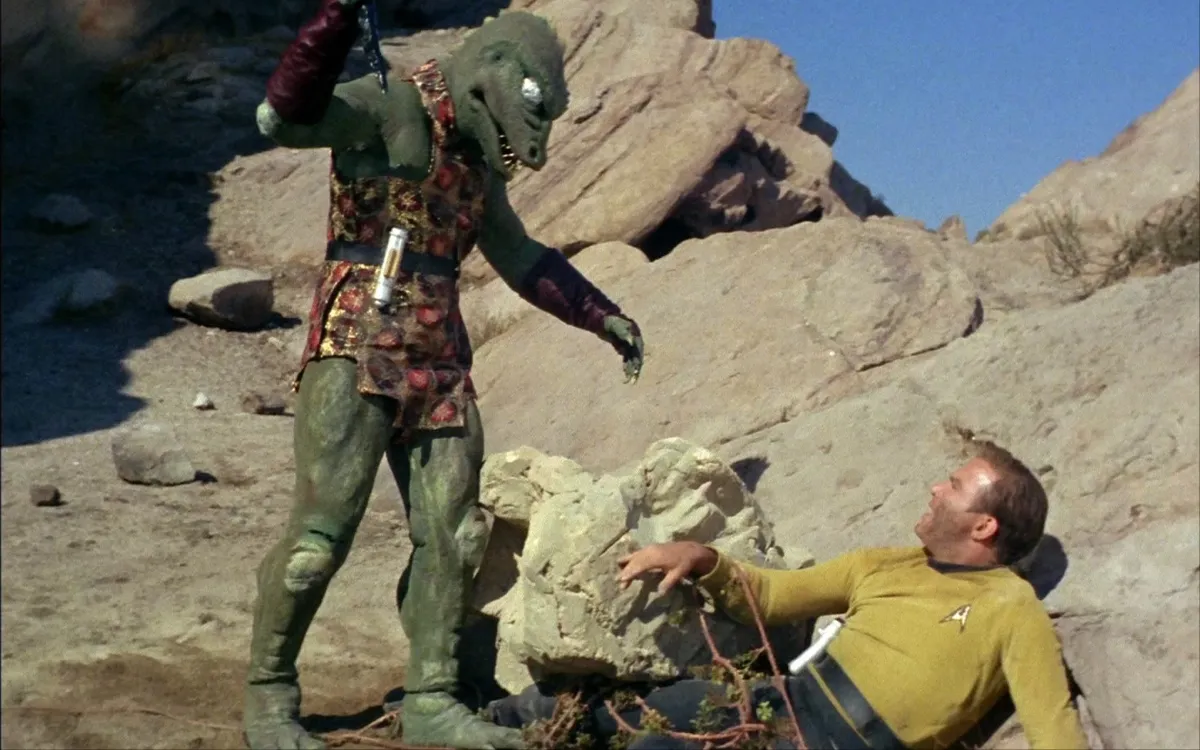
“Arena” features one of the most memorable TOS sequences , where Kirk fights a green lizard-like creature with glowing red eyes, wearing a gold, flower tunic. Although it’s a battle to the death, in the end, Kirk chooses mercy for his opponent over landing a killing blow—one of the enduring themes of Trek . Oscar-winner Wah Chang built the famous neoprene-latex lizard suit, now owned by Ben Stiller.
3. “Amok Time” (season 2, episode 1)
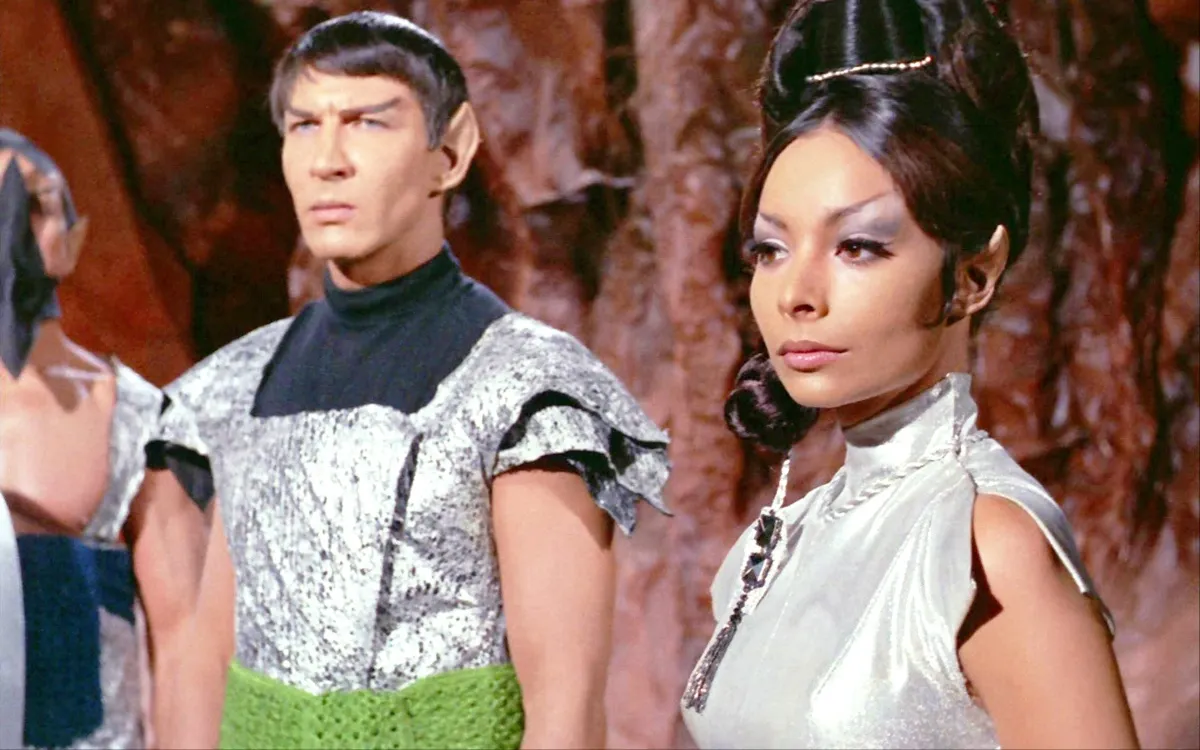
In “Amok Time,” Spock reveals that to deal with powerful sexual urges—without emotion, of course—Vulcans are ritually wedded in childhood. Still, this sublimation isn’t enough to stop pon farr every seven years when Vulcan men must mate or die. Upon learning this, Kirk rushes Spock to Vulcan, where Spock learns that his fianceé T’Pring (Arlene Martel) wants to marry someone else.
An iconic episode, it was the first to use the Vulcan salute, introduce the concept of pon farr, and feature Pavel Chekov (Walter Koenig). Lastly, shout out to the late composer Gerald Fried: the music is as iconic as the episode itself, especially the music for the Vulcan kal-if-fee ritual.
2. “The Savage Curtain” (season 3, episode 22)
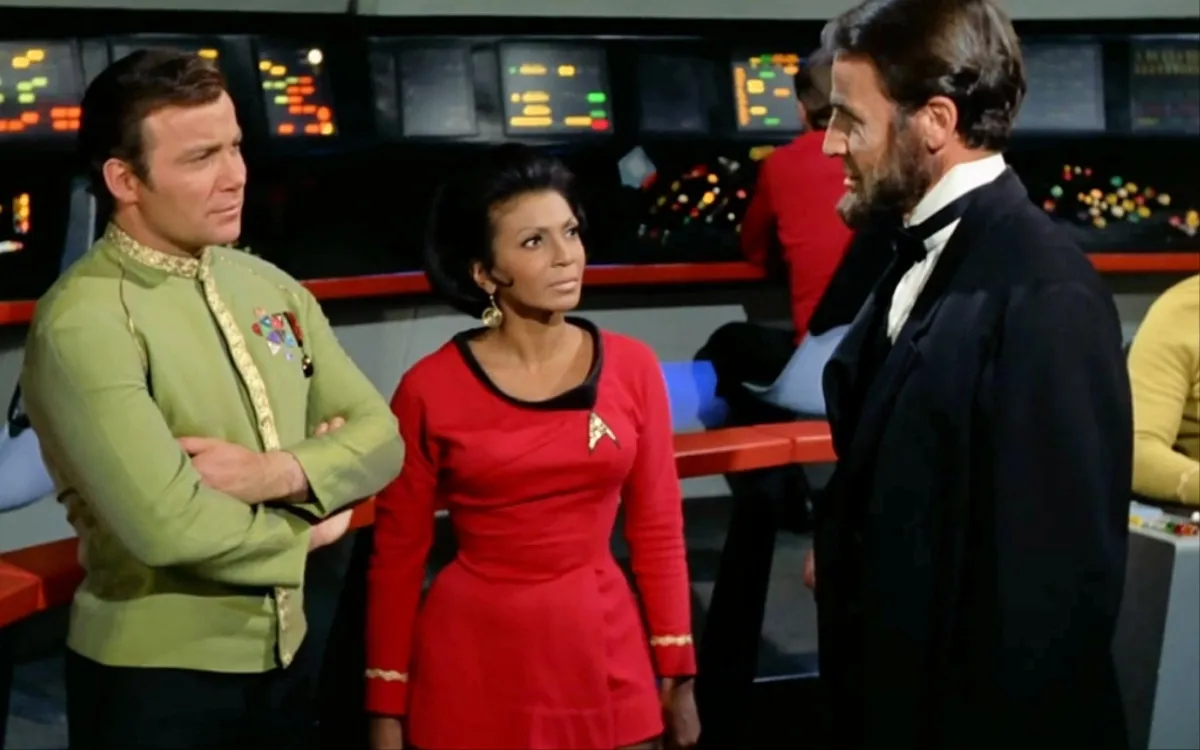
“The Savage Curtain” opens with the Enterprise running scans on a strange planet, when Abraham Lincoln (Lee Bergere) appears on the viewscreen and comes aboard the ship. As the captain admires Lincoln, of whom he says, “I think of all our heroes on Earth, he is the most loved today,” the US president is racist to Uhura. What makes this episode interesting is that while it seems to discredit the myth of the American Civil War with Lincoln’s racism, it also perpetuates the myth of American nationalism by classifying him as “good.”
1. “Journey to Babel” (season 2, episode 10)
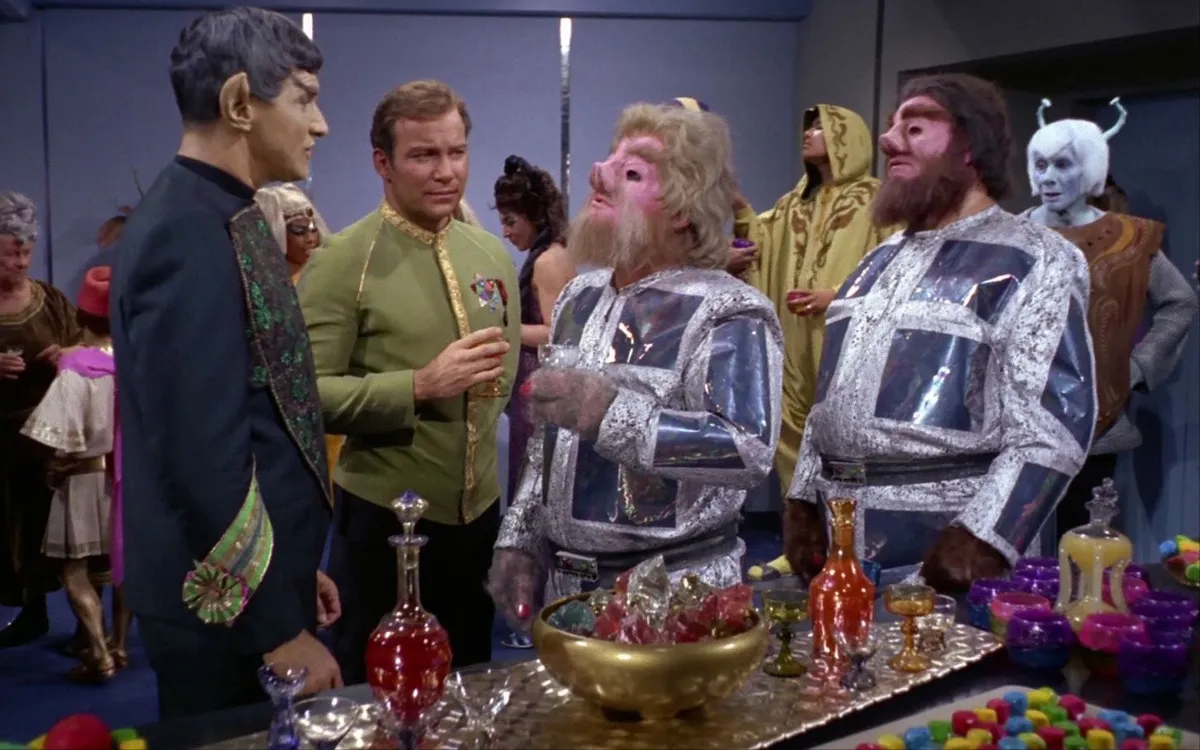
Written by the late, great Fontana, “Journey to Babel” may be one of her most iconic episodes. In it, the Enterprise is transporting a widely divergent group of ambassadors to the Babel Conference, including Spock’s parents, Sarek (Lenard) and Amanda (Jane Wyatt), relationships that were explored in-depth in Star Trek: Discovery . When the Tellarite Ambassador shows up murdered, Sarek becomes the center of the episode, showcasing how skillfully Fontana can navigate drama.
Also notable, the episode introduces Andorians and Tellarites.
(featured image; CBS)
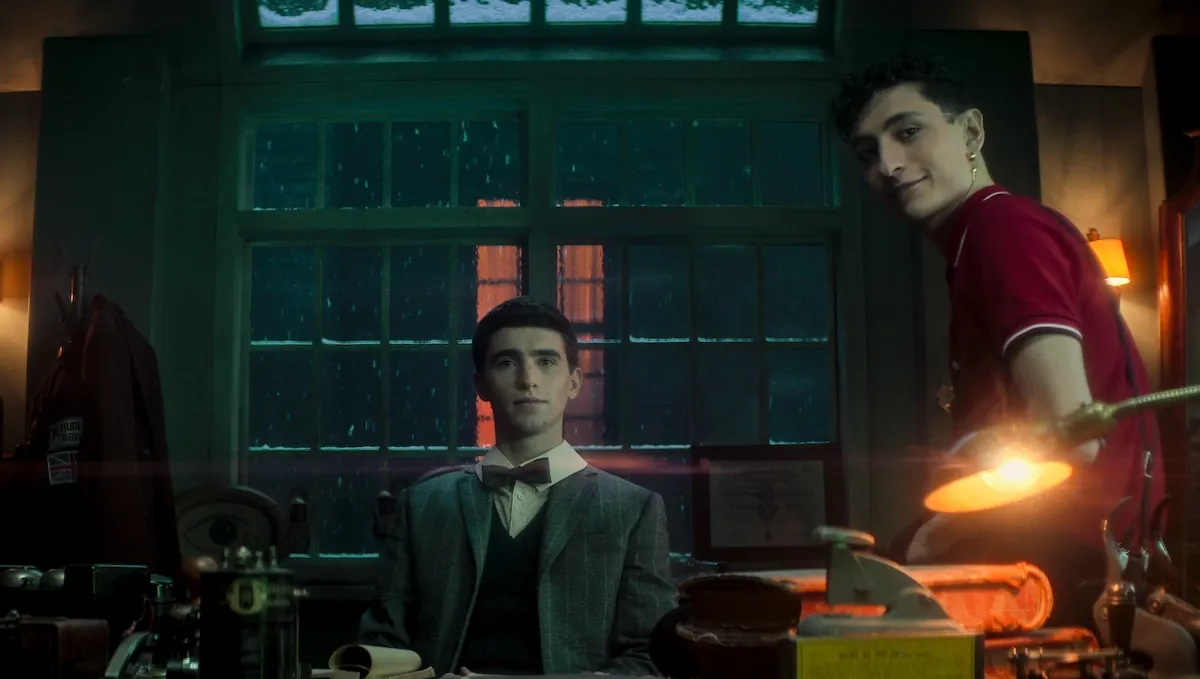
- Search Please fill out this field.
- Newsletters
- Sweepstakes
The best Star Trek series, ranked
Ready to settle in and watch some Star Trek episodes? Since there are so many, we’ve ranked all of the different series to help you get started on your quest.
Star Trek is one of the greatest franchises ever created. If you're new to the world of transporters and holodecks, you have so much wonderful content to catch up on — of course, some would say too much content.
Since there are over 850 episodes and counting (all of which you can stream on Paramount+ ), watching all of Star Trek can be more difficult than fighting a Gorn in the desert. To make things easier for you to get started, we've ranked every series (besides the short-form series Short Treks ) of this long-running franchise. Some of these choices were a bit daunting to play favorites with, but, like Jim Kirk, there's no belief in the no-win scenario.
Without further ado, here's our list of every Star Trek series ranked from worst to best.
11. Star Trek: Picard (2020–2023)
Star Trek: Picard was meant to be like comfort food to fans of Star Trek: The Next Generation . And whether fans were turned off by the changes in franchise direction with shows like Discovery or just wanted to see Patrick Stewart back in action, Paramount clearly thought this show would be almost universally beloved.
That didn't happen . The warm and fuzzy feeling of seeing a few familiar faces in the first season evaporated because of an often-confusing plot about androids. The second season continued this confusion with a time-travel story that often bordered on incoherence. While many Star Trek shows take a few seasons to hit their stride, it was shocking that so much of this relatively short series was seemingly created with "make it so-so" in mind.
10. Star Trek: The Animated Series (1973–1974)
If you're in the right mood (or you've been sipping on some Saurian brandy), Star Trek: The Animated Series has some wacky entertainment value. Any given episode had the writers throwing in stories like a giant version of a beloved character. And the animators threw some fun curveballs, including making the embodiment of evil into a shirtless hottie that would make even shirtless Kirk jealous.
However, this animated show was often caught between two very different worlds. It wasn't fully a return to the (relatively) grounded exploration of space, science, and morality of The Original Series . And it didn't fully lean into the chaotic possibilities of a cartoon world (something Lower Decks would later handle much better). So, while more and more elements of The Animated Series have become canonical thanks to shows like Discovery , and it's fun to hear the voice acting of the Original Series cast, this cartoon is one that all but the most hardcore fans can skip.
9. Star Trek: Enterprise (2001–2005)
Despite what you might have heard, Star Trek: Enterprise is not a bad show. It just didn't start as a very good show. The series was tragically canceled after the fourth season, which was arguably when it had just begun to hit its stride (thanks in part to longer story arcs and a really fun glimpse into Trek 's popular Mirror Universe).
At the end of the day, Enterprise is a show best enjoyed by Star Trek fans that like to pore over the Memory Alpha wiki and familiarize themselves with Trek minutiae. As a prequel show, it laid the groundwork for everything from Starfleet policy to alien interactions that other shows explore in more detail. If you don't have a shot at winning any Star Trek trivia contests at your local bar, it's still worth watching how captivating Scott Bakula can be in the captain's seat.
8. Star Trek: Prodigy (2021–present)
Star Trek: Prodigy was very difficult to rank. Unlike the other two Trek cartoons, this series was explicitly designed for younger audiences. Paramount clearly wants to use this show as a gateway for these younger fans to explore the wider world of Star Trek , but there are enough elements (most notably the return of Kate Mulgrew , reprising her role as Captain Janeway via a holographic form) to keep veteran franchise fans invested.
Ultimately, your enjoyment of this series will be largely dependent on how much you enjoy animated/YA entertainment. If nothing else, you should check out the first two episodes of this show to see just how beautiful the CGI animation can get.
7. Star Trek: Discovery (2017–present)
If Enterprise is the Star Trek show cut off too soon, Discovery may very well be the first Star Trek show to outlive its welcome, though it will end after its fifth season . There are many things the show gets right, from nifty effects to quirky characters to amazing casting (seriously, Sonequa Martin-Green is electrifying whenever she is on screen).
The show veers from a disjointed-but-interesting first season to a mesmerizing second season, which gets a real shot in the arm by introducing Captain Pike (played by the inimitably charming Anson Mount ) and Spock (played as a perfect homage to Leonard Nimoy by Ethan Peck). Later seasons, however, prove that the series can't get away from galactic-level threats, and character drama begins overriding plot development enough that we want to slingshot around the sun and return this series to its earlier roots.
6. Star Trek: Voyager (1995–2001)
Like many Trek series, Star Trek: Voyager had a rocky beginning, and it was often overshadowed by the excellent Deep Space Nine . Ironically, Voyager dramatically improved with what could be a cynical casting stunt: adding the alluring Jeri Ryan (constantly wearing a catsuit, no less).
Though it really looked like a desperate ratings stunt, Ryan turned the reformed Borg Seven of Nine into the most interesting character on the show. And, despite their alleged clashes behind the scenes, the actress helped to elevate every scene she shared with Kate Mulgrew. Between the new cast member, improved writing, and Mulgrew being nothing short of a damned icon, Voyager soon became appointment television, and it's definitely worth binge-watching for modern audiences.
5. Star Trek: Lower Decks (2020–present)
Lower Decks is an impressive show for many reasons, including the fact that its execution elevates its initial premise, which focuses on the lives of the lower-level staffers aboard the starship. Because showrunner Mike McMahan previously wrote for Rick and Morty and the animation takes its cues from the cartoon adventures of Rick Sanchez, many fans may have assumed Lower Decks would simply be " Star Trek meets Rick and Morty ."
Thankfully, that's not the case. Aside from animation similarities, the main element these two cartoons have in common is a breakneck, borderline chaotic pace. But as entertaining as it can be, Rick and Morty is an often nihilistic show with gags revolving around how nothing really matters. Lower Decks , however, is a lighthearted series that serves as the cure to modern Trek . If you've dismissed other contemporary series such as Discovery and Picard because they are grim, violent, and serious, Lower Decks is a wonderfully lighthearted alternative that is never afraid to poke fun at its own franchise.
4. Star Trek: Strange New Worlds (2022–present)
Star Trek: Strange New Worlds is a truly pleasant surprise to fans of the franchise. Set years before Captain Kirk sat in that famous chair, we see Capt. Christopher Pike (Anson Mount reprising the role) lead the U.S.S. Enterprise into bizarre adventures alongside some familiar characters (Ethan Peck returning as Spock, for example) and a few new ones.
Part of what helps this show shine is that it marks a return to episodic Trek in that every installment is a self-contained adventure as opposed to other newer series like Discovery and Picard , which build entire seasons around a single plot. The characters all ooze with the same swashbuckling charm of The Original Series characters, and we can't wait to see more of their adventures. We also can't wait to see more of Anson Mount's amazing hair (arguably the most awesome practical effect in the franchise).
3. Star Trek: The Next Generation (1987–1994)
Star Trek: The Next Generation has the dubious honor of being the first Trek show where veteran fans warn against new fans starting at the very beginning. Early episodes ranged from stupidly horny (planetary inhabitants in the episode "Justice" were barely wearing scraps of clothing) to ridiculously racist ("Code of Honor" may very well be the worst Star Trek episode ever made). Many of these problems stemmed from the fact that despite being called "The Next Generation," the show was trying to recreate The Original Series (right down to using some of the same writers and shamelessly reusing scripts from the scrapped Star Trek: Phase II series).
As fans like to joke, the show got better as Commander Riker's beard got longer. Season 2 was a major improvement, which was then usurped by season 3, which brought in new uniforms, new sets, and Michael Piller to head up the writing team. Just like that, TNG embraced its differences from its famous forerunner (Picard was cerebral whereas Kirk was impulsive, Data yearned for emotion whereas Spock detested it, and so on). At last, the gamble paid off, and the next generation of this franchise ushered in the next generation of Star Trek fans.
2. Star Trek: The Original Series (1966–1969)
What can we say about The Original Series that hasn't been said already? Gene Roddenberry successfully fused science fiction with American pioneer spirit to create his vision of this " Wagon Train to the stars." The episodes were both fun and thought-provoking in equal measure, and William Shatner as Kirk and Leonard Nimoy as Spock, among many others, turned in performances that seared themselves into our collective pop culture consciousness.
The Original Series offered social commentary about racism, imperialism, and (often to Spock's annoyance) the human condition. And the blend of big acting, ambitious sets, and poignant plots helped this show become something truly transcendent. The OG Star Trek shaped not only the future of the franchise but television itself, and it's not hard to see why it continues to win over new generations of fans year after year.
1. Star Trek: Deep Space Nine (1993–1999)
Placing Star Trek: Deep Space Nine in the top spot is perhaps a contentious decision. However, this series did more than measure up to the quality of The Next Generation (a lofty feat in and of itself). The show also made a number of storytelling and production choices that have helped DS9 seem more relevant in recent years than ever before, including tackling issues about race, religious fundamentalism, and war on a regular basis.
Perhaps the main way DS9 feels so pertinent is that the show broke the longstanding Trek rule of making only standalone episodes. As the powers that be focused more on creating their next show, Voyager , DS9 showrunner Ira Steven Behr was able to get away with creating long story arcs and frequent episode callbacks. The end result of this is that Deep Space Nine is the first of the pre-streaming era Trek shows that is perfect for binge-watching.
Related content :
- Star Trek: Discovery reveals season 5 first look and on-set Easter eggs
- Jack Quaid formed a 'Spoimler' bromance with Ethan Peck on Star Trek crossover event
- Star Trek Day pays tribute to Uhura actress Nichelle Nichols in moving in memoriam
Related Articles
- Stranger Things Season 5
- Deadpool and Wolverine
- The Batman 2
- Spider-Man 4
- Yellowstone Season 6
- Fallout Season 2
- Entertainment
The 10 best Star Trek: The Original Series episodes, ranked

It’s hard to imagine today, but back in the late 1960s, the original Star Trek was not considered a hit. The ambitious science fiction series was constantly on the brink of cancellation and was cut short only three years into its planned five-season run.
10. Mirror, Mirror (season 2, episode 4)
9. a taste of armageddon (season 1, episode 24), 8. the menagerie, parts i and ii (season 1, episodes 12 and 13), 7. the doomsday machine (season 2, episode 6), 6. the corbomite maneuver (season 1, episode 11), 5. the devil in the dark (season 1, episode 26), 4. the trouble with tribbles (season 2, episode 15), 3. where no man has gone before (season 1, episode 4), 2. the city on the edge of forever (season 1, episode 29), 1. balance of terror (season 1, episode 15).
However, it’s important to put Trek ’s apparent failure into historical context as, given that most markets in the U.S. had only three television channels to choose from, even a low-rated show like Star Trek was being watched by about 20% of everyone watching television on a Thursday night, or roughly 10 million households. This year’s season of HBO’s Succession was viewed by roughly 8 million households a week , which makes it a hit by today’s standards. Star Trek ’s audience only grew once it went into reruns in the early 1970s, and by the time Star Trek: The Motion Picture hit theaters in 1979, it was a genuine cultural phenomenon. Today, the Star Trek franchise is considered one of the crown jewels of the Paramount library.
Though arguably outshined by its most prosperous spinoff, Star Trek: The Next Generation , Star Trek: The Original Series holds up remarkably well for a vision of our future imagined nearly 60 years in our past. It’s a space adventure series that tackles social or political issues from what was, at the time, a daring and progressive perspective informed by the contemporary civil rights movement, sexual revolution, and backlash against the Vietnam War. Conveying these values through fanciful science fiction didn’t only allow its writers to get away with a lot of subversive messages, it also delivered them in a way that remains fun to watch decades later — fun enough that fans are willing to forgive when its ideas, or its special effects, crumble under modern scrutiny.
- 7 best Star Trek villains, ranked
- 10 most underrated The X-Files episodes ever, ranked
- 10 best episodes of Star Trek: Enterprise, ranked
These 10 episodes, however, unquestionably stand the test of time, and thanks to the continuity-light nature of mid-20th century television, any one of them could be your first Star Trek episode. (Be aware, however, that the order in which classic Trek episodes are listed varies depending on the source. For our purposes, we’re using the numbering from streaming service Paramount+ .)
Even if you’ve never seen an episode of Star Trek , you’re bound to be at least a little familiar with Mirror, Mirror through cultural osmosis. In this 1967 classic, Captain Kirk (William Shatner), Dr. McCoy (DeForest Kelley), Lt. Commander Scott (James Doohan), and Lt. Uhura (Nichelle Nichols) are accidentally transported to an alternate universe, where they encounter dastardly evil versions of their beloved shipmates. Instead of the benevolent United Federation of Planets, this ship serves the fascist Terran Empire, which threatens to annihilate a peaceful planet for refusing to submit to itsrule. Our heroes are forced to pose as their evil counterparts while they search for a way home and try to avert the genocide they’ve been ordered to perform.
This all sounds heavier than it is — like much of classic Trek , Mirror Mirror is very camp, with brightly colored costumes, over-the-top performances, and a general sense of fun. The cast is clearly having a ball playing the wicked versions of their characters (or playing the good versions of their characters playing the wicked versions), and it’s no wonder why multiple future incarnations of Trek would return to the Mirror Universe, usually for wacky adventure episodes. (For a more grim and brutal take on this same concept, visit the back half of Star Trek: Discovery ’s first season.) However, Mirror, Mirror still comes complete with Trek ’s famous humanist optimism, as Kirk tries to convince this universe’s menacing, bearded Spock (Leonard Nimoy) that regimes ruled by fear are unsustainable and, therefore, illogical. Given enough time, peace and cooperation will always win out over hate and violence.
A Taste of Armageddon may not appear on many “Best Of” lists, but it’s 100% pure, uncut Star Trek . In this episode, Kirk and company visit Eminiar VII, a seemingly peaceful planet that is, in fact, embroiled in a centuries-long war with a neighboring world. Rather than fire actual bombs at each other, the combatants conduct simulated attacks, determine the hypothetical death toll, and then order the “dead” citizens to report to disintegration chambers. When Kirk and his landing party are recorded as casualties, they decide to put an end to Eminiar VII’s supposedly “civilized” method of warfare.
While Kirk arguably has no right to interfere with how this sovereign planet conducts its affairs, the point of A Taste of Armageddon is to reflect on America’s attempt to make constant military conflict more palatable, or even invisible to the average American. Or, in a larger sense, it’s a commentary on the ease with which a culture can become accustomed to death and violence, so long as it’s part of an established routine. Because these simulated bombings leave homes, industry, and even the military infrastructure itself totally unharmed, it’s easy to forget that Eminiar VII is even at war — that is, until it claims your life or the life of someone you love.
When even these losses are framed as necessary sacrifices to maintain normalcy, it minimizes the incentive to make peace. Kirk (and, by extension, writers Robert Hamner and Gene L. Coon) argues that war is revolting no matter how much you dress it up, and that it must be brutal, terrifying, and omnipresent for all involved, or else it will never stop. The past half-century of perpetual U.S. military intervention abroad has proven this thesis to be chillingly accurate.
If you’re watching Star Trek on Paramount+, you’ll notice that the episode it has listed as “season 1, episode 1,” The Cage , isn’t exactly the show you were expecting. Instead of the famous Captain James T. Kirk, the USS Enterprise is under the command of Captain Christopher Pike (Jeffrey Hunter), and apart from Mr. Spock — who smiles?! — the rest of the crew is also unfamiliar. That’s because The Cage is Star Trek ’s original pilot episode, which was rejected by NBC, leading to a second pilot being commissioned with a new cast and modified tone. The Cage wouldn’t air as its own episode until 1988, but during production of Star Trek ’s first season in 1966, a budget crunch led to writer/creator Gene Roddenberry repurposing footage from the already-completed pilot into a new script in the form of flashbacks.
This fiscally minded decision endowed Star Trek and its characters with a history, instantly making the universe a bigger and more interesting place. The two-part Menagerie sees Spock, the only remaining character from the original cast, commandeer the Enterprise for the sake of its previous captain, Christopher Pike. On the way to a forbidden planet, Spock uses mysterious footage from an adventure 13 years in the past to explain his rash actions.
If you’ve already watched The Cage , then The Menagerie will seem like a glorified clip show, in which Kirk and company spend half the runtime watching a previous episode. However, before the streaming era, The Cage was usually the last episode of The Original Series that a fan would see, rather than the first. In recent years, however, The Cage and The Menagerie have taken on a new role, as bookends to the adventures of Christopher Pike, as portrayed by Anson Mount on modern spinoff Star Trek: Strange New Worlds . Strange New Worlds (as well as the second season of Star Trek: Discovery ) take place after The Cage , but before The Menagerie , allowing us to get to know Kirk’s predecessor in his own context, as well as developing the bond between Pike and Spock that will eventually drive the Vulcan to mutiny. Even without any of this context, however, The Menagerie is an exciting two-hour event, an eras-spanning mystery that will make you wonder why NBC passed on the Star Trek pilot in the first place.
Due to the production constraints of 1960s television, the original Star Trek didn’t often aim for large-scale, awe-inspiring space action. The Doomsday Machine is the closest that classic Trek ever came to “epic,” and as compelling a story as it is, it’s also Exhibit A as to why such a thing was impractical with the resources available. Though its original effects required no small amount of ingenuity (they couldn’t afford to give their Enterprise model battle damage, so they bought one off the rack from a toy store and distressed it), the results look mighty corny on a modern high-definition television.
Still, the episode gained fame as boasting the largest-scale action of the series, as the Enterprise teams up with her badly damaged sister ship, the USS Constellation, to take on a huge planet-eating weapon. It also presages a theme that would become common in Star Trek feature films , as the Constellation’s grief-stricken Commodore Matt Decker (guest star William Windom) embarks on a foolhardy quest for revenge against the monster that bested him. (Trek would revisit Herman Melville’s Moby-Dick in Star Trek II: The Wrath of Khan and Star Trek: First Contact .)
The episode still works in a cheesy B-movie sort of way, which some fans would argue is the way it should still be enjoyed. However, when the series was remastered for high definition in the mid-2000s, the decision was made to recreate most of the special effects shots for the series using modern technology, since the originals were never expected to hold up to modern standards. Most of these recreations are very faithful, to the extent that uninitiated viewers might not even realize they’d been replaced. In the case of The Doomsday Machine , however, the producers and effects artists returned to the episode’s original script and attempted to realize writer Norman Spinrad’s initial vision for the space battle sequences. The team at CBS Digital doesn’t sacrifice the overall aesthetic of the series, but they do give us a peek at what The Doomsday Machine — and by extension, the entire Original Series — might have looked like with a feature film budget.
There may be no better introduction to the character of James T. Kirk than The Corbomite Maneuver . The first episode produced after the series was picked up (though it didn’t air until later in the season), The Corbomite Maneuver finds the Enterprise at the mercy of a massive alien vessel and accused of trespassing in its territory. Unable to outrun or outgun his mysterious adversary, Kirk does what he will later become famous for doing — he cheats. Or, rather, he changes the conditions of the contest from one of technological superiority to one of cunning and guile. In the process, we get to learn a bit about how each of the main characters handles the intense stress of a seemingly hopeless scenario, contrasted against the more relatable Everyman Lt. Bailey (guest star Anthony Call). Though the action rarely leaves the bridge of the Enterprise, it is, in its own way, one of the most thrilling episodes of the series.
Moreover, The Corbomite Maneuver sets the tone for Star Trek as a series. It’s an hour of adventure that is punctuated by moments of thoughtful introspection, warm friendship, and corny jokes. Its depiction of Starfleet and the Enterprise are clearly inspired by military tradition, but the message of the episode is one of compassion and patience rather than conquest. These are scientists, not soldiers, and while they experience fear and doubt, none of their human frailties are a match for their curiosity. If this is what the future of humanity looks like, we want to be a part of it.
When Star Trek is running on full thrusters, it is equal parts silly and profound. In The Devil in the Dark , the Enterprise is sent to the aid of a mining colony where workers are being hunted and killed by an unstoppable monster made of rock. We know that the monster is made of rock because the characters say so; It looks a lot more like it’s made of spray-painted Styrofoam and a shag rug. But as the tension rises and the mystery deepens, the goofiness of the rock monster becomes irrelevant, or even a boon to the story.
Though it begins as a hunt for a merciless alien creature, The Devil in the Dark becomes a story about prejudice and the universality of what we (in our limited earthly experience) would call “basic human rights.” This message is conveyed through cheesy 1960s TV production values and some very hammy acting, but the results are pure and unpretentious, the sort of storytelling that is equally impactful on a jaded adult and a wide-eyed child.
Here in the post-post-postmodern 2020s, we’re all total pros at deconstructing genre tropes. The practice of subverting the audience’s expectations as to what kind of story they’re watching or who the good guys and bad guys are wasn’t new in 1967, either, but in the sci-fi film and television of the era, the big scary monster is usually just a big scary monster. The Devil in the Dark exemplifies one of Star Trek ’s most enduring themes: that the unknown might seem terrifying, but if you take the time to understand it, it’s actually beautiful.
Star Trek is always science fiction, but its format offers a lot of flexibility in terms of how to interpret that genre. Even within the course of a single series or season, most Star Trek shows alternate between a variety of tones and secondary genres, from grim political drama to steamy romance, or in the case of this episode, kooky workplace comedy. The Trouble with Tribbles pits Captain Kirk and his gallant crew against their most stubborn foe yet — bureaucratic red tape. Assigned to look after a container of grain that Federation administrators insist is gravely important, the Enterprise becomes entangled in a very silly misadventure involving an invasive species of adorable, self-replicating furballs. For a captain accustomed to dealing with high-stakes diplomacy and galactic defense, this is his worst workweek ever.
As lousy a time as Kirk is having, The Trouble with Tribbles is tremendous fun. It is neither the first, nor the last broadly comedic episode of Star Trek , but it is the gold standard by which all Trek comedies are measured. Like any good Trek, it has stakes, a fun science fiction premise, and charming moments of character, but everything is set just a little bit askew, and the characters have noticed. It isn’t parody, it’s situation comedy, only a situation that you’re unlikely to find yourself in unless you’re the crew of a Federation starship. Almost every subsequent Trek series would chase that Trouble with Tribbles heat at least once ( Star Trek: Lower Decks is basically The Trouble with Tribbles: The Series ), with varying levels of success, but the original remains an untouchable classic.
After The Cage was rejected by NBC, Desilu Studios (under the leadership of comedy queen Lucille Ball herself) took a second swing at the series, with a new cast and a faster paced action-adventure story. This second pilot, Where No Man Has Gone Before , introduces William Shatner as Captain James T. Kirk, as well as George Takei as Lt. Sulu, James Doohan as Scotty, and Leonard Nimoy’s new, more stoic interpretation of science officer Spock.
The episode sees Kirk’s friend and mentee, helmsman Gary Mitchell (guest star Gary Lockwood), bombarded with cosmic radiation that grants him increasingly godlike powers. As Gary grows more dangerous and cruel, Kirk must weigh his love for his friend against his duty to his crew. The scenario immediately establishes the dynamic between Kirk and Spock (compassionate leader versus his coldly practical advisor), though Spock’s regular debate partner, the emotionally driven Dr. McCoy (DeForest Kelley), would not appear until Trek was ordered to series.
Where No Man Has Gone Before is a little less fun and colorful than the episodes that followed, with a tone more closely resembling heady 1950s sci-fi films like Forbidden Planet or The Day the Earth Stood Still . In a way, it’s the classic Trek episode that feels the most like Star Trek: The Next Generation ; It’s talky, deliberately paced, just a little bit sterile. In Where No Man Has Gone Before , the galaxy is not only wondrous, but also eerie and unsettling. Had this been the tone the series stuck with, it might not have become a global sensation, but as a single episode, it stands out as one of the very best.
To some Trekkies, ranking The City on the Edge of Forever anywhere but at No. 1 is unthinkable. This time travel tale – written by sci-fi author Harlan Ellison and then heavily revised by Trek story editor D.C. Fontana — won Star Trek its first Hugo Award, and is widely considered to be the finest hour in the history of the series, if not the franchise as a whole. The episode’s legendary status is well-deserved, but we don’t quite have the heart to declare it the ultimate Star Trek episode, on account of how little of it takes place in the 23rd century or aboard the Starship Enterprise. The City on the Edge of Forever is an outlier, and as such, naturally stands apart from the pack, giving it an edge in any conversation about Star Trek . Its placement here at No. 2 is sort of a counter to that advantage.
Make no mistake, however — despite mostly being set in New York in the year 1930, City on the Edge is Star Trek to its core. Sent back in time to correct an accidental alteration of Earth’s history, Kirk and Spock take up residence in a homeless shelter run by idealistic philanthropist Edith Keeler (guest star Joan Collins). Keeler turns out to be the key historical figure whose destiny must be fulfilled, but there’s a problem — Kirk has fallen in love with her. This romance complicates the mission, as Kirk and Spock are confronted with a grave moral dilemma with their entire reality hanging in the balance. Keeler is a visionary who believes in the beautiful future that Kirk calls home. But, in order for that future to exist, must something terrible be allowed to happen in her present? It’s an emotionally gripping tale that, if it had been told on a modern television show, would have changed its characters forever.
Star Trek is built on a central contradiction. It’s an adventure series about officers in a fleet that we are told, unconvincingly, is not a military organization, aboard a vessel that carries enough firepower to demolish a continent. It’s a show about peace in which things have a habit of blowing up. To reconcile this cognitive dissonance, one need only look to this key episode of The Original Series , Balance of Terror . In this early chapter, the Enterprise witnesses an Earth base being destroyed by an old enemy, the Romulan Empire. The Romulan ship has the ability to become invisible both to scanners and the naked eye, and attempts to escape to its own side of the neutral zone between their two territories before it can be apprehended.
The Enterprise is ordered to capture or destroy the Romulans before they make it home. Whether or not they succeed, there may be war. Kirk has his orders, and as we soon discover, so does the Romulan commander (guest star Mark Lenard), who is no happier about this turn of events than Kirk is. Throughout the episode, we cut back and forth between the action on the Enterprise and aboard the Romulan vessel, as two keen military strategists attempt to outmaneuver each other and stay alive, both locked in a struggle they’d rather had never begun.
Balance of Terror is a sci-fi twist on a submarine battle, but more than that, it’s a commentary on war, the rivalries between nations, and the wounds and prejudices they create. The Enterprise isn’t loaded with photon torpedoes because Starfleet is itching for a fight — it’s armed because sometimes it has to be, and when Kirk and his crew ride into battle, there’s nothing glorious about it. On the other side of any conflict is a person or people who have their own mission, their own values, and perhaps even their own reservations about fighting. It is not possible to avoid every fight, to preempt every war with diplomacy. But when blood is shed, there is no victory and there are no winners. There is tragedy, and there are survivors. And, finally, there’s the hope that the next time these two nations clash, they’ll be a little more willing to talk to one another.
Editors' Recommendations
- 10 best sci-fi TV shows of all time, ranked
- 7 best Star Trek parodies, ranked
- The 10 best episodes of The Sopranos, ranked
- 10 best Buffy the Vampire Slayer episodes, ranked
- 10 best sci-fi TV characters ever, ranked

It's been a long hiatus for Doctor Who fans, but the series is back with a new 60th anniversary special called Doctor Who: The Star Beast. This is the first of three specials that will feature the Tenth Doctor performer David Tennant appearing as a new Fourteenth Doctor. Tennant's Doctor is also joined by Catherine Tate's Donna Noble, his former companion from the fourth season.
The Doctor has had numerous companions for his time travel adventures over the last six decades. But when compiling this list of the seven best Doctor Who companions, we decided to stick with the companions from the modern revival series that started in 2005. There is only one exception to that rule, and that's because the character in question had the unique chance to play a major role in both classic Doctor Who and in the modern era. But if you want to know who landed the top spot, you'll have to keep on reading. 7. Captain Jack Harkness
In the Futurama episode Where No Fan Has Gone Before, the wisecracking robot Bender describes Star Trek as having “79 episodes — about 30 good ones.” And, if we're being honest, Bender's not wrong. Across the franchise, there are now roughly 900 canonical installments, and out of a field that large, there are naturally dozens, even hundreds of entries that you can simply disregard. Of course, like any fanbase, Trekkies contain multitudes, and we don’t all agree on which episodes deserve the scrap heap. One fan’s space junk is another fan’s latinum, and there’s no accounting for taste. We’ve selected ten episodes from across the history of the franchise that some fans might tell you to skip, but that we think deserve your attention. Is one of your dark horse faves on our list? Have we gone to bat for an episode you wish would be erased from the space-time continuum? Follow us to the salvage yard and find out…
10. The Time Trap (TAS season 1, episode 12)
This year marks the 30th anniversary of The X-Files, one of the most popular genre shows in the history of network TV. Over the course of nine seasons, from 1993 to 2002, series creator Chris Carter and his team of writers took viewers inside some of the strangest and the most horrifying cases of the paranormal that they could imagine. Anything from aliens to demons and monsters was in play, while the show developed its own mythology and an overarching story.
In honor of the show's 30th anniversary, we're looking back at the 10 best episodes of The X-Files and ranking them from worst to best. Unlike some of the previous best-of lists for this show, we're not focusing only on the standalone episodes or the monsters-of-the-week installments. It's become fashionable to bash the show's mythology episodes because Carter and Company couldn't bring the story to a satisfying resolution. But those episodes were a large part of the reason why this show was so fantastic in its prime, and it would be a disservice to the series itself if we didn't give those stories their due. 10. Requiem (Season 7, Episode 22)

From 'Picard' to 'Discovery': Every 'Star Trek' TV Show (So Far), Ranked
To boldly go where every Trekkie has gone before.
Not so long ago, Star Trek fans faced a great drought—years without a new Star Trek show for fans to boldly go where no one had gone before. How times have changed! Now, the franchise has branched out to include kid-friendly show Star Trek: Prodigy . Star Trek: Discovery has been renewed for a fifth season. And Star Trek: Strange New Worlds has won over fans, old and new.
With so many shows expanding the franchise, we have to ask: how do the shows fare? We take a look at every major Star Trek show that’s aired so far and rank them based on merit. Let the arguments ensue!
RELATED: Jonathan Frakes on Directing 'Star Trek: Discovery,' 'Picard,' and What It Was Like Seeing 'Galaxy Quest' For the First Time
12. Star Trek: Picard
Set 20 years after his last appearance, Star Trek: Picard follows an elderly Jean-Luc Picard ( Sir Patrick Stewart ) who bands together with a ragtag crew to right the wrongs of his past.
Picard is undoubtedly one of the most popular and famous characters in the franchise, and the show is at its best when the spotlight is on him. Sir Patrick and the rest of the returning cast all step back into their characters’ shoes like no time has passed at all. But most of the new entrants are rather dull and the villains uninspiring.
While Michelle Hurd brings a layered complexity to her under-baked character and Santiago Cabrera flexes his skills playing multiple personalities, the rest of the characters feel muddled. Surprisingly, the show is most successful when it leans into the nostalgic elements, and Picard continues to be an arresting figure.
11. Star Trek: Prodigy
In Star Trek: Prodigy , a motley crew of young aliens are thrown together after escaping a prison colony. They end up on a highly coveted ship, the Protostar, under the guidance of a holographic version of Captain Janeway (voiced by Kate Mulgrew ).
The low ranking of Star Trek: Prodigy does not signify that something is wrong with this show. The animation is gorgeous, and the characters are unique. The youthful nature of the main cast brings with it an air of irreverence and rebellion. The show is a little darker than expected considering its target audience is children, but the stories border on hopefulness and camaraderie. However, the shortened runtime restricts the storytelling—the character development feels a little rushed and some plot lines need fleshing out. But the show remains a refreshing entry in the franchise because it’s outside the confines of the Alpha Quadrant and the Federation.
10. Star Trek: The Animated Series
Star Trek: The Animated Series continues the adventures of the Enterprise and its crew. The show kept the franchise alive in the 1970s, but its ambition outmatched the execution. Without the constraints of live-action, the two-season series was able to embrace the wackier and grander premises of the science-fiction genre.
However, the show does feel turgid and the animation is rudimentary. While most of the main cast from Star Trek: The Original Series returned to voice their characters (except for Walter Koenig because the creators ran out of budget), they rarely voice-acted together, and the disjointed acting is obvious in many episodes.
One of the major issues with TAS was that the show was created and aimed at a younger target audience yet didn’t appeal to them. But the show has plenty of intriguing storylines and concepts, including an episode where Uhura ( Nichelle Nichols ) captains the ship.
9. Star Trek: Enterprise
The last show before the drought, Star Trek: Enterprise follows the adventures of the first Enterprise crew. Positioned as a prequel, the show has rightfully garnered a ton of fans, but it still feels a little lackluster. Also, that theme song needed a lot of revision!
Due to its setting, the writers were bogged down correcting the continuity issues from the previous series. Some of the storytelling also feels regressive and out of place in the new millennium. The ship’s lack of advanced technology, especially the transporters, restricts the writing and slows down the pace. The characters are interesting and charming, especially the Mirror Universe versions. Scott Bakula as Captain Jonathan Archer cuts a striking figure, but the supporting cast’s charisma is inconsistent and sometimes underdone by their characterizations.
The show shines brightest when it embraces multi-arc storylines, but the change was too little too late. Enterprise was unceremoniously canceled before its time.
8. Star Trek: Short Treks
Star Trek: Short Treks is an anthology series set around the new Trek shows, though there are a few stories set in different eras.
Despite being only 10 episodes long over two seasons, Short Treks has a range of stories for all Trekkies to enjoy. The first season comprises two prequel stories of characters seen in Discovery while introducing new characters who would eventually join the show. The second season capitalizes on the fan-love for the USS Enterprise crew who appeared in Discovery Season 2. And there are a couple of animated shorts that expand the Star Trek universe further.
These bite-sized snippets not only give viewers a peek at the greater New Trek-verse, but they make for a perfect format to spotlight characters and arcs that would not have made it into the regular storylines. Short Treks is a thrilling new perspective into this beloved franchise.
7. Star Trek: Discovery
Star Trek: Discovery rang in a new phase in the franchise. Originally set years before the original series, the show cast a Black woman, Sonequa Martin-Green , in the lead, and peppers the cast with actors of color. If that isn’t all, Discovery became the first franchise show to introduce a gay couple in the main cast— Anthony Rapp and Wilson Cruz ’s characters Paul Stamets and Hugh Culber—and has since broadened queer representation with the addition of a transgender actor, Ian Alexander , playing a transgender character, Gray Tal, and a non-binary actor, Blu del Barrio playing a non-binary character, Adira Tal. With every season, Discovery proves how effortless it can be to expand diversity in a franchise, all the while creating compelling stories and characters.
If there’s one criticism that can be levied on the show is its gloomy tone. Star Trek relies on a utopian outlook, but Discovery is often dark and pessimistic.
6. Star Trek: Voyager
USS Voyager is sent on a mission to retrieve a fugitive Maquis vessel when the ship is pulled into the Delta quadrant—seventy thousand light-years from home.
Star Trek: Voyager was unfairly maligned for too long and, looking back decades later, one can’t help but wonder if misogyny played a part in that. Voyager marks the first time a Star Trek show was headlined by a woman and had a female captain. Thankfully, better sense has prevailed and over the past few years, the show is getting a lot of love from fans and Star Trek creators alike. Without the safety net of the Federation, Voyager and her crew have to be innovative to survive, to collaborate and stick together.
Voyager isn’t a perfect show, but it has come in for extra scrutiny. Some of the writing may be inconsistent, but the characters are the MVPs. Each one has relatable characteristics that make them compelling to watch, and several story arcs are analogous to discussing one's identity, and surviving trauma.
5. Star Trek: Lower Decks
Star Trek has usually focused on larger-than-life characters—the movers and shakers of Starfleet. But what about the cadets, crewmen and ensigns who appear in the corners of frames? Well, we find out the secret life of those unnamed junior officers in Star Trek: Lower Decks . Set aboard the USS Cerritos, the show follows a group of four lower deckers as they bumble their way through every mission, chafing against the senior staff who have their own issues to resolve.
This is a hilarious, irreverent show, buoyed by a voice cast that’s obviously enjoying every minute of their job. The animation is in line with the modern age’s preferred adult animated comedies. Lower Decks works best when it leans into the Star Trek concepts that creator Mike McMahan is a vocal fan of. When it veers away from the lore and tries to be too bawdy and ‘out there’, the writing tends to suffer.
4. Star Trek: The Original Series
Way back in the 1960s, Gene Roddenberry had a vision that would eventually come to fruition in the form of Star Trek: The Original Series (then called Star Trek ). It’s hard to imagine a world without Star Trek in it—despite low ratings during its three-season run, the show has become a cult classic and a mainstay in science-fiction history.
The show was a pioneering effort by Roddenberry—the utopian future it depicted combined with its take on an equal society irrespective of gender and race was a bold move. The adventures of the USS Enterprise are still enthralling and much of the political subtext painfully relevant. The central dynamic of the main trio continues to be one of the most engaging in pop culture.
While our collective nostalgic love for TOS remains, some of the show’s sensibilities feel dated now, especially the treatment of the female characters.
3. Star Trek: Deep Space Nine
Star Trek: Deep Space Nine took some time to take off. The first few seasons are episodic and many of the storylines are questionable. But once it finds its stride, Deep Space Nine takes on its own unique formula.
As the first Star Trek show to cast a Black actor in the lead, Avery Brooks , the show shook up the Star Trek formula from the get-go. The main setting is aboard a static space station and the main thrust of the story is the Federation’s peace-keeping efforts following the Cardassian invasion of Bajor. The final three seasons center mainly on the Federation war against the Gamma Quadrant power, the Dominion.
From the beginning, the show tackles heavy issues like racism, religion and the impact of war, and it also includes some queer elements that were missing from the franchise. The character interactions are a highlight in the series, as is the writing, especially in the latter half of the show’s run when the multi-arc episodes become tight and compelling.
2. Star Trek: The Next Generation
There’s just no arguing with the brilliant storylines and the impact of Picard on pop culture. Like many of its Star Trek counterparts, Star Trek: The Next Generation had an iffy start but found its groove soon after. The consistency of the writing, the high concept storytelling and the range of themes play a huge part in The Next Generation ’s enduring legacy in the genre.
Sir Patrick Stewart as Picard is a real renaissance man—embodying the best of humanity as a captain and a friend while owning up to his errors. The expansive cast of characters all have their moment to shine, which is a change from The Original Series . The chemistry between the actors and their character dynamics is another reason we can’t help but tune in repeatedly. The show probes the meaning of being human with episodes like “I, Borg” and “Measure of a Man”. Star Trek truly matured with The Next Generation.
1. Star Trek: Strange New Worlds
Perfectly balancing the beloved episodic nature of Old Trek, while weaving in the inclusivity and modern sensibilities of New Trek, Star Trek: Strange New Worlds is a feast for the soul. Led by Anson Mount ’s enigmatic and charming Captain Christopher Pike, the Enterprise is a ship that’s at the forefront of space exploration. But instead of being manned by a bunch of stuffed shirts, the crew of the ship is eccentric, with undercurrents that allude to complex backstories.
The show reimagines several characters from the original series, including T’Pring ( Gia Sandhu ), Nyota Uhura ( Celia Rose Gooding ), Christine Chapel ( Jess Bush ) and Joseph M’Benga ( Babs Olusanmokun ), giving them the spotlight that was missing in their original introductions. The new cast of characters is just as intriguing, with La'an Noonien-Singh ( Christina Chong ) adding a sense of moral drama to the proceedings, and Erica Ortegas ( Melissa Navia ) reveling in being a mysterious, scene-stealing personality.
The stories are compact, succinct, and juggle dramatic tension with levity, nostalgia, and action. You will end each episode feeling like a little kid who's watching Star Trek for the first time.
Screen Rant
5 star trek time loop episodes, ranked.
Star Trek loves a good time loop and here are 5 of the best. Star Trek loves a good time loop and here are 5 of the best.
- Time loop stories are a classic science fiction premise Star Trek excels at.
- Star Trek: Enterprise and Voyager had excellent time loop episodes, but The Next Generation's "Cause and Effect" is the best.
- Star Trek: Discovery had two time loop episodes, "Magic to Make the Sanest Man Go Mad" and "Face the Strange".
Time loop stories are a classic science fiction premise, and Star Trek has dipped into that well several times. Although Star Trek: The Original Series never did a traditional time loop episode, plenty of Captain James T. Kirk's (William Shatner) adventures involved time travel. Every Star Trek series since has incorporated time travel in some way, including two of the franchise's most highly regarded films, Star Trek IV: The Voyage Home & Star Trek: First Contact. Not every Trek series has done a time loop episode, but it's an incredibly fun premise that makes for great television when it's done well.
The time loop premise fits so well within the world of Star Trek , that it makes sense the franchise would return to it multiple times. Time loops (or "temporal causality loops") are apparently so common in the Star Trek universe, that Starfleet uses a time loop simulation as one of their training drills. In Star Trek: Lower Decks season 2, episode 8, "I, Excretus," a holodeck simulation called "Time Loop" was one of the possible drills the USS Cerrtos' Lower Deckers had to run, along with things like infiltrating a Borg cube or escaping the Mirror Universe. Being a Starfleet officer means being ready for anything, and here are five Star Trek episodes that trapped their characters in a time loop.
Many television shows have taken advantage of a time loop premise, with Stargate SG-1, Buffy the Vampire Slayer, The X-Files, and Supernatural all delivering particularly fun time loop episodes.
20 Best Star Trek Time Travel Episodes & Movies, Ranked
5 "future tense", star trek: enterprise season 2, episode 16, star trek: enterprise.
Although not a time loop episode in the traditional sense, Star Trek: Enterprise's "Future Tense" features two different miniature time loops. When the Enterprise NX-01 finds a derelict shuttlepod from the future floating in space, the temporal radiation leaking from the ship causes time disturbances. As Commander Trip Tucker (Connor Trinneer) and Lt. Malcolm Reed (Dominic Keating) continue to examine the shuttlepod, they find themselves reliving the same moment over and over.
"Future Tense" has some fun moments, including the time loops.
Captain Jonathan Archer (Scott Bakula) and Sub-Commander T'Pol (Jolene Blalock) discover that the pod is from the 31st century and presume it must be connected to the Temporal Cold War in some way. To keep the pod from the Suliban or the Tholians, Archer and Reed try to booby-trap it but end up stuck in another time loop. Eventually Trip activates the pod's distress signal and the ship vanishes, presumably back to the 31st century. "Future Tense" has some fun moments, including the time loops, but the Temporal Cold War storyline on Enterprise never quite worked as well as it could have.
The 31st-century shuttlepod is impossibly bigger on the inside than the outside, a nod to the time-traveling TARDIS on Doctor Who .
4 "Coda"
Star trek: voyager season 3, episode 15, star trek: voyager.
When a shuttlecraft carrying Captain Kathryn Janeway (Kate Mulgrew) and Commander Chakotay (Robert Beltran) crash lands on a planet, Janeway is seriously injured. Before long, Star Trek: Voyager 's villains the Vidiians find the crashed shuttle and kill Janeway and Chakotay. The two then appear again on the shuttle just before they crashed. Immediately realizing they're caught in a time loop, Janeway and Chakotay try something different, but this time, their shuttle explodes. Time resets again, and Janeway and Chakotay make it back to Voyager before Janeway is killed again.
"Coda" is an entertaining and even frightening episode, and Kate Mulgrew delivers a great performance.
In the final loop of Star Trek: Voyager 's "Coda", Janeway sees herself "die" and encounters the supposed spirit of her father. Realizing that something isn't right, Janeway refuses to go with him and wakes up on the planet as Chakotay and The Doctor (Robert Picardo) revive her. "Coda" is an entertaining and even frightening episode, and Kate Mulgrew delivers a great performance. However, the final reveal that most of the story happened in Janeway's head undercuts some of the more emotional moments.
3 "Magic to Make the Sanest Man Go Mad"
Star trek: discovery season 1, episode 7, star trek: discovery.
Star Trek: Discovery season 1 received a mixed reception from fans, but "Magic to Make the Sanest Man Go Mad" stands out as a solid and entertaining take on a classic premise. When Harry Mudd (Rainn Wilson) arrives on the USS Discovery, he enacts his plan to kill Captain Gabriel Lorca (Jason Isaacs) and sell Discovery's spore drive technology to the Klingons. Mudd has a time crystal that allows him to repeat the same 30-minute time period over and over.
Victorious, Burnham delivers the coup de grâce line to Mudd: "Turns out you can con a con man."
Due to the tardigrade DNA in his system, Lieutenant Paul Stamets (Anthony Rapp) remains aware of the time loops, and he recruits Michael Burnham (Sonequa Martin-Green) and Lt. Ash Tyler (Shazad Latif) to help him stop Mudd. Mudd kills Lorca repeatedly and nearly succeeds in his plan, but Stamets, Burnham, and Tyler reroute Mudd's signal to his fiancée, Stella (Katherine Barrell), and her father rather than the Klingons. Victorious, Burnham delivers the coup de grâce line to Mudd: "Turns out you can con a con man."
10 Star Trek: Discovery Positives You Only Notice On Rewatch
2 "face the strange", star trek: discovery season 5, episode 4.
In one of Star Trek: Discovery's best episodes so far, Captain Burnham and her new First Officer, Commander Rayner (Callum Keith Rennie) , find themselves jumping through different time periods in Discovery's past, present, and future. Like the previous time he was stuck in a time loop, Stamets remains aware of the jumps and works with Burnham and Rayner to find a solution. They revisit multiple moments from past seasons of Discovery , and Michael even encounters her past self, resulting in a Burnham vs. Burnham fistfight.
The time jumping turns out to be the result of a Krenim "time bug" that courier Moll (Eve Harlow) snuck onto the Enterprise in the previous episode.
Burnham and Rayner also get a glimpse of a possible future where the Breen ended up with the Progenitors' technology and destroyed the Federation. Thankfully, Stamets, Burnham, and Rayner prevent this future by destroying the time bug, and Discovery loses only six hours rather than the weeks it could have lost. Not only is Star Trek: Discovery season 5, episode 4 an incredibly fun episode of Star Trek , but it also shows how far Burnham and the other characters have come since the show's first season.
1 "Cause and Effect"
Star trek: the next generation season 5, episode 18, star trek: the next generation.
In Star Trek's first true time loop episode, the USS Enterprise-D is destroyed over and over again as Lt. Commander Data (Brent Spiner) and the rest of the crew try to find a solution. After a cold open that ends with the Enterprise blowing up, the crew members end up back at their game of poker. Although they do not initially realize they are stuck in a time loop, Dr. Beverly Crusher (Gates McFadden) begins experiencing a sense of déjà vu. After they discover their predicament, Data sends a message to himself using his positronic brain.
Wonderfully directed by Jonathan Frakes, every time loop in "Cause and Effect" feels unique.
At the end of each loop, the Enterprise collides with another ship as it emerges from a space-time distortion, after Data's suggestion to use the tractor beam fails. Data eventually realizes the message he sent himself indicates they should try Commander William Riker's (Jonathan Frakes) suggestion to decompress the main shuttlebay. The plan works and the Enterprise finally avoids the collision. Captain Jean-Luc Picard (Patrick Stewart) then contacts the other ship, the USS Bozeman, which has been missing for over 90 years. Wonderfully directed by Jonathan Frakes, every time loop in "Cause and Effect" feels unique, and the episode remains one of Star Trek's most memorable time travel stories.
Star Trek: The Next Generation, Star Trek: Voyager, Star Trek: Enterprise, & Star Trek: Discovery are all available to stream on Paramount+.
Create a free profile to get unlimited access to exclusive videos, sweepstakes, and more!
'Make it so': Star Trek: The Next Generation's 25 best episodes, ranked
These are the best adventures of Captain Picard's TNG crew.
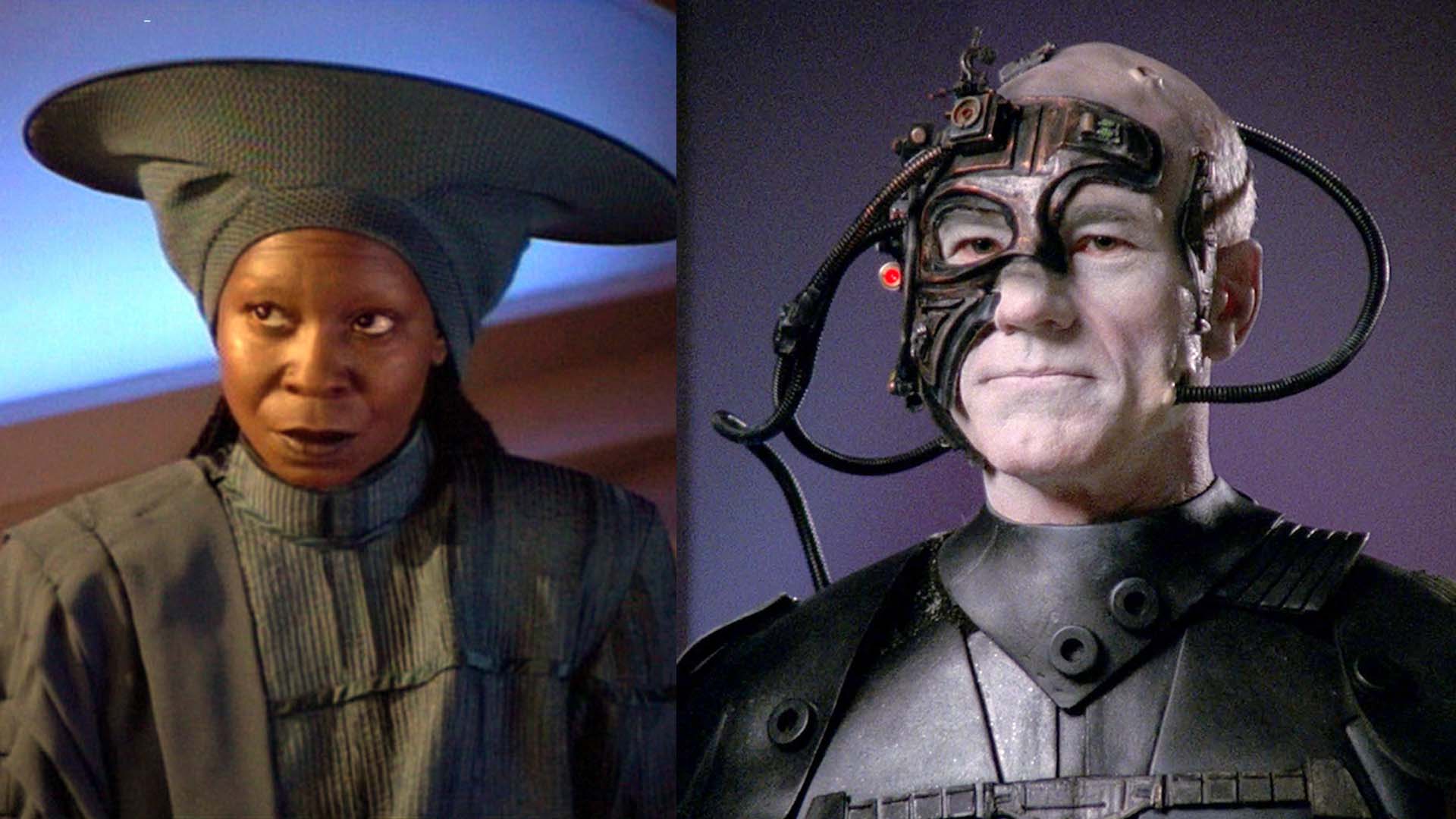
No one expected Star Trek to last longer than the original series’ first three seasons, let alone 55 years.
Even by 1960s standards, the classic show suffered from low-budget sets and, at times, cheesy effects. But what it lacked in spectacle it made up for with ideas; a thematically-rich exploration of heady sci-fi concepts bolstered by occasional space-based action and some of the finest TV characters ever assembled. Trek ’s legacy would endure and spawn 13 feature films and several series, most notably Star Trek: The Next Generation , which is as popular now (or more) than it has ever been, thanks to streaming. In 2021, TNG celebrate some significant milestones: The 30th anniversary of the Season 5 episode "Disaster," Trek 's take on disaster movies like The Poseidon Adventure , the 30th of "Unification, Parts I and II, which marked Mr. Spock's return to television prior to the theatrical release of 1991's Star Trek VI: The Undiscovered Country , and Star Trek: First Contact recently turned 25.
With everyone coming up Star Trek: The Next Generation lately, as well as the franchise itself celebrating its 55th anniversary this year, SYFY WIRE scrolled through our databanks to rank and file the 25 greatest episodes of TNG .
25. “Q Who?” (Season 2)
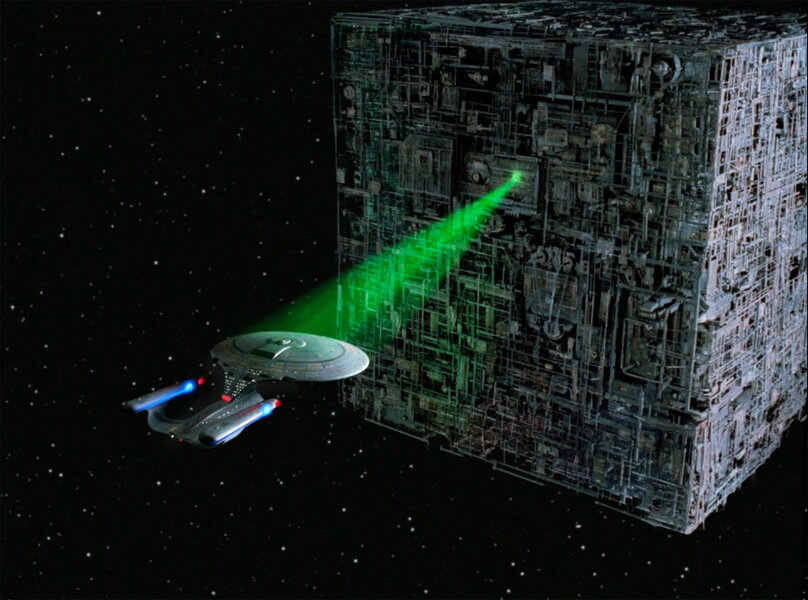
The Borg have never been more scary than they are in “Q Who?”, their first appearance in Star Trek .
When Q is denied a spot amongst Picard’s crew, he punishes the captain’s perceived short-sightedness by snapping his fingers and sending the Enterprise to the unexplored reaches of the Delta Quadrant. There, Picard encounters — and barely escapes — the Borg and their relentless pursuit of perfection by means of assimilation. The moment their cube vessel cuts out a section of the D’s saucer as easily as one would carve a roast, the Borg instantly shot past the Klingons as Star Trek ’s most lethal adversary. Our introduction to the Borg is both bleak and dark, which gives the episode a slow burn, almost haunted house movie-type feel thanks to future X-Files director Rob Bowman’s dread-filled visual style. For the first time on Star Trek , you don’t know how or if the crew will get out of this one. The tension therein makes for one hell of an episode.
24. “The Next Phase” (Season 5)
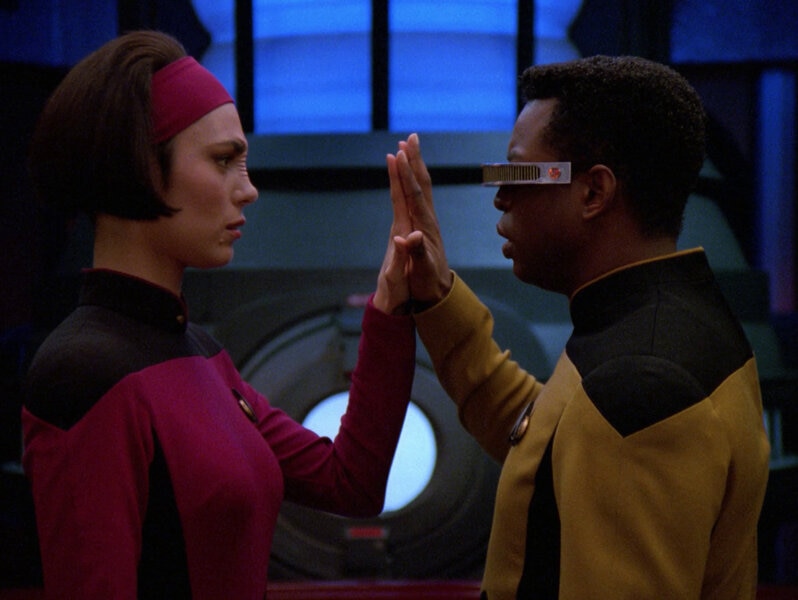
“The Next Phase” is further proof that, when it comes to delivering high-concept entertainment, no Trek show did it better than The Next Generation .
With a plotline rich enough to sustain an entire feature, “Next Phase” pairs the conflict-heavy Ensign Ro (Michelle Forbes) with LeVar Burton’s Geordi LaForge on a mission to free themselves from being phased out of reality before Romulans destroy the Enterprise. Forbes and Burton’s committed performances help ground the out-there premise as the sci-fi complications build to a race-against-time conclusion that is so satisfying, you might catch yourself applauding in approval.
23. “Ensign Ro” (Season 5)
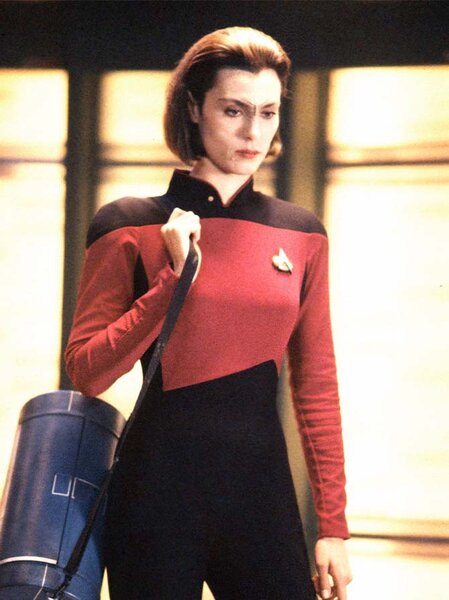
Season Five’s “Ensign Ro” had the unenviable task of introducing the episode’s titular recurring character as means to tee up the Star Trek: Deep Space Nine spinoff. While more plot heavy than usual TNG episodes, Michael Piller’s teleplay delicately balances out the exposition with essential character development scenes between the infamous Ro Laren and her new captain, Picard.
When we first meet the Bajoran Ro, everything about her says “stay away.” Her rebellious Starfleet record precedes her when she first boards Enterprise, which leads to instant friction between her and Riker as Picard recruits Ro for a mission that concerns her people and their enemy, a Nazi-like occupational force known as the Cardassians. Ro quickly became a fan-favorite, thanks to Forbes’ sympathetic and charming performance in what would become a load-bearing episode for the franchise’s expansion in the ‘90s.
22. “Brothers” (Season 4)
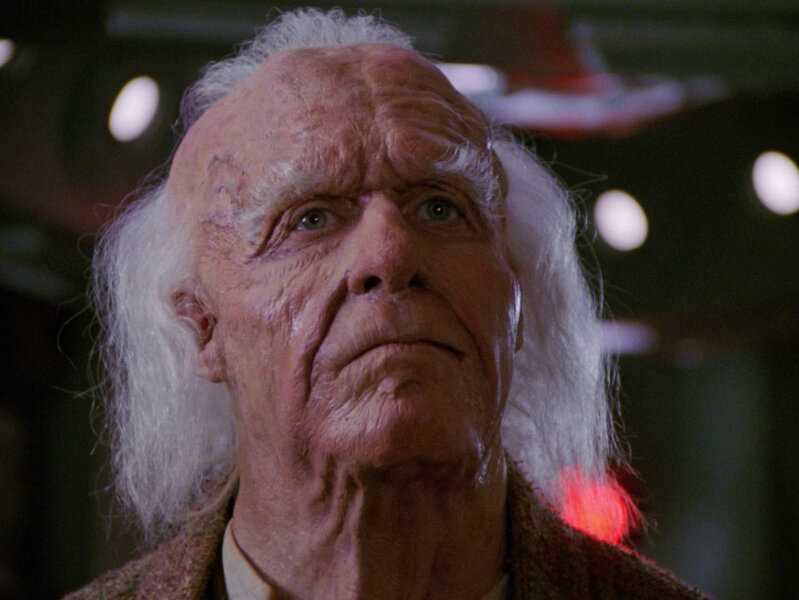
This Season 4 entry fleshes out Data’s backstory with a one-man show for Brent Spiner as he plays three different characters: Data, his very old creator, Dr. Noonien Soong, and Data’s very evil brother, Lore.
After Data inexplicably orchestrates a fake disaster aboard the Enterprise and takes control of the ship’s computer, he confronts both the father he thought was long lost and the brother he can’t seem to lose. Soong wants to give Data an emotion chip, to finish what he started before he dies, just as Data’s family reunion jeopardizes the health of a young boy under Dr. Crusher’s care. If Data doesn’t relinquish control of the Enterprise, this kid will die and his brother will suffer from a lifelong case of survivor’s guilt. Looking past the fact that “Brothers” confusingly avoids dealing with any serious questions surrounding Data’s selfish and potentially deadly actions, the episode serves as an extended Emmy reel for Spiner. He effortlessly dons old age makeup and switches between three generations of Data’s family line in what is a definitive moment in the android’s arc.
21. “Deja Q” (Season 3)
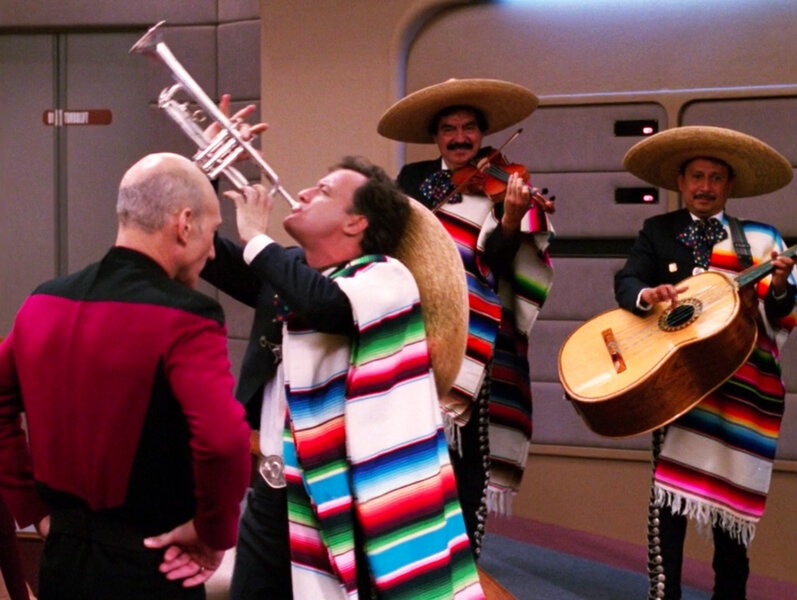
The second best of Q’s visits to the Enterprise, “Deja Q” is a brilliant elevator pitch — what if Q lost his powers — executed to its richest and most dramatically satisfying potential. Stripping Q of his omnipotence gives the mischievous a newfound sense of vulnerability and humility, one he only previously experienced when observing the subjects of his torments. While Q’s appreciation for what it means to be human is brief, it gives John de Lancie interesting opportunities to invest his iconic baddie with more nuance as Q goes from selfless to selfish in this entertaining (and very meme-friendly) outting.
20. “Reunion” (Season 4)
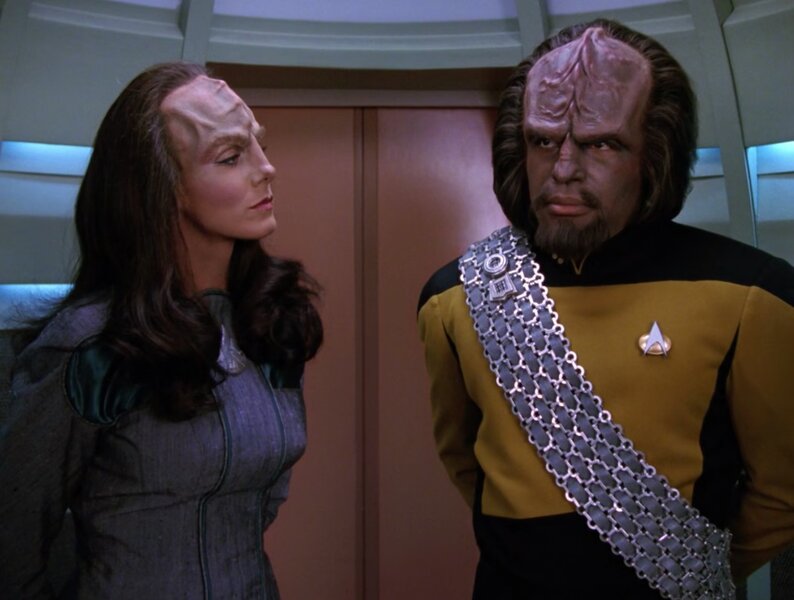
Worf-centric episodes of TNG like “Reunion” or “Sins of the Father” are to Star Trek what the last two Captain America movies are to Marvel: World-building game changers. “Reunion” pushes major plotlines whose consequences will eventually ripple effect throughout the next three decades of Star Trek , as Worf’s personal vendetta against his rival, the Duras family, brings more intrigue to the Enterprise and tragedy to our favorite Klingon.
It also pushes Worf into a relationship with his estranged son, Alexander, as the two must learn to live together when a conspiracy that threatens to tear the Klingon Empire apart results in the death of Alexander’s mom and Worf’s over, K'Ehleyr (the scary-talented Suzie Plakson). The mystery plot here clicks into place like safe tumblers, but “Reunion” truly excels in the moments spent with Worf as his obligations as a Starfleet officer get in the way of his code as a Klingon warrior. Especially when, during one of Trek ’s darkest moments, Worf exercises his right to avenge his one true love by straight-up murdering her dishonorable killer.
19. “The Drumhead” (Season 5)
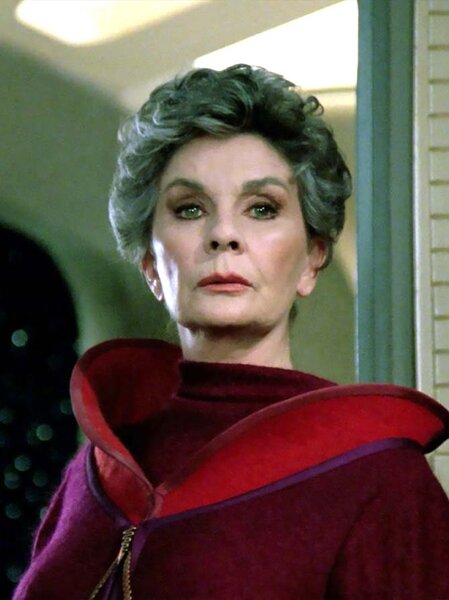
As bottle episodes go, they don’t get much better or more powerful than “The Drumhead.”
It’s The Crucible on the Enterprise as Picard spars with one of the Federation’s legendary legal minds and investigators when she suspects there is a Romulan conspiracy taking root on the flagship. The circumstances surrounding her suspicions achieve Red Scare-levels of paranoia as TNG puts McCarthyism through a revealing and unyielding sci-fi lens to tell a very timely story of how far people will go to find the truth — even if it means fabricating a version of it.
18. “Lower Decks” (Season 7)
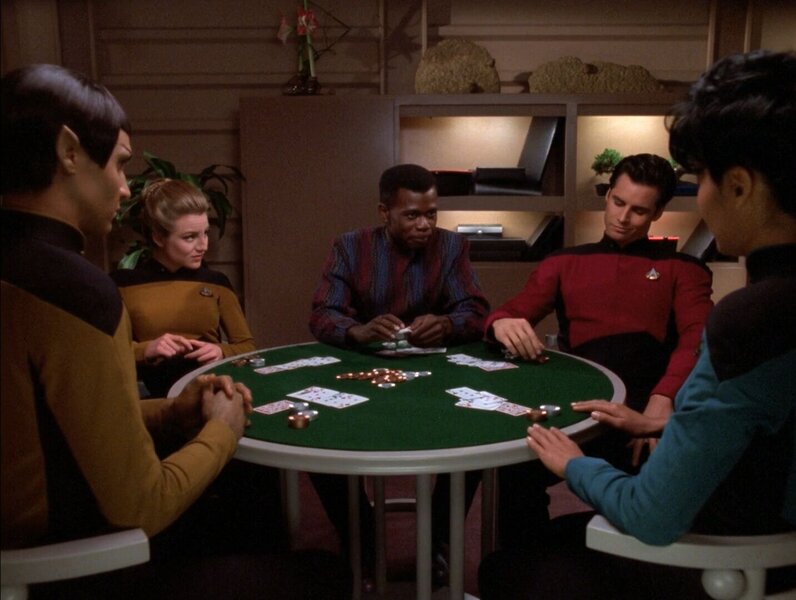
Before the comedic adventures of the animated Star Trek: Lower Decks , Star Trek ’s first attempt to explore the lives of the rank-and-file officers aboard a starship occurred in “Lower Decks,” one of the few standout episodes from the underwhelming Season 7.
“Lower Decks” devotes most of its screentime to a small group of pals who aspire to be on the Enterprise bridge or among the senior staff’s away missions. They soon end up in “be-careful-what-you-wish-for” territory when Picard plucks one of the young officers, the Bajoran Ensign Sito (Shannon Fill), to help him execute a dangerous mission involving the Cardassians. “Lower Decks” acts as a pseudo-sequel of sorts to “The First Duty,” where Picard first encountered Sito during a court martial that tarnished the then-cadet’s career before it started. Her chance at redemption via Picard’s mentorship gives the episode its beating heart, which ultimately breaks ours in the final moments when this earnest officer we’ve been rooting for becomes another casualty under Picard’s command. With this final dramatic twist, “Lower Decks” goes from a welcomed departure from TNG ’s usual story template to one of the show’s most effective episodes.
17. “The First Duty” (Season 5)
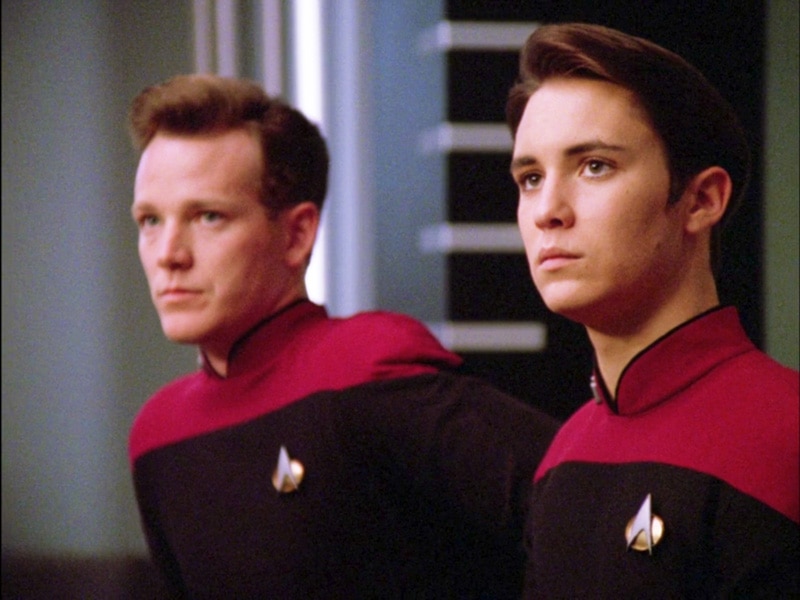
Wesley Crusher continues to give Picard more headaches than anyone is worth, but at least this time it results in a standout episode of Trek .
Ron Moore’s attempt to do A Few Good Men , Star Tre k -style, centers on Crusher and his fellow cadets. On the eve of their graduation from Starfleet Academy, they find themselves in the middle of a tribunal that intends to get to the truth behind why their friend and fellow cadet, Josh, died during a flight exercise. The lies Wesley and his friends tell to escape justice only puts them under more scrutiny when Picard goes digging around the shady circumstances surrounding Josh’s death. That search yields a show-stopping scene between Picard and Wesley, with one hell of a monologue that still gives us chills. “The First Duty” adds some much needed depth and ethical greys to Wesley’s squeaky-clean image, while also affording TNG the rare chance to challenge its “perfect” utopia by proving that even the best of us can succumb to our lesser angels.
16. “The Defector” (Season 3)
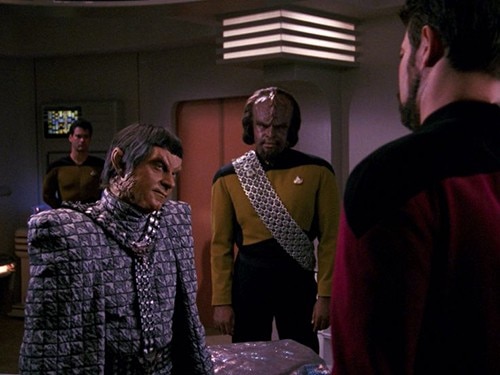
“The Defector” is another exceptional episode from (shocker) writer Ron Moore, which puts a Romulan defector front and center with tragic consequences.
This defector, who Picard struggles to believe is just some low-level officer, risks never seeing his family again in an effort to save his people and Earth’s from what appears to be another costly war brewing between the two adversaries. In the course of vetting the defector’s statements, Picard finds more questions than answers. That investigation comes with one hell of a gut punch: Eventually, the Romulan officer realizes his people betrayed him . They used him as bait, leaking somewhat false information as a way to test his loyalty to the Empire and gleam intelligence off Starfleet’s response to their partial ruse. “The Defector” is a powerful tale of one man’s journey from brave hero to duped traitor, with a mystery plot that keeps audiences at the edge of their seats as the final scenes send them reaching for some tissues.
15. “Disaster” (Season 5)

Designed as an homage to classic disaster movies like The Poseidon Adventure , Ron Moore’s underrated “Disaster” gives the Enterprise the Irwin Allen treatment when the starship is crippled after a collision with two quantum filaments (think space potholes). With the ship powerless and adrift, “Disaster” splits up the crew and mines their individual crises for maximum tension by putting these characters outside their comfort zone or into conflict-rich pairings. For example, an injured Picard is forced to help and work with people he normally can’t stand, children, while Counsellor Troi finds herself both in command and way over her head as her inexperience clashes with that of the better-trained Ensign Ro. “Disaster” is the rare Trek outing with no moral or lesson to learn, just good ol’ fashioned, keep-the-plates spinning tension that is just as rewatchable as the epic movies that inspired it.
14. “Relics” (Season 6)
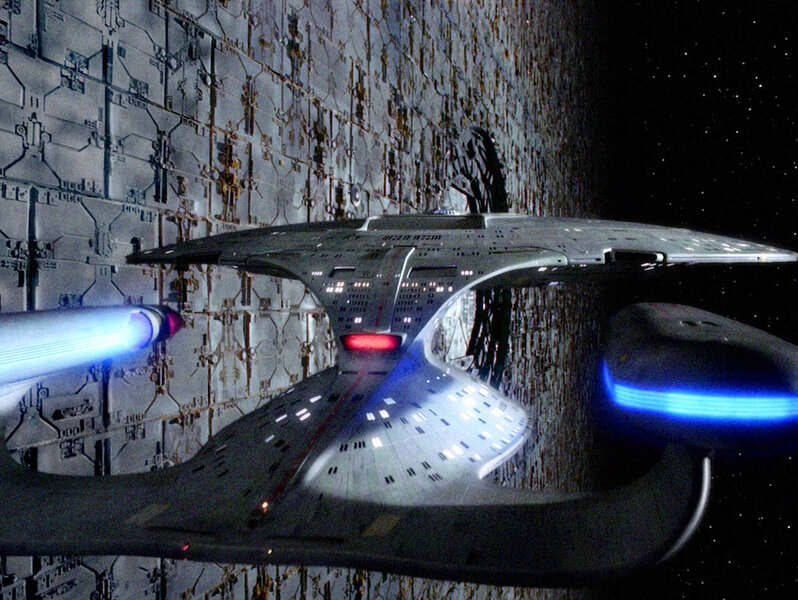
The Next Generation thankfully loosened up on its “no classic Star Trek actors” guest star policy for Season 6’s “Relics,” a thrilling episode written by Ron Moore that brings James Doohan’s Scotty into the 24th Century.
Prior to Scotty, only McCoy and Spock mingled with Picard’s crew, but Scotty’s episode arguably makes the best use out of revisiting these iconic characters. Here, Scotty struggles with being a man out of time and a fish out of water when he is thrust into a conflict of engineering styles with Geordi as the two must work together to free the Enterprise-D from the massive confines of a Dyson sphere. The episode spends considerable time contrasting the two engineer’s styles, giving Doohan more meaty acting moments in this one hour than any episode or movie did before. Scotty, accustomed to saving the day and with plenty of old war stories to prove it, quickly realizes he’s less of an asset on this Enterprise and more of a has-been. He begins to find his place and relevance once again by sharing a drink with Picard on the bridge of The Original Series ’ Enterprise (albeit a holodeck recreation of it).
“Relics” wisely invests Scotty with a rich exploration of what would really happen if one of the 23rd Century’s most famous heroes finds himself questioning his usefulness in the 24th Century. Moore’s script uses one Trek icon to push and challenge his TNG equivalent, giving fans one of the show’s most exciting adventures.
13. “Chain of Command, Parts I & II” (Season 6)
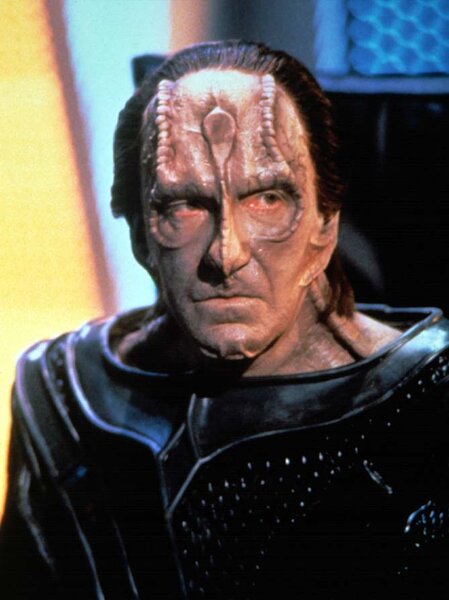
“Chain of Command” is arguably TNG ’s darkest hour, and one of its most thrilling. This two-parter kicks off with one of the shortest teasers in Trek history: Captain Picard loses command of the Enterprise when Starfleet re-assigns him to lead a Black Ops-esque team on a mission deep into enemy territory. That enemy? The Cardassians. Picard’s job is to find out if these baddies are creating a deadly bio-weapon and but his mission goes sideways; he is soon captured and tortured as a POW by a sadistic Cardassian (David Warner) as Riker bristles against the brash command stylings of Picard’s replacement, Captain Jellico ( RoboCop ’s Ronnie Cox.)
The second half of this intense storyline is the strongest and most memorable for fans, as it features the infamous “There are four lights!” interrogation scene. Here, a gaunt and delirious Picard combats his captor’s psychological torture as the Cardassian gaslights Picard into submission by promising him freedom if Jean-Luc will admit he sees five lights when there are only four. This battle of wills is fraught with more tension than any space battle could muster, as “Chain of Command” provides a sobering dose of political commentary by tackling the issues of war crimes and genocide in ways only Star Trek could.
12. “The Wounded” (Season 4)
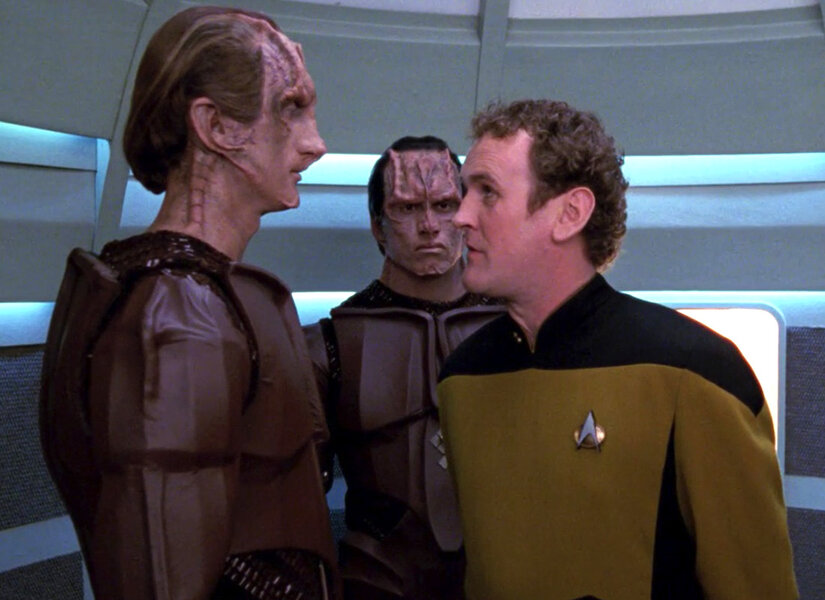
The first appearance of the villainous Cardassians (complete with their funky and quickly-abandoned head gear) is Star Trek: The Next Generation ’s sci-fi take on Coppola’s Apocalypse Now . Only instead of venturing “up river” to terminate a rogue colonel, Picard and Chief O’Brien (Colm Meany) are forced to work with “the bloody Cardys” in pursuit of O’Brien’s former captain, Maxwell ( Shawshank Redemption ’s Bob Gunton). Maxwell has seemingly gone rogue, using his starship to attack what appears to be non-military Cardassian targets.
O’Brien, having fought the Cardassians during a violent war years ago, must grapple with his hate and his duty in an episode that gives the supporting character his first real dramatic showcase. When O’Brien finally has some alone time with the cornered and defeated Maxwell, “The Wounded” earns its namesake as the two sing a melancholic song after sharing war stories of comrades lost that Maxwell’s vengeful PTSD can’t ever bring back. This haunting scene tugs on the heartstrings moments before Picard discovers that the supply ships Maxwell attacked were indeed part of Cardassian efforts to re-arm themselves. It is a revelation that validates Maxwell’s career-ending crusade while also giving the episode one of Trek ’s most bittersweet finales.
11. “The Offspring” (Season 3)
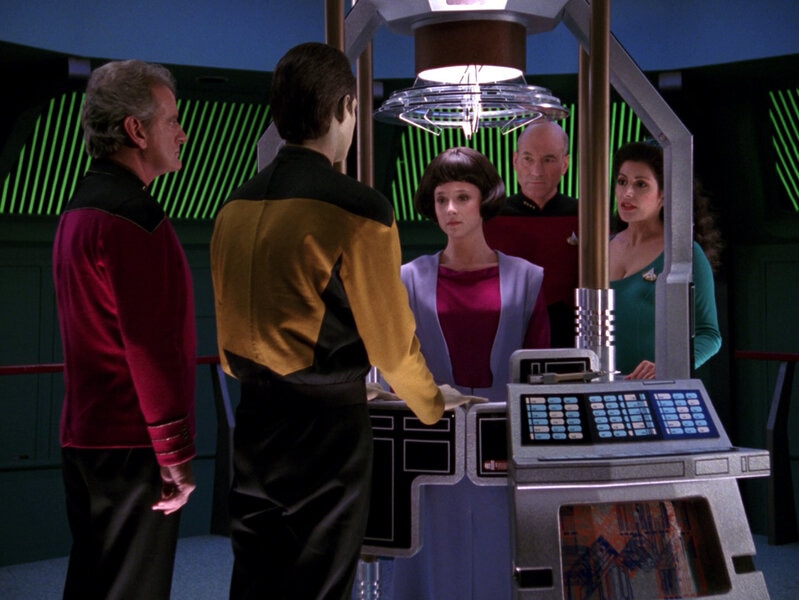
Data’s earnest endeavors to be more human reach a turning point in “The Offspring,” an emotionally-charged episode of TNG where Data creates his daughter, Lal.
Just as the android bonds with his child, a veteran Starfleet admiral arrives on Enterprise threatening to pull them apart when he challenges their right to be a family at all. Star Trek: TNG often finds success in exploring Data’s humanity
through the lens of the very humans who would try and take it away from him. “The Offspring” offers an excellent and tearful portrayal of that conflict as the crew comes to their friend’s aid just as Lal suffers a life-threatening issue. It’s a five-boxes-of-tissues affair when Data and the admiral work offscreen to save Lal. No matter how fast Data’s hands move, they fail to prevent Data from having to learn the hardest of humanity’s lessons: Loss.
10. “Measure of a Man” (Season 2)

Real talk: Star Trek: The Next Generation ’s first two seasons are noble misfires. Their weekly installments have more lows than highs, but one of the few outstanding hours from the series’ early days is the Data-centric “Measure of a Man.”
When another jerkoff Starfleet scientist comes looking to dissect Data to see what makes him tick, Picard must defend his officer’s sentience in court, and settle once and for all if this android is indeed alive or merely Federation property. The stakes couldn’t be higher — Data either gets to live on the Enterprise or under a microscope — and the drama that unfolds from this classic Star Trek premise is riveting. “Measure of a Man,” Melinda M. Sondgrass’ first writing credit for the show, is full of great dialogue and speeches that spark numerous ethical debates: Who is Starfleet to say that Data is sentient or not? Is their mission to explore new life or to play God when they find it? “Measure” never shies away from debating such topics, which have always been at the heart of Star Trek . It all builds to Picard’s passionate, climactic defense in favor of his colleague and friend — a scene that ranks near the top of Patrick Stewart’s long list of great acting achievements.
9. “Darmok” (Season 5)
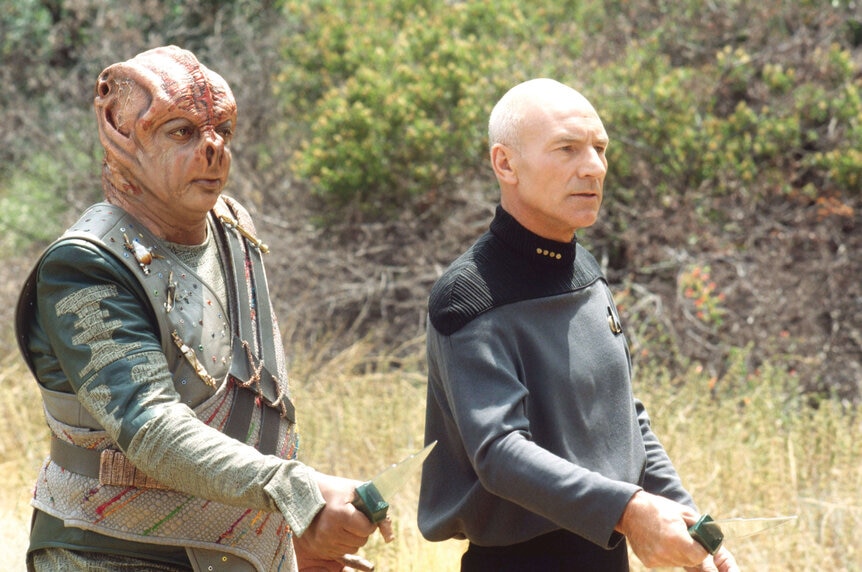
Credit: © Paramount Television/courtesy Everett Collection
Picard’s diplomatic skills are put to the test in “Darmok,” when he is taken against his will and paired with an alien commander who only communicates via metaphor. This “only-on- Star-Trek ” premise offers a potential minefield of narrative obstacles that could easily derail the drama in their execution, but Joe Menosky’s exceptional script for this Season Five episode pulls it off effortlessly.
Picard, stranded on a mysterious planet with Dathon (Paul Winfield), quickly finds that language can be both a tool and a barrier for success, but only after failing several times in his attempt to communicate with his new alien friend. The two can hear each other's words, but not comprehend their meaning, which eventually leads to one of Picard’s finest moments: A campfire story recounting the tale of Gilgamesh. (But only after Dathon tells the mythic story of Darmok and Jalad, at Tanagra). Here, the two strangers forge a strong alliance — just in time to combat a savage threat. “Darmok” deservedly takes its time to tell a story about how similar we are despite our linguistic differences, and every rewatch of this seminal TNG episode never fails to make that point resonate as deeply as it did when it first aired.
8. “I, Borg” (Season 5)
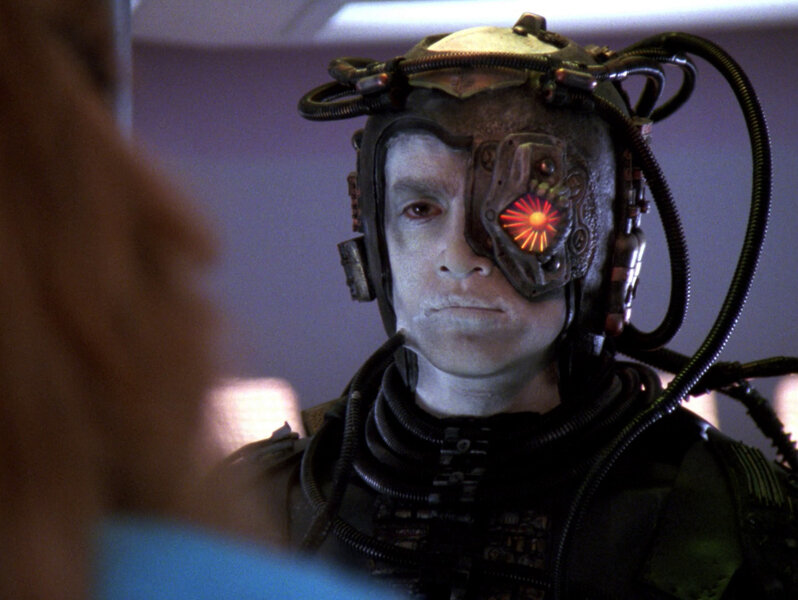
The value of life has been a thematic staple of many Star Trek episodes, but few have tackled it with the high-stakes drama like “I, Borg” does.
When the crew of the Enterprise finds an injured Borg drone, Picard must make a choice: Nurse it back to health or use it as a Trojan Horse that can infect the Borg Collective with a fatal virus. When Picard leans closer to condemning this Borg’s life to save millions of others, “I, Borg” thrusts the captain and his crew into a passionate moral debate that results in one of the series’ most powerful moments when Picard confronts the naive drone, one that Geordi has affectionately named “Hugh”. Up until this moment, Picard was hellbent on using Hugh to destroy the alien race that once assimilated him. But the captain has a change of heart while talking to Hugh as Locutus, Picard’s former Borg self. Here, Hugh breaks from the collective by speaking firmly from the “I” instead of “we,” which sends Picard into a wrestling match with his conscience.
Star Trek rarely colors its heroes in such dark shades, but “I, Borg” succeeds by realistically portraying how someone like Picard isn’t wrong , per say, for wanting to kill those that turned him into a killer. For wanting to punish the Borg for crimes against humanity (and the galaxy) that they have committed and will likely commit again. But can you still be a hero if you do to your enemy what they did to you, and alter and weaponize them? “I, Borg” argues that there are no easy answers to those questions, but the discussion they spark makes for a very profound hour of television.
7. “Tapestry” (Season 6)

Star Trek goes full It’s a Wonderful Life with “Tapestry”, which is arguably the best of the standalone Q episodes.
After a near-death experience, Picard is shown the life he could have lived had he played it more “safe” in his youth. The path not taken leads Picard away from command and into a blue uniform with a career so unremarkable, even Troi struggles to find something nice to say about it. On the road to nowhere fast, Picard turns to Q for a second chance to get back the only life he knows, even if it means dying to get it. “Tapestry,” written by the inestimable Ron Moore, takes an almost Twilight Zone -y approach in telling this story, which is full of heartfelt moments and surprisingly laugh-out-loud comedy. The lesson Picard learns here, about how rewarding taking risks can be, is a universal one — which explains why "Tapestry" often finds its way near the top of fans’ “must-watch” lists.
6. “Family” (Season 4)
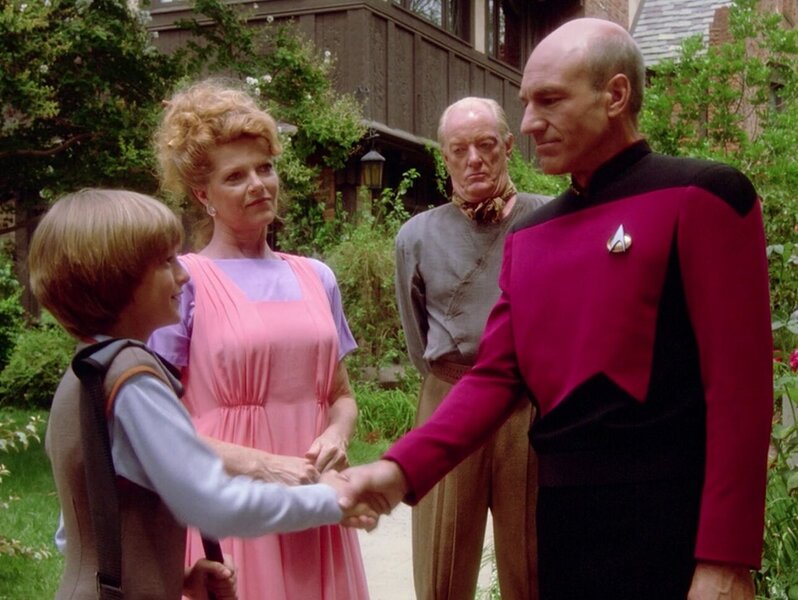
Honestly, it’s a mini miracle that “Family” got made.
Before this exceptional episode from TNG ’s fourth season, the series largely steered clear from serialized storytelling. At the time, executive producer Rick Berman and Paramount television were strongly against “sequelizing” any TNG storylines; “no serialized stories” was an unofficial “rule” of television back then. But writer Ronald D. Moore thankfully saw an opportunity to break that rule with a story that he couldn’t pass up: How would Picard deal with the emotional fallout of his time with the Borg?
With no phaser battles or even a trip to the Enterprise bridge (the only episode in Star Trek ’s run to never have a scene set on the command deck), “Family” pulls off an engrossing hour of television that peels back the curtain on who Picard was, and who he is struggling to be, in the the aftermath of the two-parter “Best of Both Worlds”. Mostly set on Earth, the episode introduces Picard’s family vineyard into Trek canon, as Picard confronts his estranged brother and debates whether or not to leave Starfleet. The only person who can help Picard deal with his trauma is the last person he can stand being with, his brother. Only through their constant bickering does Picard find a sense of satisfying resolution, which gives Stewart one of his most heartbreaking scenes when he finally acknowledges the emotional scars the Borg left him with.
5. “Cause & Effect” (Season 5)
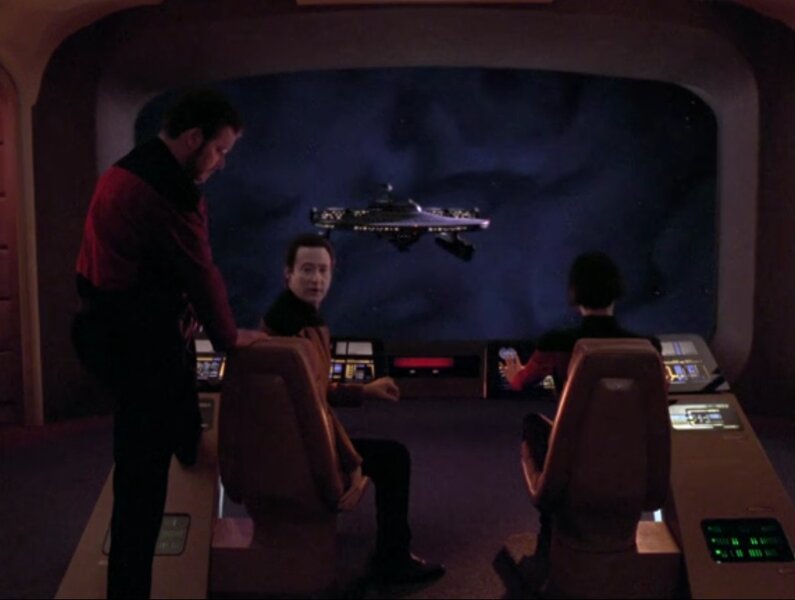
After a jarring teaser that culminates with the fiery destruction of the Enterprise, “Cause & Effect” unfolds with time loop after time loop as Picard and his crew struggle to free themselves from suffering the same terrible fate.
Written by Brannon Braga, TNG ’s go-to scribe for high-concept stories, “Cause & Effect” pulls a Groundhog Day two years before the movie was even a thing. It breaks the show’s traditional storytelling mold by repeating the same disaster and making each loop through a new puzzle that both the audience and the crew must solve. Fans were so “in it” with their favorite characters that many called their local affiliates during the original broadcast with concern that something was wrong with the satellite feed as the episode kept repeating scenes. While audiences take the “time loop concept” for granted today, “Cause & Effect” pioneered it in a way that still registers as one of its best and most entertaining executions.
4. “The Inner Light” (Season 5)
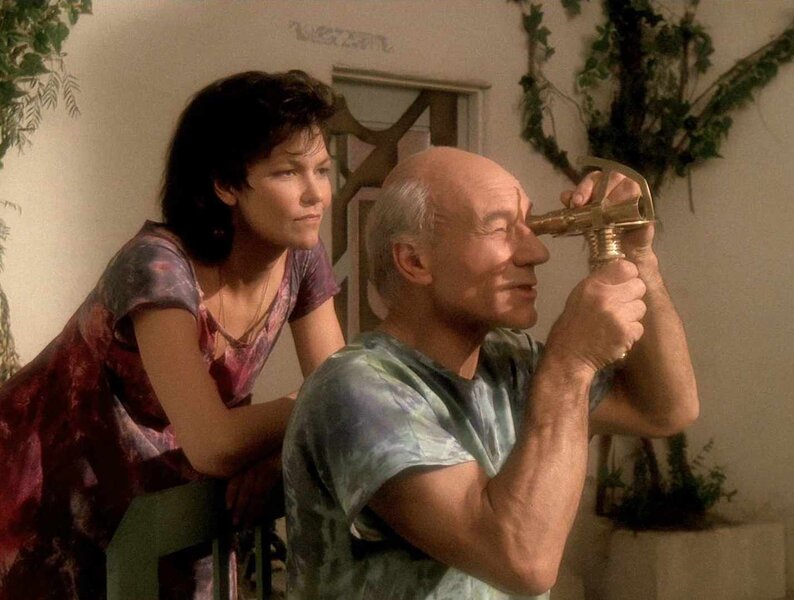
This surprising tearjerker ranks high for fans, thanks in large part to Patrick Stewart’s compelling performance as “The Inner Light” explores the concept of being a living witness to an extinct civilization. In this classic episode, Picard finds himself living the life of a long-deceased man named Kamin, after being zapped by a probe that is seemingly all that remains of Kamin’s civilization.
The probe allows Picard to live a lifetime in 20 minutes, and experience all the things Picard denies himself to be — namely a husband and a father. The majority of the episode takes place on an alien world as it is slowly undone by Star Trek ’s equivalent of global warming, with Kamin trying to help save his planet from pending doom the way Jor-El tried with Krypton. And like his Superman counterpart, Kamin fails — but he succeeds in providing a glimpse into a society that, while being nothing more than a blip in the galaxy’s grand scheme, still has a legacy worth being remembered. That’s the heartfelt and poignant endnote “Inner Light” imparts on viewers, which explains why this episode still resonates decades after it first aired.
3. “Yesterday’s Enterprise” (Season 3)
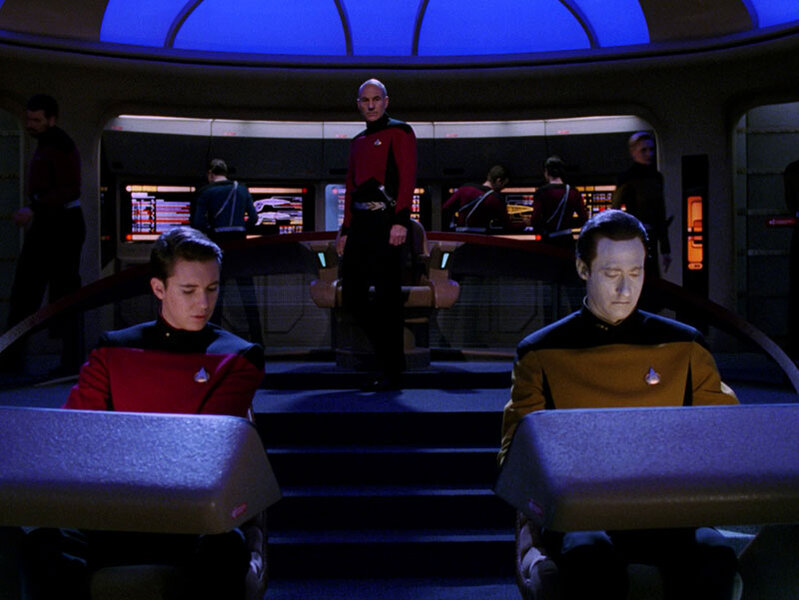
When the long lost Enterprise-C travels through a (what else?) temporal anomaly that alters history, Picard and the crew of the Enterprise-D find themselves in the darkest timeline and at war with the Klingons. The only way to stop this war is to send the C’s Captain Garrett back to when she came from and change history. The only catch? In order to save millions of lives, nearly everyone aboard the Enterprise-C must sacrifice theirs.
That moral and ethical dilemma at the heart of “Yesterday’s Enterprise” makes this hour more than just a novel “What If…?” detour for the show to explore. It affords TNG a chance to give its main characters a more desperate edge as they debate the notions of fate as participants in a reality that should not exist. At the heart of this drama is Picard, who is more militant and beleaguered than ever as he debates with Whoopi Goldberg’s Guinan (and her time-sensitive intuition) about whether or not to send the other Enterprise’s crew to certain death.
The return of Denise Crosby’s Tasha Yar gives her character the proper (and heroic) sendoff she deserves, which gets complicated as Tasha falls in love with a member of the C’s crew around the same time she discovers she died in the original Enterprise-D timeline. The internal struggle over restoring the way things were meant to be, by sacrificing lives history already recorded as lost, is a classic Star Trek premise that “Yesterday’s Enterprise” explores to a very satisfying, and action-packed, conclusion.
2. “The Best of Both Worlds, Parts I & II” (Season 3 & 4)
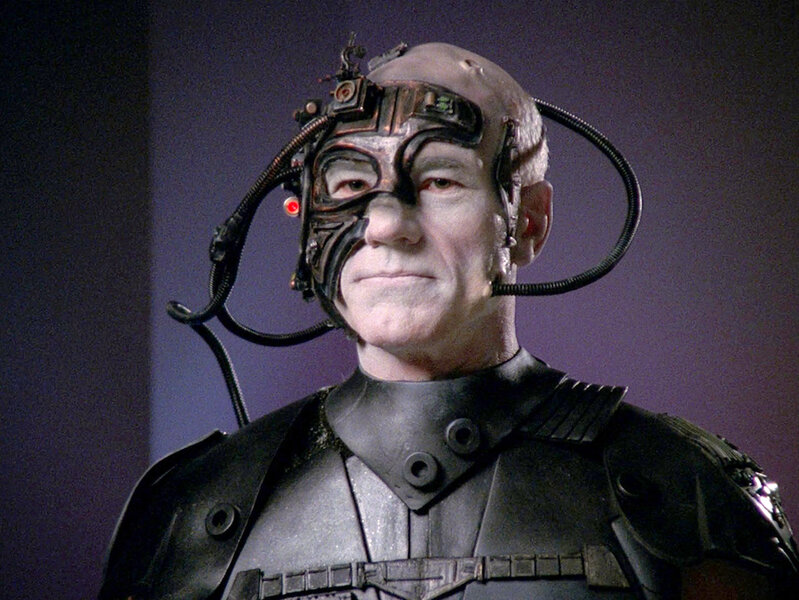
Star Trek ’s first-ever season-finale cliffhanger is one of television’s greatest. More than three decades later, fans still get chills at the end of “Best of Both Worlds, Part I” when Riker gives the chilling order to “fire” on the Borgified version of his former Captain Picard.
The wait for this iconic storyline’s resolution made the Summer of 1990 a very long and agonizing one for Trek fans, but it was worth it. “Best of Both Worlds, Part I” has TNG mining similar character drama as Star Trek II: The Wrath of Khan did, with Commander Riker forced to confront why he keeps passing up one promotion to Captain after another — just as his Captain is taken by the Borg in a violent attempt to turn Picard into Locutus, the public face of their campaign to assimilate Earth and all of humanity. The episode is a nail-biter, thanks to a perfect script from the late writer Michael Piller. The former TNG showrunner takes a bigger-than-usual swing with the characters to tell a story somewhat outside of the series’ comfort zone. While “Part II” falls a bit short of the dramatic highs of “Part I,” it finds great success in dramatizing the crew’s struggle to get their Captain back (even if their final solution is ultimately more convenient than inspired.)
The Enterprise crew’s second encounter with the evil cybernetic beings would have consequences throughout the next 30-plus years of Star Trek , especially in 1996’s Star Trek: First Contact . The hit movie serves as a big-screen, action packed therapy session for Picard to deal with the trauma of his assimilation into the Borg collective.
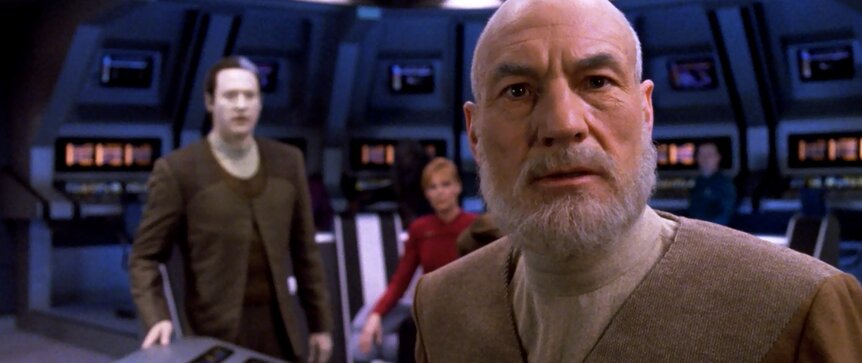
1. “All Good Things…” (Season 7)
“All Good Things…” is the best Star Trek series finale ever and The Next Generation ’s crowning achievement.
Written by Brannon Braga and Ronald D. Moore, “All Good Things” proved to be a better cinematic-worthy adventure than The Next Generation crew’s first movie, Star Trek: Generations . The briskly plotted, feature-length episode — and its complex storyline involving paradoxes and second chances — finds a disoriented Picard struggling to uncover why he is moving back and forth through time. He slips in and out of three key time periods: The past, just before the launch of Enterprise-D’s first mission; the present, and the future. In the future, Picard is a very retired, very old man, who runs his family’s vineyard. He also is afflicted with a debilitating neurological syndrome that makes it hard for his former shipmates to believe him when he starts pulling a Sliders across multiple timelines. Picard’s mission — which, of course, is being manipulated by the omnipotent Q — forces the captain to convince all three versions of his crew to work together in each timeline in order to stop an anomaly from unraveling existence as we know it.
TNG gives the beloved cast and their characters a perfect final episode that brings them together as a family in ways the series left surprisingly unexplored for most of its run. As impressive as the action is in “All Good Things”, especially the scene where the futuristic Enterprise-D flies on its Z-axis while blasting newly-mounted phaser cannons, the episode’s best scenes are the quieter ones spent with these characters. The finale truly shines in its final moments, when Picard joins his crew for the first time at their regular poker game. Picard’s arrival at the poker table resonates with his crew as deeply as it does for fans, which is a testament to the finale’s commitment to giving Next Generation the emotional send off it deserves.
Watch Resident Alien
- Star Trek: The Next Generation
- SYFY Insider
Related Stories

Why Fast Five Remains One of the Greatest Films in the Fast Saga

R.I.P.D. Creators Talk Abandoned Franchise & Resurrection Hopes

Why Tokyo Drift is the Perfect Fast & Furious Spinoff

Flushed Away Director On Aardman's First CG-Animated Feature

Anthony Mackie On John Doe Vs. Sam Wilson
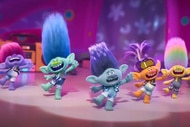
The Best Fantasy Movies Streaming on Peacock in April 2024
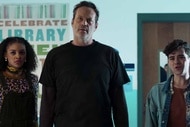
The Best Slasher Movies on Peacock for April 2024
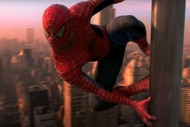
The Best Sci-Fi Movies on Peacock in April 2024

Bruce Almighty Teleprompter Scene Wasn't in Original Script
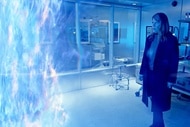
The 20 Best Sci-fi TV Shows on Peacock in April 2024

The Fast and the Furious: Remembering how the Fast Saga began

The Definitive Guide to The Munsters Adaptations
Recommended for you.

Linda Hamilton on Resident Alien Role: "I'm Not the Funny Girl, I'm the Straight Man"

The Classic Twilight Zone Episode That Inspired Jordan Peele's Us

Resident Alien's Alan Tudyk on Harry's New Love Interest, Edi Patterson's Blue Avian
30 Best Star Trek: The Next Generation Episodes Ranked
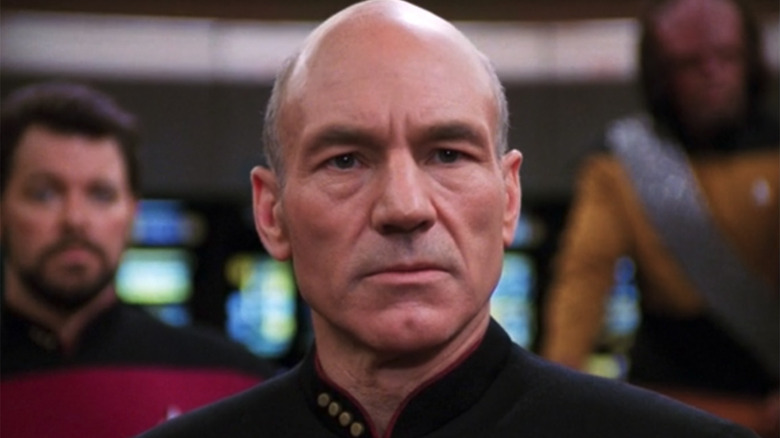
The first ever "Star Trek" spin-off, "The Next Generation," ran for seven seasons between 1987 and 1994. It defied conventional wisdom by reinventing the notion of what "Star Trek" was, introducing audiences to an entirely new ship and crew.
Living in the shadow of Kirk and Spock early on, most agree that the first two seasons disappointed , even if they showed a lot of promise (the troubled production of these initial seasons became the subject of the 2014 HBO documentary "Chaos on the Bridge"). But "The Next Generation" would become one of the best sci-fi shows ever once it found its footing and came into its own in its third year. With 178 episodes during its run, there are dozens of all-time greats, many of which just narrowly miss making this list. Episodes like "Remember Me," "The Wounded," and "Sins Of The Father" are all worthy watches, but here are the 30 that rank as the best according to IMDb.
30. Chain of Command, Pt. I
The sixth-season episode "Chain of Command, Pt. I" opens with Riker and the crew shocked when Starfleet removes Captain Picard from command and gives the Enterprise over to Captain Edward Jellico ("Robocop" villain Ronny Cox). But we soon learn that Picard, along with Doctor Crusher and Lieutenant Worf, is actually being sent on a covert mission inside Cardassian territory to stop a dangerous biogenic weapon, while Jellico is ordered to take the ship to the demilitarized zone to negotiate with the Cardassians.
Even before Picard leaves, there's tension in the air. The Enterprise crew view their new captain as demanding and overbearing, while Jellico views them as soft and lazy. But though audiences may have assumed the change of command was just for a single story, the episode ends on a shocking cliffhanger that leaves the future of the entire series up in the air.
"Family" is the direct follow-up to the beloved "Best Of Both Worlds" two-parter that saw the captain turned into the Borg villain Locutus. As part of his recovery, Picard takes a vacation to his home village in France, staying with his brother Robert and his family. The pair of siblings have a strained relationship, but Picard finally opens up to Robert about his traumatic experience with the Borg, giving fans a new insight into the soul of the Enterprise's captain.
In a B-story, Worf is visited by his human foster parents while the ship is docked above Earth. The two are concerned for Worf, who is still dealing with his exile from the Klingon Empire the previous season, and offer their support. Together, the two family-related plots form the backbone of an episode with no space action or alien contact, but with drama that is much more poignant and personal.
28. Reunion
"Reunion" features the return of Lieutenant Worf's lover K'Ehleyr, previously seen hooking up with the Enterprise's Klingon security officer in Season 2. This time, she comes aboard with news of an impending Klingon war, and has come at the request of Chancellor K'mpec, who is on his deathbed. After he dies, he needs Picard to ferret out the man who poisoned him: one of the two men vying for the leadership of the Empire. Newcomer Gowron is one suspect, but the other is Duras, who had framed Worf's father to cover up his own family's dishonor in the Season 3 episode "Sins Of The Father."
When K'ehleyr arrives, however, she also brings a surprise: Alexander, the child she bore with Worf two seasons earlier. An important episode that changes the lives of several characters and introduces the fan-favorite Gowron , "Reunion" is also a key piece of the story of Worf's family honor that would continue throughout "The Next Generation" and into "Deep Space Nine" — his son Alexander would become a recurring character in both series.
27. The Drumhead
Retired and revered Rear Admiral Norah Satie comes to investigate the Enterprise in "The Drumhead" when there appears to be a saboteur onboard. After a rogue Klingon exchange officer is caught stealing information, the case is seemingly closed, but when the warp core is damaged in an apparent act of sabotage, Satie comes to believe there are others involved. What follows is a dark tale that sees the admiral peeling back layers of what she thinks is a vast conspiracy.
But after exposing a young officer who lied about his heritage to get into Starfleet, Satie threatens to drag everyone into her web of suspicion, even Captain Picard. "The Drumhead" is a fascinating look at paranoia and how fear can be used to subvert democracy, spreading like a disease, all in the name of freedom and liberty. It's a cautionary tale, and one of "Star Trek's" most timeless political parables.
26. The Next Phase
"The Next Phase" adds a new stunning piece of advanced technology to "Star Trek" lore when the Enterprise comes to the aid of a disabled Romulan ship experimenting with a "phasing cloak." When the ship's transporter mixes up LaForge and Ensign Ro, the pair become trapped in a kind of limbo, cloaked and phased so they can pass through ordinary matter. Unable to communicate with anyone else aboard the Enterprise, the situation escalates when they overhear the Romulan commander tell his crew to rig the ship so that the Enterprise will be destroyed when they activate their warp drive.
With the clock ticking, Geordi and Ro must find a way to warn their shipmates and return to their normal state, all while being pursued by a Romulan who they find trapped out of phase with them. Fast, fun, and exciting, "The Next Phase" is one of the series' most thrilling adventures.
25. Time's Arrow Pt. I
The fifth-season cliffhanger finale "Time's Arrow" opens with archaeologists uncovering Data's head buried beneath San Francisco. Realizing the discovery means that at some point in the future Data will be hurled back in time to the 19th century, where he will die, Picard attempts to keep Data safe from this lethal destiny. But when an unusual signal leads the Enterprise to discover an alien race who is traveling into the past and murdering humans in 1893 to absorb their life force, the Captain realizes it may simply be Data's fate to die in the past.
Sent back in time, Data allies himself with the 19th-century version of the Enterprise's bartender, Guinan, who turns out to be far older than anyone ever realized. At the same time, he's also brought to the attention of Mark Twain, who will become an unexpected adversary in the second half of the two-part adventure. Though not the most bombastic of episodes, it proves its worth as a classic "Trek" time travel story.
24. Unification Pt. II
After the reveal that Leonard Nimoy would be returning as Mr. Spock in the Season 5 two-parter "Unification," some fans were left disappointed when his appearance in the first part was limited to a single scene in the closing moments. But he takes center stage in "Unification, Pt. II," which sees Spock on Romulus after apparently defecting from the Federation. Picard and Data — disguised as Romulans themselves — find that Spock is working with an underground sect that wants to reunify the Romulans with their Vulcan cousins.
The episode also featured the unexpected return of the Romulan villain Commander Sela and includes some classic moments between Spock and the "Next Generation" crew, particularly Data. Picard and Spock, meanwhile, share some of the most important and thoughtful interactions in all of the series, and in his final television performance as his Vulcan character, Nimoy delivers a momentous performance.
23. Redemption, Pt. II
Season 5 opener "Redemption, Pt. II" concluded the cliffhanger from the fourth-season finale, revealing the mastermind behind the Romulan alliance with the Klingon Duras family to be Commander Sela, who claims to be the daughter of long-dead Enterprise security chief Tasha Yar. As the two Klingon factions — led by Chancellor Gowron and the Duras sisters — duke it out for the fate of the Empire, Worf resigns his commission and joins the fight. Picard and the Enterprise had previously vowed to remain neutral, but now devise a plan to expose Romulan involvement.
The plan, involving a fleet of Federation starships forming a blockade around the Neutral Zone, puts Data in the captain's chair of the USS Sutherland, where he must contend with the bigoted Lieutenant Hobson. An episode filled with drama, it gives both Worf and Data some of their best, most satisfying moments in the series.
22. Redemption, Pt. I
"Redemption, Pt. I," the Season 4 finale, opens with Gowron requesting that Captain Picard see through his commitment to help install him as the new Klingon Chancellor. But a challenger appears in the form of a young warrior named Toral, brought forward by the Duras sisters, who themselves are the surviving kin to the man Worf killed in combat in "Reunion." Known traitors, the House of Duras cannot be trusted, but Picard — as the Klingon Arbiter of Succession — is duty-bound to consider their claim.
When Toral is dismissed as possible leader of the Empire, a Klingon civil war begins. But all is not as it seems — Worf suspects that the Duras sisters are getting help from the Romulans, and leaves Starfleet to aid in Gowron's fight against them. Full of twists and turns, it doesn't quite match the legendary Season 3 finale, but it comes close.
21. The Defector
"The Defector" is classic "Trek" — a gripping political drama, the story of an enemy soldier who defects to the Federation, risking his life to help avert a war. Claiming to be a low-level logistics clerk, a Romulan officer named Setal insists that his people are readying for an all-out invasion, and he has deserted his homeworld to warn the Federation. Picard is skeptical, as to prove Setal's claims, the Enterprise must enter the Neutral Zone in violation of the Federation's treaty with the Romulan Empire, and at the risk of starting a war.
Stuck in this quandary, Picard and his crew must decide whether Setal is telling the truth and truly trying to help, or is in fact attempting to bait him into being an aggressor. With the stakes so high, "The Defector" is a tension-filled episode that ends in a dramatic and surprising conclusion — particularly when Setal's true identity is revealed.
20. The Offspring
An important and sometimes overlooked episode, the "The Offspring" sees Commander Data create his own android child named Lal. Choosing her own appearance and gender identity, Lal becomes a young human woman with a naive but wide-eyed and wondrous outlook and personality. But things take a dark turn when a Starfleet admiral arrives to take Lal away, claiming that the creation of a new android life needs to be carefully overseen by Federation experts. Torn between loyalty to Data and his duty to Starfleet, Picard once again finds himself fighting for the rights of androids to make their own choices.
A quasi-sequel to the iconic Season 2 episode "The Measure of A Man" but overshadowed by bigger episodes that sandwiched it, "The Offspring" is an intimate character piece with a classic moral dilemma and an emotional ending, and received renewed attention thanks to its importance to the plot of the first season of "Star Trek: Picard."
19. The Pegasus
Season 7's "The Pegasus" begins with the arrival of Admiral Erik Pressman, who happens to be Riker's old captain from the titular starship Pegasus. He comes with new orders for Picard, telling him that the Pegasus wasn't destroyed as had been previously believed, and has been found buried in an asteroid field ... and the Romulans are after it.
It's soon revealed that the Pegasus was once used to test an experimental Federation cloaking device, an act specifically prohibited in the treaty with the Romulans. Commander Riker's loyalty is questioned when he is ordered to keep the secret of the Pegasus, and he's forced to choose between his two captains when the Enterprise falls into a Romulan trap. "Lost" star Terry O'Quinn makes a memorable appearance as Pressman, while Picard and Riker get into some heated exchanges about mortality and integrity that make "The Pegasus" a nail-biter of an episode.
The only pure comedy episode on this list, "Deja Q" earns its place as one of the best episodes of "The Next Generation" thanks to the sharp wit and strong performance of John De Lancie, who returns once again to serve as a thorn in Picard's side. As the immortal trickster Q, he arrives on the Enterprise claiming he has lost his god-like powers and has been exiled from his people in the Q Continuum. He asks for a safe haven aboard Picard's ship, which becomes a cry for help when a race of beings shows up to get vengeance on him for tormenting them in the past.
Most of the humor of the episode comes from Q slowly learning the basics of being mortal, from nightly sleep to being hungry to crippling back pain. But "Deja Q" also includes many touching moments involving Data, who somewhat ironically attempts to show Q what it means to be human.
After featuring Spock the previous season, Season 6 dips back into the original "Star Trek" series lore with "Relics," the episode that brings back Enterprise-A chief engineer Montgomery Scott. Having apparently survived for 75 years by storing himself within his ship's transporter, "Scotty" re-materializes aboard the Enterprise-D during an investigation of a fantastic alien Dyson Sphere and is warmly greeted, but soon begins to feel out of place in the 24th century. When the Enterprise gets trapped inside the Dyson Sphere, it's up to Scotty and his engineering successor, Geordi LaForge, to save them.
Ultimately, the return of Scotty is a touching story about aging and the need to feel useful in an ever-changing world. While the genius former engineer feels that the future has left him behind, he soon discovers that he still has plenty of life left in him, and a lot to offer the 24th century.
16. Ship In A Bottle
A sequel to one of the better Season 2 episodes, the Season 6 follow-up "Ship In A Bottle" ties up what might have wound up an unresolved plotline . It begins when a self-aware hologram of Professor James Moriarty — Sherlock Holmes' ultimate nemesis in the stories by Arthur Conan Doyle — appears on the holodeck demanding to see Captain Picard. After Data and Geordi unwittingly gave him sentience in "Elementary, Dear Data," Moriarty's program has been trapped in the holodeck computer for years, and now he wants to leave. But as far as Picard and crew believe, it's simply not scientifically possible.
But Moriarty has a plan and takes control of the ship, threatening to destroy it if his demands aren't met. What follows is a mind-bending "Inception"-style adventure where Moriarity and Picard — with the help of Data and the neurotic recurring character Reginald Barclay — attempt to trick each other with dueling holodeck-within-a-holodeck scenarios that will leave your head spinning.
15. Timescape
Stories that play with time have been a staple of "Star Trek" since the beginning, and time-bending episodes are often among the franchise's best. "Timescape" is no exception. Returning to the Enterprise from a science conference, Picard, Geordi, Data, and Troi discover the Enterprise and a Romulan warbird frozen in time, seemingly in the midst of battle. Going aboard, they find the crews frozen, as well — both ships are trapped in a strange anomaly, and any attempt to unfreeze them in time risks killing several members of the Enterprise crew, who are apparently under attack by Romulan soldiers.
When Picard becomes incapacitated, the remaining trio must figure out what's really happening, despite interference from mysterious pair of Romulans who, like them, are able to move freely about the Enterprise. With loads of fun, sci-fi time-altering shenanigans, and its far share of twists, "Timescape" is an episode full of surprises.
Among the most famous episodes of the series, "Darmok" may not rank in the top 10, but it comes close. The story sees Captain Picard kidnapped and brought to the surface of an unknown planet along with a ship captain from a species known as the Children of Tama, whose language has proven indecipherable despite the Federation's universal translator technology. Trapped together on the alien world and forced to work together to fight a deadly beast, Picard and his fellow captain find common ground and slowly learn to communicate.
The unusual language structure devised for the episode proved groundbreaking — it's been pointed out that the Tamarian "language" predicted Internet meme culture , and it's even been used to teach college courses . The uniqueness of this language is one of those fascinating concepts that could only be seen in science fiction, and the episode as a whole is quintessentially "Star Trek," with a universal message of friendship, tolerance, and understanding.
13. I, Borg
The compassion of Captain Picard and the crew of the Enterprise is on full display in the Season 5 episode "I, Borg." Coming upon the wreckage of a Borg ship, Doctor Crusher convinces the captain to bring the last surviving drone aboard to save his life. But while Picard's intentions are initially less selfless — he hopes to use the drone to destroy the entire collective — he comes around when he realizes that this new Borg is showing signs of personhood, even taking the name Hugh.
An example of the moral and ethical dilemmas often faced in "Star Trek," Picard ultimately abandons his plans for revenge against the Borg and allows Hugh to decide his own fate. Realizing the Borg won't stop looking for him, Hugh returns to the Collective, with the hope being that his sense of individuality will survive and spread. It proves to be one of Picard's best decisions — Hugh would return later in "The Next Generation," and again in the first season of "Star Trek: Picard."
12. Lower Decks
The story that inspired the modern adult animated comedy of the same name, "Lower Decks" was a unique episode of "The Next Generation" that focused on a group of younger officers: Nurse Alyssa Ogawa, Ensign Sam Lavelle, the Vulcan Ensign Taurik, and the Bajoran Ensign Sito Jaxa, who had previously been seen getting into trouble at Starfleet Academy in the Season 5 episode "The First Duty." Now, the young officers are all up for promotions, and as their friendship is tested by their career ambitions, we see the struggles, challenges, and everyday life of the lower-ranking officers serving on the Enterprise.
Meanwhile, Jaxa is confronted by Picard about her troubled past, a prelude to her assignment to a dangerous mission to return a Cardassian defector to his people. A generally upbeat story, "Lower Decks" is a fun detour from the senior bridge crew, but it ends on a surprisingly bittersweet note.
11. Chain Of Command, Pt. II
A darker episode than most on this list, "Chain Of Command, Pt. II" concludes a two-part episode that saw Picard kidnapped by the Cardassians on a mission to stop a rumored doomsday weapon. At the mercy of a cunning Cardassian named Gul Madred, he resists and becomes the subject of brutal psychological torture. Over the course of the episode, it becomes clear that while Madred definitely wants to acquire Federation secrets, the thing he wants most of all is to break Picard's spirit.
Meanwhile, on the Enterprise, Jellico is clashing with Commander Riker, who feels his new captain is too controlling. But Riker may also be the only man who can execute Jellico's daring plan to expose the Cardassian plot and save Captain Picard. Picard's defiant shout of "There are four lights!" puts an iconic capper on one of the better late-series episodes.
10. Parallels
Years before Marvel's "Loki," the "Next Generation" Season 7 episode "Parallels" put the multiverse front and center when Worf inadvertently passes through a split in the barriers between universes. Moving between them throughout the episode, Worf finds himself in new and different realities: some where Riker is captain, some where he is married to Counselor Troi, and some where the Bajorans are the Federation's greatest enemy.
Another trippy sci-fi story, most of the fun is in the first half as Worf struggles to figure out what's happening to the world around him as events and people change before his eyes, though the episode also features a daringly ambitious climax. The various windows into what might have been are intriguing, and "Parallels" even takes the opportunity to bring back Wil Wheaton as Wesley Crusher. It also introduces the first spark of romance between Worf and Troi, a sub-plot that would continue through the remainder of the show's final season.
9. Tapestry
Q has traditionally been a major pain for Picard and other Starfleet captains, but he returns in "Tapestry" in the surprising role of benevolent spiritual advisor. Picard is actually killed in the opening moments of the episode, only to greeted by the all-powerful trickster in the apparent afterlife, who offers Picard a chance to relive his past and change moments that he regrets.
Returning to his days as an ensign fresh out of the Academy, Picard hopes to avoid the reckless behavior that got him stabbed through the heart in a bar fight as a young man while also pursuing a romance with one-time friend Marta Batanides. In trying to bring his older wisdom to his younger self, however, he learns that life's mistakes help us to become who we are. A "Star Trek" version of "A Christmas Carol," the heartwarming message of "Tapestry" makes it one of the series' best.
8. All Good Things...
Often voted among television's best series finales , "All Good Things..." capped off the show's remarkable seven-year run with an epic feature-length episode that saw Picard revisit events in both the future and the past. Harkening back to the series' very first episode, "Encounter at Farpoint," we see Picard once again on trial before the Q Continuum, attempting to prove the value of humanity's existence by piecing together clues to a potentially world-ending mystery in three different time periods.
As Picard struggles to convince three different crews that what's happening is real, he must find answers to a puzzle that stretches back to the dawn of time to save his entire species. Full of drama, action, and emotion, it was just about everything a fan could want in a finale. While the episode would be one of the series' best on its own, it works even better as a final bookend to "The Next Generation."
7. Cause and Effect
"Cause and Effect" is a near-perfect science fiction riddle. Opening in the middle of the action, the Enterprise is destroyed in a shocking scene before the opening credits even roll. Coming back from the iconic "Star Trek" music and fanfare, we find the crew is trapped in an endless loop of time that inevitably leads to the ship's destruction, and worse — they have no idea it's happening. Thinking each loop is the first time through, the crew struggles to even realize what's going on, let alone collect the clues to figure out how to stop it before they all blow up yet again.
With the destruction of the Enterprise occurring just before each commercial break, it's a maddening but mind-blowing story that will leave you on the edge of your seat until the very last moments. And don't forget to keep your eyes peeled for a memorable cameo from Frasier himself, Kelsey Grammer.
The fourth episode to feature Q on this list, Season 2 entry "Q Who" saw the more sinister aspect of the god-like being, who arrives on the Enterprise and asks to join the crew. Picard, of course, turns him down. Incensed and hoping to prove to Picard that humanity is not ready for what awaits them amongst the stars, Q flings the ship into a distant uncharted region of space. There they encounter, for the first time, the mysterious race of cybernetic beings known as the Borg. They also learn that Ten Forward bartender Guinan is already familiar with the hostile hive mind, which annihilated her home world.
An important episode in the series, and "Star Trek" as a whole, it's also one of the best — a well-paced thriller that has Picard at first hoping to prove Q wrong and attempting to make peace with the Borg, but ending with an ominous warning that foreshadows not one but two of our remaining entries.
5. The Measure Of A Man
A landmark episode that has been analyzed by legal scholars , Season 2 standout "The Measure Of A Man" puts android Commander Data in the spotlight when a brilliant cyberneticist named Bruce Maddox arrives and wants to disassemble him so he can recreate his positronic brain. Data doesn't approve of the risky procedure, but Maddox states that Data is the property of Starfleet and cannot decline. Picard fights back against this notion and demands a hearing so that he can defend Data's rights. However, the hearing takes place at a poorly-staffed starbase, and Commander Riker is forced to act as prosecutor against Data, despite his personal feelings for his fellow officer.
One of the franchise's best examination of ethics and human rights, it's also one of its most important, as "The Measure of a Man" explores issues that would be revisited again in many future episodes, both in "The Next Generation" and other "Trek" spin-off series. Maddox would even return in the first season of "Star Trek: Picard" in a quasi-sequel that explores the fallout from the work of Noonian Soong, Data's creator.
4. Yesterday's Enterprise
"Yesterday's Enterprise" takes place in a darker alternate timeline created when the Enterprise-C, predecessor to the ship captained by Picard, finds itself thrust 22 years forward in time. Without its sacrifice at a crucial moment in the past, all of history was altered, and now Picard's Enterprise is a warship, with the Federation engaged in a bitter conflict with the Klingons — and on the verge of defeat.
But the arrival of the Enterprise-C adds new complications to an impending Klingon attack, and when Picard learns that the war was never supposed to happen, he struggles with the decision to send it and its crew back to their proper time to face certain death. The episode that saw the return of long-departed cast member Denise Crosby as Tasha Yar, it's an important piece of "Next Generation" lore, and possibly the best alternate reality episode in the entire franchise.
3. The Best Of Both Worlds, Pt. II
Opening up Season 4, "The Best Of Both Worlds, Pt. II" is the thrilling second part of one of television history's best cliffhangers . The previous episode had ended with Commander Riker giving the order to open fire on the Borg cube that held Locutus — the assimilated Borg drone that had once been Captain Picard. Audiences who had waited all summer for the attack tuned in to see the cube survive unharmed, and Riker and the Enterprise helpless as the Borg launch a direct assault on Earth.
After Starfleet loses a devastating battle with the Borg at Wolf 359, it's up to Riker to devise a bold last-ditch plan to rescue Picard and save Earth from assimilation. The series' most gripping season conclusion, it's an episode that "Star Trek" has still never been able to match in terms of sheer anticipation and excitement.
2. The Best Of Both Worlds, Pt. I
As a stunning season finale and the first cliff-hanger of the franchise, "The Best Of Both Worlds, Pt. 1" could rightfully be credited as the episode that turned "The Next Generation" into a genuine pop culture phenomenon. Discovering a Federation colony decimated in the same manner as the alien civilization they found destroyed by the Borg in "Q Who," Picard alerts Starfleet that a confrontation may be near. Admiral Hanson arrives with a new officer, Lieutenant Commander Shelby, to help with the crisis.
The ambitious Shelby adds an interesting layer in what turns out to be a Riker-focused episode, as the title refers to Riker's struggles with whether to leave the Enterprise to become a captain of a lesser ship, or stay and remain Picard's first officer. When his captain is abducted by the Borg and declared lost, Riker gets the best of both worlds — at the cost of Jean-Luc Picard.
1. The Inner Light
"The Inner Light" isn't just the best "Next Generation" episode — there's an argument to be made that it's the best "Star Trek" episode, period . The story begins when the Enterprise comes upon an alien probe that zaps Picard unconscious right off the bat. The captain awakens on an alien world, in another life. Here on the planet Kataan, in the community called Ressik, Picard is a man named Kamin, with a wife named Eline. After giving up on ever finding the Enterprise, which seems to have been just a dream, Picard settles into his new life, even having children and grandchildren, all while Kataan is slowly dying of drought.
Now an old man nearing death, Picard learns that the probe was a messenger that carried memories of a long-dead civilization, and wakes up on the Enterprise having experienced an entire lifetime over the course of a few minutes. An example of what made "The Next Generation" so special, the episode's message of love, hope, and family help it remain one of the most beloved pieces of television ever conceived.
- More to Explore
- Series & Movies
Published Apr 24, 2024
Stuck in a Loop: The Best of Star Trek's Time-Jumping Episodes
From The Next Generation to Discovery, going around and around is sometimes very revealing.
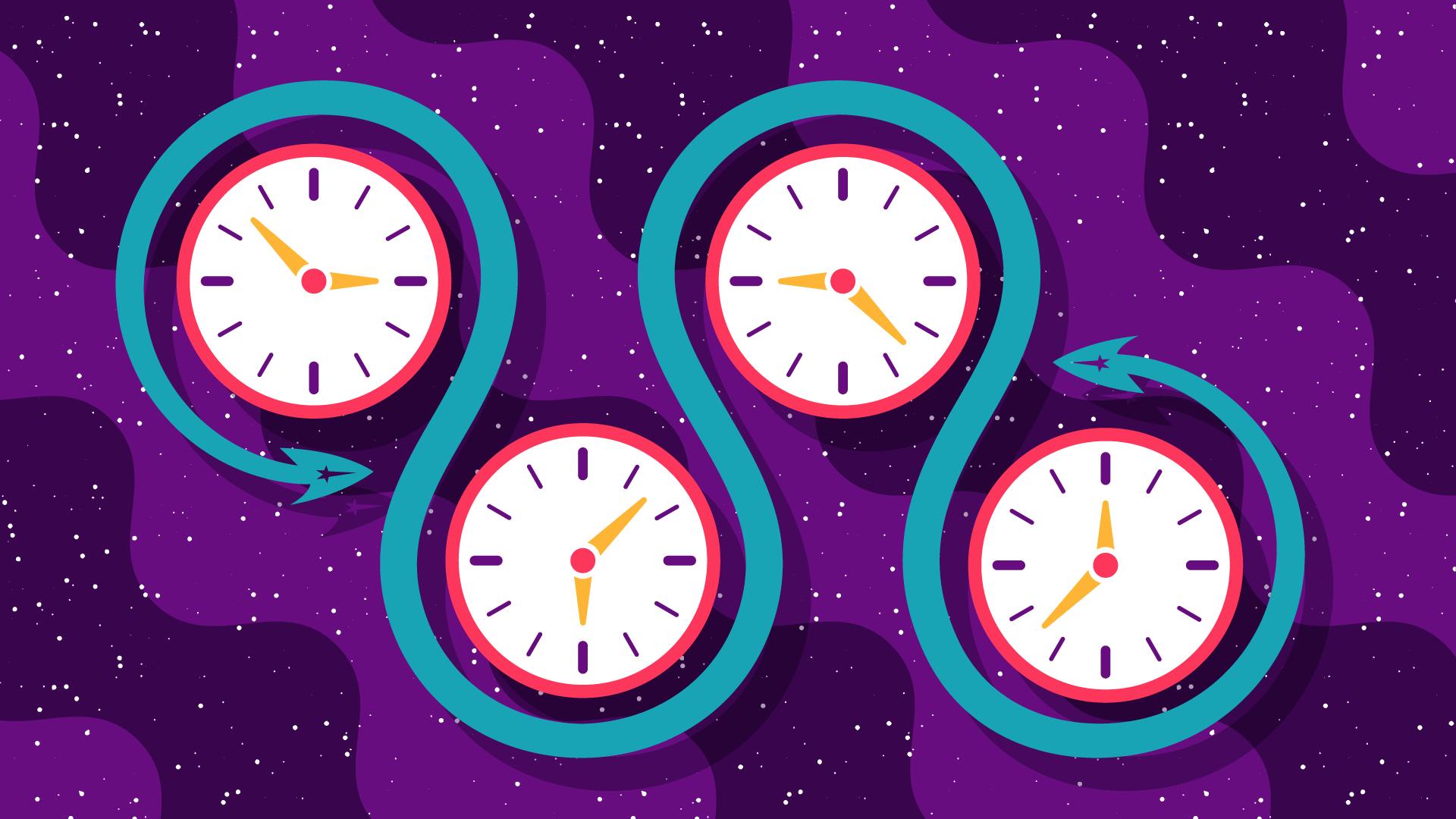
StarTrek.com
In the Star Trek: Discovery Season 5 episode, " Face the Strange ," Captain Burnham and Commander Rayner find themselves both stuck in a loop, but also, jumping all around the timeline of the titular starship. From the point before the U.S.S. Discovery was launched, to pivotal moments in Season 4, Season 3, Season 2 and even very early in Season 1, Rayner notes at one point that, "We’ve gone back in time to when you went forward to the future. That’s a little confusing."
Throughout all of Star Trek 's history, time travel has been just as propulsive to the narratives as space travel. But, within the various time travel stories of Trek , there is a special kind of time-skipping episode — the time loop story. Discovery has recently shaken-up this formula with "Face the Strange," but many elements of this episode pay homage to a proud Star Trek tradition. Here’s the history of the best time loop, and time-jumping episodes across the entire Final Frontier.
" Cause and Effect ," Star Trek: The Next Generation (Season 5, Episode 18)
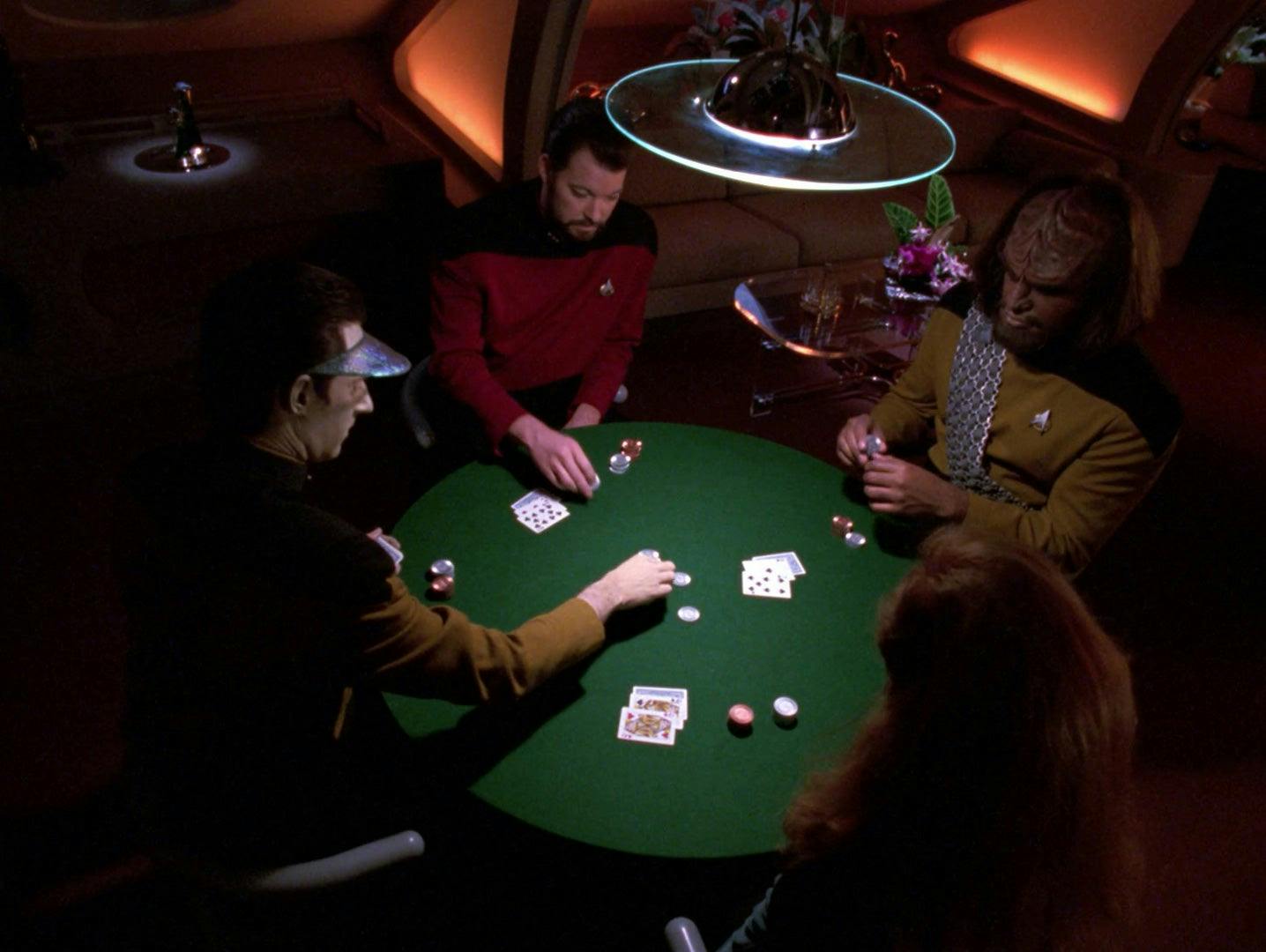
"Cause and Effect"
Perhaps one of the greatest science fiction episodes of all time, The Next Generation set the gold-standard for how to do time loop episodes.
When the Enterprise collides with another starship in the first scene, this episode poses one question right off the bat: What happens after you blow up the ship — and everyone on it — before the credits roll? The answer is mostly connected to whether or not we can even remember when we're stuck in a loop. Without actually spoiling this classic episode, let's just say thank the stars for Dr. Crusher and Data.
The brilliance of "Cause and Effect" cannot be overstated, but the 21st Century legacy of this episode is utterly appropriate. When Geordi reveals how the time loop works, Riker says, "You mean we could have come into this room, sat at this table and had this conversation a dozen times already?" This scene has become a popular meme format across various social media platforms, satirizing the time loop of some aspects of the internet experience.
" Parallels ," Star Trek: The Next Generation (Season 7, Episode 11)
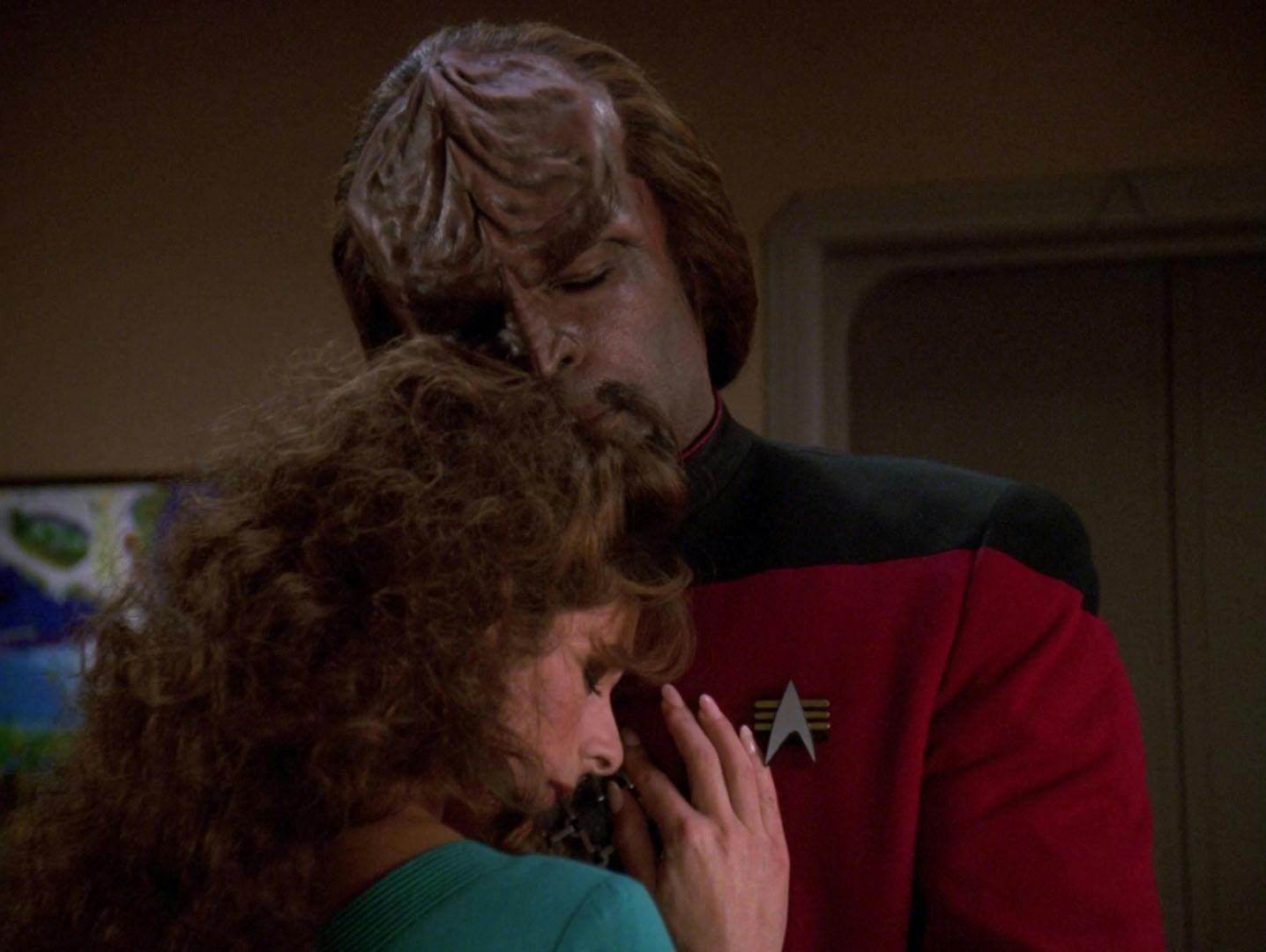
"Parallels"
Arguably, when Worf starts slipping between realities in "Parallels," the story is more focused on other dimensions, rather than a true time loop. But, each time he pops into a new reality, Worf does tend to reply to his own personal log, which is what began the episode.
Obviously, in each new timeline, Worf's personal log is different, and because he checks it so often in the episode, this gives "Parallels" the feeling of a time loop story, even though Worf is technically moving both forward in time, and also, side-to-side.
On top of all of this, "Parallels" feels time-loopy because so many ideas and plot points from previous seasons of The Next Generation are revisited here. From references to " The Best of Both Worlds ," to the return of Wesley Crusher, "Parallels" brings all the good things of TNG back around again for another look, from a different point of view.
" All Good Things... ," Star Trek: The Next Generation (Season 7, Episode 25)
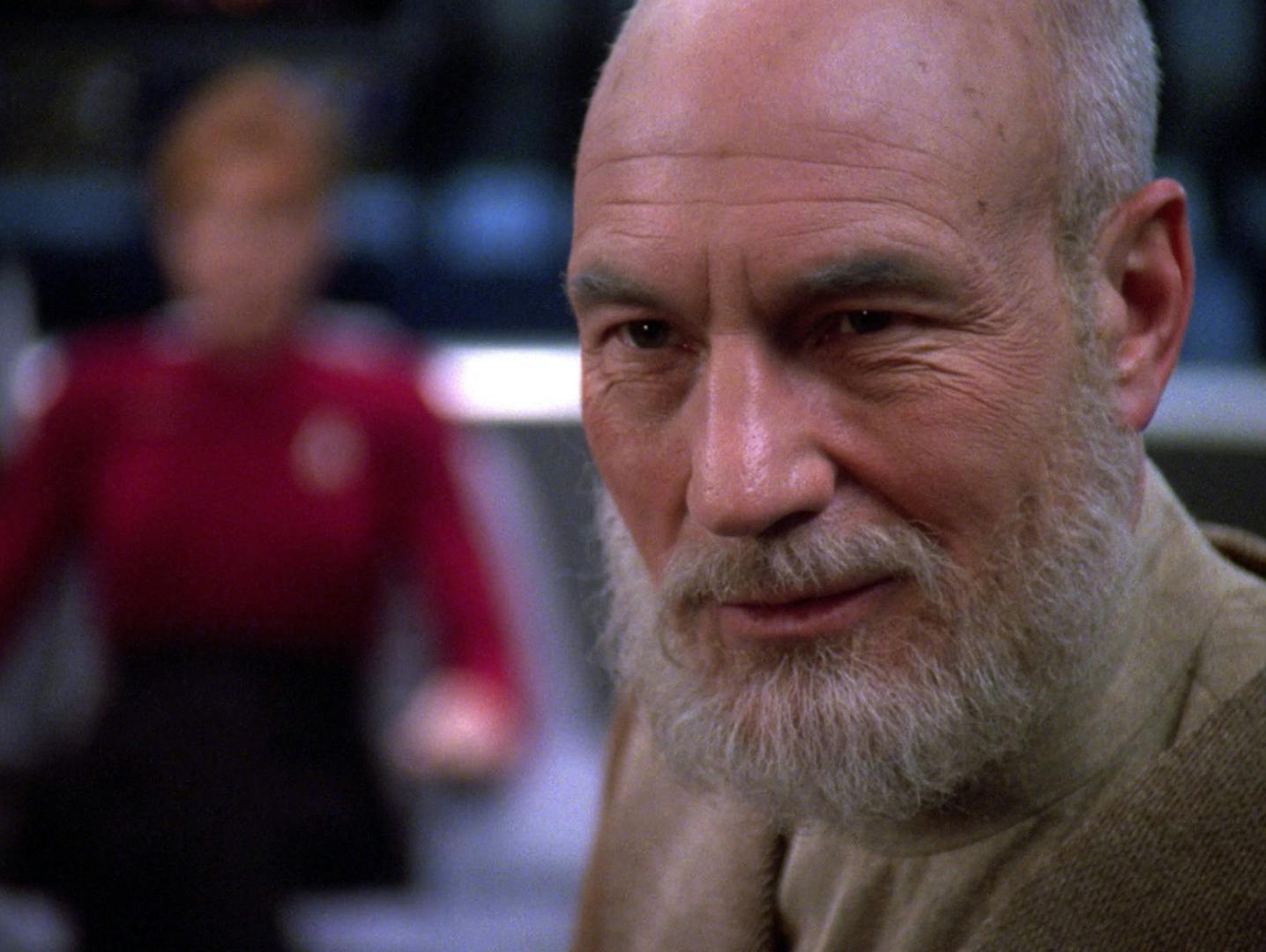
"All Good Things..."
Speaking of the best of The Next Generation , the immortal series finale is, from a certain point of view, one big time loop. As Jean-Luc Picard shifts between past, present, and future, the biggest mystery of "All Good Things…" is what caused the anomaly in the Devron system? Eventually, we learn that the ending and the beginning of this story are inextricably connected, a paradox that creates a kind of loop that must be broken.
Twenty-nine years later, in the Star Trek: Picard episode, " Imposters ," Captain Liam Shaw references this moment, and notes that Picard and Riker have a "real chicken and egg thing going on." It doesn’t get any more time-loopy than that!
" Visionary ," Star Trek: Deep Space Nine (Season 3, Episode 17)
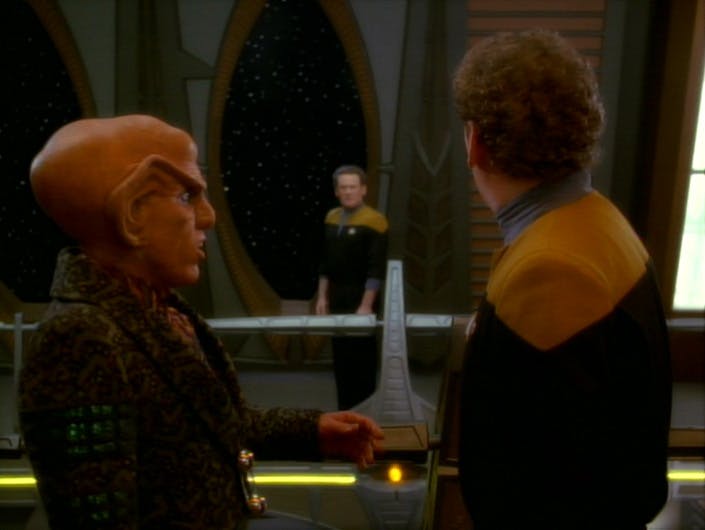
"Visionary"
When O'Brien starts seeing another version of himself appearing randomly throughout the station, Dr. Bashir briefly floats the idea that he's just having really boring hallucinations. But, as the episode goes on, it becomes clear that O'Brien is actually seeing brief moments in the future, and then, catching up to those moments in the present.
"Visionary" messes with what we expect from a time loop episode, because in all instances of future occurrences, there are literally two O'Briens present, and, when the past O'Brien catches up to the future moment, the duplication effect happens again, creating a kind of visual loop for the audience. The funny thing is, in several instances, the future doesn't play out exactly the way past O'Brien saw the first time, making this one of the wobblier time loops in all of Star Trek .
" Relativity ," Star Trek: Voyager (Season 5, Episode 24)
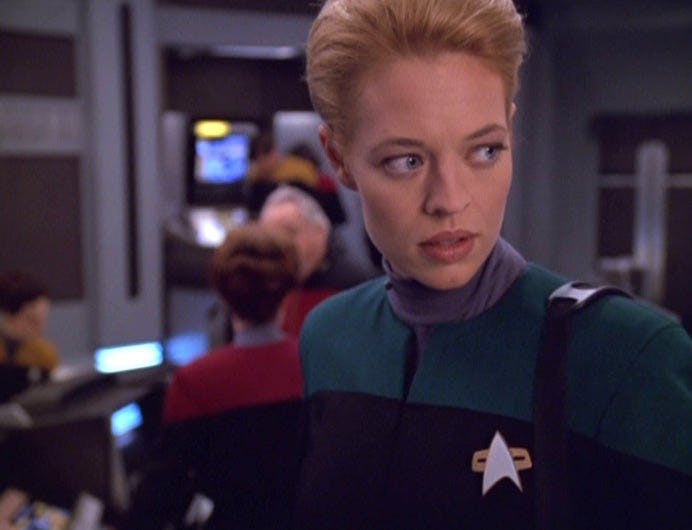
"Relativity"
In a move very similar to Discovery 's "Face the Strange," this unforgettable episode of Voyager briefly takes us back to a point before the series even begins, showing us Janeway's first moments on Voyager before the ship left the Utopia Planitia Shipyards on Mars. (In "Face the Strange," Burnham and Rayner see Discovery in a drydock on Earth well before the events of Season 1.)
But, Voyager 's jaunt into its own prehistory is just the beginning of a very specific type of time jumping episode. Here, Seven of Nine isn't exactly repeating a loop, but, making several attempts at different times, to prevent a bomb from destroying Voyager . As Tuvok aptly puts it when encountering one version of Seven from the future, "Like many time paradoxes, it's improbable, but not necessarily illogical." Because this episode features multiple versions of Seven, and leaps to various eras of Voyager , it pairs very nicely with Burnham and Rayner's similar jumps in "Face the Strange." Especially the moment where Seven meets herself.
" Shattered ," Star Trek: Voyager (Season 7, Episode 11)
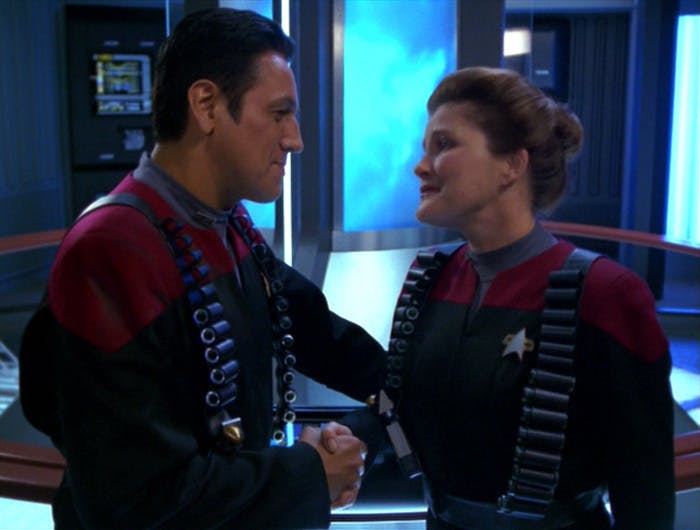
"Shattered"
Does Voyager have the best timey-wimey episodes in all of the Trek franchise? It's hard to say, but if there's another Trek episode that feels like an older sibling of Discovery 's "Face the Strange," it's almost certainly "Shattered," a fan-favorite episode from Voyager 's final season. Here, the captain and the first officer — Janeway and Chakotay — find themselves on a version of the ship that has been split into different time periods.
"Shattered" is one of Star Trek 's greatest retrospective episodes, touching on moments across all of Voyager 's story, and teaming past versions of characters with ones closer to the present. It's a touching story, and, structurally, it's wonderfully homaged in Discovery .
" Magic to Make the Sanest Man Go Mad ," Star Trek: Discovery (Season 1, Episode 7)
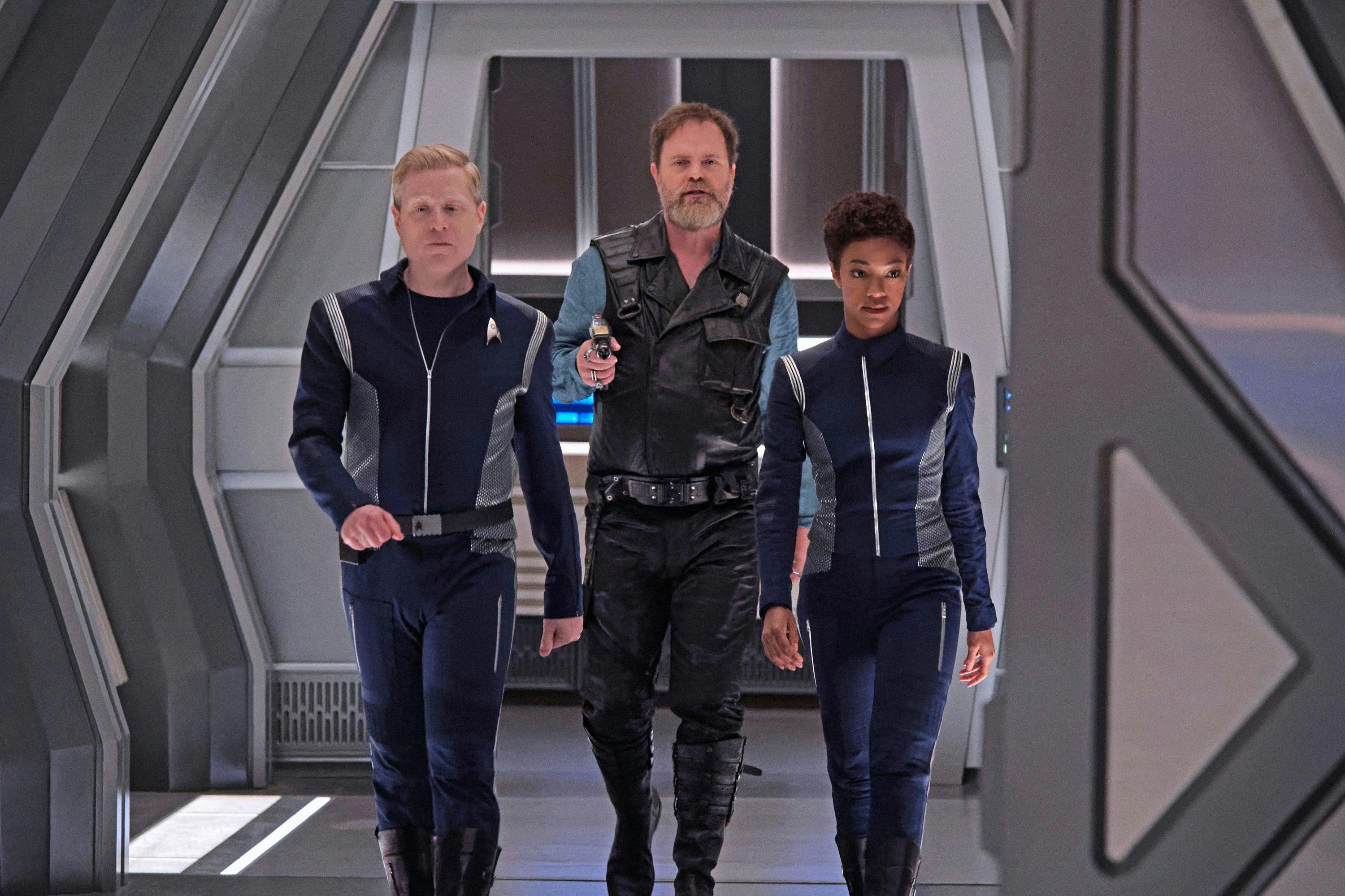
"Magic to Make the Sanest Man Go Mad"
One of Discovery 's stand-out moments from Season 1 fully set the stage for "Face the Strange" in Season 5. In "Magic to Make The Sanest Man Go Mad," Harry Mudd sets the ship on a true time loop, in which only Stamets can truly remember what is going on. Like in "Face the Strange," Stamets has a perception that exists outside of time, thanks to taking on the Tardigrade DNA in "Choose Your Pain."
This detail comes in handy in "Face the Strange," where Burnham and Stamets again have to re-team to get Discovery out of a time loop caused by nefarious enemies using time travel technology as a weapon. In Season 1, Burnham and Stamets barely knew each other, much like Burnham and Rayner's relationship in Season 5. But, if there's one thing a time loop or time-jumping episode can do, it’s make people who are just colleagues into best friends for life.
Get Updates By Email
Ryan Britt is the author of the nonfiction books Phasers on Stun! How the Making and Remaking of Star Trek Changed the World (2022), The Spice Must Flow: The Journey of Dune from Cult Novels to Visionary Sci-Fi Movies (2023), and the essay collection Luke Skywalker Can’t Read (2015). He is a longtime contributor to Star Trek.com and his writing regularly appears with Inverse, Den of Geek!, Esquire and elsewhere. He lives in Portland, Maine with his family.
Star Trek: Discovery Seasons 1-4 are streaming exclusively on Paramount+ in the U.S., the UK, Canada, Switzerland, South Korea, Latin America, Germany, France, Italy, Australia and Austria. Seasons 2 and 3 also are available on the Pluto TV “Star Trek” channel in Switzerland, Germany and Austria. The series streams on Super Drama in Japan, TVNZ in New Zealand, and SkyShowtime in Spain, Portugal, Poland, The Nordics, The Netherlands, and Central and Eastern Europe and also airs on Cosmote TV in Greece. The series is distributed by Paramount Global Content Distribution.
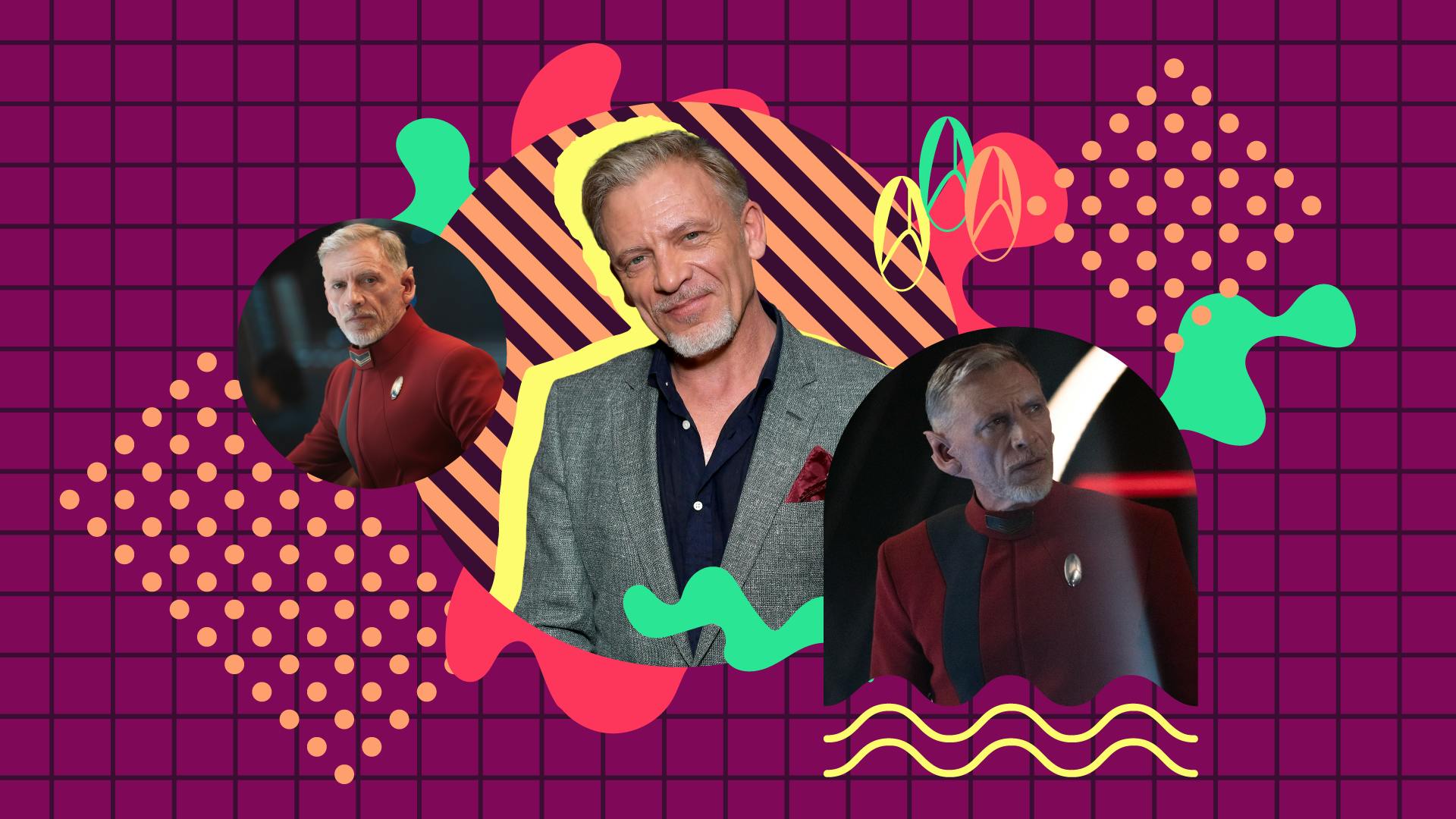
- Copy from this list
- Report this list
'Star Trek: The Next Generation' Episodes Ranked
From Best To Worst
- Movies or TV
- IMDb Rating
- In Theaters
- Release Year
1. Star Trek: The Next Generation (1987–1994) Episode: The Best of Both Worlds: Part 1 (1990)
TV-PG | 45 min | Action, Adventure, Drama
Responding to a distress call on one of the Federation's outer-most colonies, the Enterprise arrives...only to find a big hole in the ground where the town used to be, and discovers the Borg are behind the attack.
Director: Cliff Bole | Stars: Patrick Stewart , Jonathan Frakes , LeVar Burton , Michael Dorn
Votes: 5,790
Season 3 Episode 26
2. Star Trek: The Next Generation (1987–1994) Episode: The Inner Light (1992)
Picard awakes to find himself living in a small village where he is a well-known member of the community who is suffering from a delusion of being a starship captain.
Director: Peter Lauritson | Stars: Patrick Stewart , Jonathan Frakes , LeVar Burton , Michael Dorn
Votes: 8,250
Season 5 Episode 25
3. Star Trek: The Next Generation (1987–1994) Episode: The Measure of a Man (1989)
TV-PG | 46 min | Action, Adventure, Drama
When Data resigns his commission rather than be dismantled for examination by an inadequately skilled scientist, a formal hearing is convened to determine whether Data is considered property without rights or is a sentient being.
Director: Robert Scheerer | Stars: Patrick Stewart , Jonathan Frakes , LeVar Burton , Michael Dorn
Votes: 6,227
Season 2 Episode 9
4. Star Trek: The Next Generation (1987–1994) Episode: Yesterday's Enterprise (1990)
The Enterprise C enters the Enterprise D's time and space continuum, where they find Picard and crew in a constant state of war with the Klingons, and only Guinan knows it.
Director: David Carson | Stars: Patrick Stewart , Jonathan Frakes , LeVar Burton , Michael Dorn
Votes: 6,042
Season 3 Episode 15
5. Star Trek: The Next Generation (1987–1994) Episode: All Good Things... (1994)
TV-PG | 105 min | Action, Adventure, Drama
Capt. Picard finds himself shifting continually into the past, future and present and must use that to discover a threat to humanity's existence.
Director: Winrich Kolbe | Stars: Patrick Stewart , Jonathan Frakes , LeVar Burton , Michael Dorn
Votes: 9,253
Season 7 Episode 25 SERIES FINALE
6. Star Trek: The Next Generation (1987–1994) Episode: Tapestry (1993)
When Captain Picard's artificial heart fails, he is offered the rare opportunity to go back in time and set right the mistake that led to his demise.
Director: Les Landau | Stars: Patrick Stewart , Jonathan Frakes , LeVar Burton , Michael Dorn
Votes: 4,293
Season 6 Episode 15
7. Star Trek: The Next Generation (1987–1994) Episode: Q Who (1989)
Q tries to prove that Picard needs him as part of their crew by hurling the Enterprise 7,000 light years away where they encounter the Borg for the first time.
Director: Rob Bowman | Stars: Patrick Stewart , Jonathan Frakes , LeVar Burton , Michael Dorn
Votes: 5,065
Season 2 Episode 16
8. Star Trek: The Next Generation (1987–1994) Episode: The Best of Both Worlds: Part 2 (1990)
Having absorbed Captain Picard and his knowledge, the Borg head for Earth, leaving Riker and the Enterprise desperate for an unanticipated way to defeat them.
Votes: 5,420
Season 4 Episode 1
9. Star Trek: The Next Generation (1987–1994) Episode: I Borg (1992)
The Enterprise finds a lone Borg drone, separated from the collective, and brings him aboard. The drone begins to reassert his individuality, but his presence causes differing levels of fear and sympathy from various crew members.
Director: Robert Lederman | Stars: Patrick Stewart , Jonathan Frakes , LeVar Burton , Michael Dorn
Votes: 4,318
Season 5 Episode 23
10. Star Trek: The Next Generation (1987–1994) Episode: Parallels (1993)
On his return from a bat'leth competition in the Klingon Empire, Worf finds himself shifting realities where events and details are in a constant state of flux and only he is aware of the changes.
Director: Robert Wiemer | Stars: Patrick Stewart , Jonathan Frakes , LeVar Burton , Michael Dorn
Votes: 3,838
Season 7 Episode 11
11. Star Trek: The Next Generation (1987–1994) Episode: Conspiracy (1988)
After diverting to a secret meeting with an old friend and some of Starfleet's finest commanders, Picard finds the Horatio blown to bits just hours after the meeting and he returns the Enterprise to Earth looking for answers.
Director: Cliff Bole | Stars: Patrick Stewart , Jonathan Frakes , LeVar Burton , Denise Crosby
Votes: 4,296
Season 1 Episode 24
12. Star Trek: The Next Generation (1987–1994) Episode: The Offspring (1990)
After returning from a cybernetics conference to the Enterprise, Data creates his own "child," much to the chagrin of his captain, and without regards to the ramifications with Starfleet.
Director: Jonathan Frakes | Stars: Patrick Stewart , Jonathan Frakes , LeVar Burton , Michael Dorn
Votes: 4,573
Season 3 Episode 16
13. Star Trek: The Next Generation (1987–1994) Episode: Cause and Effect (1992)
The Enterprise gets caught in a time loop which always has one result: total destruction of the ship, itself.
Votes: 4,756
Season 5 Episode 18
14. Star Trek: The Next Generation (1987–1994) Episode: Lower Decks (1994)
A mission of the Enterprise is seen through the eyes of some junior officers who are up for promotions, as questions of duty and honor arise among some of them, such as a Bajoran whom Worf has designated to be promoted to operations.
Director: Gabrielle Beaumont | Stars: Patrick Stewart , Jonathan Frakes , LeVar Burton , Michael Dorn
Votes: 4,152
Season 7 Episode 15
15. Star Trek: The Next Generation (1987–1994) Episode: Relics (1992)
The Enterprise stumbles upon a Dyson sphere, with a ship crashed on the outer surface. An away team finds some systems still powered up and the chief engineer from the old Enterprise, Montgomery Scott, locked in the transporter cycle.
Director: Alexander Singer | Stars: Patrick Stewart , Jonathan Frakes , LeVar Burton , Michael Dorn
Votes: 3,931
Season 6 Episode 4
16. Star Trek: The Next Generation (1987–1994) Episode: Elementary, Dear Data (1988)
An attempt to provide Data with a challenging Sherlock Holmes holodeck program backfires when its Professor Moriarty character accidentally becomes self-aware.
Votes: 4,344
Season 2 Episode 3
17. Star Trek: The Next Generation (1987–1994) Episode: The Next Phase (1992)
A transporter malfunction, combined with a Romulan ship under stress and a damaged cloaking device, creates the illusion that Ensign Ro and Geordi are dead, but Geordi doesn't believe it to be so, and he acts accordingly.
Votes: 3,457
Season 5 Episode 24
18. Star Trek: The Next Generation (1987–1994) Episode: A Matter of Honor (1989)
Under an Officers Exchange Program, Riker serves aboard a Klingon ship, whose aging captain seeks an unwarranted bloody retaliation for suspected Enterprise treachery.
Votes: 3,973
Season 2 Episode 8
19. Star Trek: The Next Generation (1987–1994) Episode: Datalore (1988)
The Enterprise visits the planet where Data was created and discovers another android like him, but when he's assembled, he's not exactly like him.
Director: Rob Bowman | Stars: Patrick Stewart , Jonathan Frakes , LeVar Burton , Denise Crosby
Votes: 4,165
Season 1 Episode 12
20. Star Trek: The Next Generation (1987–1994) Episode: The Defector (1990)
When a Romulan officer defects to the Federation with a warning of a impending invasion, Capt. Picard struggles to decide if he is to be believed.
Votes: 4,155
Season 3 Episode 10
21. Star Trek: The Next Generation (1987–1994) Episode: Where No One Has Gone Before (1987)
Everyone accurately pegs a visiting propulsion scientist as a charlatan, but only Wesley Crusher recognizes his alien assistant as the real deal.
Votes: 4,569
Season 1 Episode 5
22. Star Trek: The Next Generation (1987–1994) Episode: Reunion (1990)
When the leader of the Klingon High Council dies, Picard finds himself in the middle of the struggle for the now-vacant position. Meanwhile, Worf reunites with a past love, only to find he now has a son.
Votes: 3,718
Season 4 Episode 7
23. Star Trek: The Next Generation (1987–1994) Episode: The Big Goodbye (1988)
Captain Picard and some of his crew are caught in a deadly trap in the holodeck as the result of a ship-wide scan from an alien race.
Director: Joseph L. Scanlan | Stars: Patrick Stewart , Jonathan Frakes , LeVar Burton , Denise Crosby
Votes: 3,986
Season 1 Episode 11
24. Star Trek: The Next Generation (1987–1994) Episode: Deja Q (1990)
Much to Picard's displeasure, Q reappears on the Enterprise, claiming to have been ejected from the Q Continuum, and therefore, lost his powers.
Votes: 4,277
Season 3 Episode 13
25. Star Trek: The Next Generation (1987–1994) Episode: Future Imperfect (1990)
Riker awakens sixteen years after an away mission where he contracted a disease which destroyed his memory back to the point of infection - or so he's told.
Votes: 3,633
Season 4 Episode 8
26. Star Trek: The Next Generation (1987–1994) Episode: Preemptive Strike (1994)
Following her return from Advanced Tactical Training, Bajoran Ro Laren is sent to infiltrate the Maquis and finds herself torn between her loyalty to Picard and Starfleet, and her sympathy with the Maquis fighting "the good fight".
Director: Patrick Stewart | Stars: Patrick Stewart , Jonathan Frakes , LeVar Burton , Michael Dorn
Votes: 2,845
Season 7 Episode 24
27. Star Trek: The Next Generation (1987–1994) Episode: 11001001 (1988)
The Enterprise docks at a starbase for repairs where it is commandeered by a race of technologically-linked aliens intent on using the vessel for their own purposes.
Director: Paul Lynch | Stars: Patrick Stewart , Jonathan Frakes , LeVar Burton , Denise Crosby
Votes: 4,085
Season 1 Episode 14
28. Star Trek: The Next Generation (1987–1994) Episode: Contagion (1989)
Encountering the superior technology of a very ancient race creates system malfunctions for a doomed Federation starship, for the Enterprise, and for an eavesdropping Romulan warbird.
Director: Joseph L. Scanlan | Stars: Patrick Stewart , Jonathan Frakes , LeVar Burton , Michael Dorn
Votes: 3,558
Season 2 Episode 11
29. Star Trek: The Next Generation (1987–1994) Episode: Heart of Glory (1988)
The Enterprise searches for answers as to why three Klingon warriors were the only survivors aboard a freighter just inside the Neutral Zone which was seemingly attacked by a Ferengi ship.
Votes: 3,579
Season 1 Episode 19
30. Star Trek: The Next Generation (1987–1994) Episode: Who Watches the Watchers (1989)
A proto-Vulcan culture worships Captain Picard and prepares to offer Counselor Troi as a sacrifice.
Votes: 4,371
Season 3 Episode 4
31. Star Trek: The Next Generation (1987–1994) Episode: Timescape (1993)
Aboard a shuttlecraft and en route back to the Enterprise, Picard, LaForge, Data, and Troi find themselves trapped in a time trap of some sort, where the Enterprise is being taken over by ... See full summary »
Director: Adam Nimoy | Stars: Patrick Stewart , Jonathan Frakes , LeVar Burton , Michael Dorn
Votes: 3,380
Season 6 Episode 25 150th Episode
32. Star Trek: The Next Generation (1987–1994) Episode: Conundrum (1992)
When an approaching alien ship wipes their memory, the crew struggles to put back together what happened.
Votes: 3,584
Season 5 Episode 14
33. Star Trek: The Next Generation (1987–1994) Episode: The Wounded (1991)
After being fired upon by a Cardassian vessel, Picard races against time to find out the facts behind the Cardassian commander's claim that the Federation attacked one of their outposts.
Director: Chip Chalmers | Stars: Patrick Stewart , Jonathan Frakes , LeVar Burton , Michael Dorn
Votes: 3,611
Season 4 Episode 12
34. Star Trek: The Next Generation (1987–1994) Episode: Ship in a Bottle (1993)
Lt. Barclay mistakenly awakes Moriarty in the forgotten holodeck program, who then makes his demands clear and unforgettable.
Votes: 3,652
Season 6 Episode 12
35. Star Trek: The Next Generation (1987–1994) Episode: Redemption II (1991)
As Worf fights in the Klingon Civil War, Captain Picard and his crew must stop the Romulans from helping their pawns achieve victory.
Votes: 3,462
Season 5 Episode 1 100th Episode
36. Star Trek: The Next Generation (1987–1994) Episode: Remember Me (1990)
Dr. Crusher's fear of losing loved ones becomes real when her worries create an alternate reality.
Votes: 3,825
Season 4 Episode 5
37. Star Trek: The Next Generation (1987–1994) Episode: Sins of the Father (1990)
A Klingon commander comes aboard the Enterprise in an officer exchange program initiated by Starfleet, much to the chagrin of the crew.
Votes: 3,752
Season 3 Episode 17
38. Star Trek: The Next Generation (1987–1994) Episode: The Enemy (1989)
La Forge gets left behind on a storm-plagued planet when the rest of his team encounters a Romulan warrior.
Votes: 3,581
Season 3 Episode 7
39. Star Trek: The Next Generation (1987–1994) Episode: The Hunted (1990)
Investigating a planet applying for membership into the Federation, the crew of the Enterprise finds a group of inhabitants who used to be soldiers, but now fight for their very existence.
Votes: 3,510
Season 3 Episode 11
40. Star Trek: The Next Generation (1987–1994) Episode: The Pegasus (1994)
Riker finds out his former commander from the starship Pegasus has orders that entail more than what is revealed to Picard, who thinks the Enterprise is en route to recover the lost ship. And Riker is ordered to secrecy.
Director: LeVar Burton | Stars: Patrick Stewart , Jonathan Frakes , LeVar Burton , Michael Dorn
Votes: 3,413
Season 7 Episode 12
41. Star Trek: The Next Generation (1987–1994) Episode: The Nth Degree (1991)
When assigned to investigate an unknown probe, Lt. Barclay is hit by an energy surge, through a shuttlecraft's computer, and he receives an inexplicable boost of confidence and a vast increase in his knowledge.
Director: Robert Legato | Stars: Patrick Stewart , Jonathan Frakes , LeVar Burton , Michael Dorn
Votes: 3,540
Season 4 Episode 19
42. Star Trek: The Next Generation (1987–1994) Episode: First Contact (1991)
Disguised as an alien prior to First Contact, Will's life becomes imperiled when incurred injuries reveal his foreign internal structure to a xenophobic alien population.
Votes: 3,724
Season 4 Episode 15
43. Star Trek: The Next Generation (1987–1994) Episode: Hollow Pursuits (1990)
A shy member of the "Enterprise" crew becomes addicted to the holodeck, where relationships are easier than in real life, when his knowledge is needed in engineering.
Votes: 3,594
Season 3 Episode 21
44. Star Trek: The Next Generation (1987–1994) Episode: Redemption (1991)
Both Captain Picard and Lt. Worf must decide where their priorities lie as the Klingon Empire descends into a bitter civil war.
Votes: 3,436
Season 4 Episode 26
45. Star Trek: The Next Generation (1987–1994) Episode: Darmok (1991)
Picard must learn to communicate with a race that speaks in metaphor under a difficult set of circumstances.
Votes: 5,071
Season 5 Episode 2
46. Star Trek: The Next Generation (1987–1994) Episode: Disaster (1991)
Collision with a quantum filament leaves Troi in charge of a damaged and endangered Enterprise with emergency bulkheads cutting off sections of the ship.
Votes: 3,595
Season 5 Episode 5
47. Star Trek: The Next Generation (1987–1994) Episode: Skin of Evil (1988)
Counselor Troi is held captive on a deserted planet by a slick, black, oily, sentient and immortal puddle of evil.
Votes: 4,058
Season 1 Episode 22
48. Star Trek: The Next Generation (1987–1994) Episode: Hide and Q (1987)
The Enterprise encounters Q again, and he tempts Riker by endowing him with the powers of the Q.
Votes: 4,006
Season 1 Episode 9
49. Star Trek: The Next Generation (1987–1994) Episode: Time's Arrow (1992)
Captain Picard and his archaeological curiosity are called upon by scientists from Earth when they find evidence to support beliefs that aliens had visited Earth in the late 1800s.
Votes: 3,668
Season 5 Episode 26
50. Star Trek: The Next Generation (1987–1994) Episode: Rascals (1992)
An emergency beam out renders four crewmen down to childhood shortly before renegade Ferengi take over the Enterprise and offload the adults.
Votes: 3,272
Season 6 Episode 7
51. Star Trek: The Next Generation (1987–1994) Episode: Schisms (1992)
Commander Riker's inability to fall asleep begins to show in other members of the crew in other forms, putting the Enterprise on the trail of a mystery.
Votes: 3,135
Season 6 Episode 5
52. Star Trek: The Next Generation (1987–1994) Episode: The Emissary (1989)
The Enterprise addresses the emergency of an old Klingon ship coming out of stasis and ready to fight the Federation. A half-Human/half Klingon emissary arrives to help, who once knew Worf intimately.
Votes: 3,658
Season 2 Episode 20
53. Star Trek: The Next Generation (1987–1994) Episode: The Neutral Zone (1988)
While assigned to investigate missing outposts in the Neutral Zone, the Enterprise revives three cryogenically frozen people found aboard a wayward derelict Earth vessel.
Director: James L. Conway | Stars: Patrick Stewart , Jonathan Frakes , LeVar Burton , Denise Crosby
Votes: 3,868
Season 1 Episode 25
54. Star Trek: The Next Generation (1987–1994) Episode: Unification II (1991)
On Romulus, Picard finds Spock, as well as an underground peace movement, a double agent, a bold ulterior motive against the Federation, and a familiar adversary.
Votes: 3,507
Season 5 Episode 8
55. Star Trek: The Next Generation (1987–1994) Episode: Family (1990)
After defeating the Borg, the crew of the Enterprise experiences shore leave in various ways. Captain Picard's return to his family's vineyard in France has some extraordinary repercussions.
Votes: 4,376
Season 4 Episode 2
56. Star Trek: The Next Generation (1987–1994) Episode: Where Silence Has Lease (1988)
The Enterprise encounters a mysterious void in space and when they move in closer to investigate further, it envelops them and they can't get out.
Votes: 3,691
Season 2 Episode 2
57. Star Trek: The Next Generation (1987–1994) Episode: Allegiance (1990)
Picard is kidnapped and held with three different aliens and meanwhile replaced with a replica as impostor captain.
Votes: 3,426
Season 3 Episode 18
58. Star Trek: The Next Generation (1987–1994) Episode: Encounter at Farpoint (1987)
TV-PG | 92 min | Action, Adventure, Drama
On the maiden mission of the U.S.S. Enterprise (NCC-1701-D), an omnipotent being known as Q challenges the crew to discover the secret of a mysterious base in an advanced and civilized fashion.
Director: Corey Allen | Stars: Patrick Stewart , Jonathan Frakes , LeVar Burton , Denise Crosby
Votes: 7,323
Season 1 Episode 1 SERIES PREMIERE
59. Star Trek: The Next Generation (1987–1994) Episode: Second Chances (1993)
Riker's exact duplicate is discovered on Nervala IV. His first order of business: resume his relationship with Deanna. Second order: obey orders from his superior - himself.
Votes: 2,927
Season 6 Episode 24
60. Star Trek: The Next Generation (1987–1994) Episode: The Naked Now (1987)
The crew of the Enterprise is infected with a virus that causes them to behave as though they were intoxicated.
Votes: 4,701
Season 1 Episode 2
61. Star Trek: The Next Generation (1987–1994) Episode: Time Squared (1989)
The Enterprise comes across its own shuttlecraft adrift in space - a duplicate - with an unconscious duplicate Capt. Picard inside.
Votes: 3,679
Season 2 Episode 13
62. Star Trek: The Next Generation (1987–1994) Episode: The Mind's Eye (1991)
Geordi is brainwashed by the Romulans to start a war between the Klingons and the Federation.
Director: David Livingston | Stars: Patrick Stewart , Jonathan Frakes , LeVar Burton , Michael Dorn
Votes: 3,158
Season 4 Episode 24
63. Star Trek: The Next Generation (1987–1994) Episode: The First Duty (1992)
Wesley Crusher's team has an accident at Starfleet Academy. Picard offers to help a Starfleet investigation as to what happened, and begins to suspect they are hiding something.
Director: Paul Lynch | Stars: Patrick Stewart , Jonathan Frakes , LeVar Burton , Michael Dorn
Votes: 3,358
Season 5 Episode 19
64. Star Trek: The Next Generation (1987–1994) Episode: Peak Performance (1989)
The crew of the Enterprise participates in war games.
Votes: 3,578
Season 2 Episode 21
65. Star Trek: The Next Generation (1987–1994) Episode: Ensign Ro (1991)
Captain Picard foils a plot against the Bajorans with his new Bajoran officer, Ensign Ro.
Season 5 Episode 3
66. Star Trek: The Next Generation (1987–1994) Episode: Starship Mine (1993)
When the Enterprise puts in to space dock for an energy sweep of the ship which is lethal to humans, Picard gets trapped on board with technicians who are not what they appear to be.
Votes: 3,254
Season 6 Episode 18
67. Star Trek: The Next Generation (1987–1994) Episode: A Fistful of Datas (1992)
While the crew is experiencing some much needed down time, Worf and his son go on an Old West excursion in the holodeck, where they meet several versions of Data serving as the bad guy after an experiment in Engineering goes wrong.
Votes: 3,209
Season 6 Episode 8
68. Star Trek: The Next Generation (1987–1994) Episode: Time's Arrow, Part II (1992)
Captain Picard and crew follow Data back to the late 1800s to get him back, only to find the suspected alien visitors killing people of that time.
Votes: 3,646
Season 6 Episode 1
69. Star Trek: The Next Generation (1987–1994) Episode: Unification I (1991)
Picard and Data follow Spock into Romulan space on a dangerous mission.
Votes: 3,538
Season 5 Episode 7
70. Star Trek: The Next Generation (1987–1994) Episode: Sarek (1990)
Legendary Federation ambassador Sarek visits the Enterprise to conclude peace talks with a race called the Legarans. His arrival is accompanied with a rash of unusual emotional outbursts among the crew.
Votes: 3,823
Season 3 Episode 23
71. Star Trek: The Next Generation (1987–1994) Episode: Clues (1991)
Effects of passing through a wormhole give the Enterprise crew a sense that they were unconscious for more than the thirty seconds they've been led to believe.
Votes: 3,831
Season 4 Episode 14
72. Star Trek: The Next Generation (1987–1994) Episode: Booby Trap (1989)
The Enterprise triggers an ancient yet effective trap left by an extinct race, with a perfectly preserved derelict ship serving as cheese for Picard.
Votes: 3,571
Season 3 Episode 6
73. Star Trek: The Next Generation (1987–1994) Episode: The Schizoid Man (1989)
A dying anti-social scientist unintentionally comes upon the perfect vessel in which to preserve his intellect and arrogant personality - Data.
Votes: 3,549
Season 2 Episode 6
74. Star Trek: The Next Generation (1987–1994) Episode: Symbiosis (1988)
The Enterprise encounters two neighboring cultures, one suffering from a plague, the other marketing a cure, and learns that nothing is as simple as it seems.
Director: Win Phelps | Stars: Patrick Stewart , Jonathan Frakes , LeVar Burton , Denise Crosby
Votes: 3,636
Season 1 Episode 21
75. Star Trek: The Next Generation (1987–1994) Episode: The Arsenal of Freedom (1988)
The Enterprise encounters a planet long dead, but technical equipment still functions for the purpose of selling off its arsenal, along with self sufficiency.
Director: Les Landau | Stars: Patrick Stewart , Jonathan Frakes , LeVar Burton , Denise Crosby
Votes: 3,640
Season 1 Episode 20
76. Star Trek: The Next Generation (1987–1994) Episode: Brothers (1990)
After an accident aboard the Enterprise leaves one of its children in grave danger, Data commandeers the Enterprise, driven to take the ship to an unknown origin, where an interesting figure awaits.
Votes: 3,609
Season 4 Episode 3
77. Star Trek: The Next Generation (1987–1994) Episode: The Bonding (1989)
A startling surprise awaits the crew of the Enterprise when a mission costs the life of a crew member, who left her son behind.
Votes: 3,407
Season 3 Episode 5
78. Star Trek: The Next Generation (1987–1994) Episode: Coming of Age (1988)
Picard finds himself facing a strenuous test of his loyalty to Starfleet, one which the other members of the crew are struggling to cope with, whilst Wesley faces an equally challenging entrance exam at Starfleet Academy.
Director: Michael Vejar | Stars: Patrick Stewart , Jonathan Frakes , LeVar Burton , Denise Crosby
Votes: 3,672
Season 1 Episode 18
79. Star Trek: The Next Generation (1987–1994) Episode: The Last Outpost (1987)
The Enterprise makes a confrontational first contact with the piratical Ferengi race as their two ships are ensnared by a presumed dead planet ready to judge them.
Director: Richard A. Colla | Stars: Patrick Stewart , Jonathan Frakes , LeVar Burton , Denise Crosby
Votes: 4,160
Season 1 Episode 4
80. Star Trek: The Next Generation (1987–1994) Episode: The Battle (1987)
Beware Ferengi bearing gifts. Capt. Picard receives the Stargazer, a ship considered lost that he once commanded.
Votes: 3,832
Season 1 Episode 8
81. Star Trek: The Next Generation (1987–1994) Episode: The Game (1991)
Wesley Crusher returns to the Enterprise on vacation from the Academy only to discover a mysterious alien game infiltrating and controlling the crew.
Director: Corey Allen | Stars: Patrick Stewart , Jonathan Frakes , LeVar Burton , Michael Dorn
Votes: 3,545
Season 5 Episode 6
82. Star Trek: The Next Generation (1987–1994) Episode: Attached (1993)
Captain Picard and Dr. Crusher discover things about one another when they are captured by an opposing alien race, due to the fact that the Enterprise has come to allow the planet's other ... See full summary »
Votes: 2,868
Season 7 Episode 8
83. Star Trek: The Next Generation (1987–1994) Episode: Frame of Mind (1993)
Riker begins to question reality when he finds himself in an alien insane asylum and faces the prospect his life on the Enterprise has been a delusion.
Director: James L. Conway | Stars: Patrick Stewart , Jonathan Frakes , LeVar Burton , Michael Dorn
Votes: 3,411
Season 6 Episode 21
84. Star Trek: The Next Generation (1987–1994) Episode: Chain of Command, Part I (1992)
Picard is replaced as captain of the Enterprise so he, Lt. Worf and Dr. Crusher go on a top-secret mission into Cardassian space. Meanwhile, his replacement, Captain Jellico, meets his new command with some resistance from the crew.
Season 6 Episode 10
85. Star Trek: The Next Generation (1987–1994) Episode: The Drumhead (1991)
A retired admiral boards the Enterprise in an effort to determine the actions aboard the ship surrounding an act of sabotage and possible treason.
Votes: 4,186
Season 4 Episode 21
86. Star Trek: The Next Generation (1987–1994) Episode: Data's Day (1991)
Data tries to comprehend the complex emotions between O'Brien and Keiko, who are about to be married.
Votes: 3,814
Season 4 Episode 11
87. Star Trek: The Next Generation (1987–1994) Episode: The Ensigns of Command (1989)
After 111 years of silence, an extremely litigious alien race asserts its agreed upon right to wipe out a Federation colony in its territory.
Votes: 3,701
Season 3 Episode 2
88. Star Trek: The Next Generation (1987–1994) Episode: Phantasms (1993)
Data deals with his new ability to experience nightmares as the Enterprise deals with the installation of a new warp core that won't work as expected.
Votes: 2,950
Season 7 Episode 6
89. Star Trek: The Next Generation (1987–1994) Episode: The Perfect Mate (1992)
Ferengi machinations unleash a diplomatic gift aboard the Enterprise - the rare, empathic perfect mate, ready to bond with any male around her.
Votes: 3,354
Season 5 Episode 21
90. Star Trek: The Next Generation (1987–1994) Episode: Legacy (1990)
The crew of the Enterprise enters into orbit around the home planet of their former crewmate, Tasha Yar, where they encounter her sister.
Votes: 3,208
Season 4 Episode 6
91. Star Trek: The Next Generation (1987–1994) Episode: Identity Crisis (1991)
Lt. Commander Geordi La Forge and an old friend fight to defeat a parasite that is trying to transform them into another species.
Votes: 3,051
Season 4 Episode 18
92. Star Trek: The Next Generation (1987–1994) Episode: Thine Own Self (1994)
Data is sent to follow a probe that has drifted off course and crashed on a primitive planet, only to crash on the planet himself, with no memory of any event prior to crashing on the planet's surface.
Votes: 3,046
Season 7 Episode 16
93. Star Trek: The Next Generation (1987–1994) Episode: Silicon Avatar (1991)
The Crystalline Entity returns, and the Enterprise takes aboard a scientist to help track it down, but her personal agenda does not match Capt. Picard's.
Votes: 3,131
Season 5 Episode 4
94. Star Trek: The Next Generation (1987–1994) Episode: A Matter of Perspective (1990)
The widow of respected scientist Dr. Nel Apgar accuses Riker of seducing her and killing her husband. Rather than turn Riker over for unfavorable trial, the Enterprise reconstructs the facts.
Votes: 3,327
Season 3 Episode 14
95. Star Trek: The Next Generation (1987–1994) Episode: Lonely Among Us (1987)
While distracted by two antithetical races applying for Federation membership, the Enterprise picks up a sentient entity that can alternately possess either man or machinery.
Votes: 3,787
Season 1 Episode 6
96. Star Trek: The Next Generation (1987–1994) Episode: Home Soil (1988)
On Velara III, Geordi and Data discover a microscopic life form responsible for the death of an engineer stationed on the base.
Votes: 3,509
Season 1 Episode 17
97. Star Trek: The Next Generation (1987–1994) Episode: A Matter of Time (1991)
Reaching Penthara IV after an asteroid wreaks havoc of catastrophic proportions, the Enterprise crew deals with trying to save the planet as well as deal with someone who claims to be a historian from the future.
Votes: 3,143
Season 5 Episode 9
98. Star Trek: The Next Generation (1987–1994) Episode: The Survivors (1989)
The Enterprise responds to a distress call from Rana IV, a Federation colony that is under attack from an unknown alien ship. When they arrive, they find the entire surface of the planet destroyed, save for a single house and two occupants.
Votes: 4,054
Season 3 Episode 3
99. Star Trek: The Next Generation (1987–1994) Episode: Final Mission (1990)
Before leaving for Starfleet Academy, Wesley Crusher accompanies Captain Picard on a dangerous mission.
Votes: 3,234
Season 4 Episode 9
100. Star Trek: The Next Generation (1987–1994) Episode: Too Short a Season (1988)
The Enterprise transports an elderly Starfleet Admiral to negotiate a hostage crisis. When the Admiral takes a de-aging drug, he endangers both his life and the mission.
Season 1 Episode 15
List Activity
Tell your friends, other lists by sam-mclatchie.

Recently Viewed

COMMENTS
I t's hard to think of any other 1960s TV series with as much staying-power as Star Trek. 47 years after its launch it's spun-off four live-action series, one animated series, dozens of ...
First, let's be clear: Ranking the best "Star Trek" episodes is a silly thing to do. To date, the longest-running American TV franchise has aired a gargantuan 890 episodes and counting ...
The Lists. Re-watching (and in some cases, watching) all 700+ episodes of Star Trek took an inordinate amount of time over the past few years, so there's no way I wasn't going to comment on everything, including both spoilers… and a certain amount of irreverence. If you're not ready for potential spoilers and snark, stick to the links ...
Votes: 8,245. 2. Star Trek (1966-1969) Episode: The City on the Edge of Forever (1967) TV-PG | 50 min | Action, Adventure, Sci-Fi. 9.2. Rate. When a temporarily insane Dr. McCoy accidentally changes history and destroys his time, Kirk and Spock follow him to prevent the disaster, but the price to do so is high.
The O.G. (Original Geekdom) of the Star Trek universe remains beloved by many Trek fans over and above any other series and -although I had seen most of these episodes countless times before- in watching them again for this ranking, I understood the love.. Underneath the thriftily constructed sets and bright uniforms designed to highlight this new thing called "color TV," underneath ...
With that in mind, here's a perhaps controversial list of the 21 greatest "Star Trek: The Original Series" episodes. 21. A Piece of the Action (Season 2, Episode 17) NBC. Although humorous moments ...
6. Discovery (2017 - 2023) Strangely, Discovery only gets better as other Star Trek series embrace the standard form. When it first launched under the direction of the often wonderful but always ...
14) A Private Little War. Image via CBS. Star Trek was offering a direct allegorical take on the Vietnam War in 1968 with a story that finds Captain Kirk in a moral dilemma. A planet of immense ...
47. Hard Time ( DS9) In what is a dark take on TNG 's The Inner Light, O'Brien is found guilty of espionage by an alien race that implants the memory of years of harsh imprisonment, which in ...
This is a ranked list of every episode of the original Star Trek television series that aired from 1966-1969. The rankings take into account the overall IMDb ratings as well as IMDb's Top 1000 voters' ratings. The original pilot is NOT included on this list.
(Photo by Paramount+/CBS) Star Trek TV Shows Ranked by Tomatometer. Updated: September 8, 2023. The Star Trek universe kicked off in 1966 with the original series, created by science fiction visionary Gene Roddenberry, and later exploded into a massive film and TV juggernaut.. While the original series, which starred William Shatner as Captain James T. Kirk and Leonard Nimoy as Mr. Spock, saw ...
In honor of Star Trek's 50th anniversary this month, The Hollywood Reporter counted down the top 100 episodes of Star Trek — ranking them across all six TV series with help from the stars and ...
Here's our ranking of every Star Trek series, from worst to best. 11. Star Trek: The Animated Series (1973-1975) CBS/Viacom. Yes, it's at the bottom, but I'd never say this is a bad series ...
Star Trek's long history means that alongside 13 Star Trek movies and countless comics, graphic novels, and books, the number of Star Trek series is already in the double digits. On top of that, there are almost 900 episodes across the Star Trek timeline , and that number is set to hit the thousands in the not-too-distant future as the best ...
Created by Gene Roddenberry, Star Trek: The Original Series premiered on NBC on September 8, 1966, and aired three seasons consisting of 79 episodes, many of them classics of sci-fi entertainment. ...
Without further ado, here's our list of every Star Trek series ranked from worst to best. 01 of 11. 11. Star Trek: Picard (2020-2023) Nicole Wilder/Paramount+. Star Trek: Picard was meant to be ...
10. Mirror, Mirror (season 2, episode 4) 9. A Taste of Armageddon (season 1, episode 24) 8. The Menagerie, Parts I and II (season 1, episodes 12 and 13) 7. The Doomsday Machine (season 2, episode ...
As fans are rejoicing about currently having 5 Star Trek series in production at the same time, they might consider returning to the impetus of Gene Roddenberry's vision of the future in Star Trek: The Original Series. So much of the material that makes up the foundation of Star Trek lore, foundation, and canon comes from the '60s sci-fi classic, with plot points and storylines strongly felt ...
Here's our ranking of the 10 best episodes in Star Trek television history, but it is by no means definitive. Updated by Kayleena Pierce-Bohen on May 27th, 2020: It's been an exciting time for Star Trek fans as CBS All Access continues to push ahead at Warp 10, promising more new Star Trek content on its streaming service than ever before ...
Worst: Code of Honor. Paramount. Even the worst episodes of "Star Trek" can have at least some redeeming value, whether it's a kernel of a good idea or a single strong performance. But the ...
The character interactions are a highlight in the series, as is the writing, especially in the latter half of the show's run when the multi-arc episodes become tight and compelling. 2. Star Trek ...
Star Trek loves a good time loop and here are 5 of the best. Time loop stories are a classic science fiction premise Star Trek excels at. Star Trek: Enterprise and Voyager had excellent time loop episodes, but The Next Generation's "Cause and Effect" is the best. Star Trek: Discovery had two time loop episodes, "Magic to Make the Sanest Man Go ...
1. "All Good Things…" (Season 7) "All Good Things…" is the best Star Trek series finale ever and The Next Generation 's crowning achievement. Written by Brannon Braga and Ronald D. Moore, "All Good Things" proved to be a better cinematic-worthy adventure than The Next Generation crew's first movie, Star Trek: Generations.
With 178 episodes during its run, there are dozens of all-time greats, many of which just narrowly miss making this list. Episodes like "Remember Me," "The Wounded," and "Sins Of The Father" are ...
Star Trek (1966-1969) TV-PG | 50 min | Action, Adventure, Sci-Fi. A powerful being claiming to be the Greek god Apollo appears and demands that the crew of the Enterprise disembark onto his planet to worship him. Director: Marc Daniels | Stars: William Shatner, Leonard Nimoy, DeForest Kelley, Michael Forest.
StarTrek.com. In the Star Trek: Discovery Season 5 episode, " Face the Strange ," Captain Burnham and Commander Rayner find themselves both stuck in a loop, but also, jumping all around the timeline of the titular starship. From the point before the U.S.S. Discovery was launched, to pivotal moments in Season 4, Season 3, Season 2 and even very ...
When assigned to investigate an unknown probe, Lt. Barclay is hit by an energy surge, through a shuttlecraft's computer, and he receives an inexplicable boost of confidence and a vast increase in his knowledge. Director: Robert Legato | Stars: Patrick Stewart, Jonathan Frakes, LeVar Burton, Michael Dorn. Votes: 3,529.